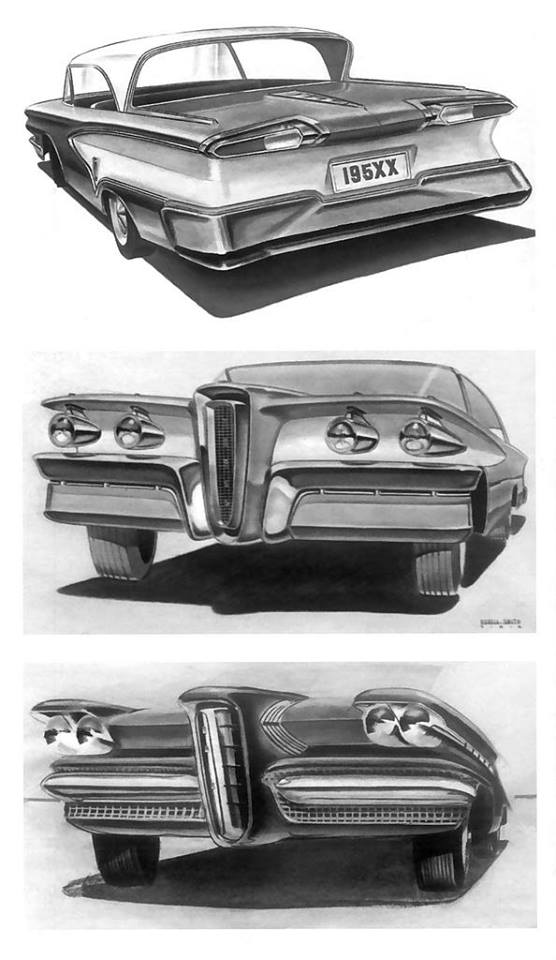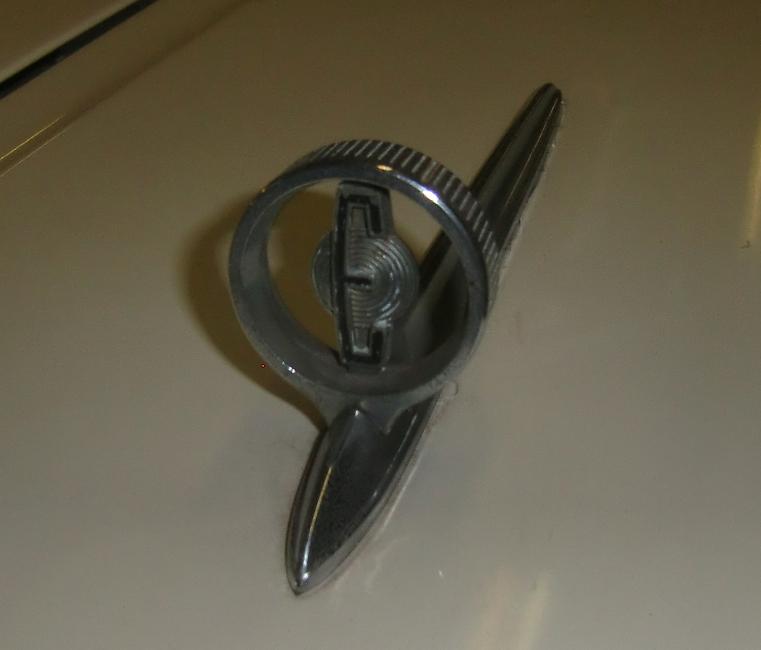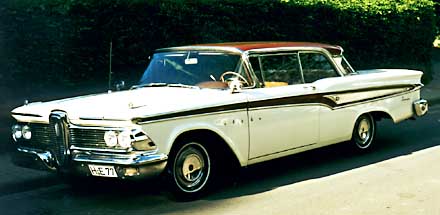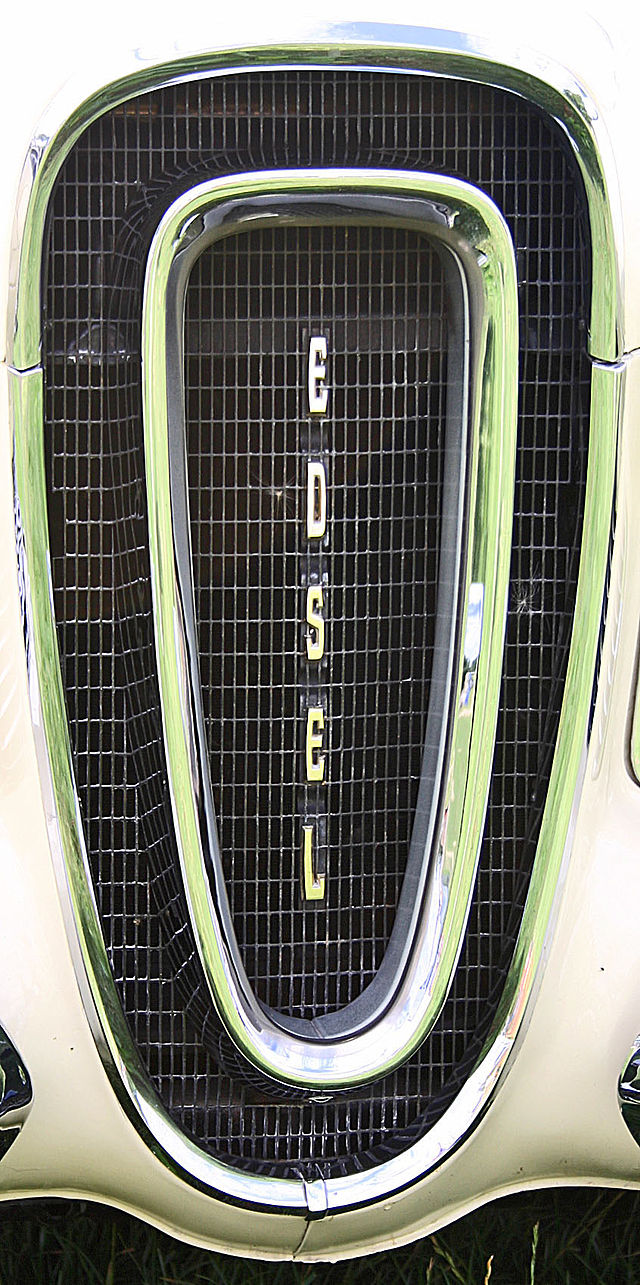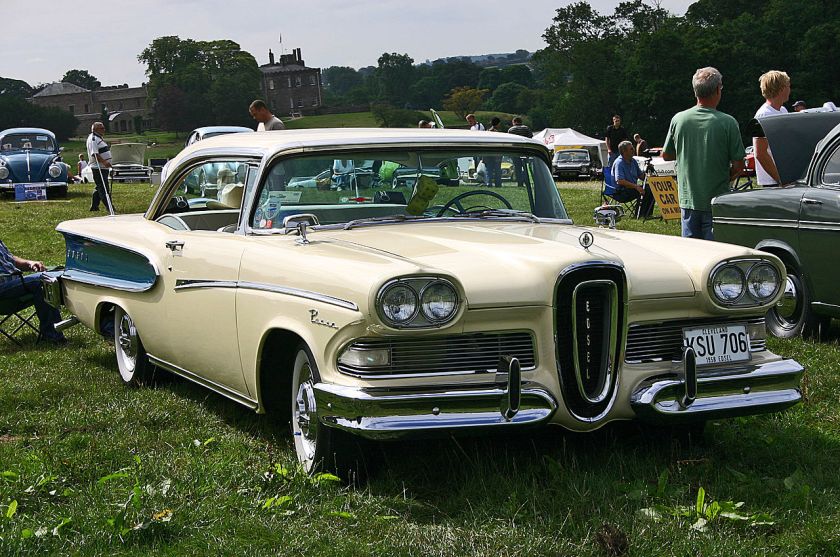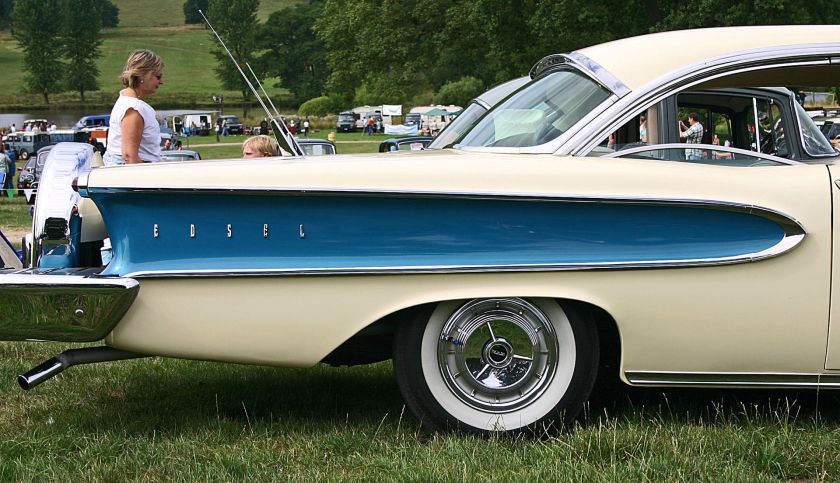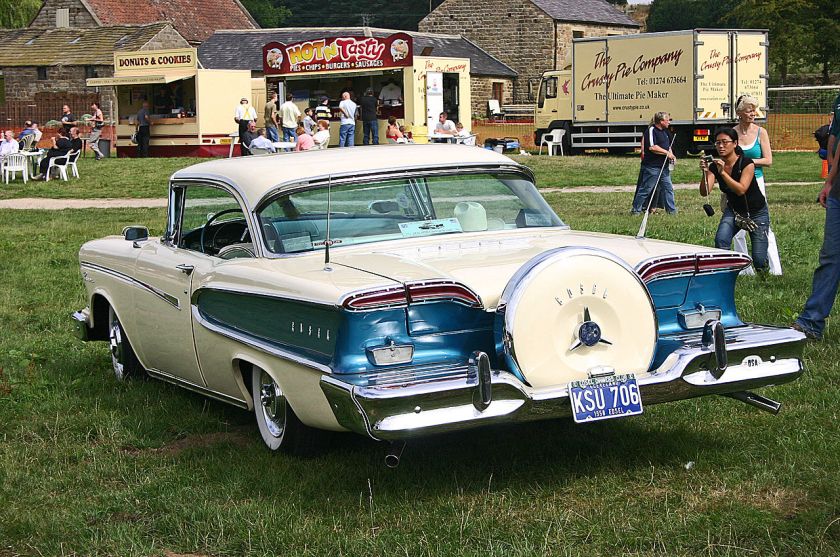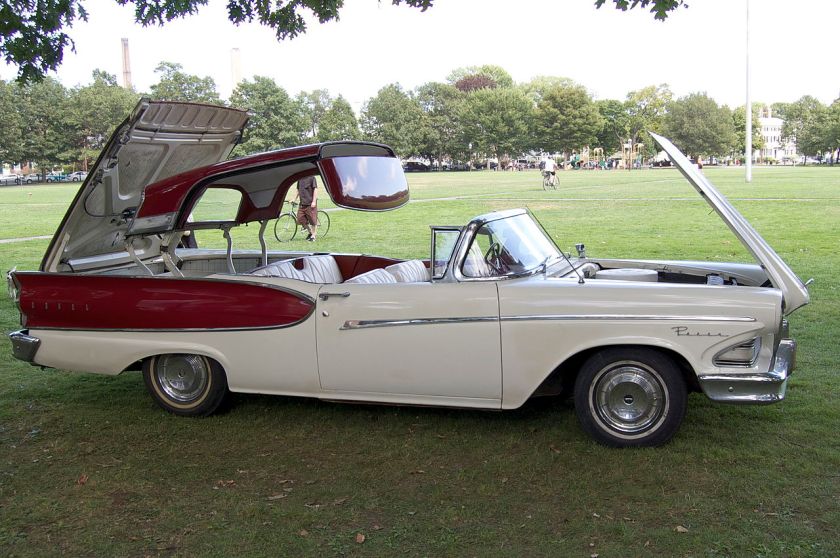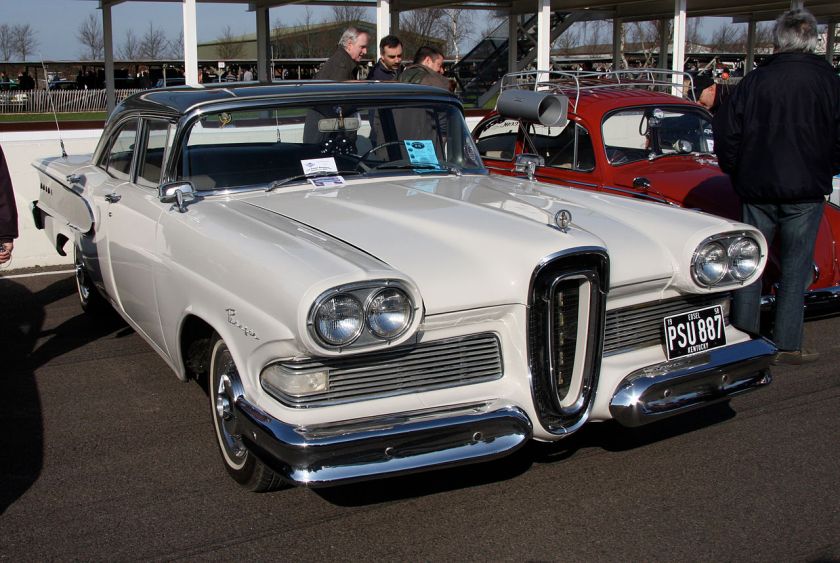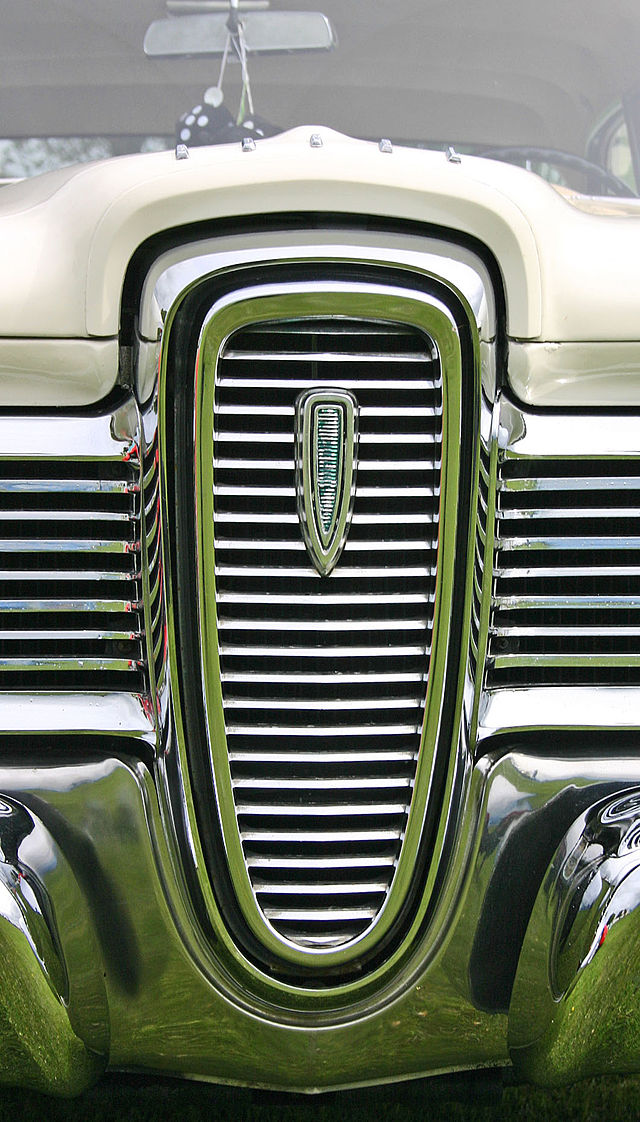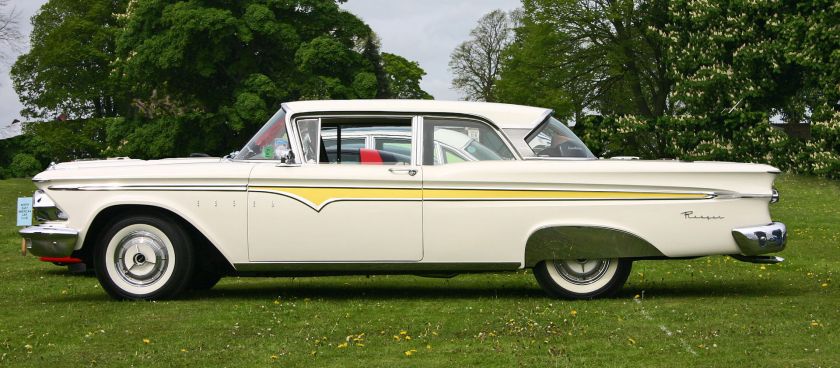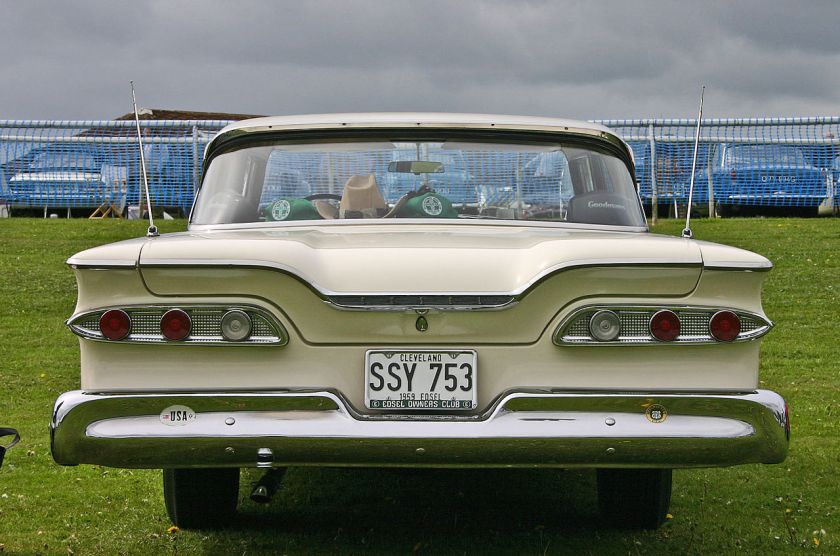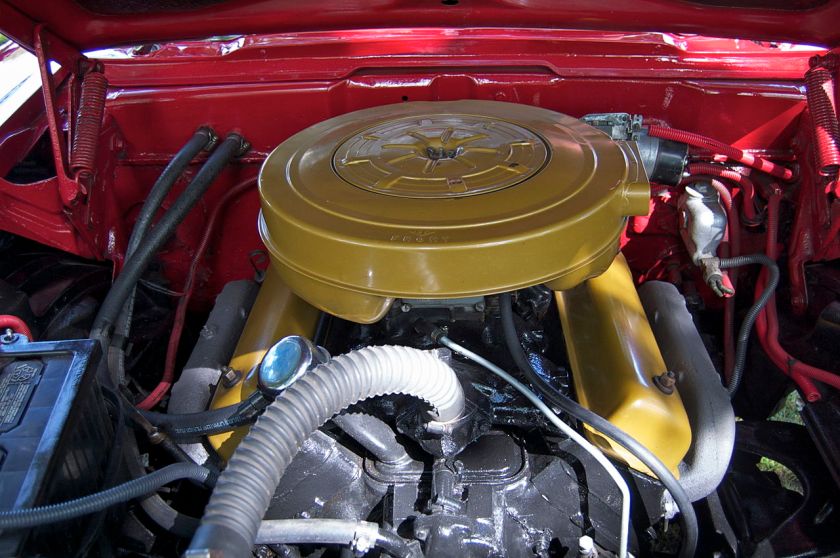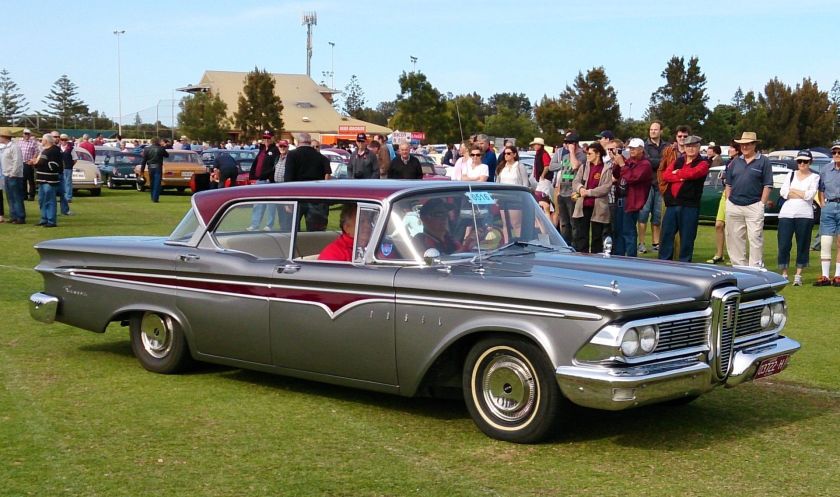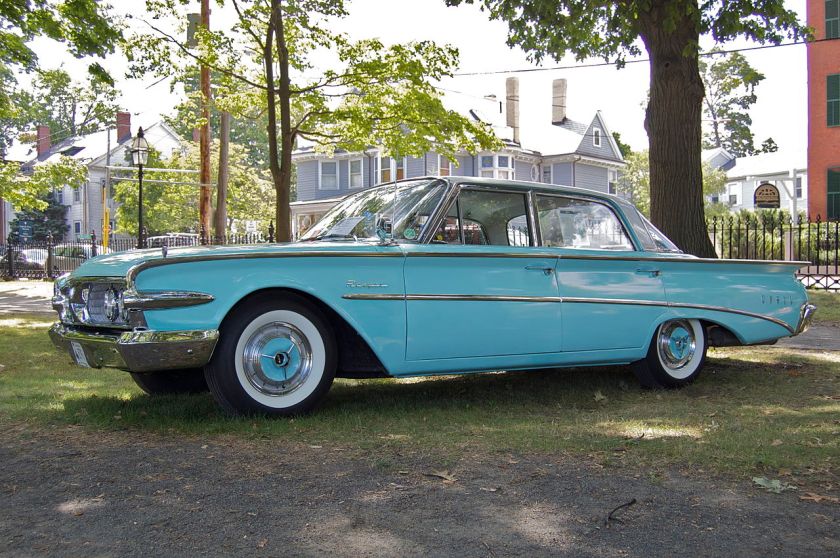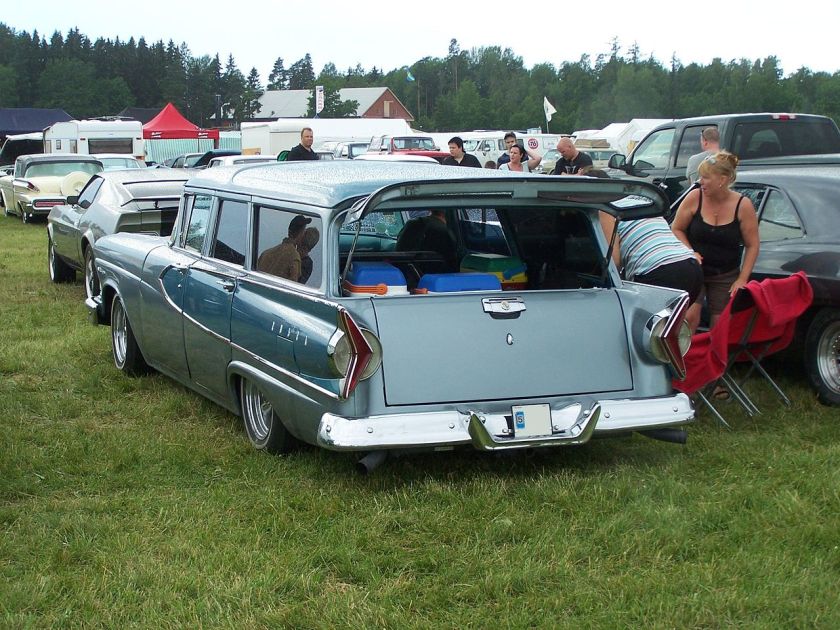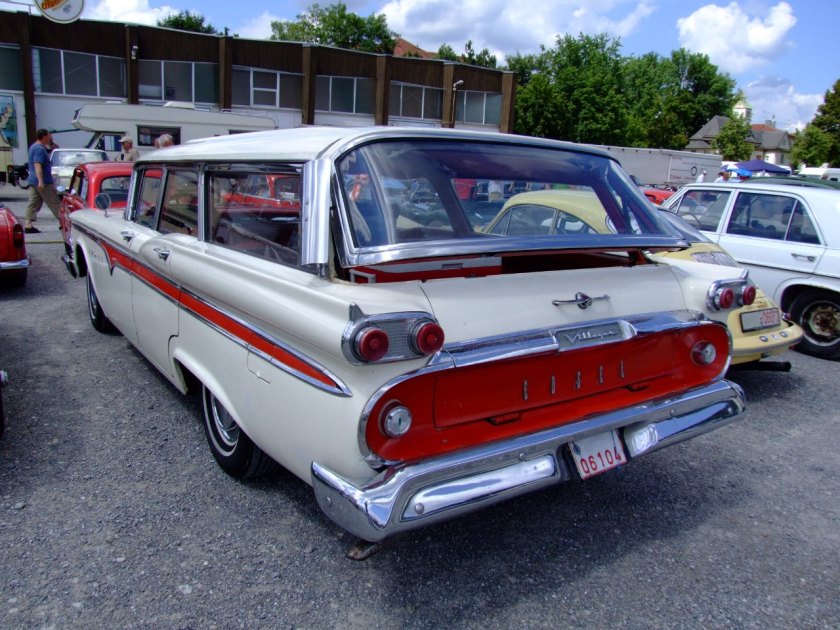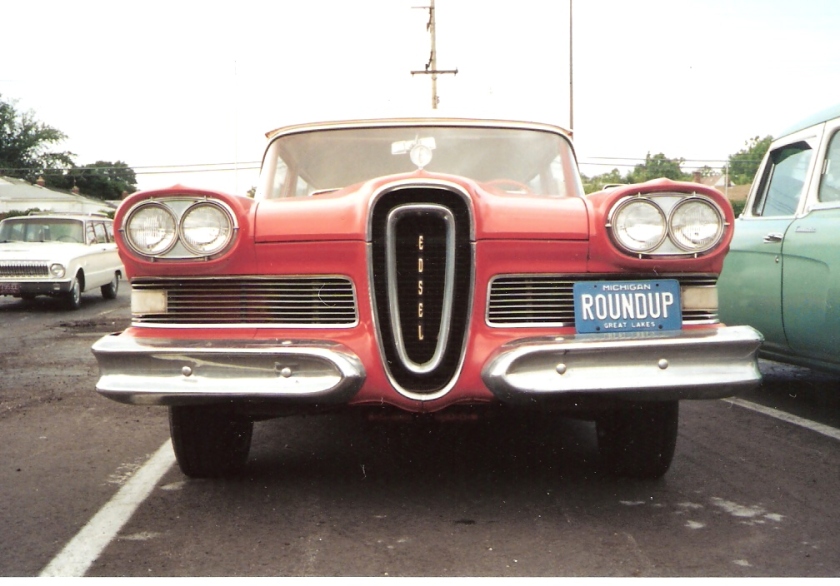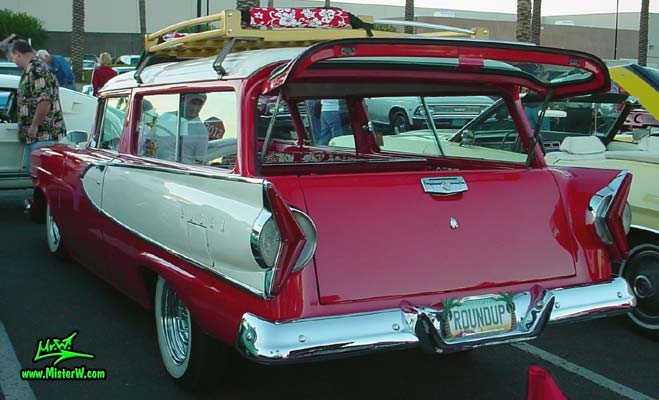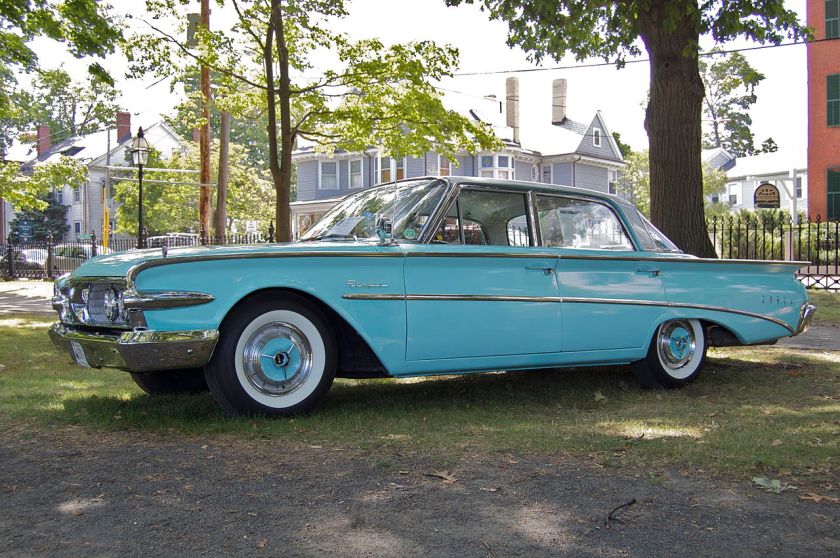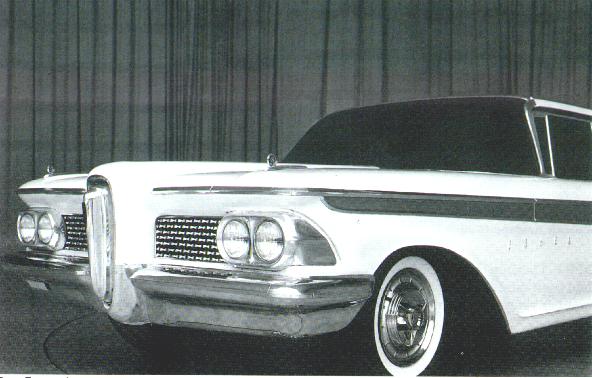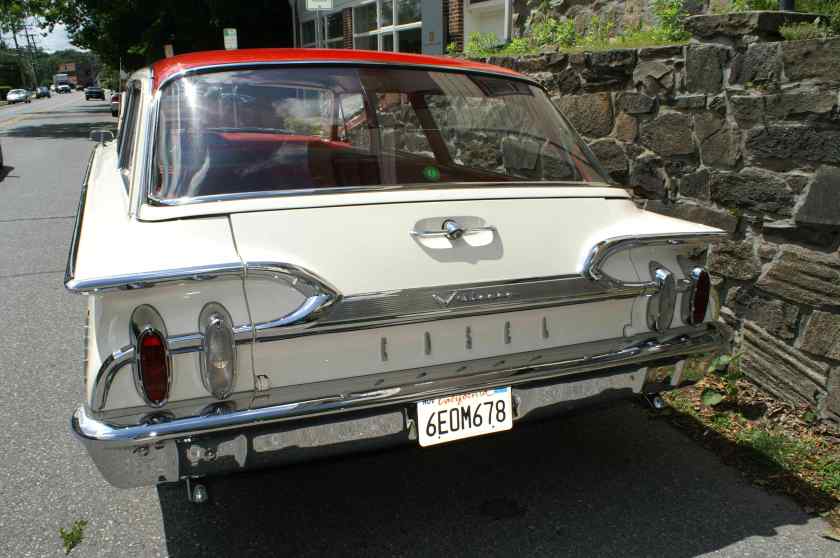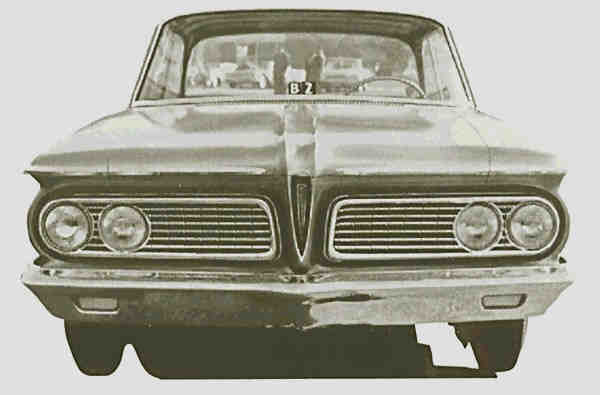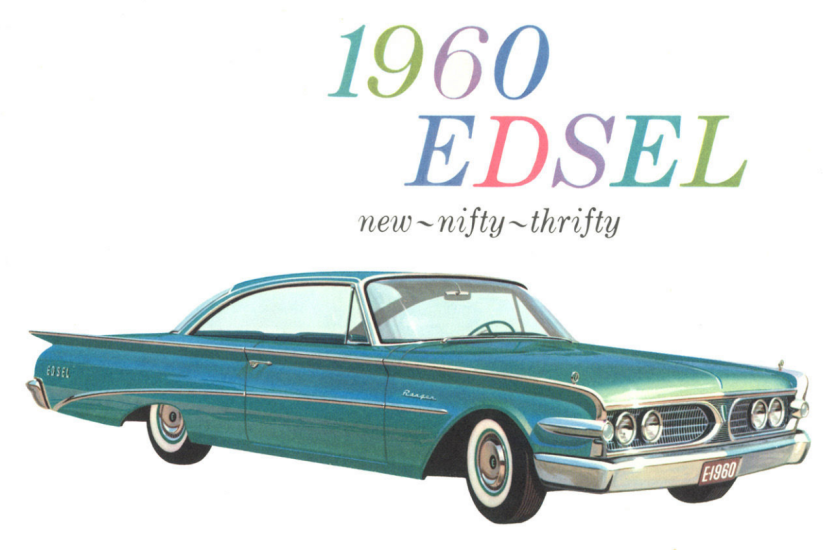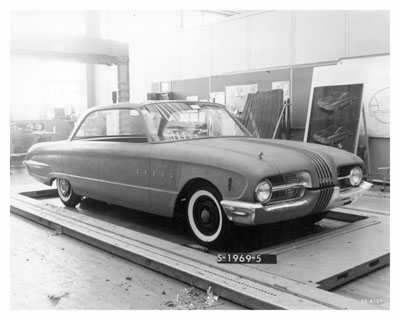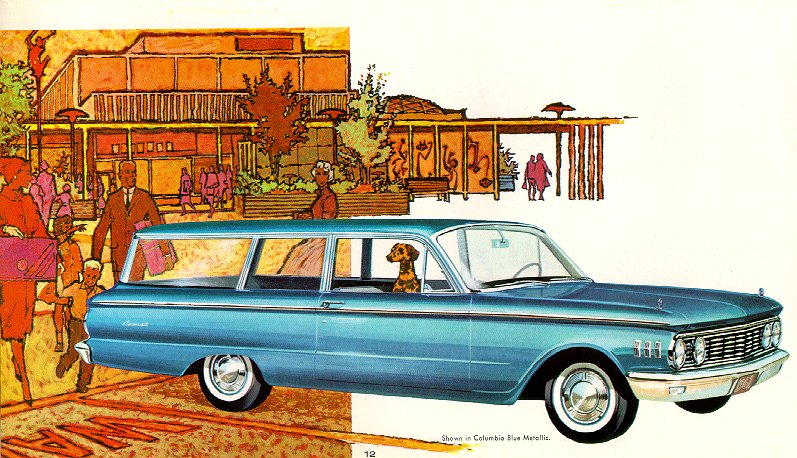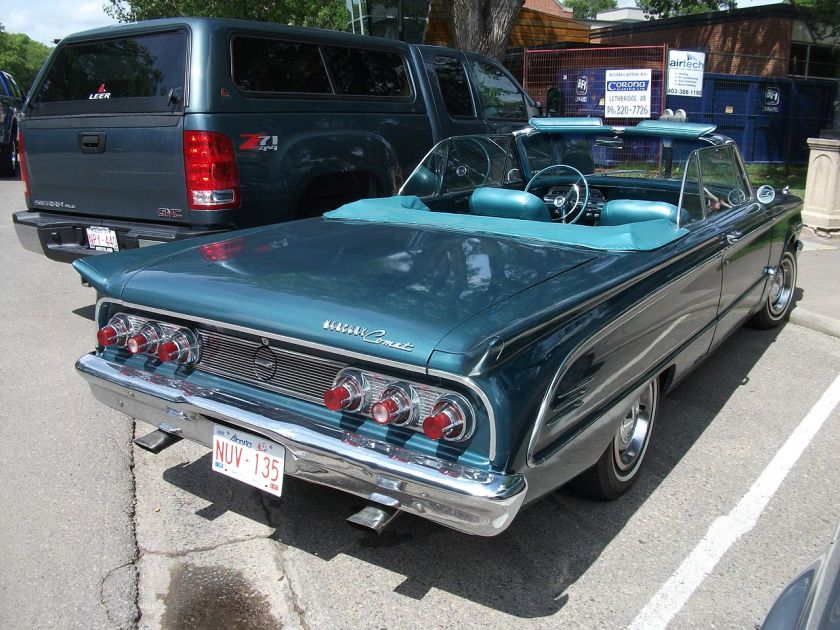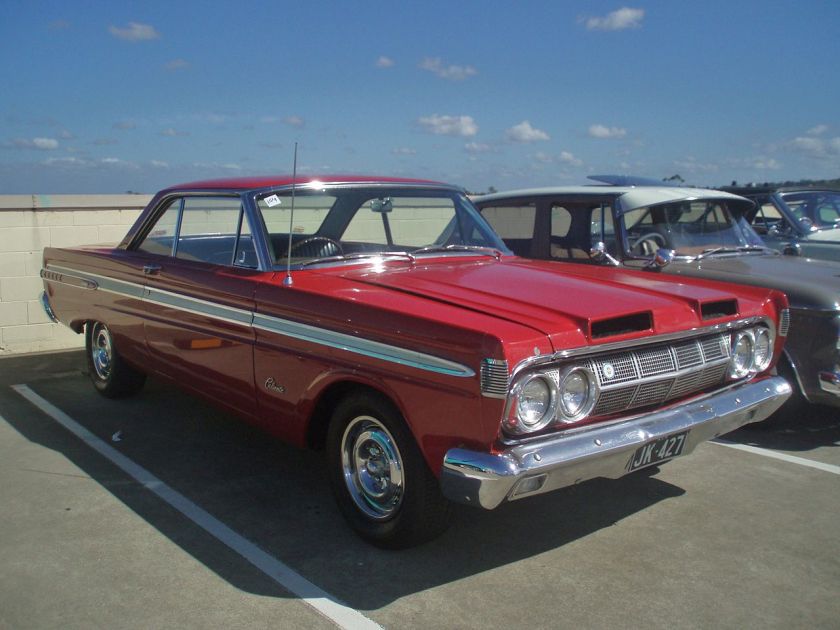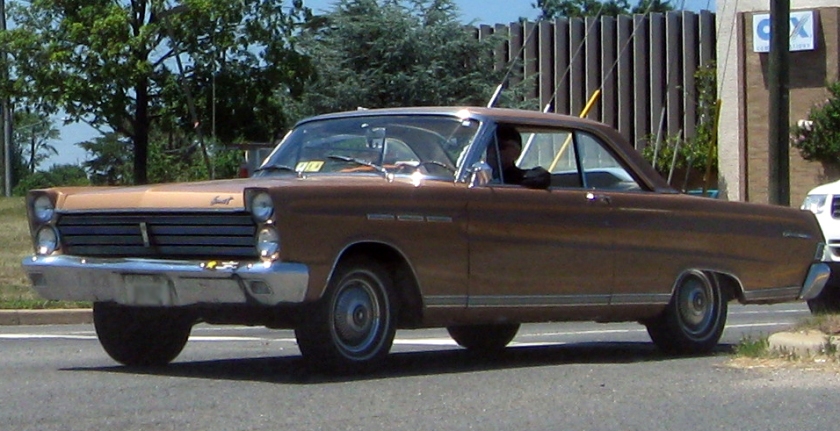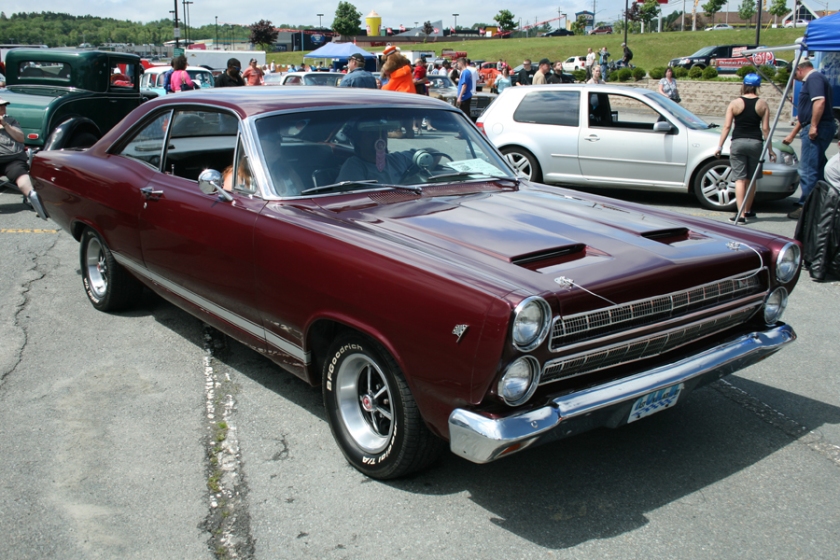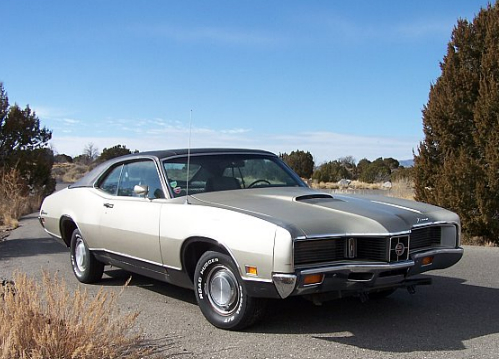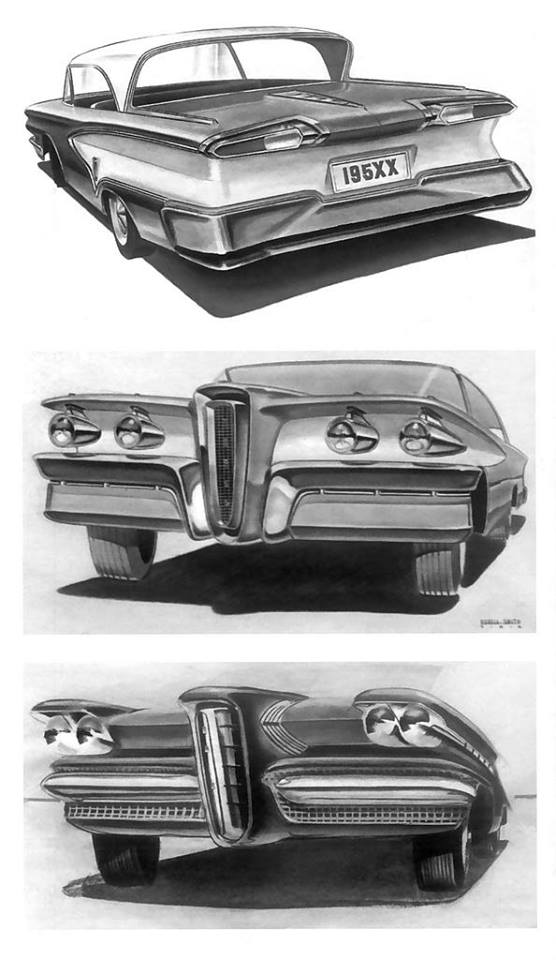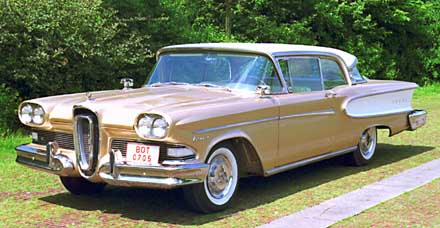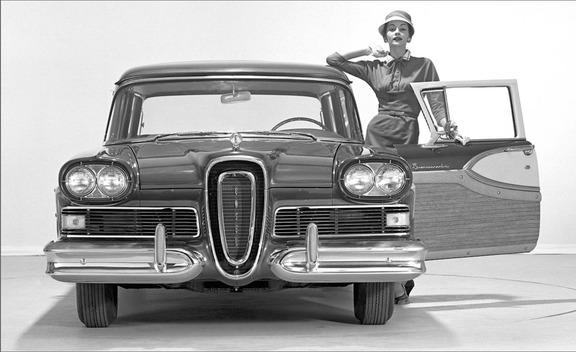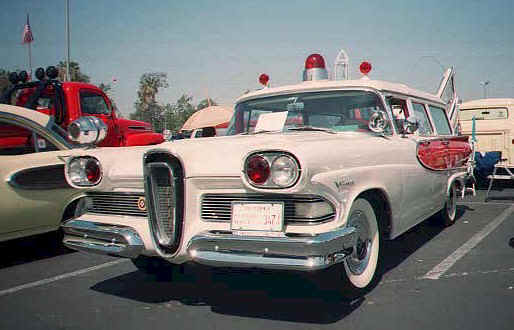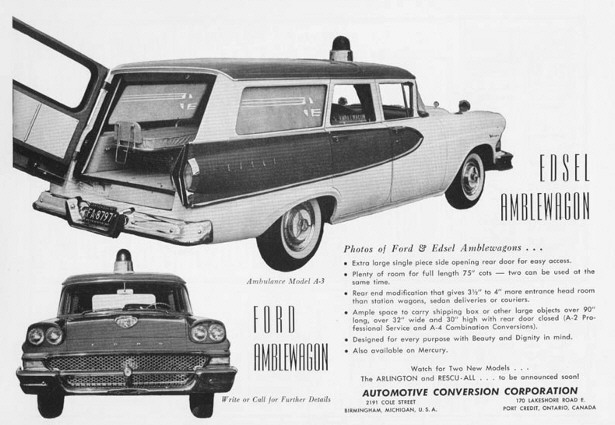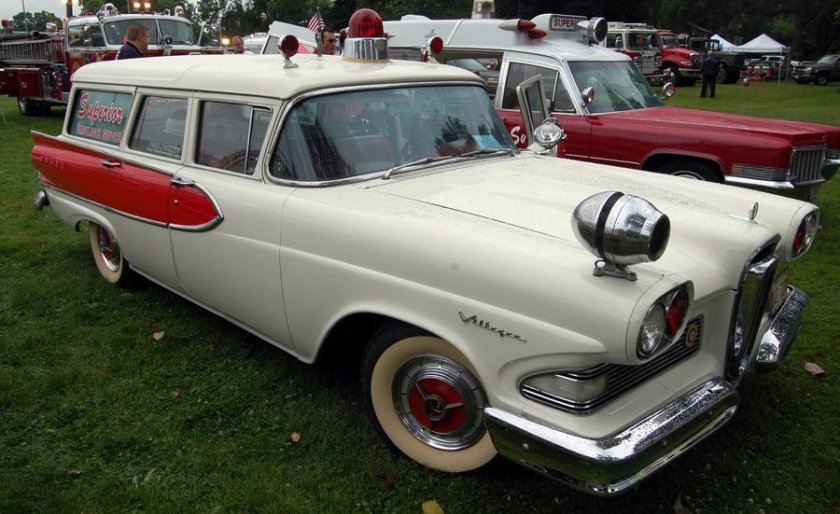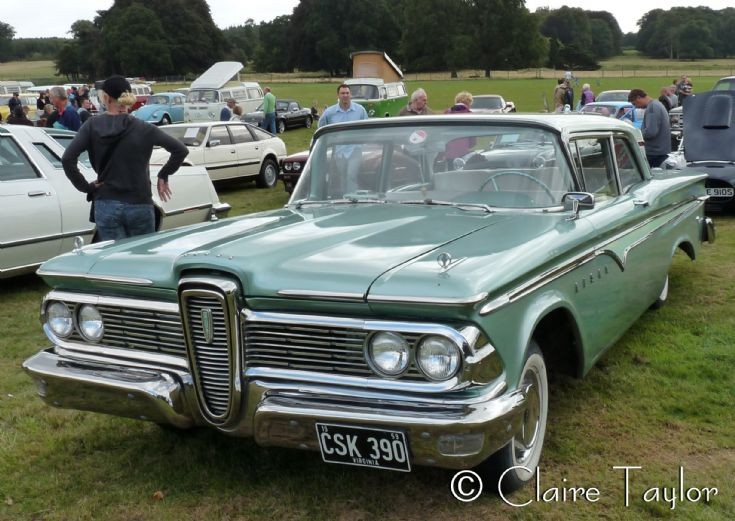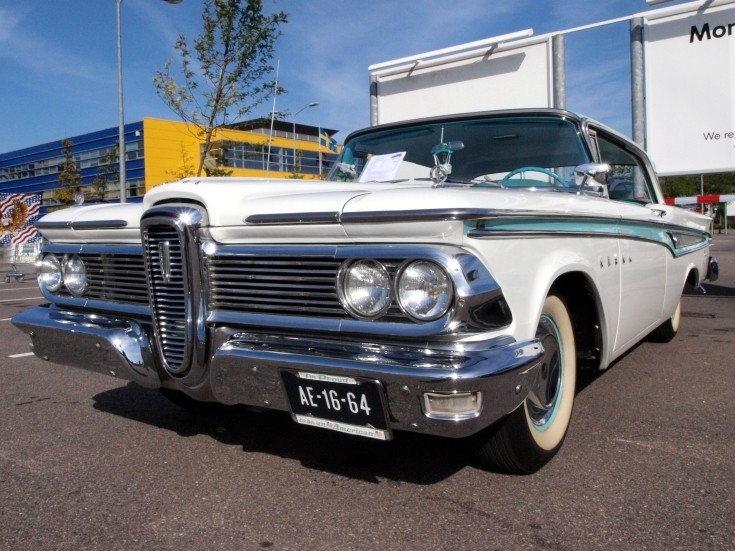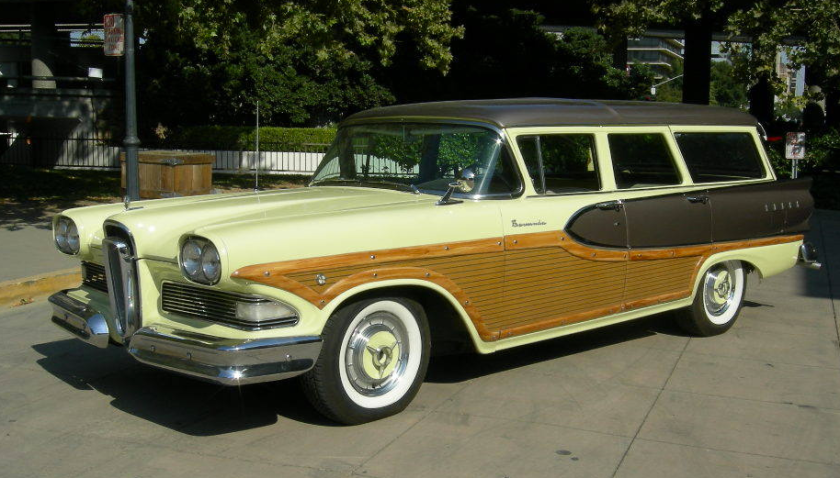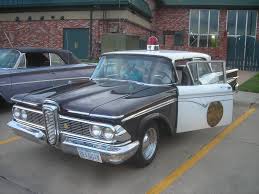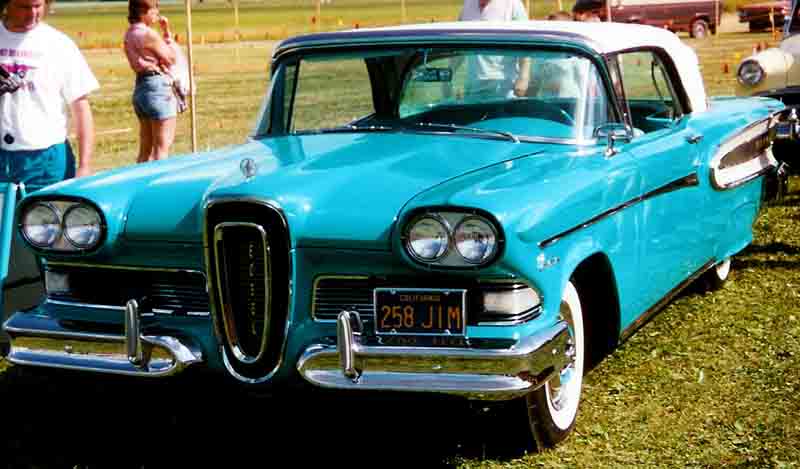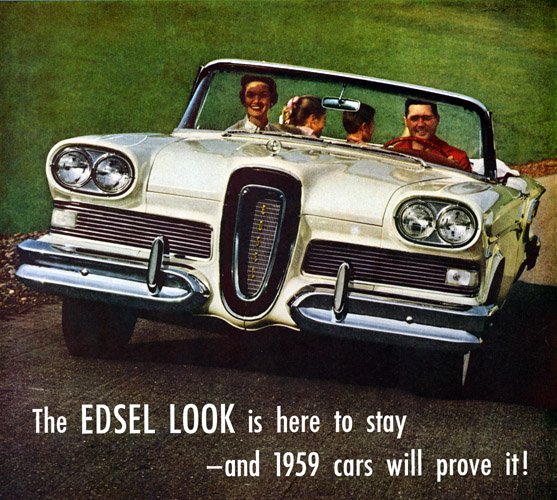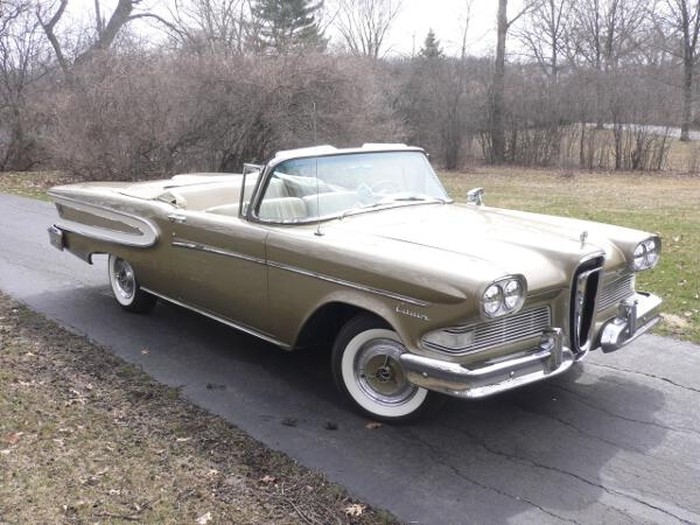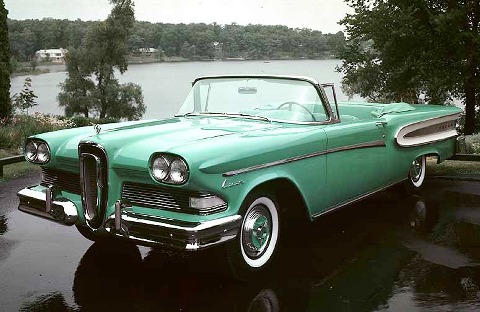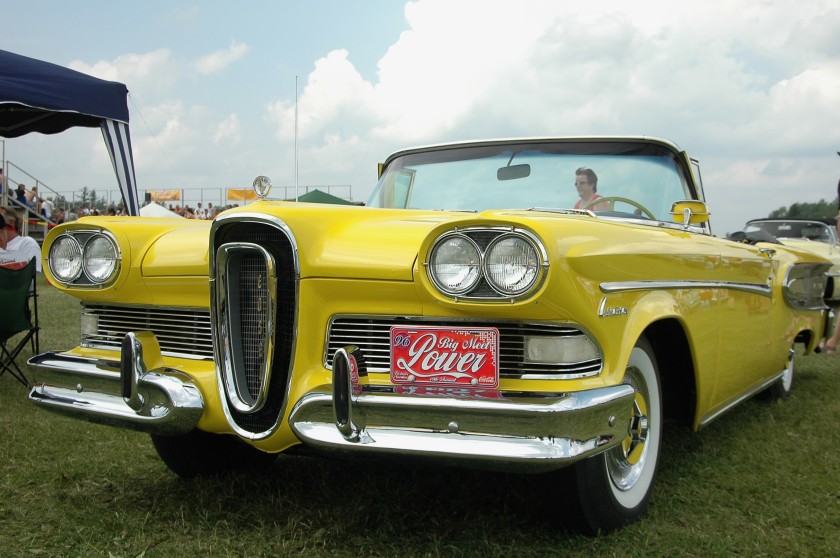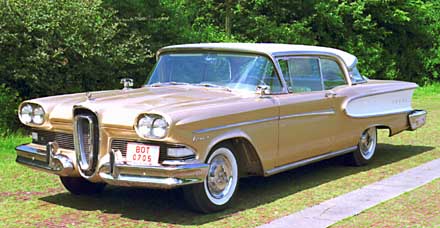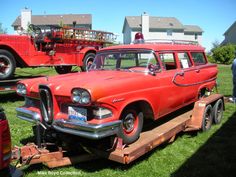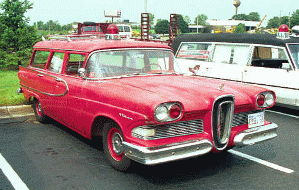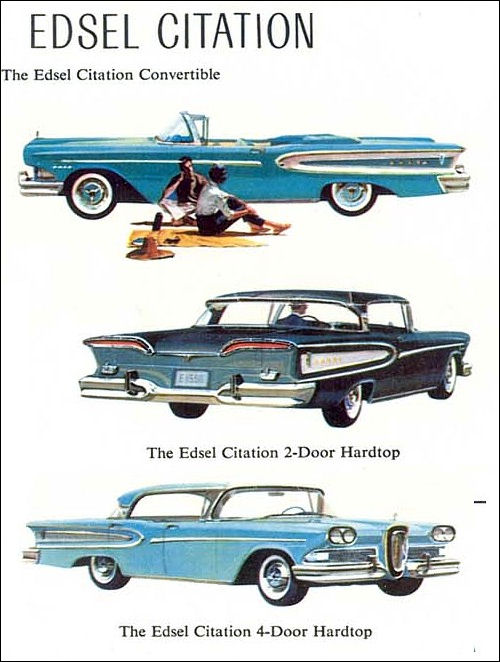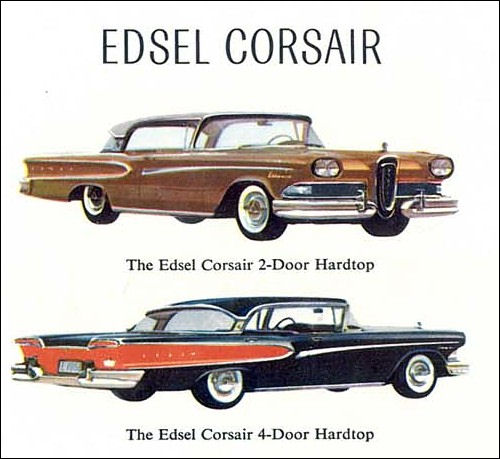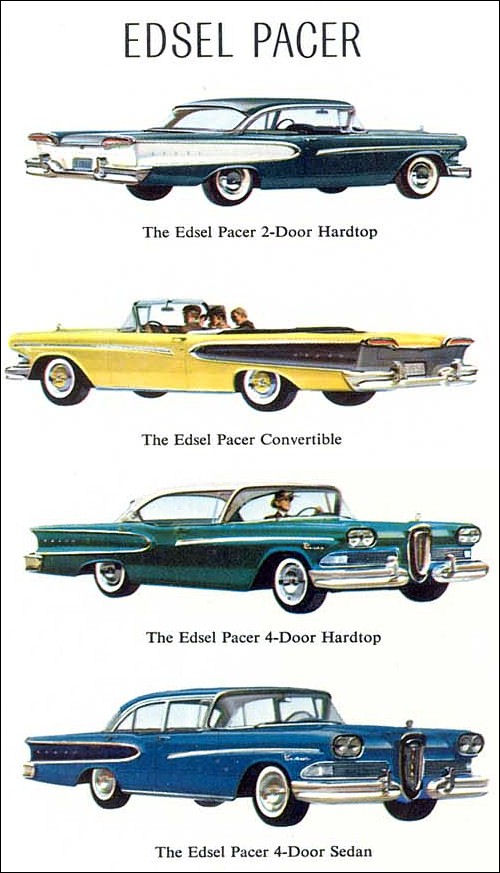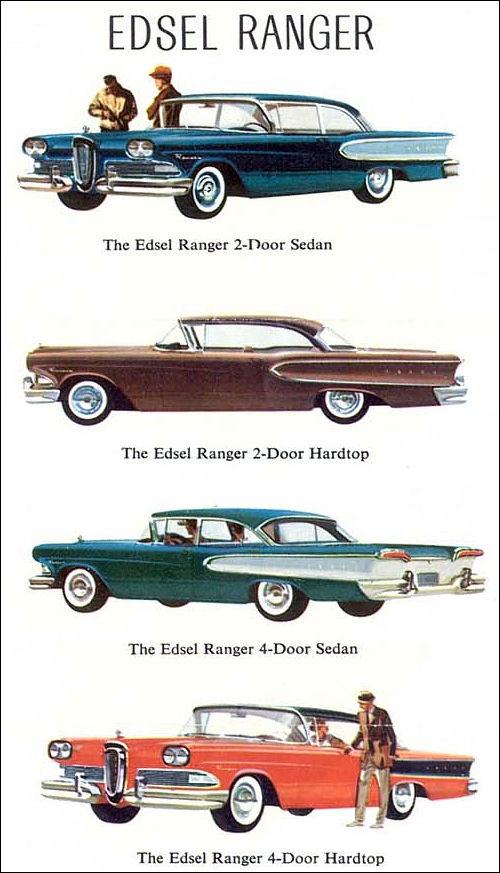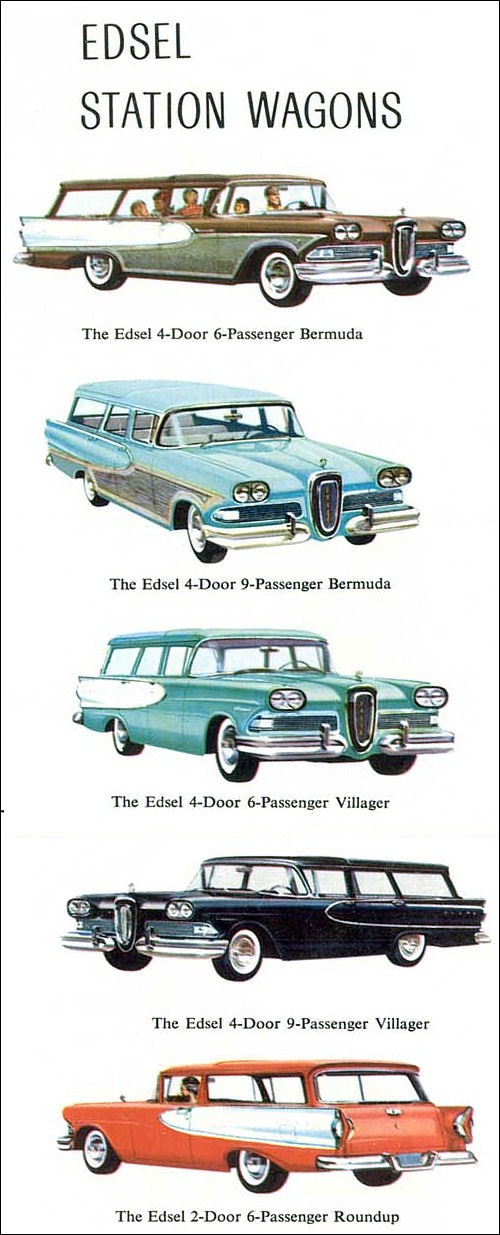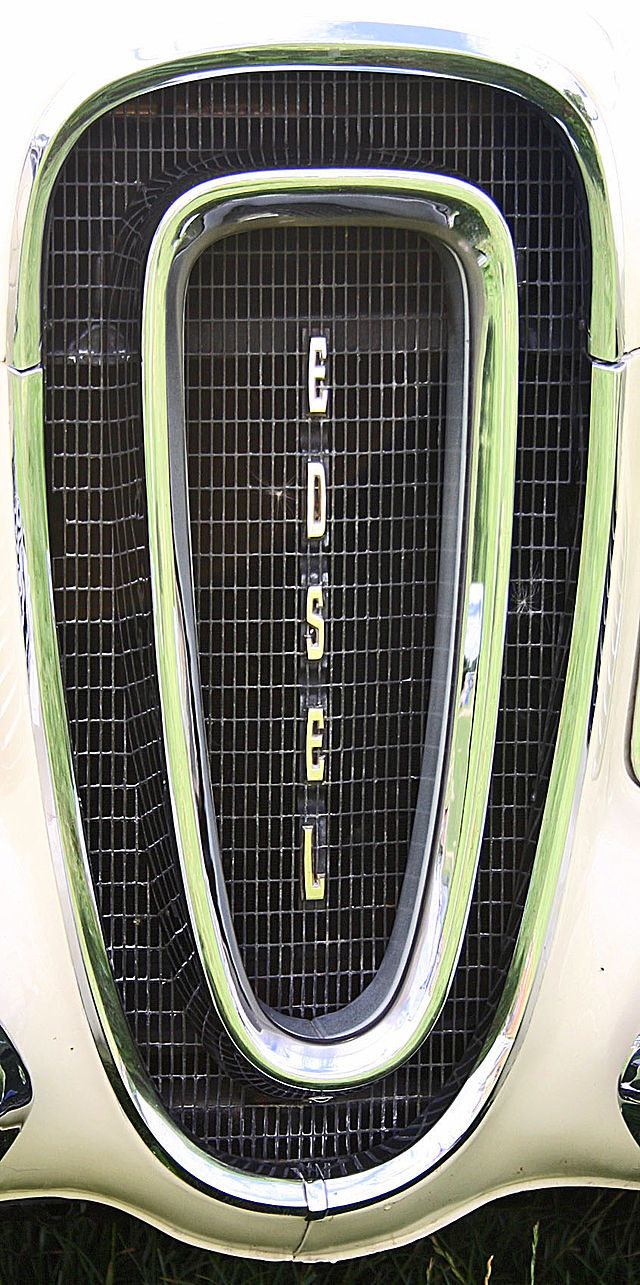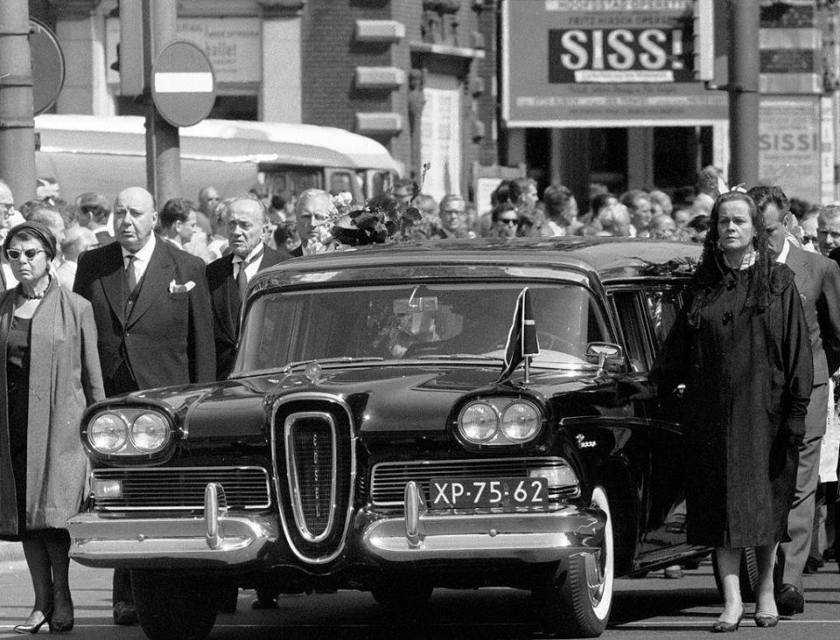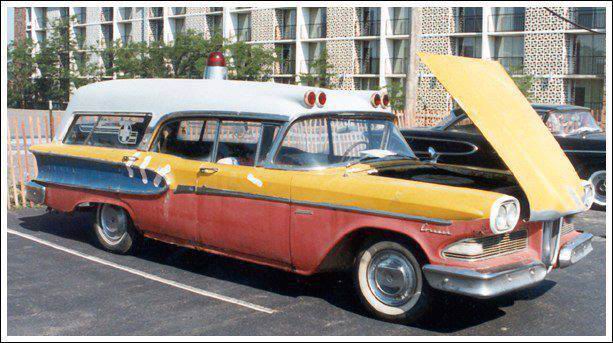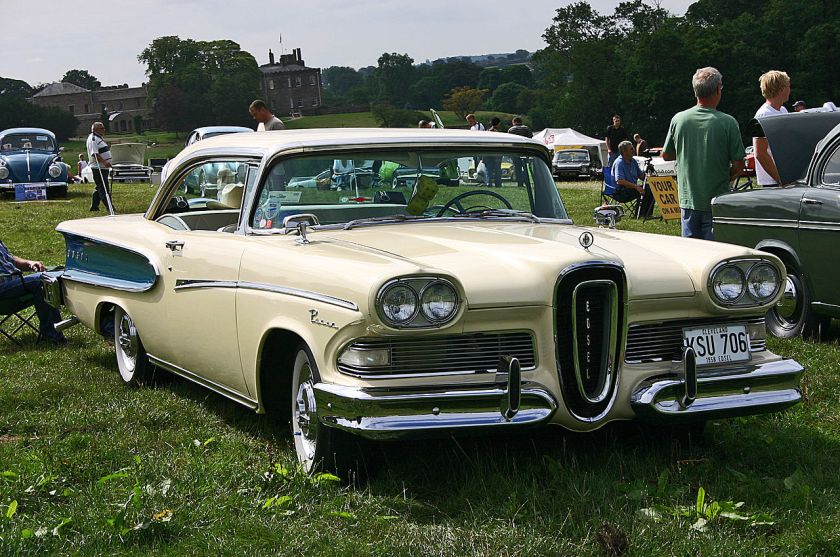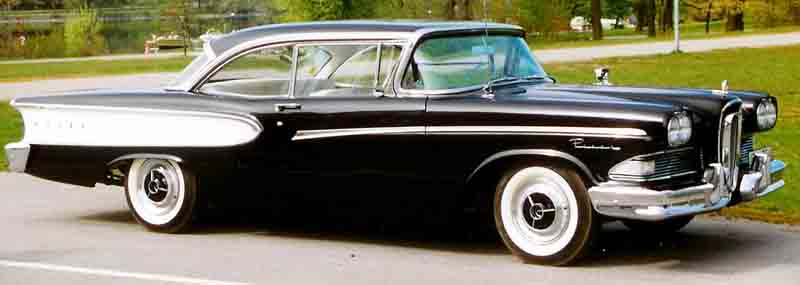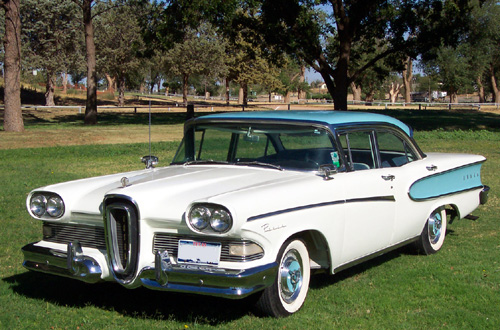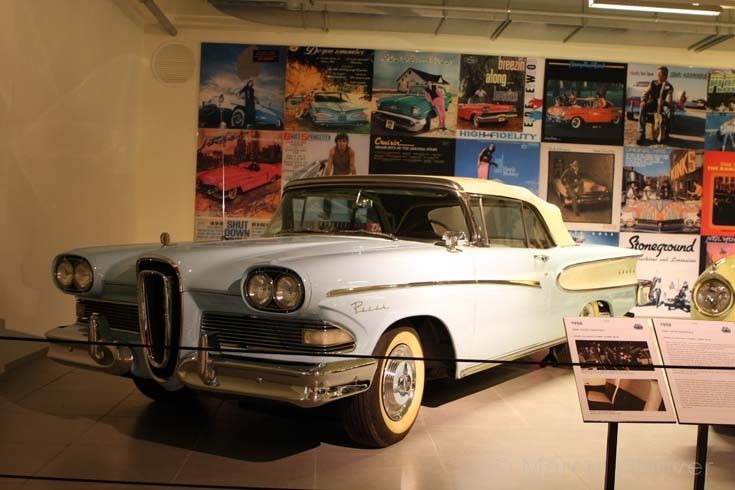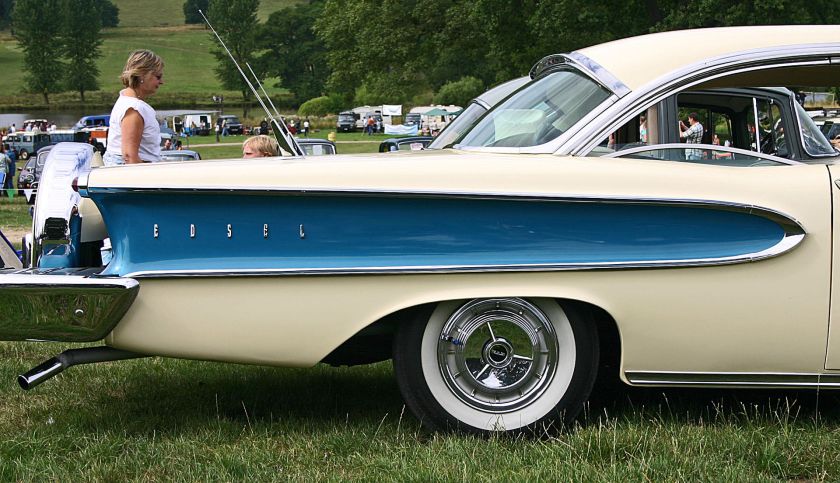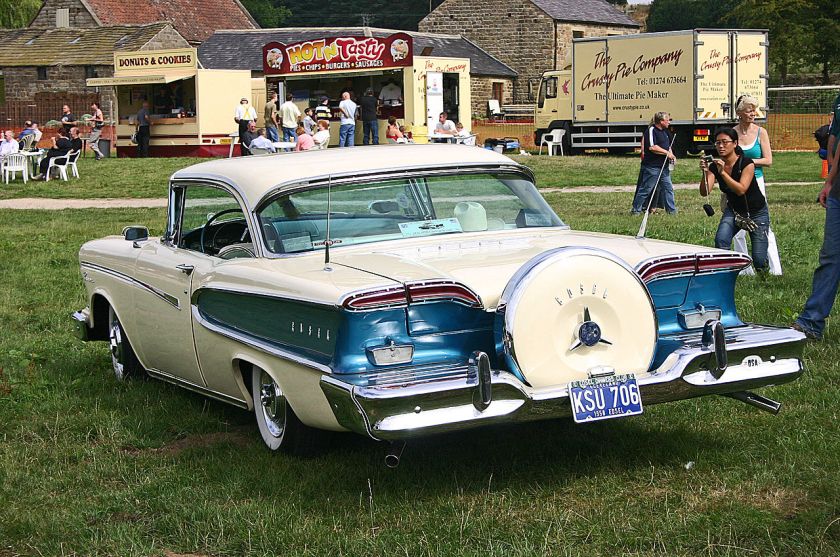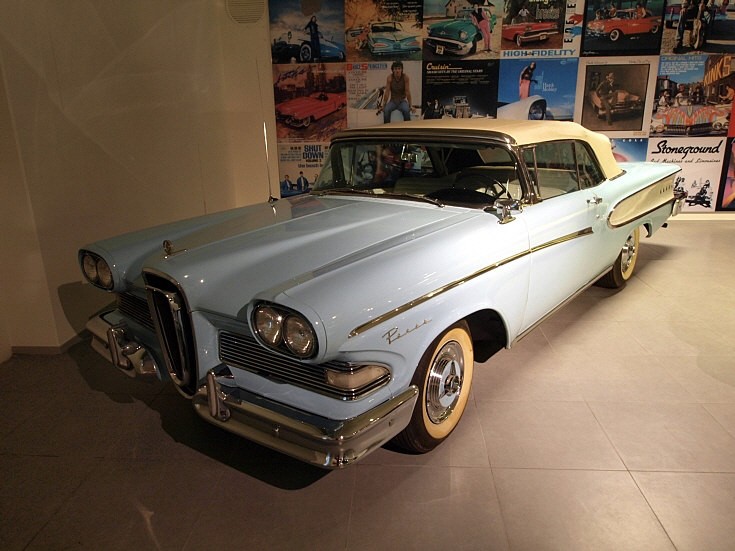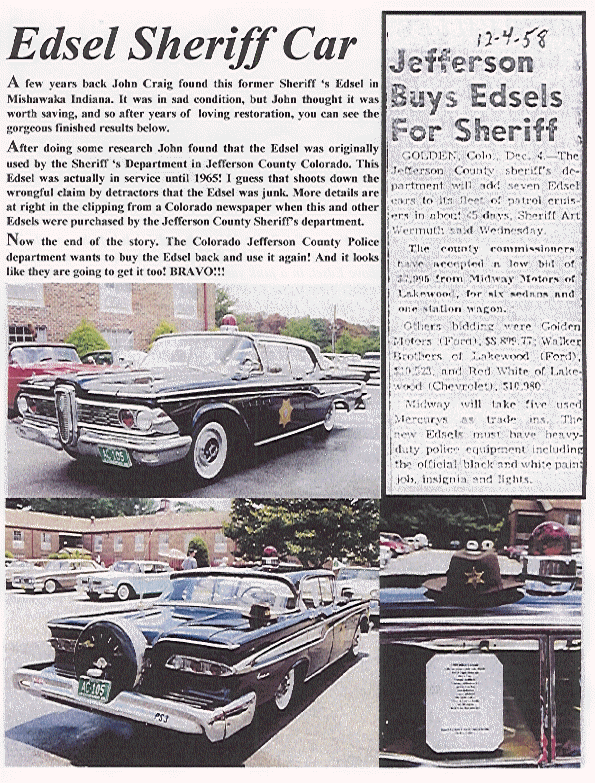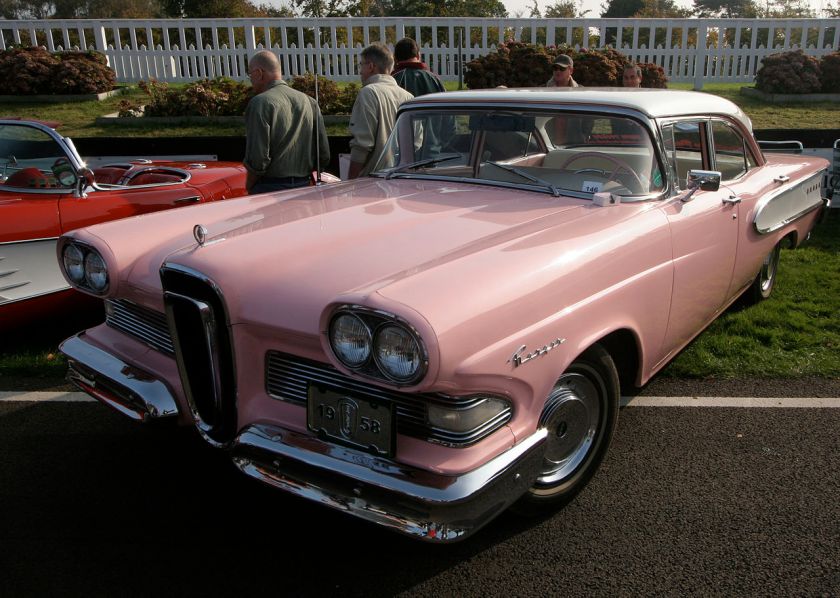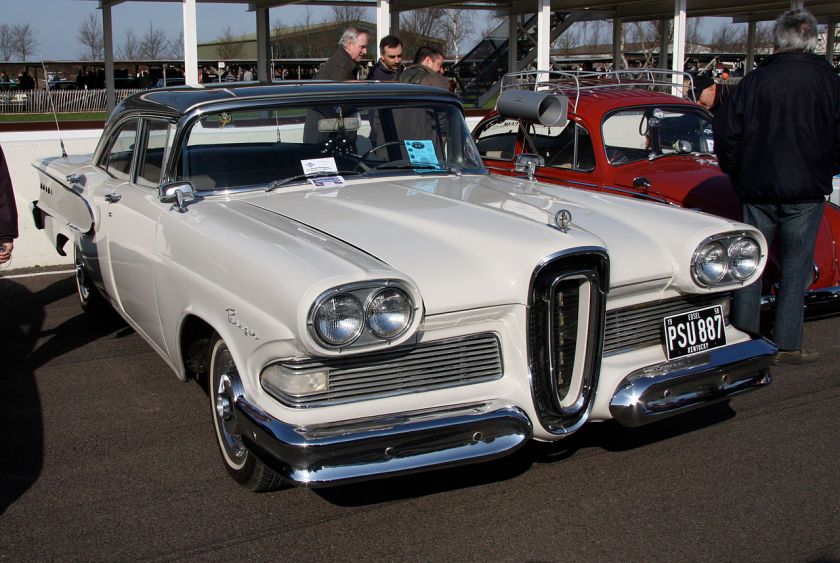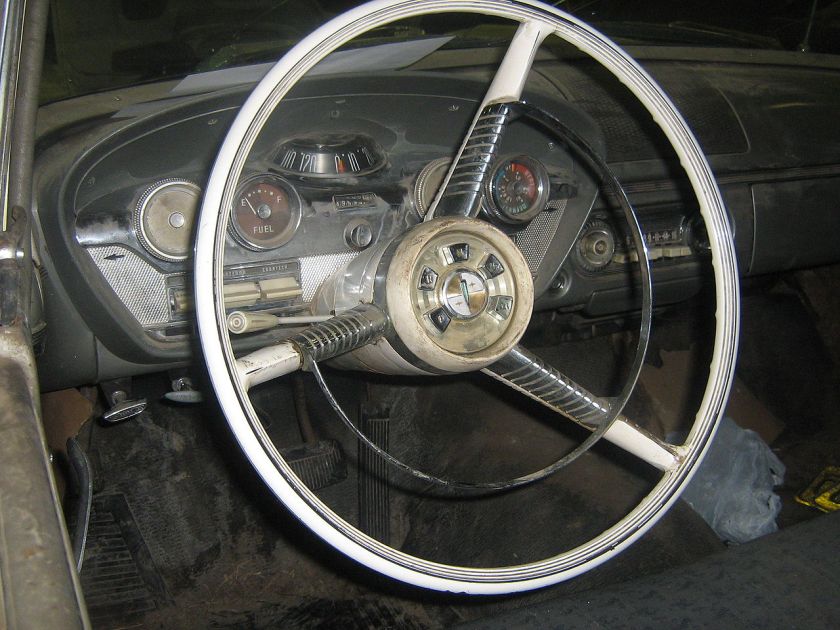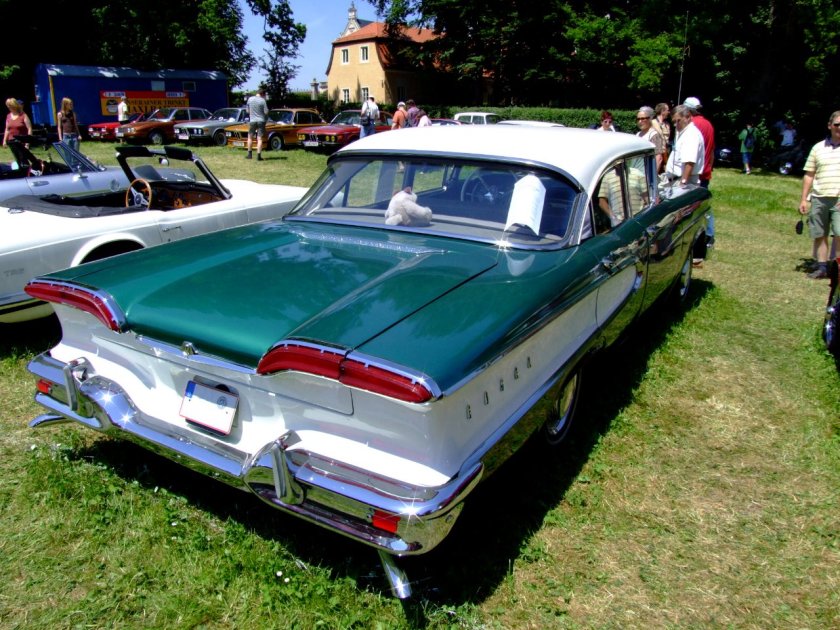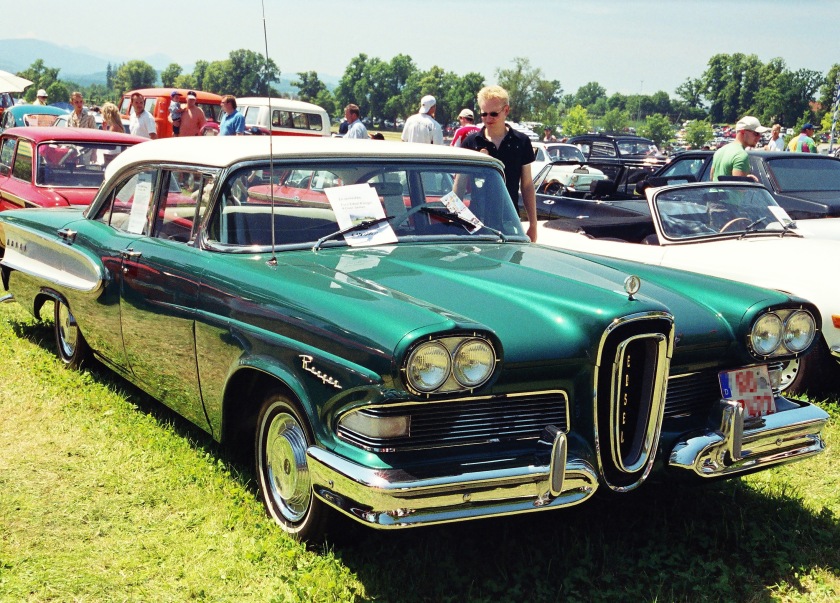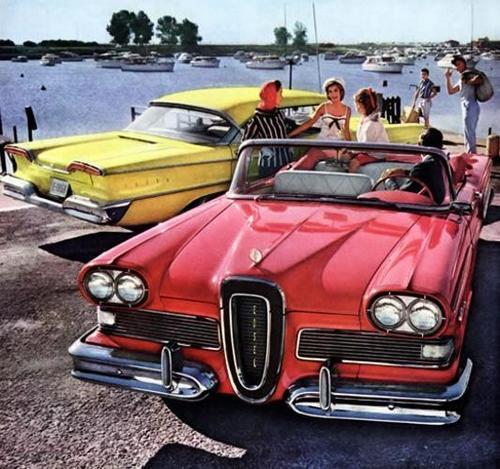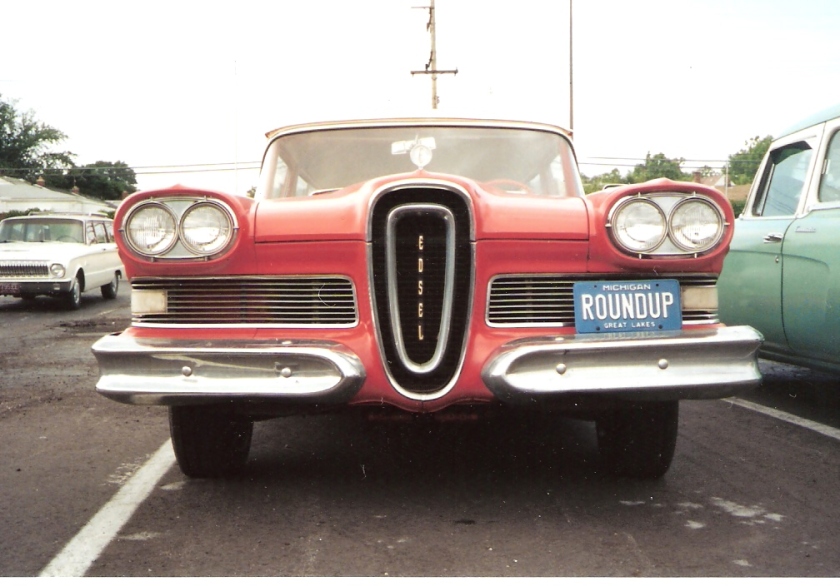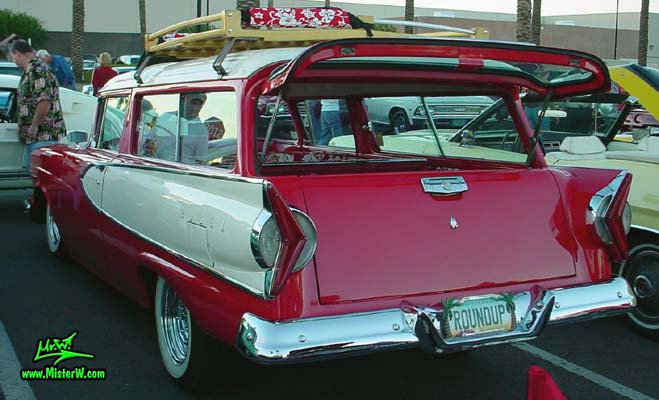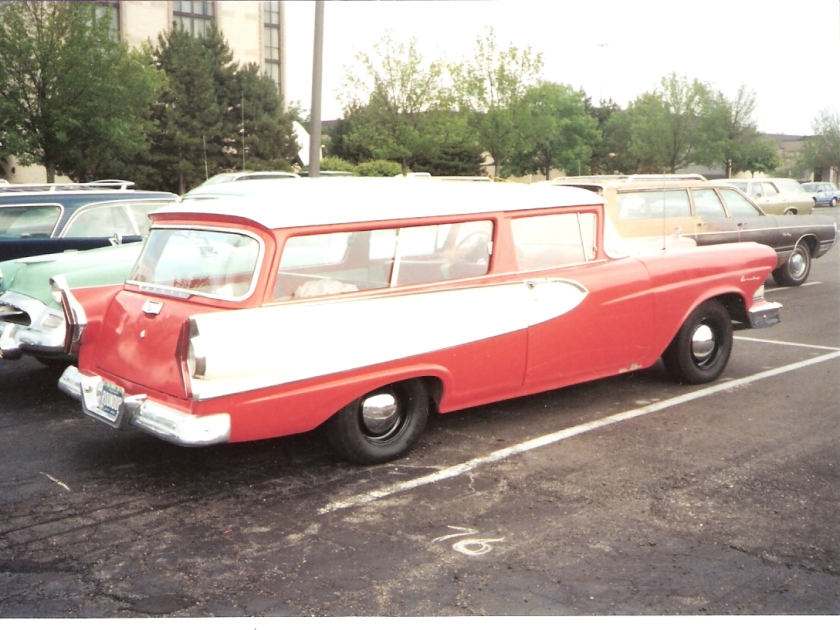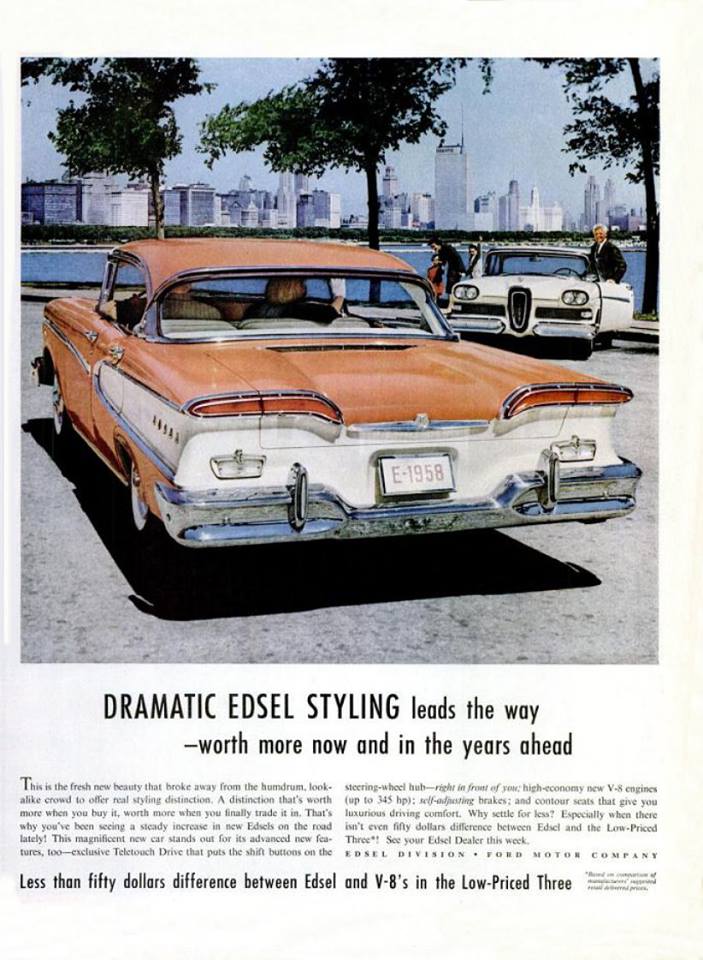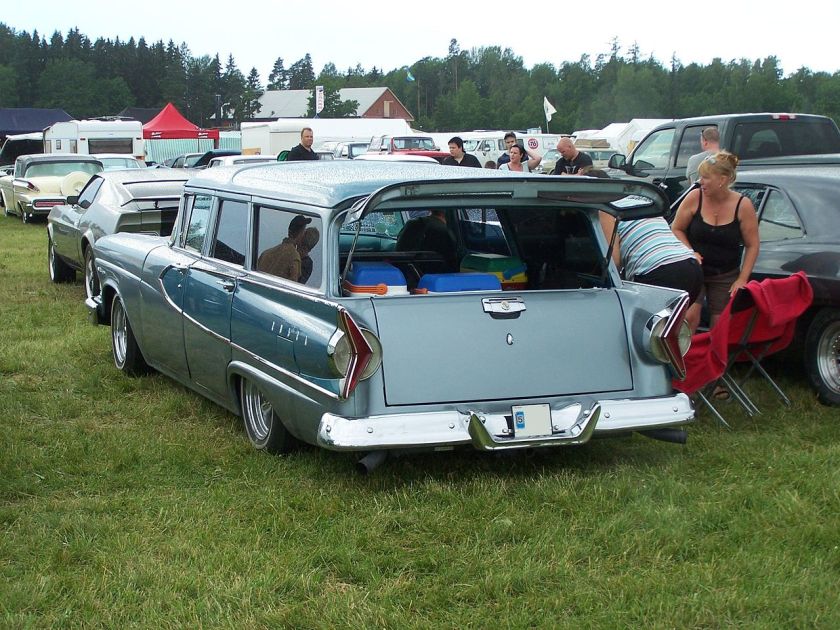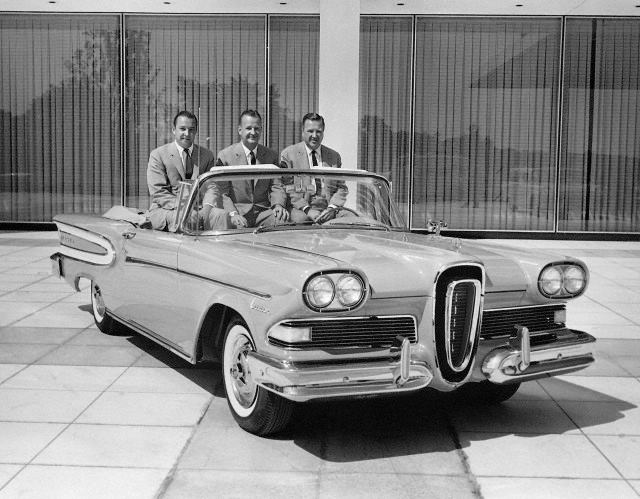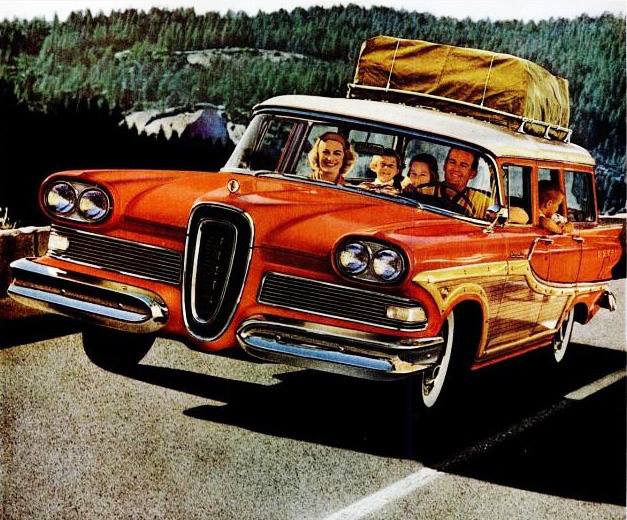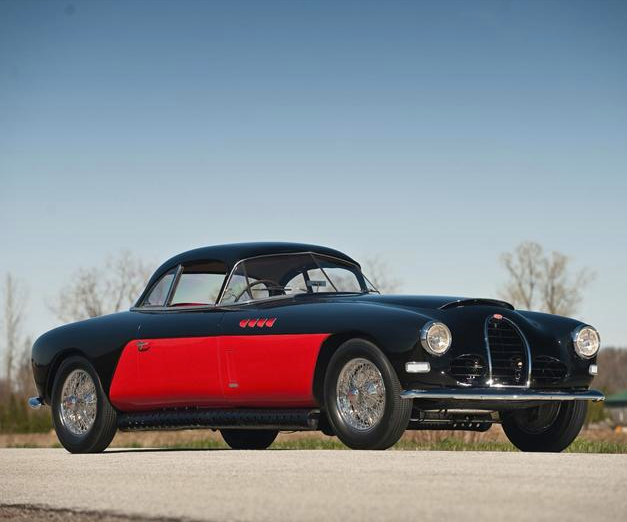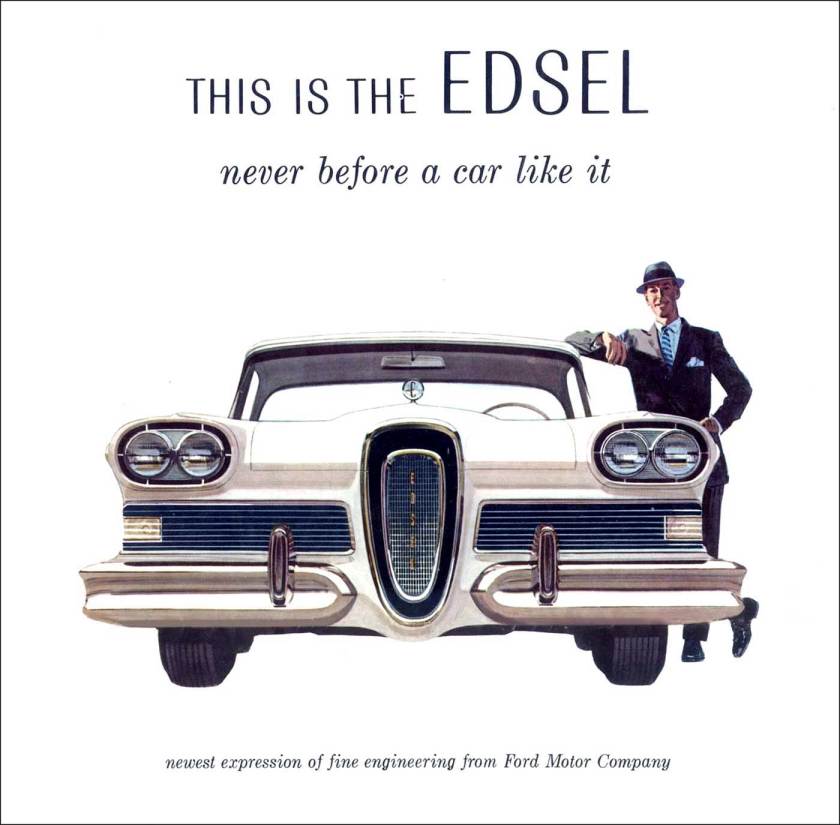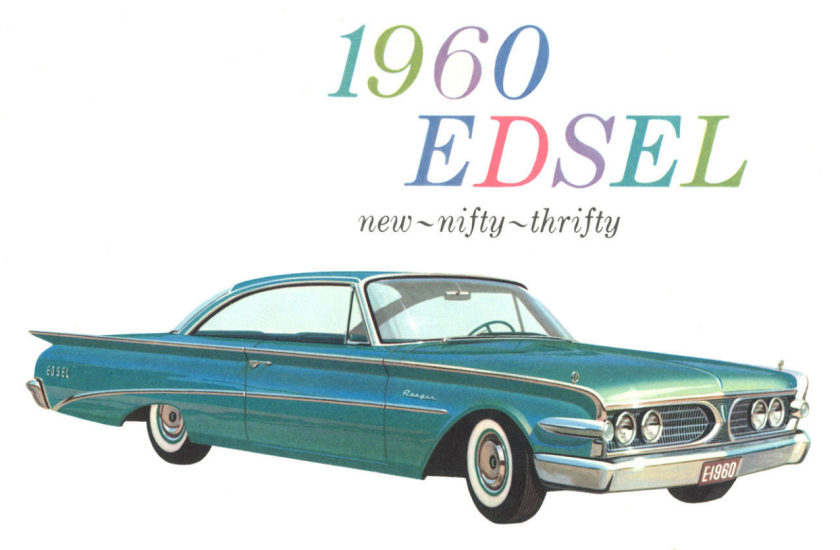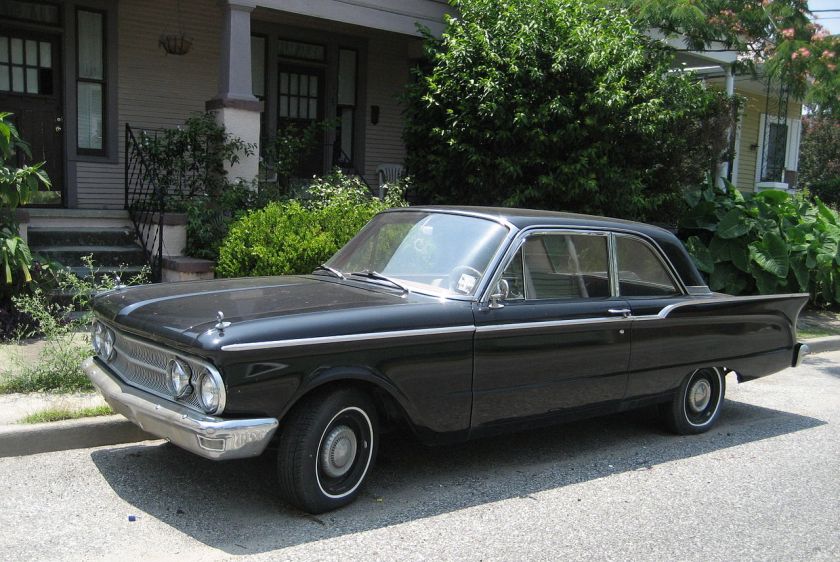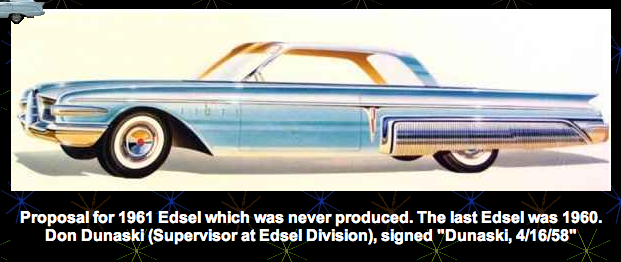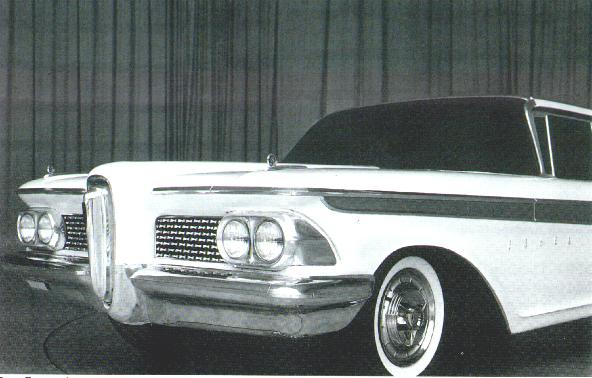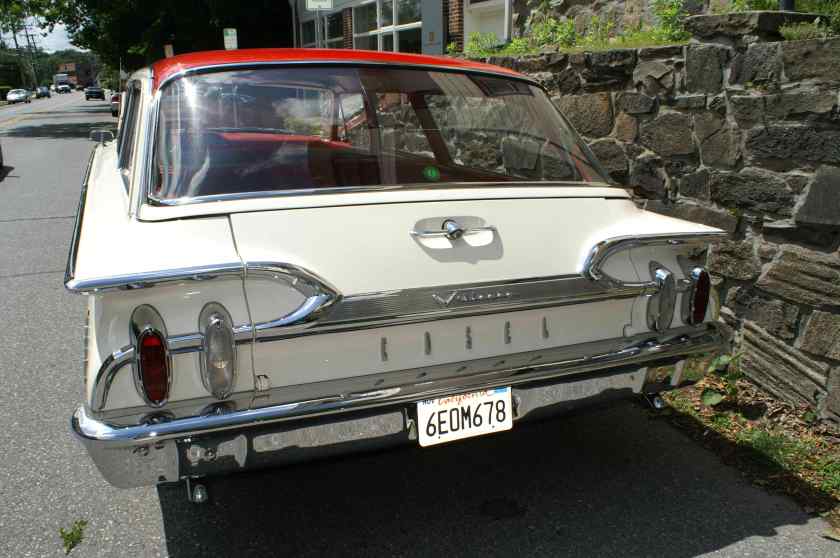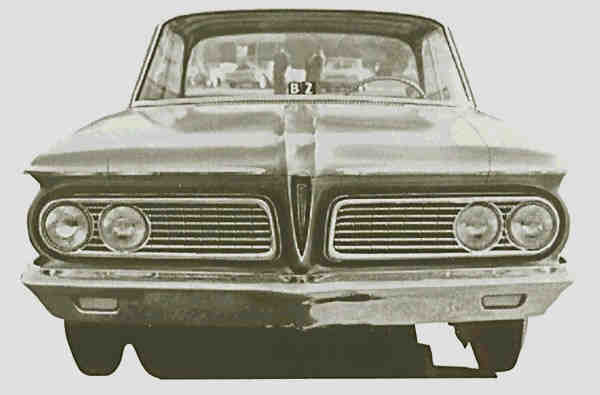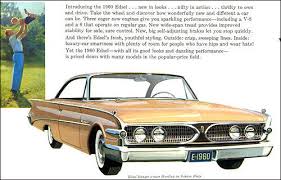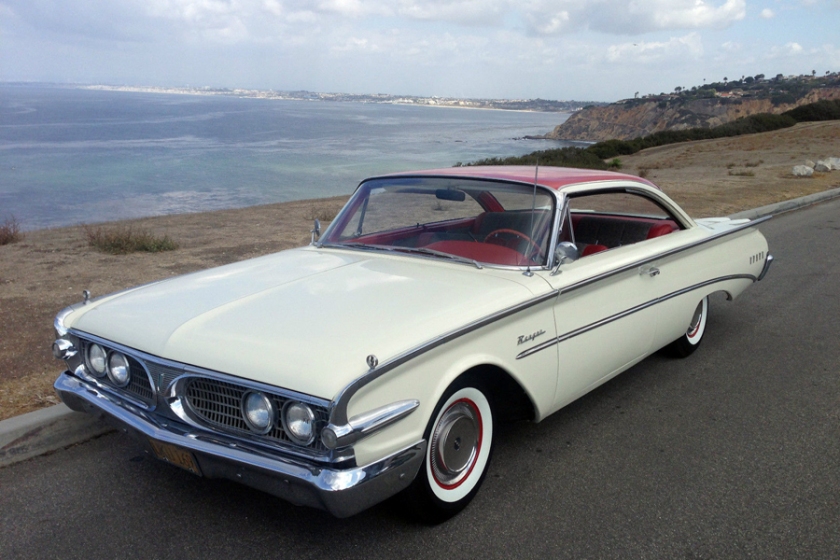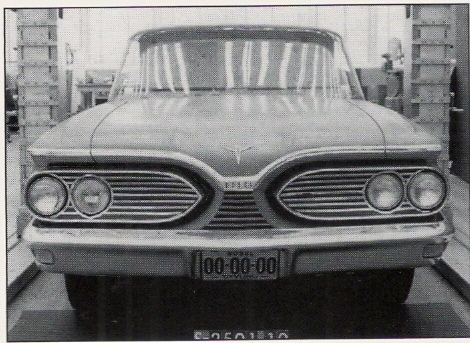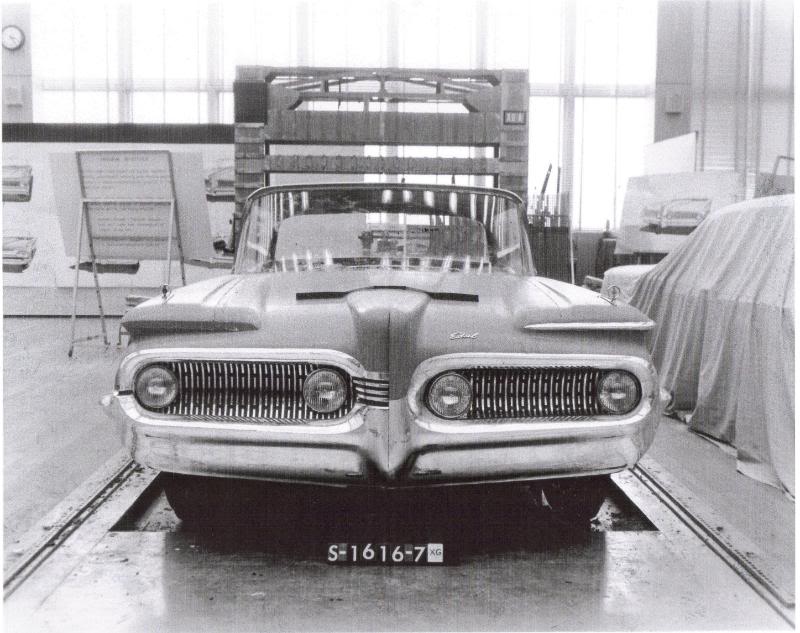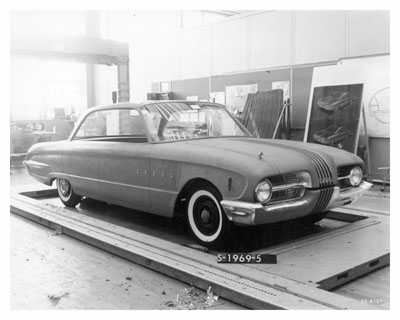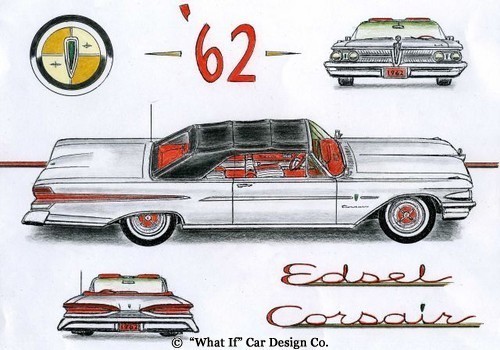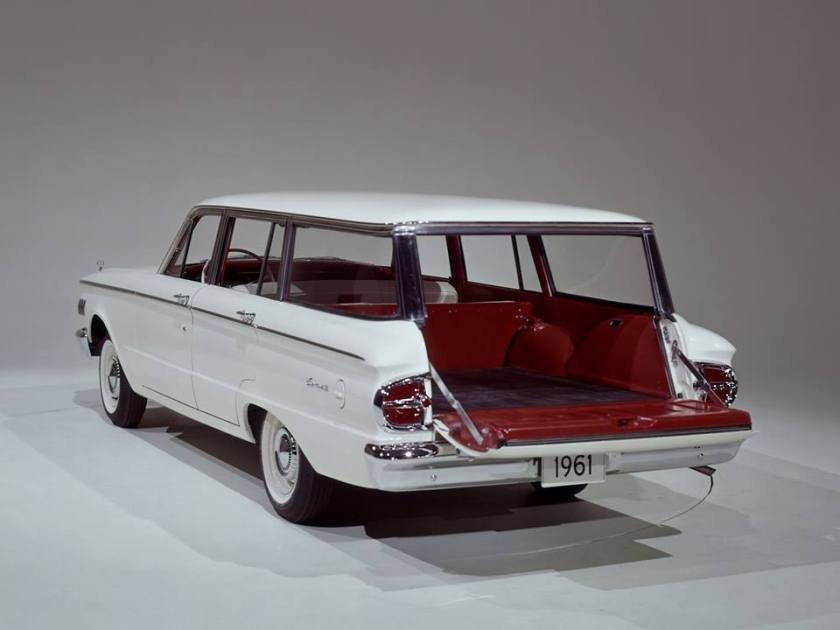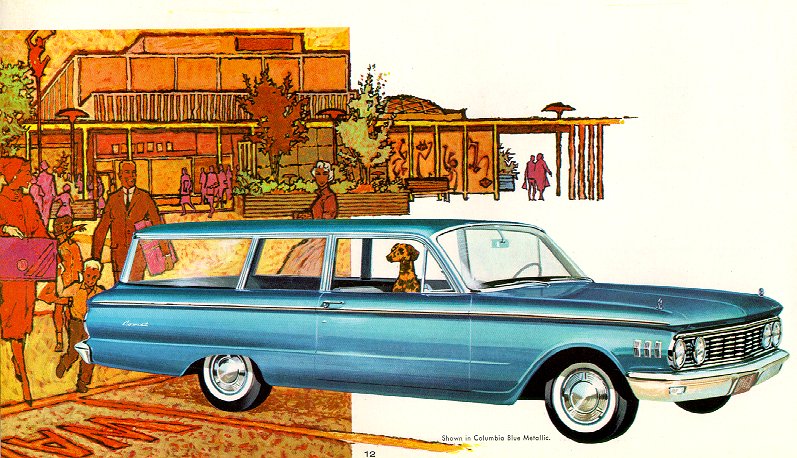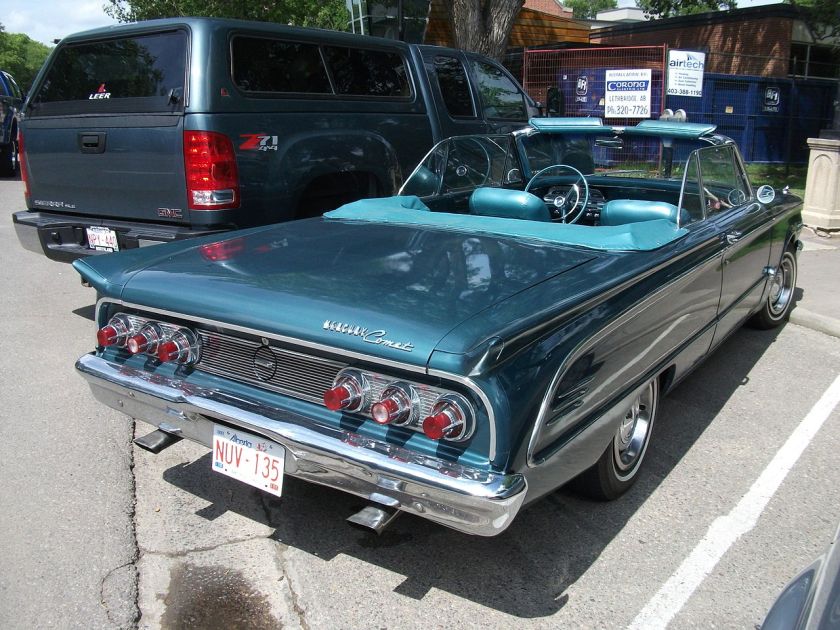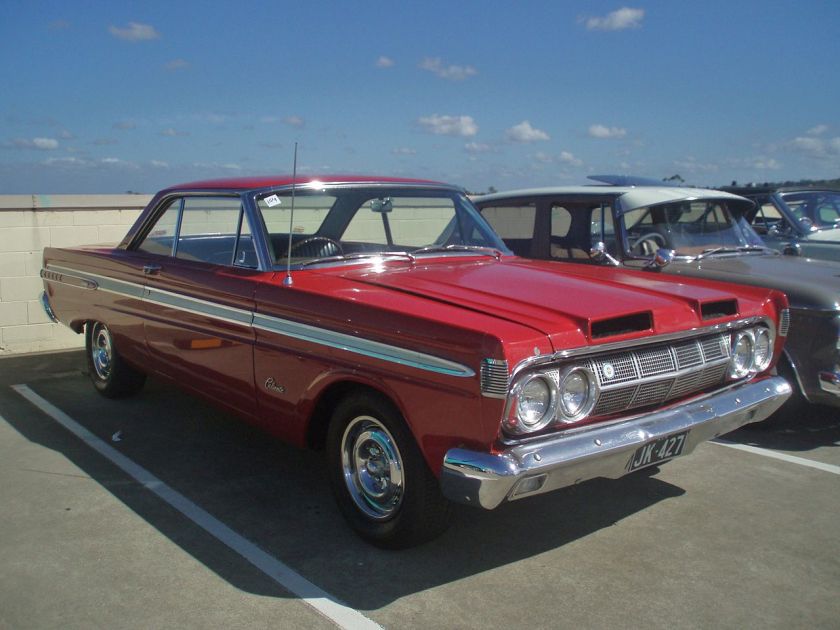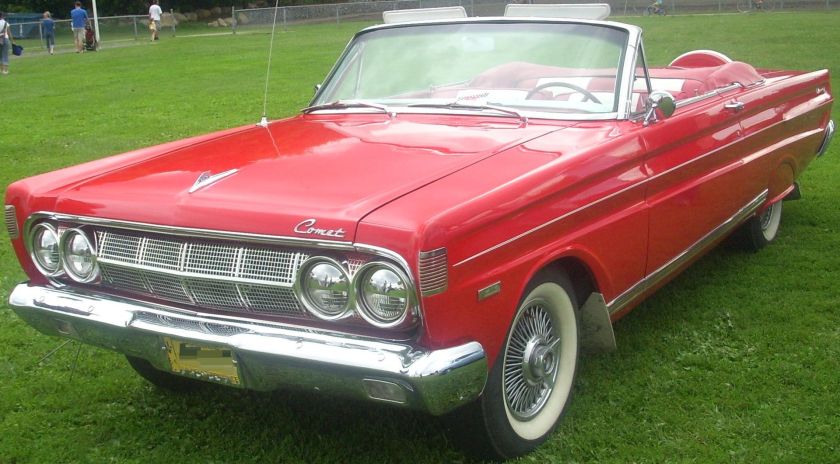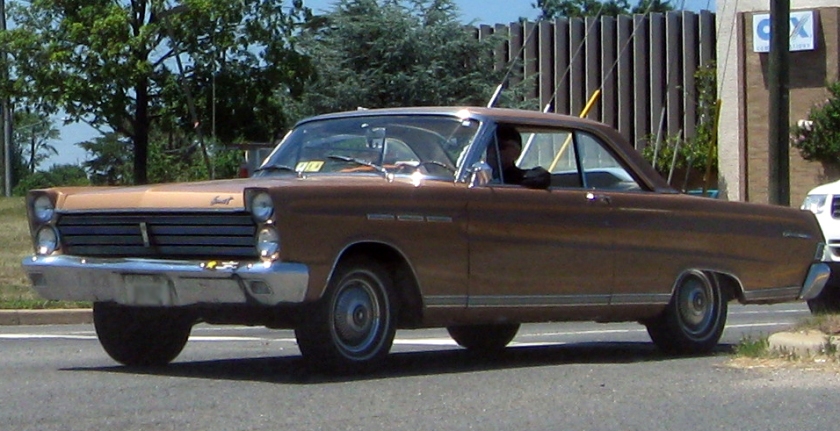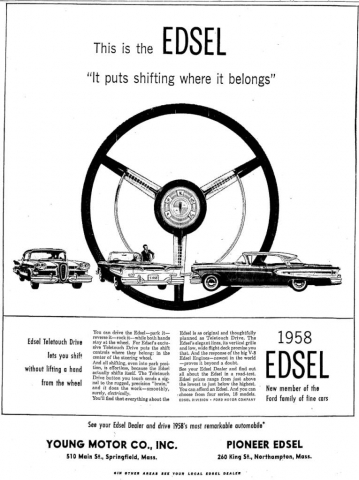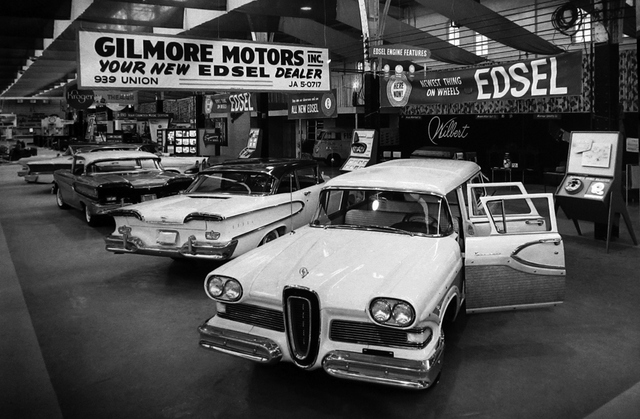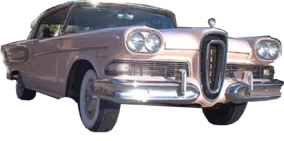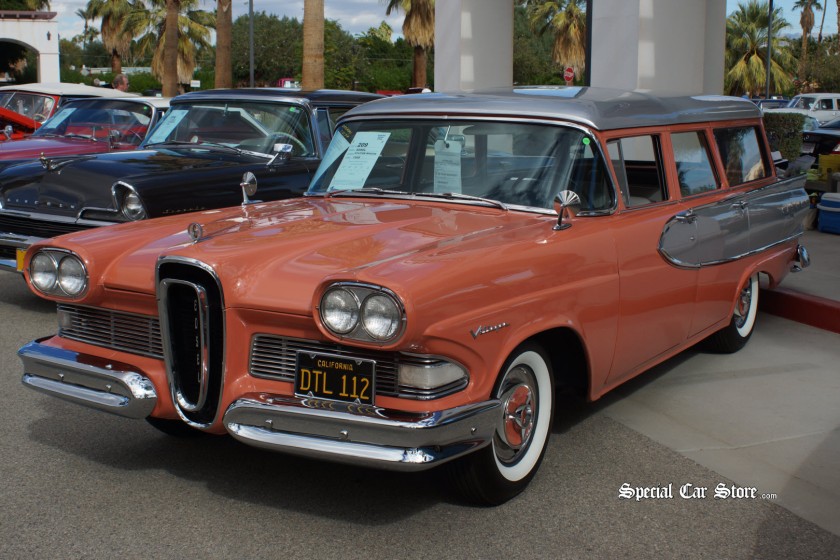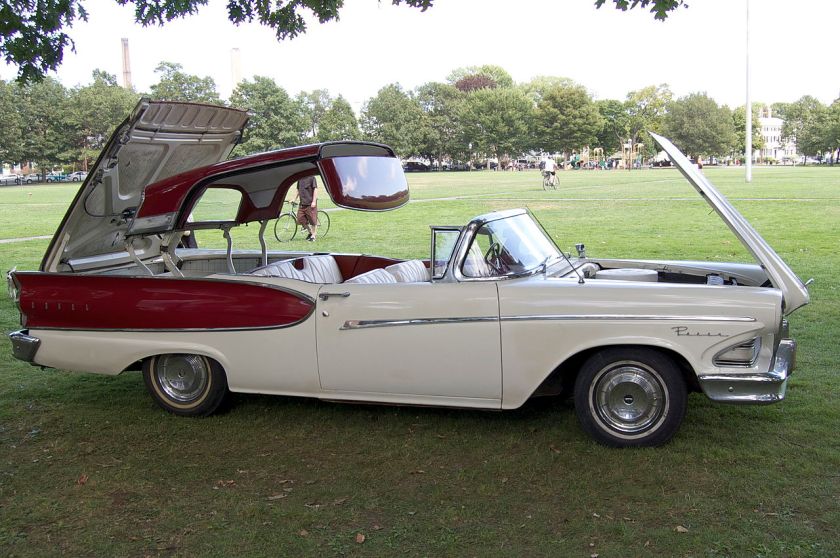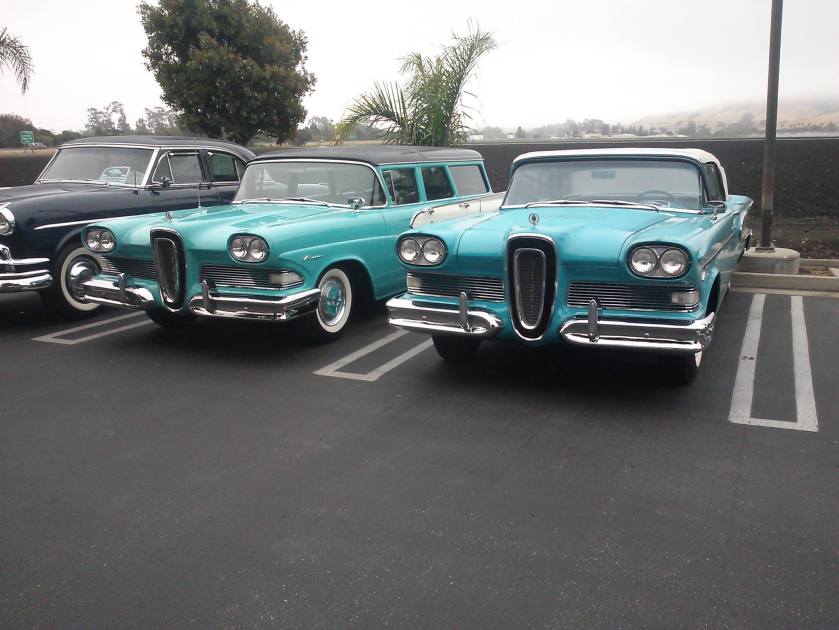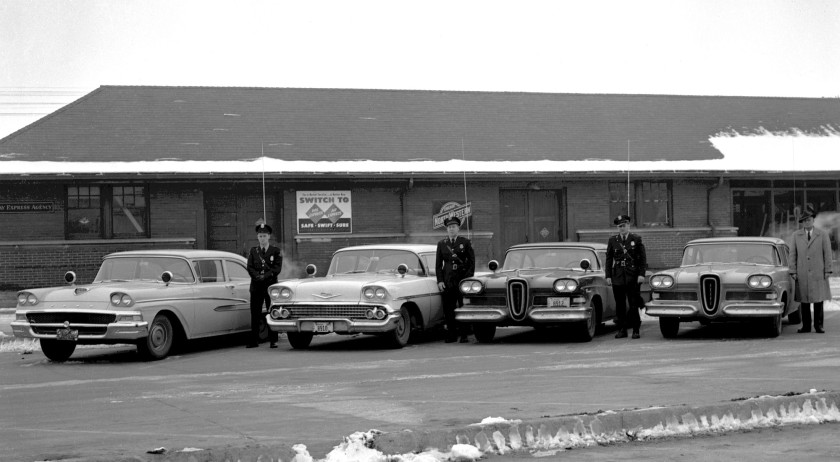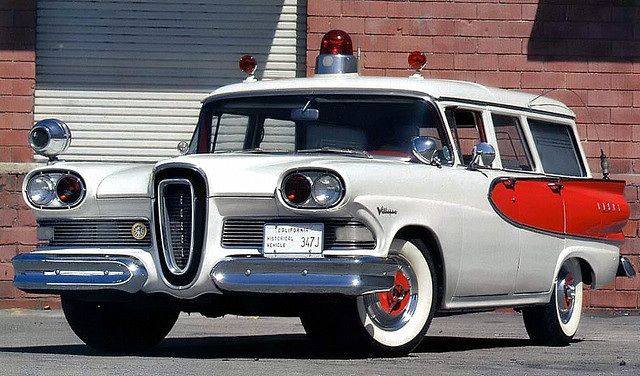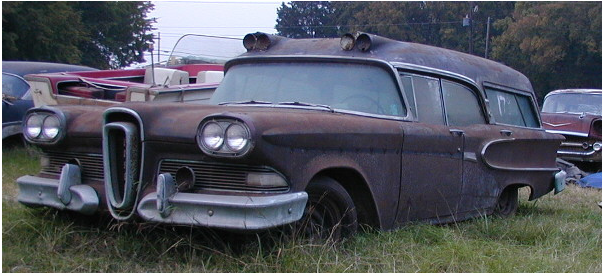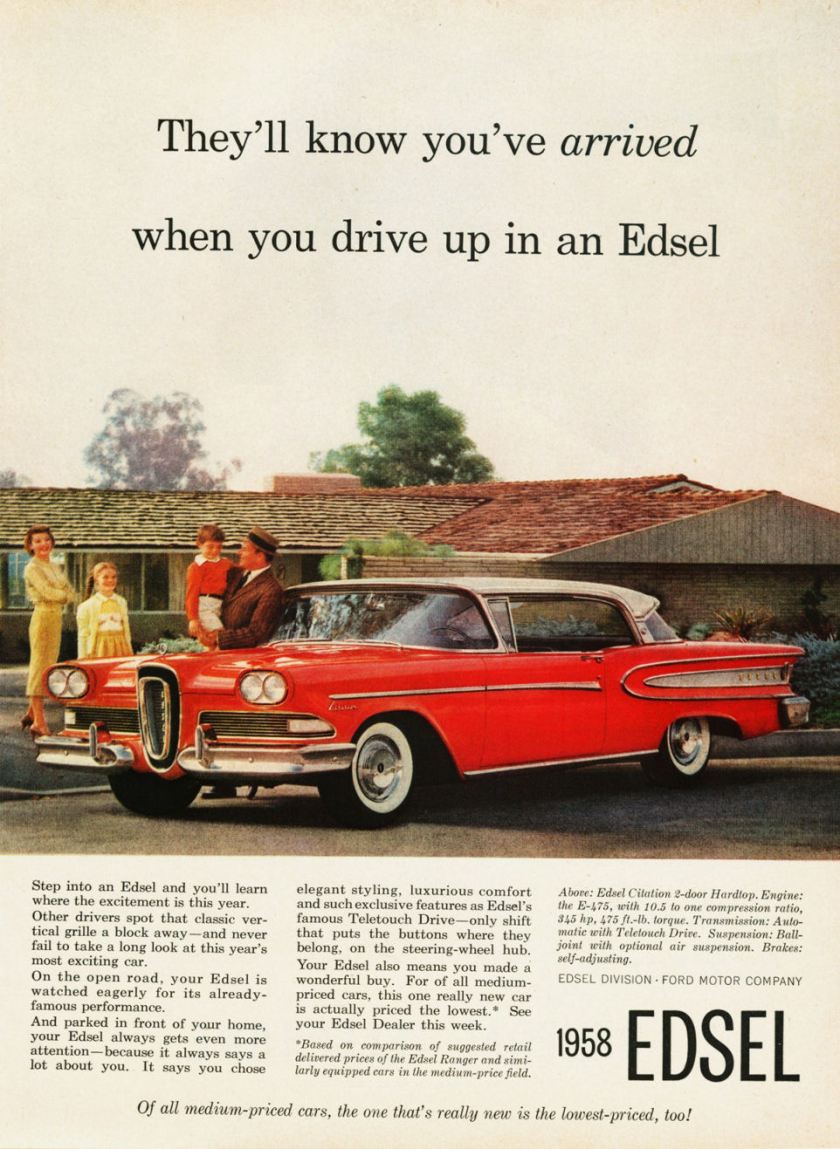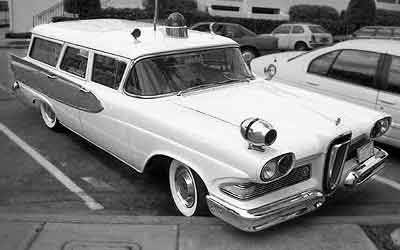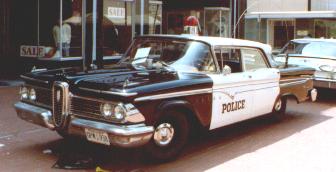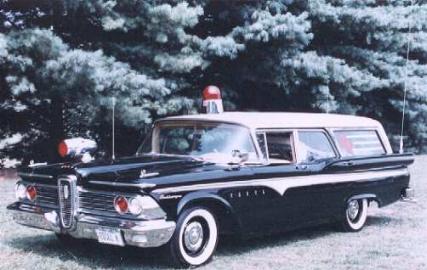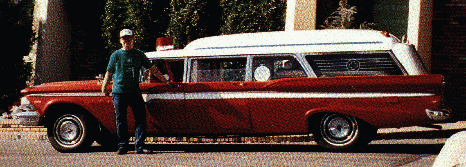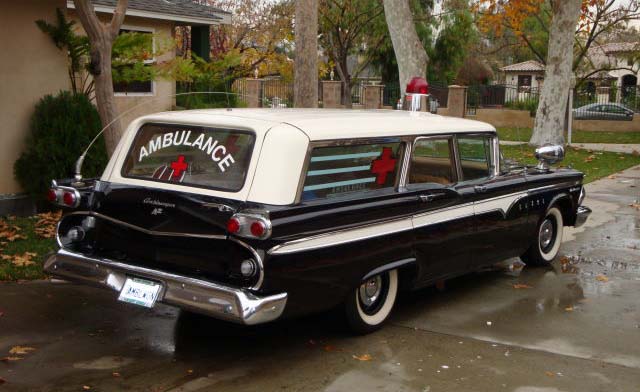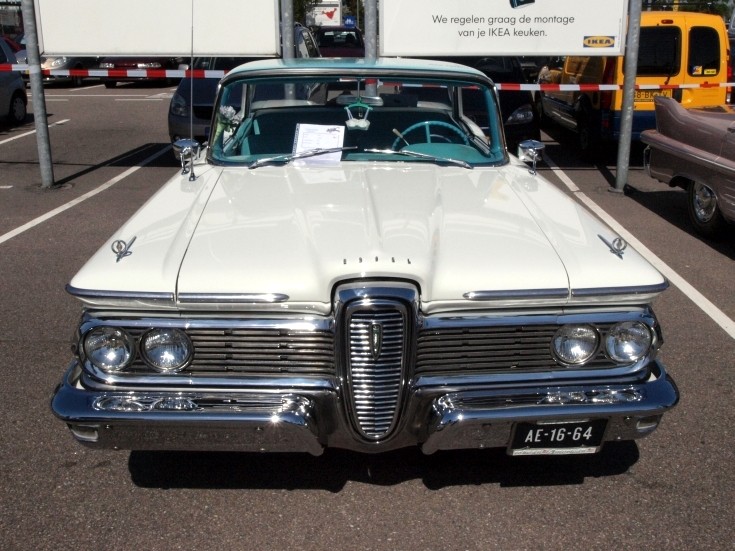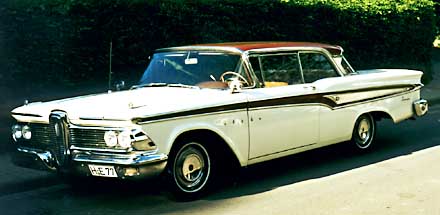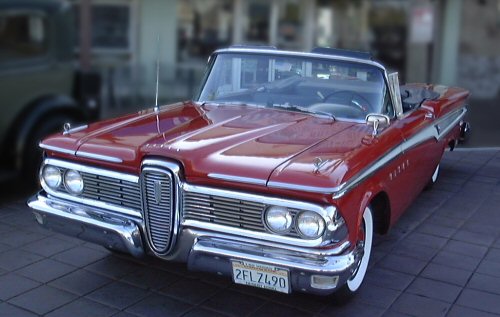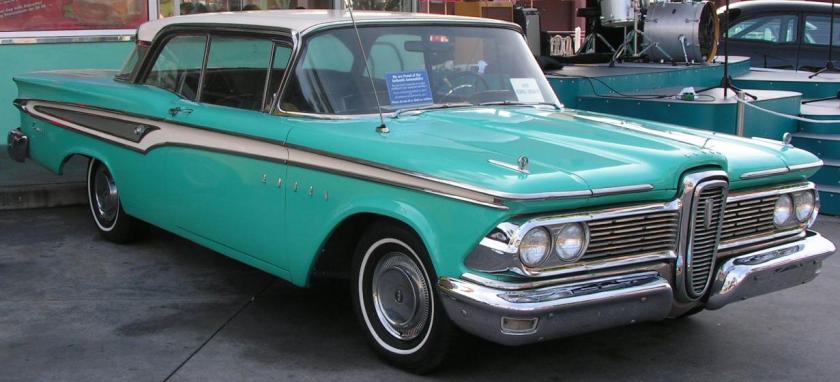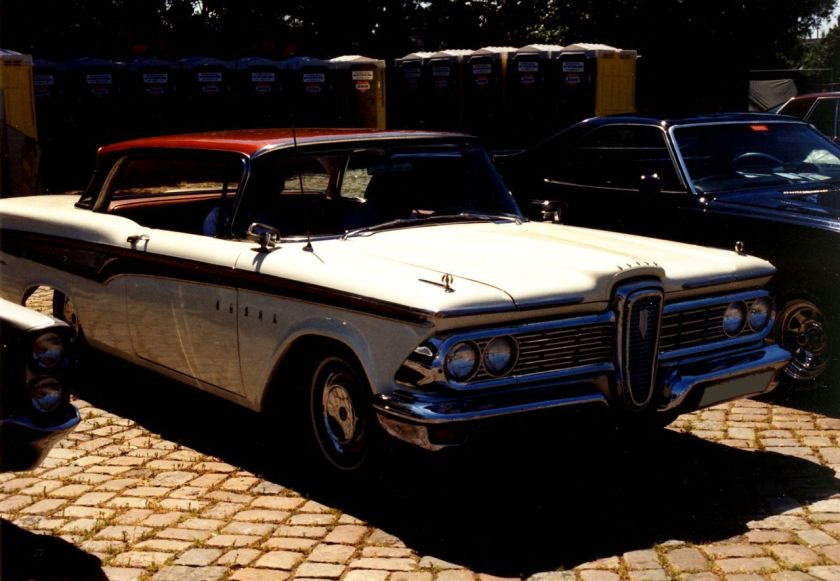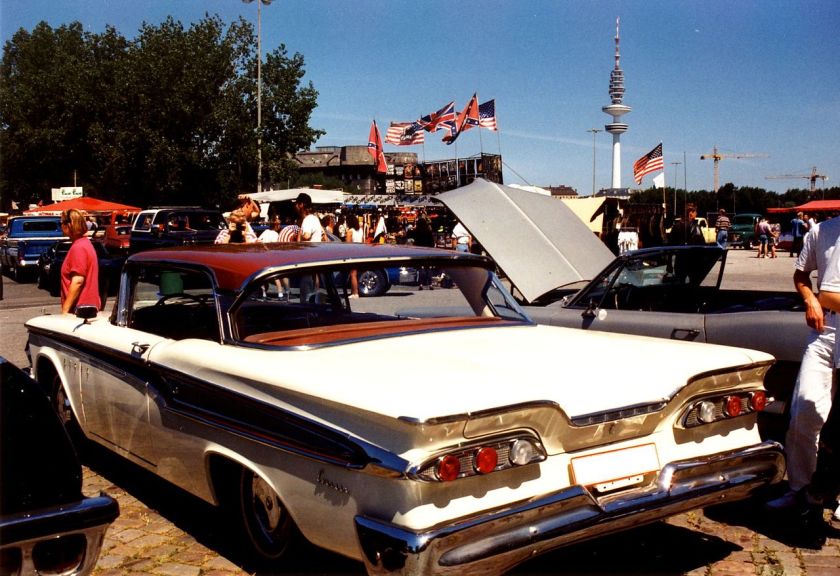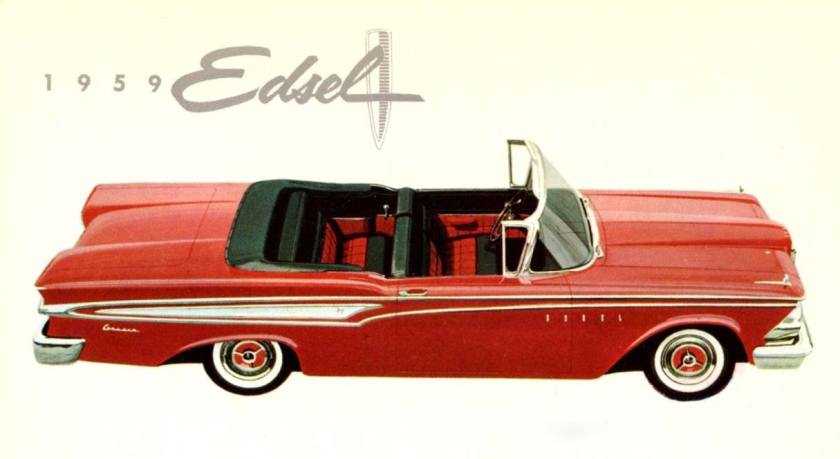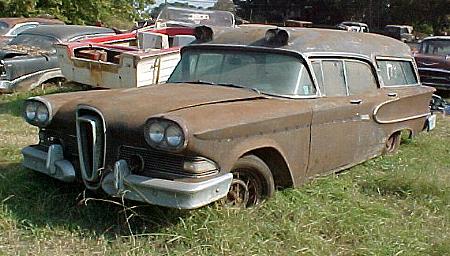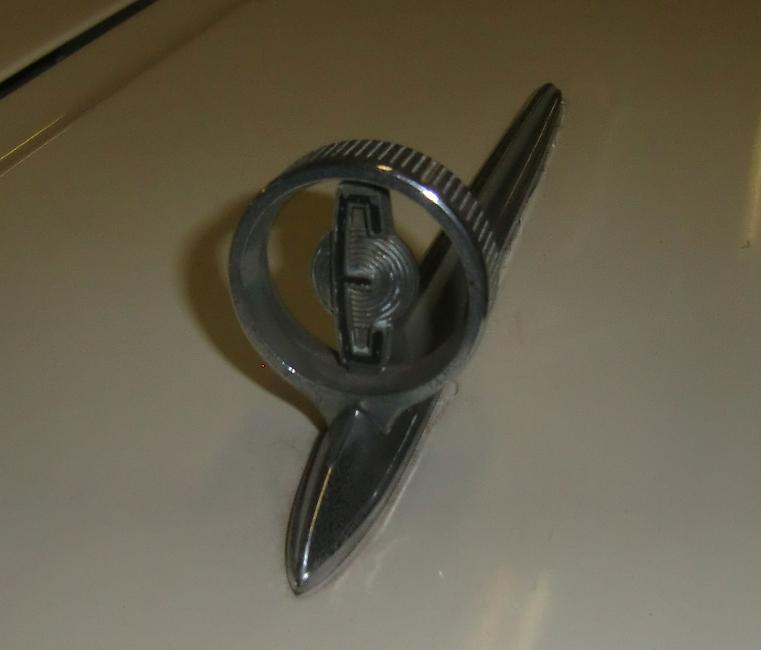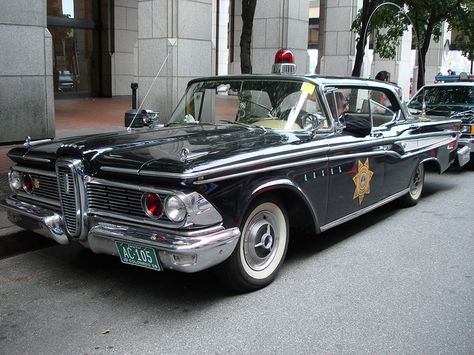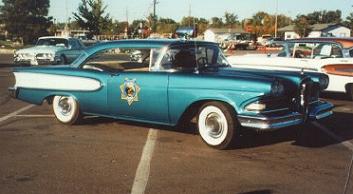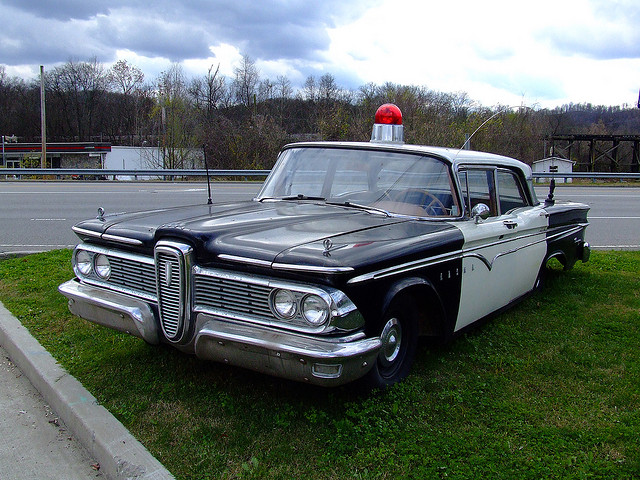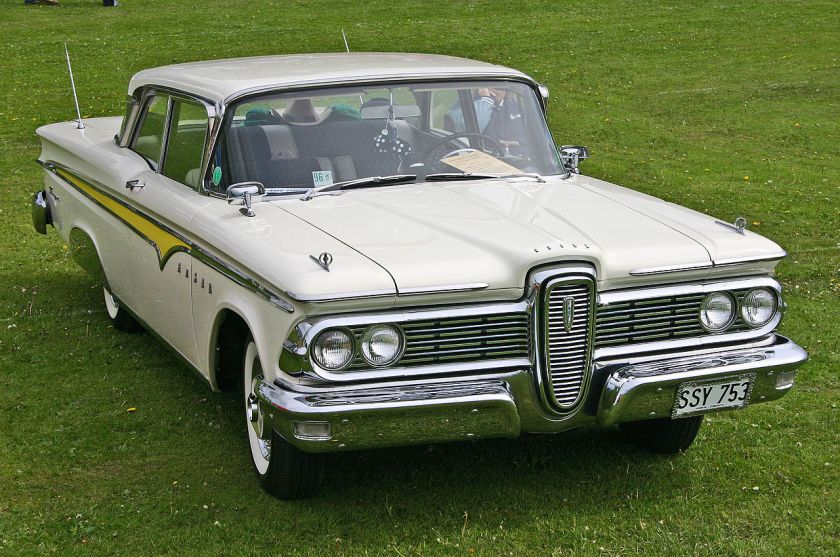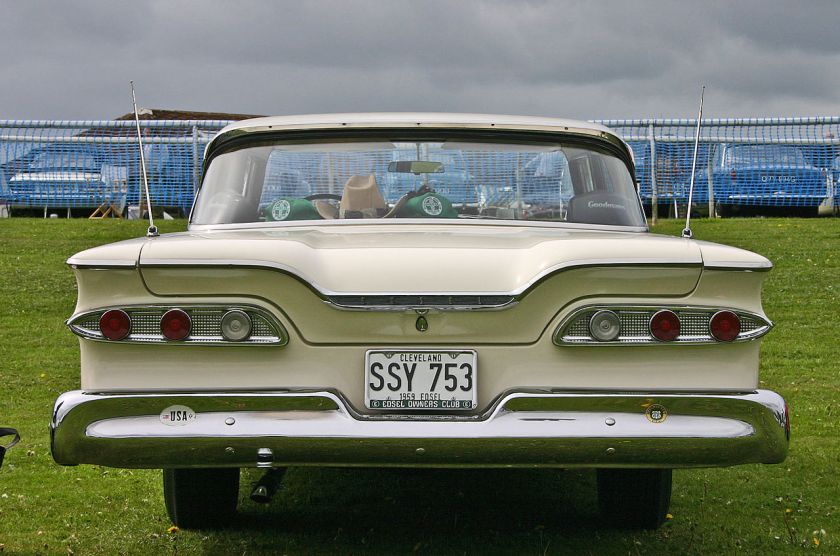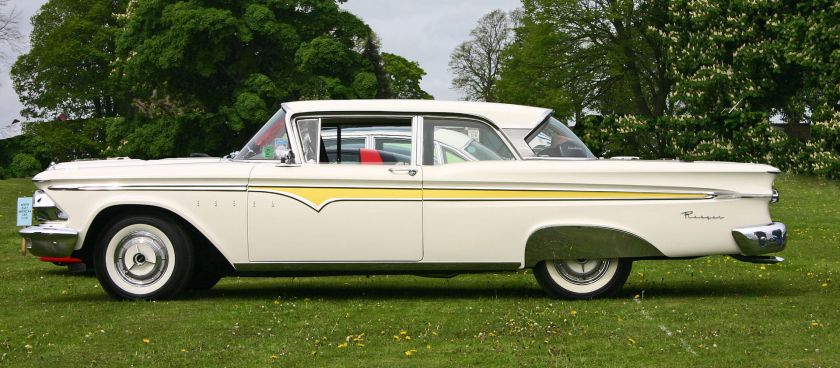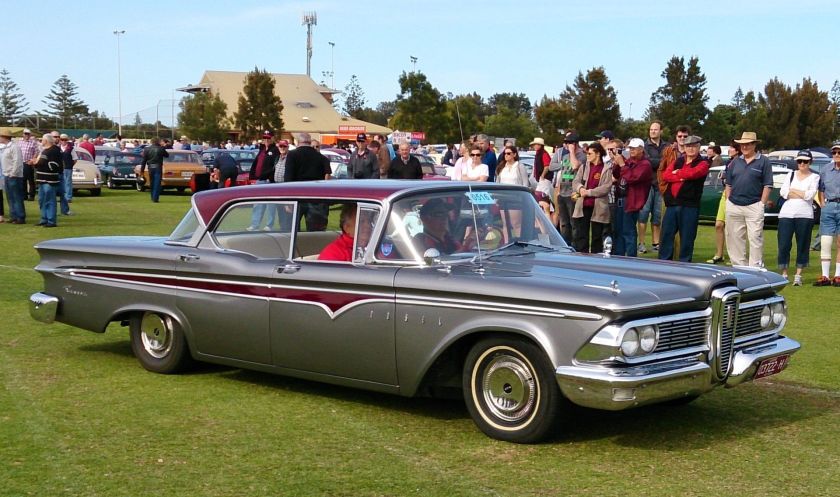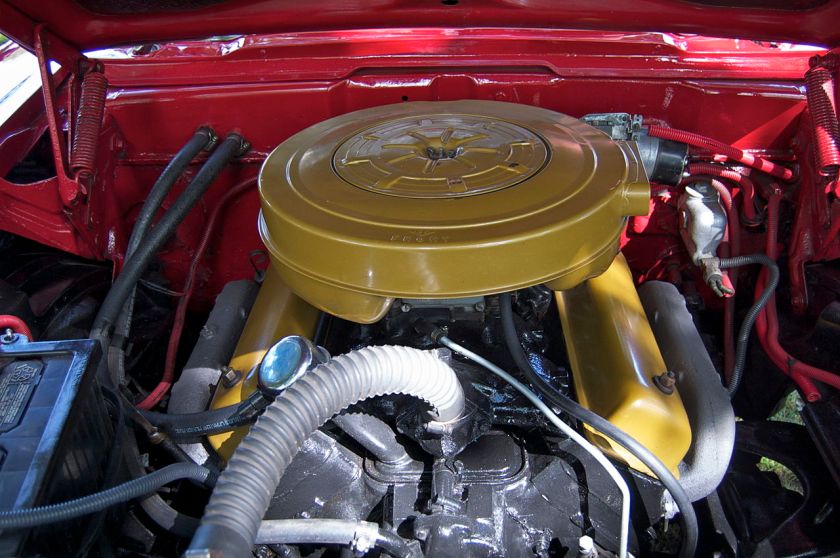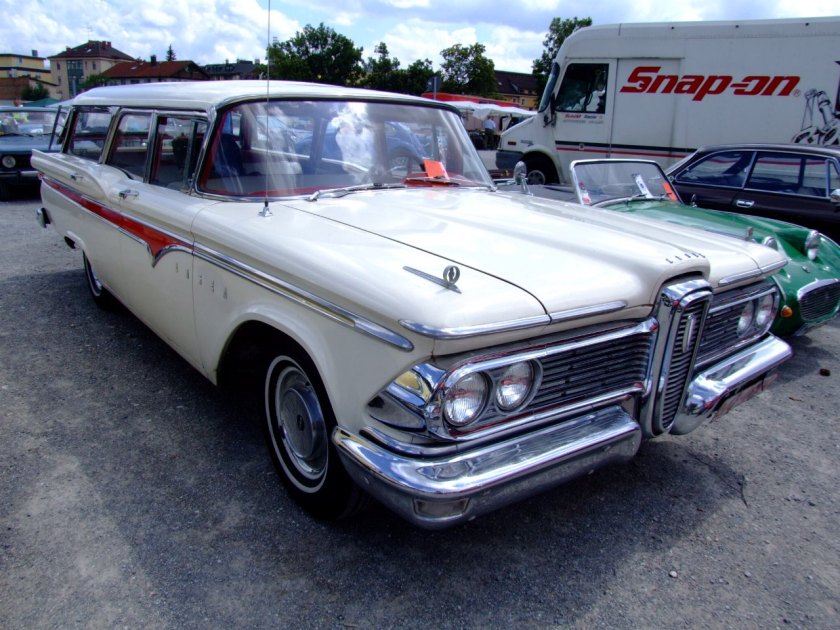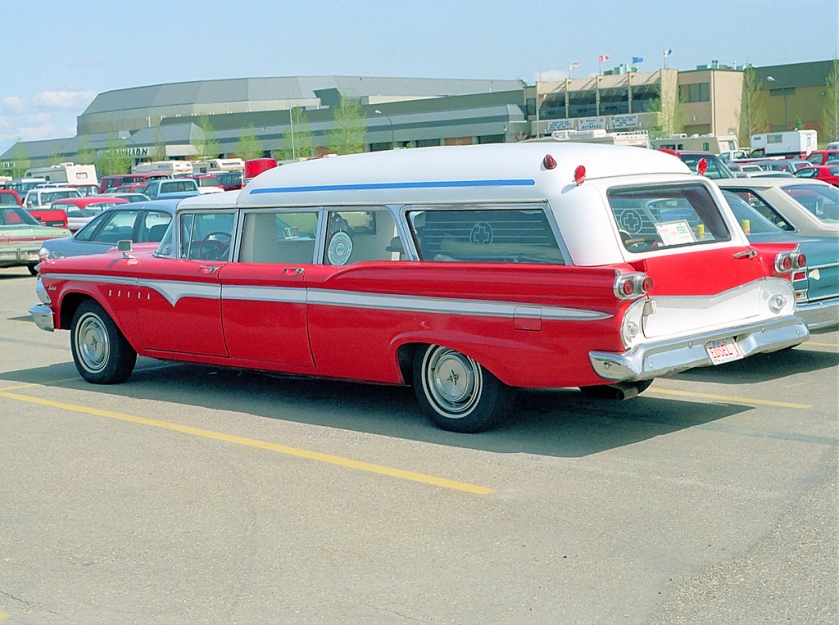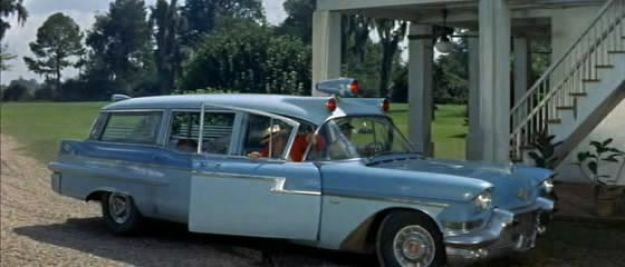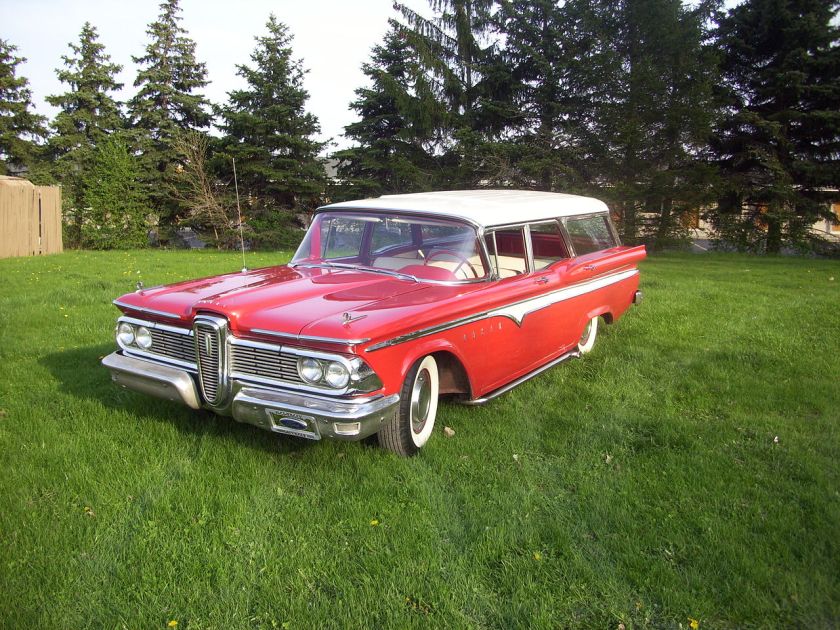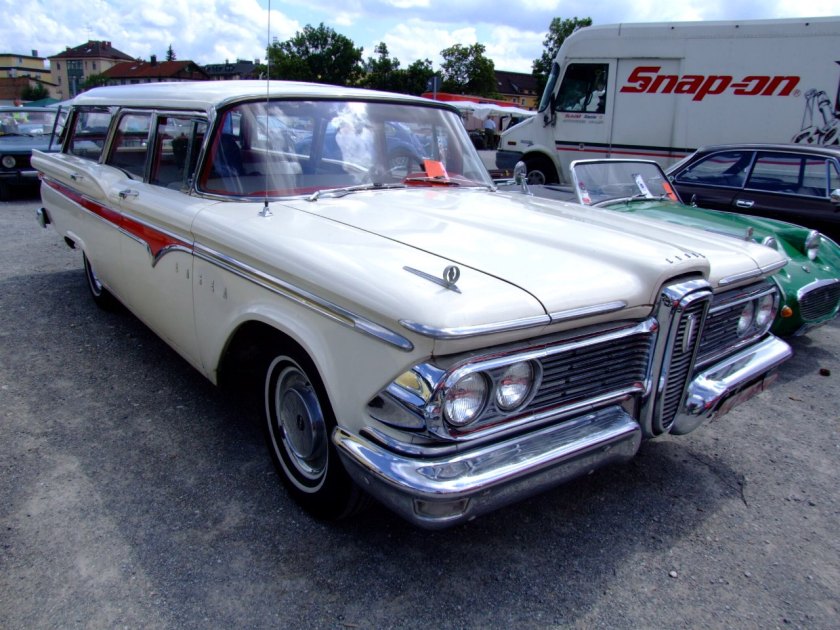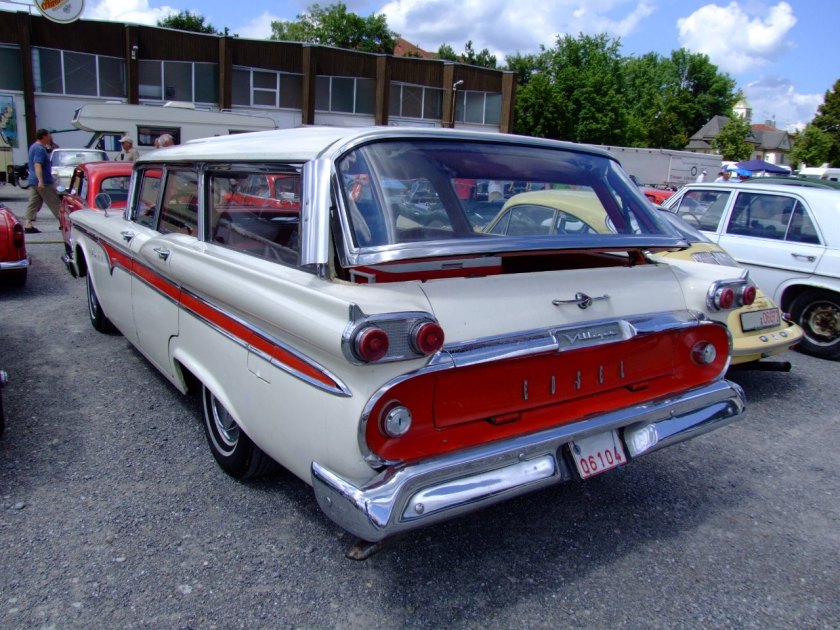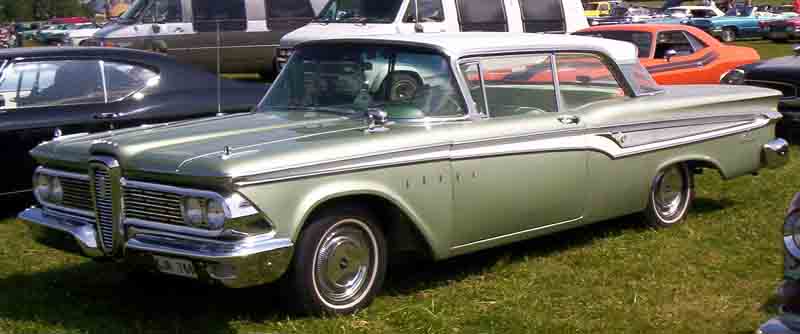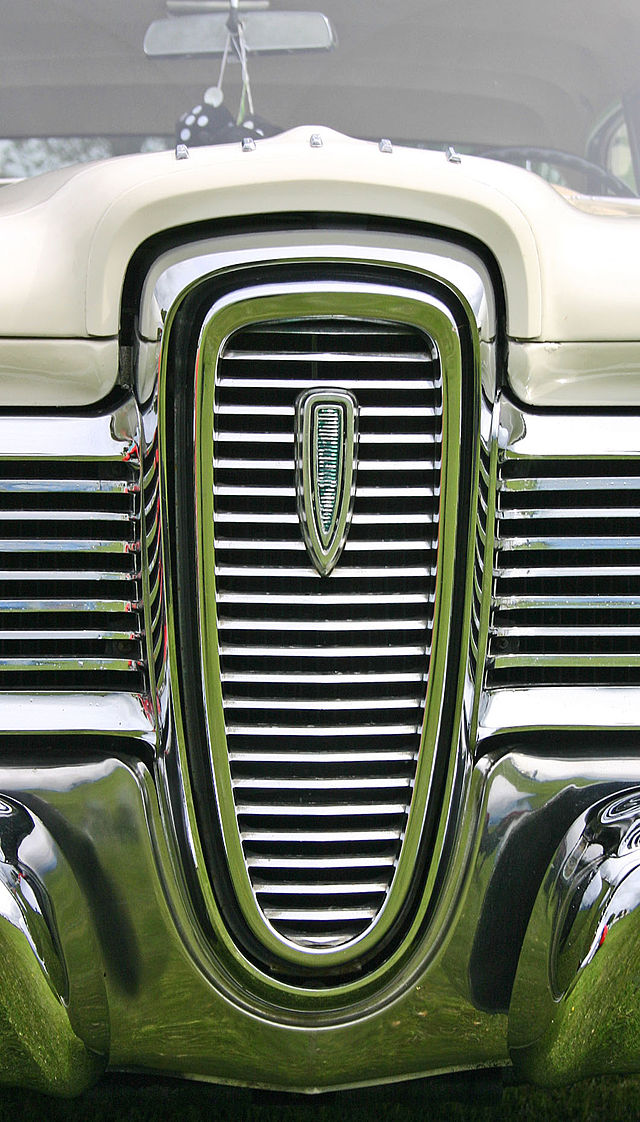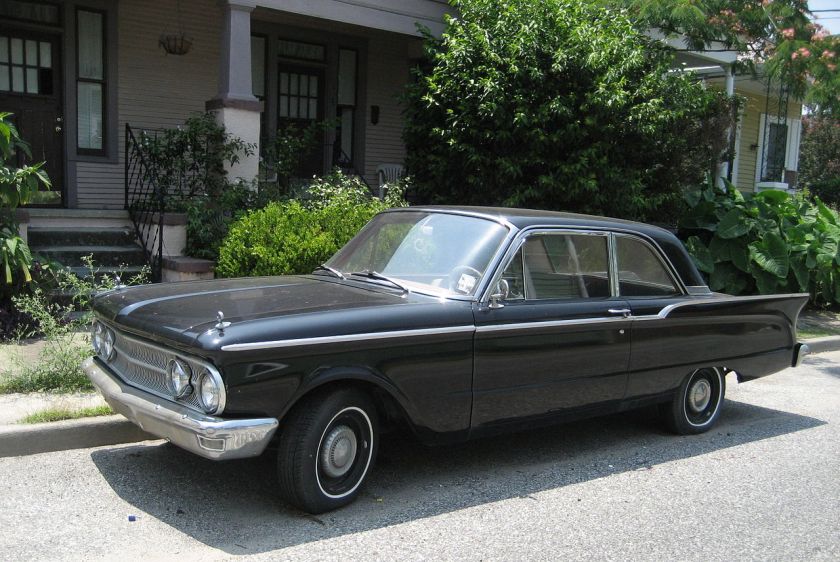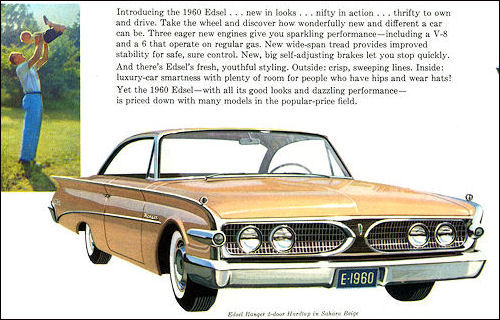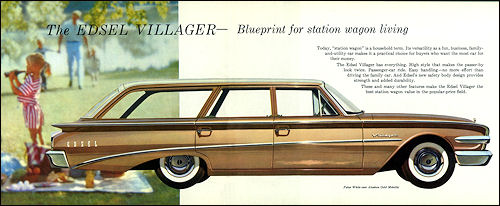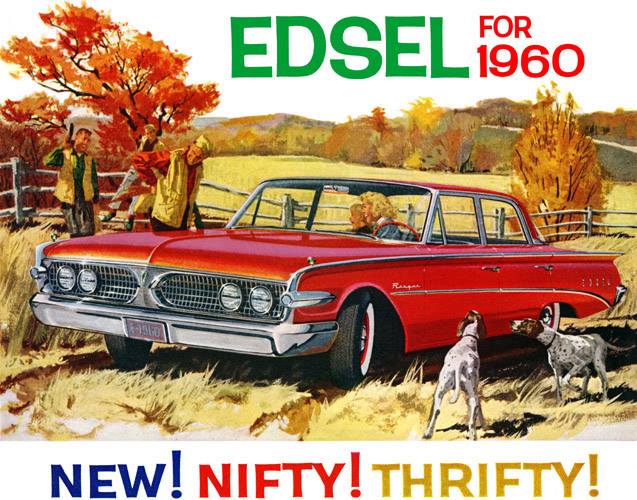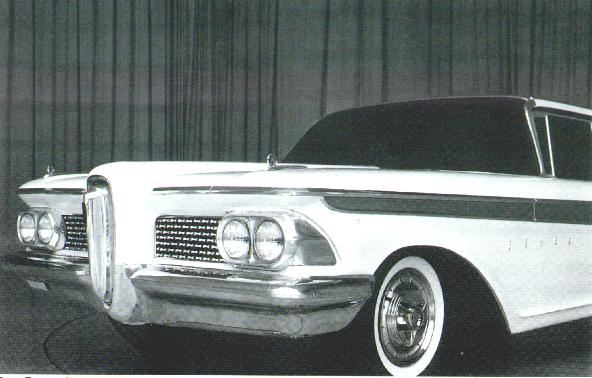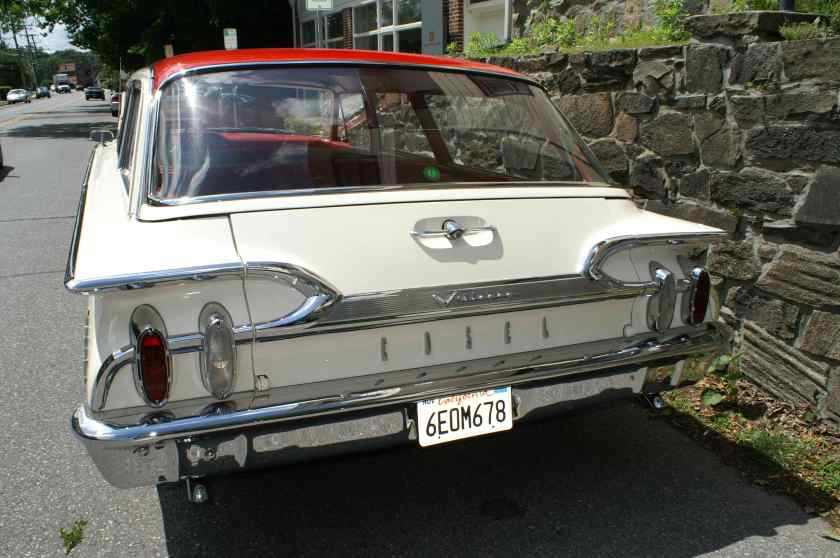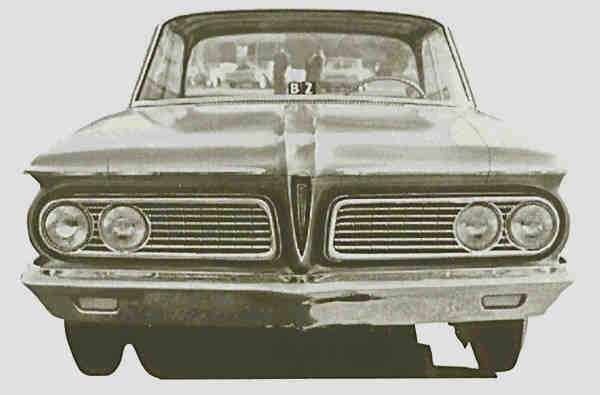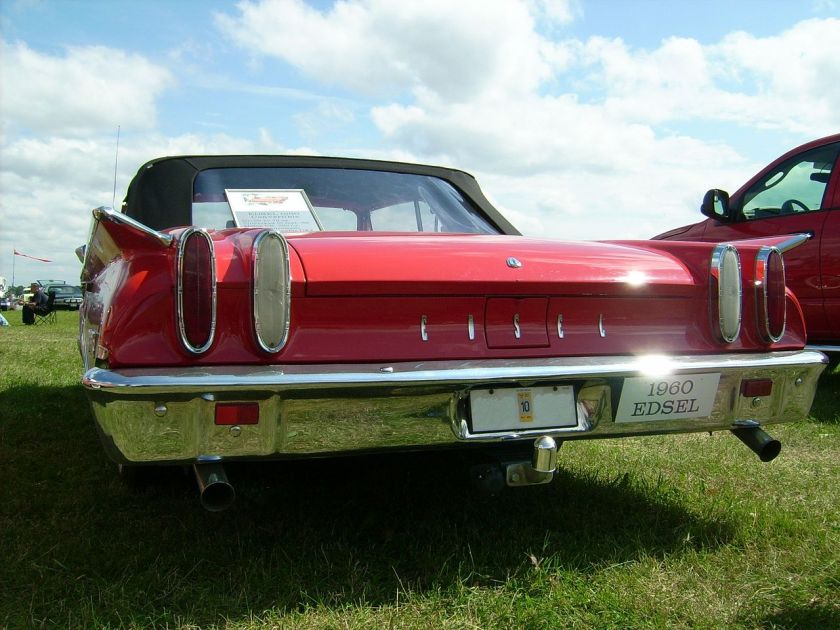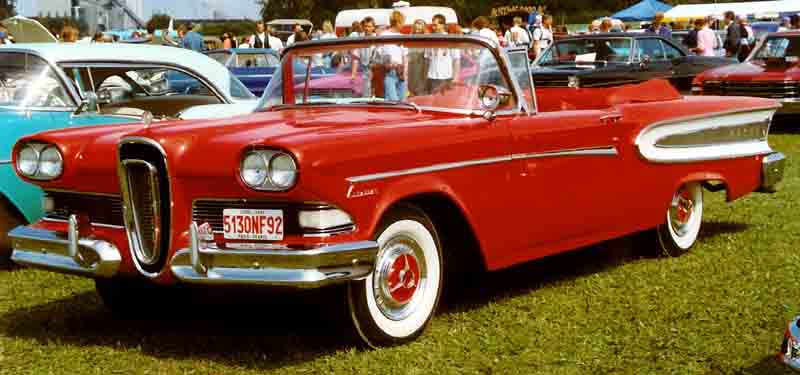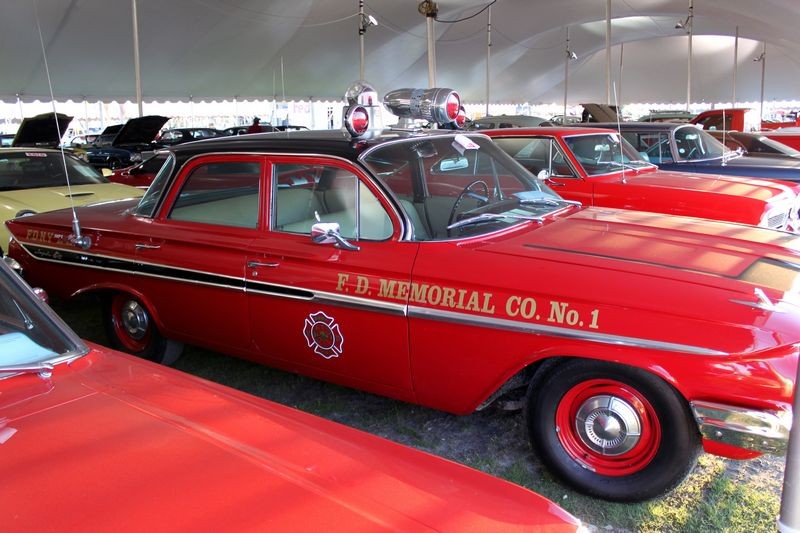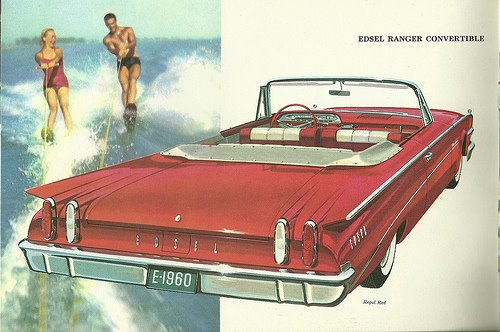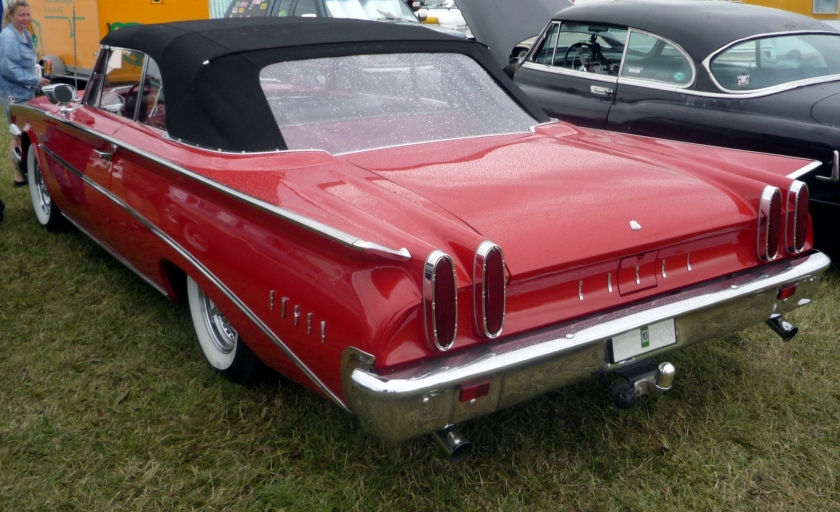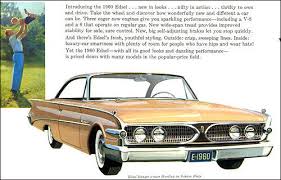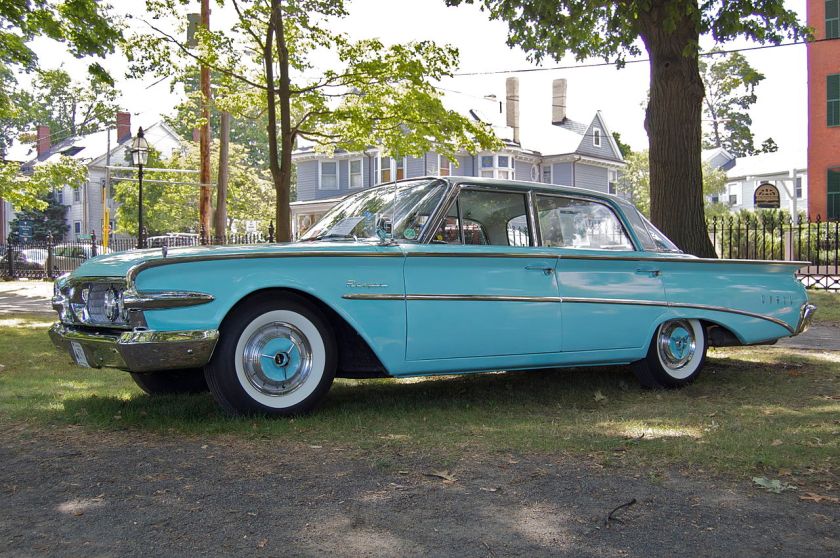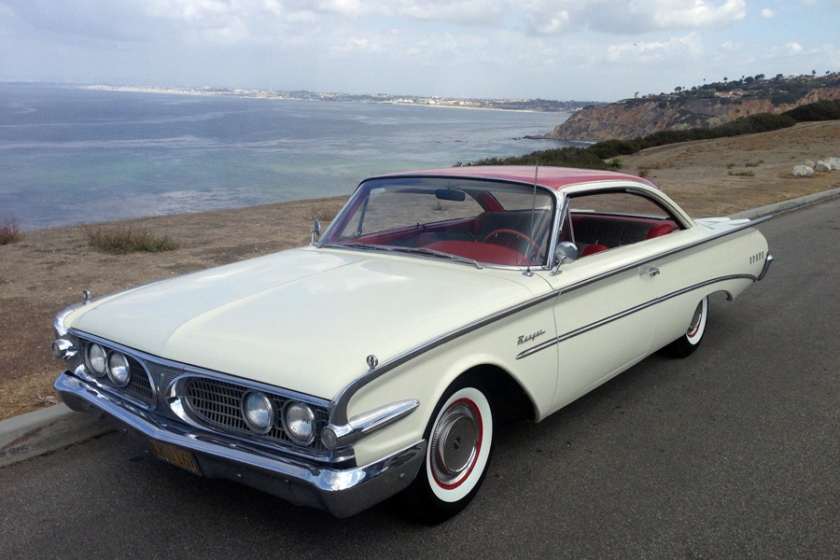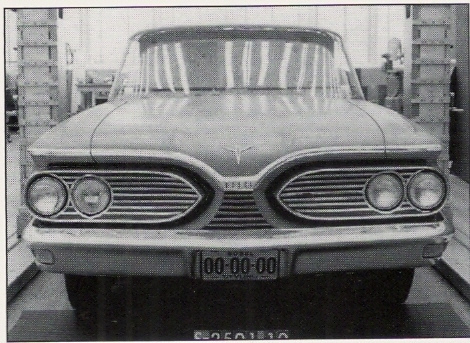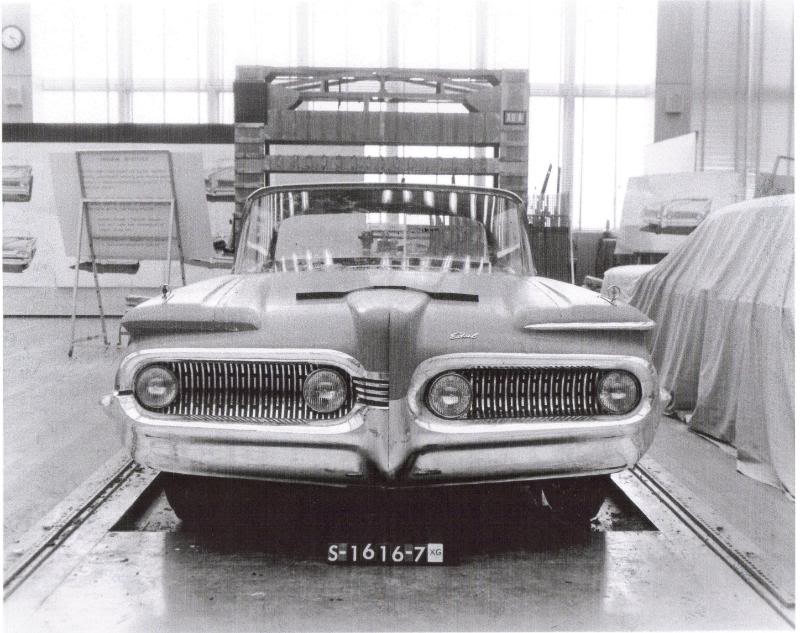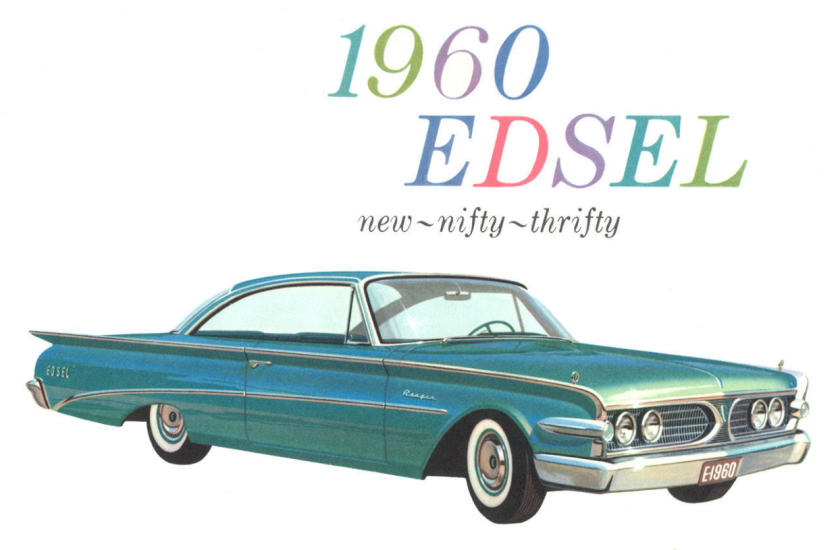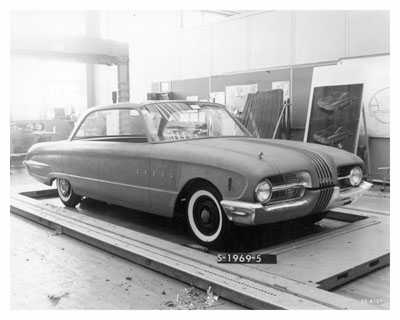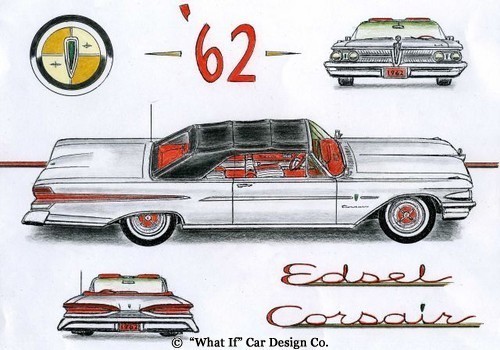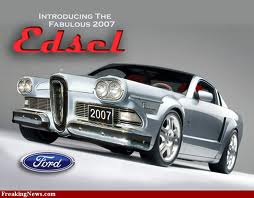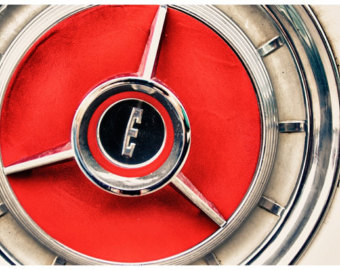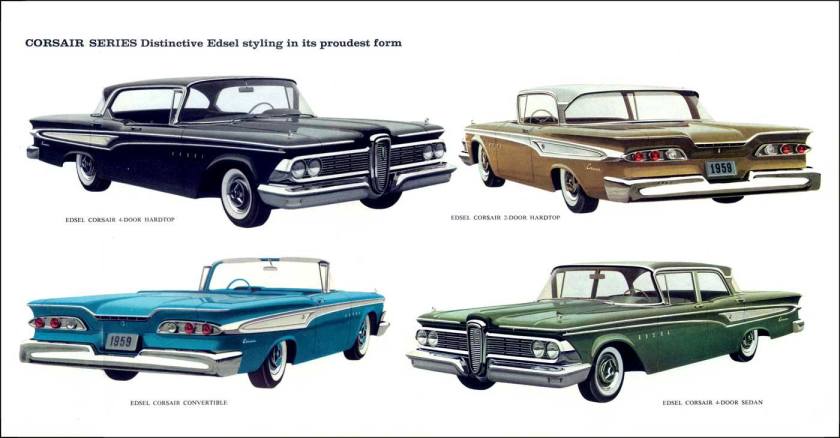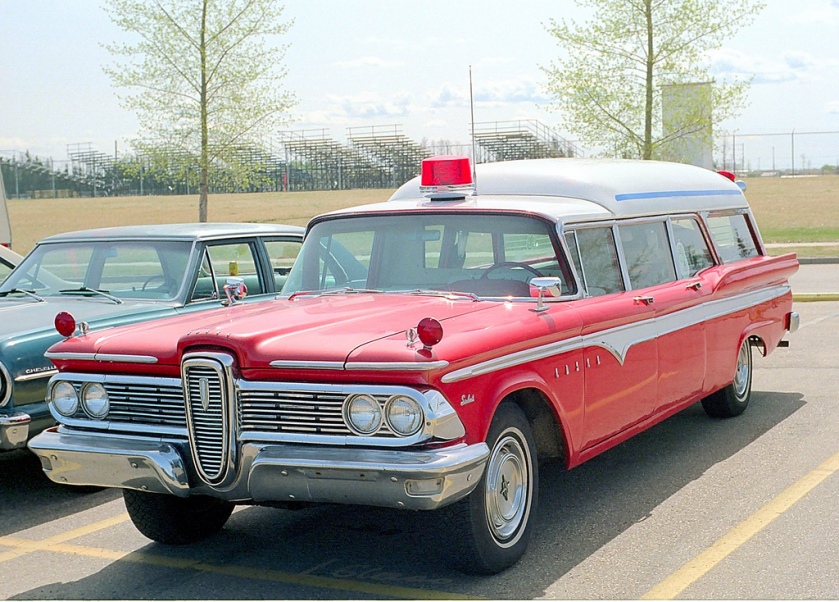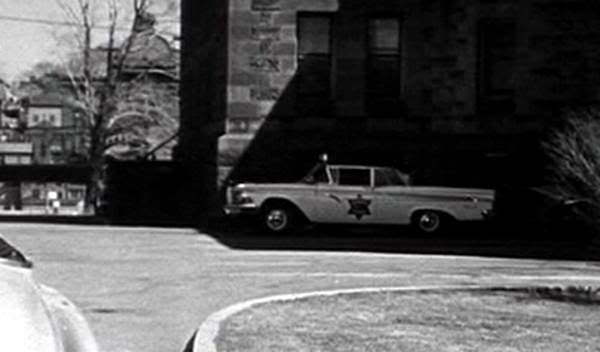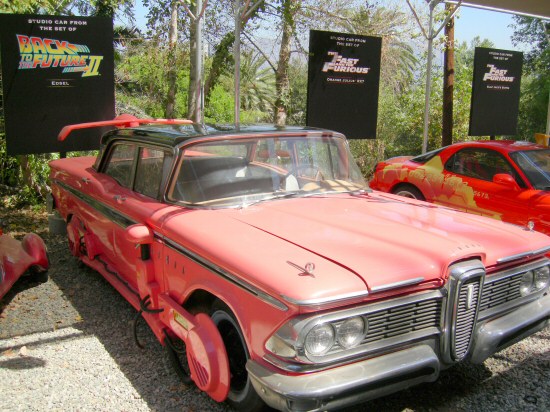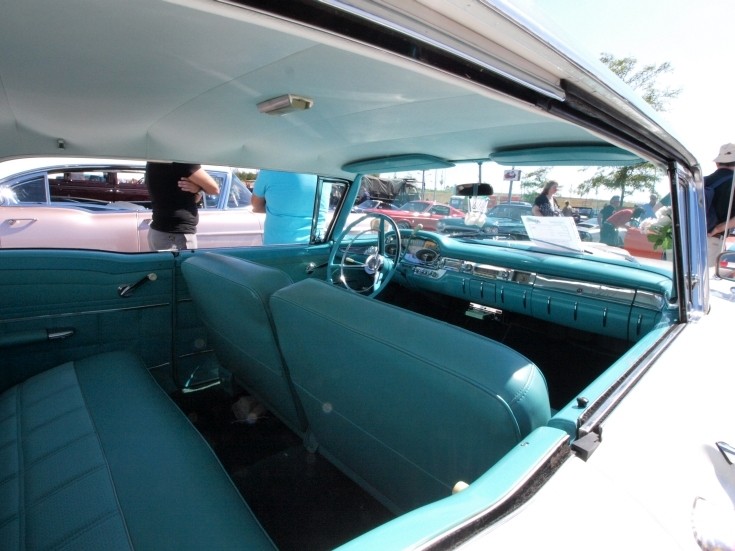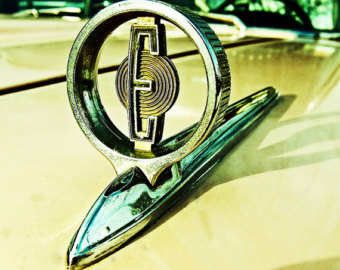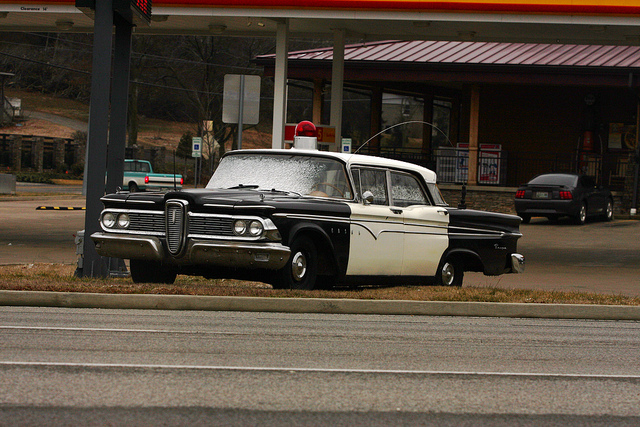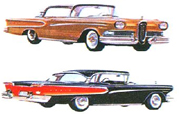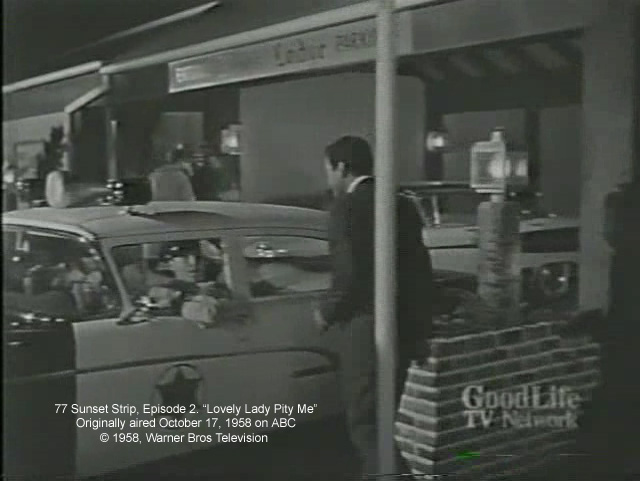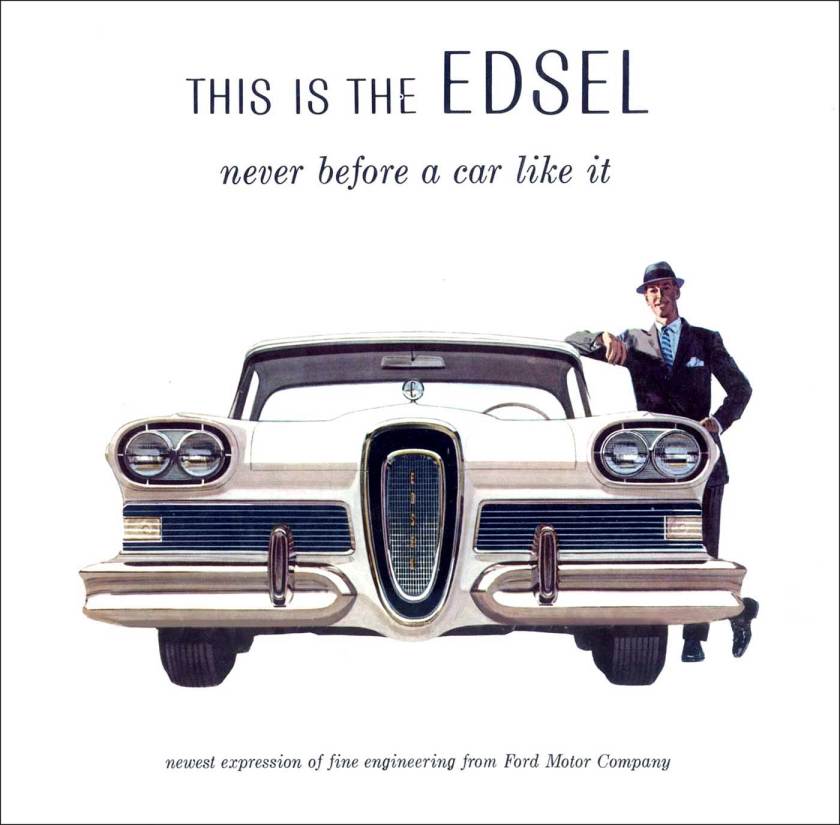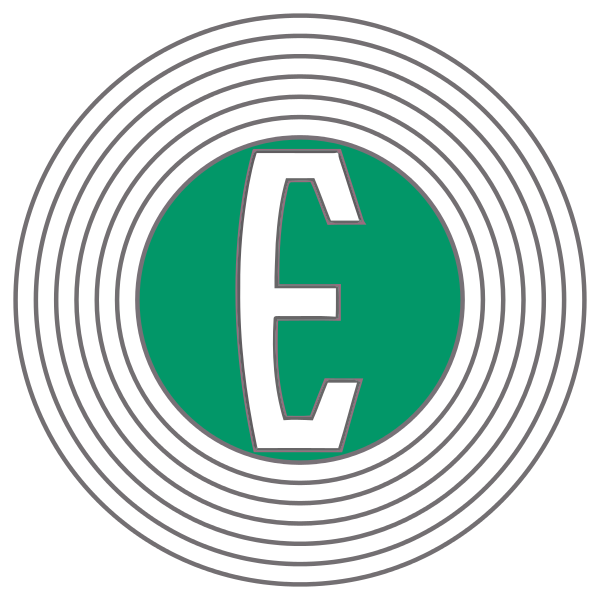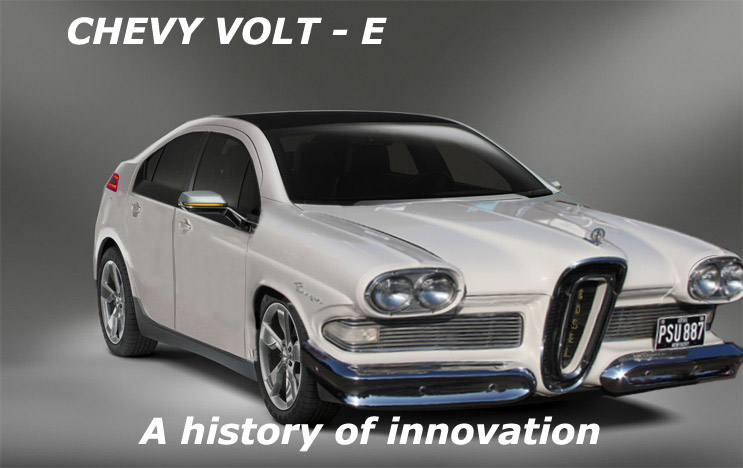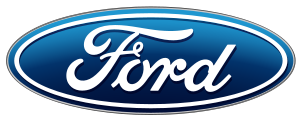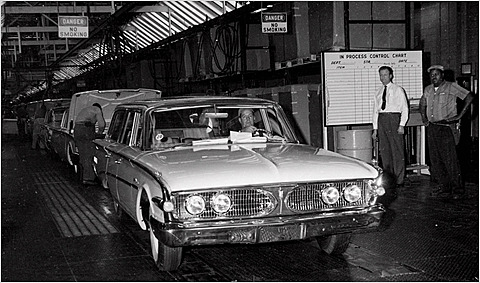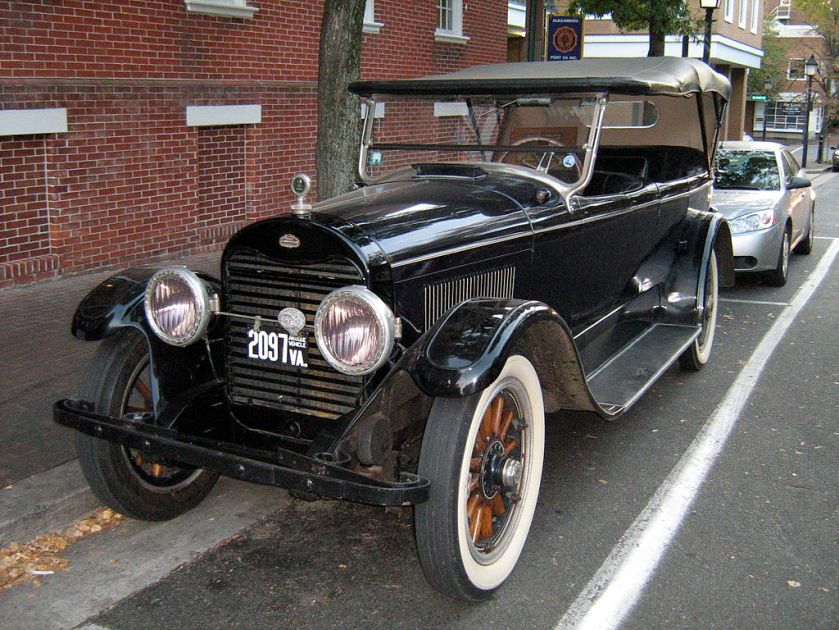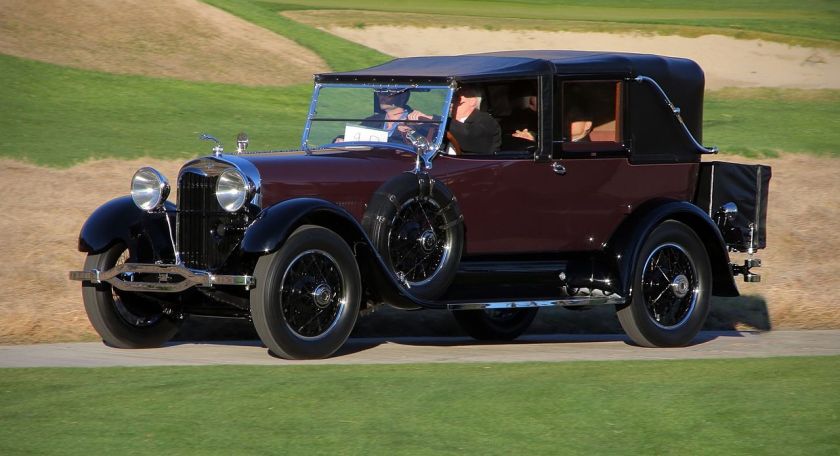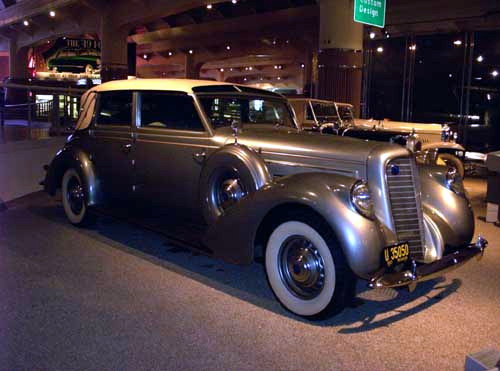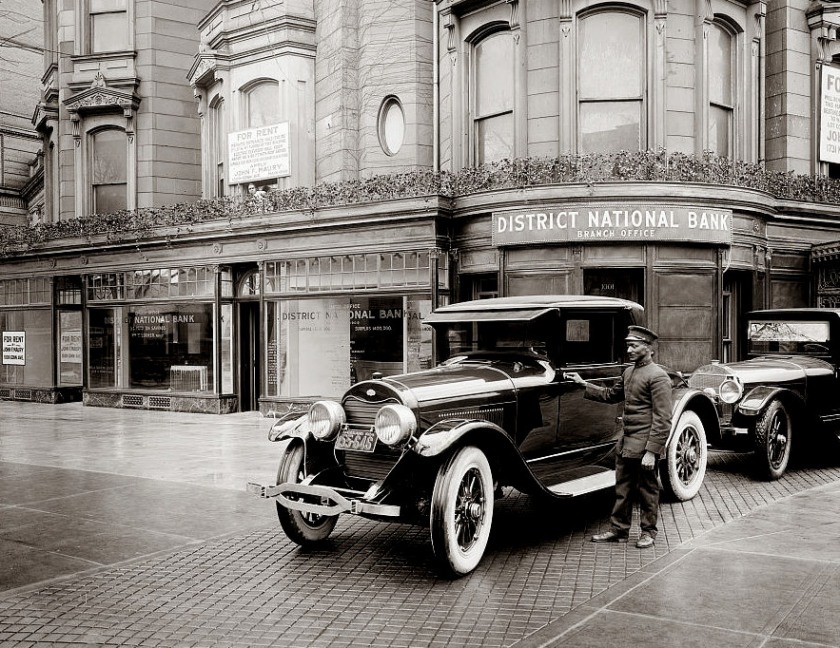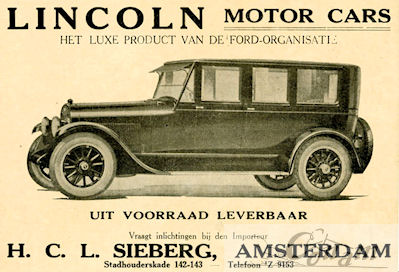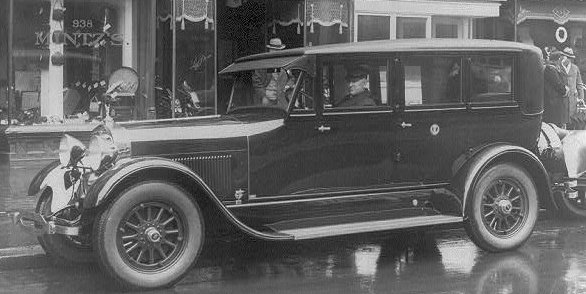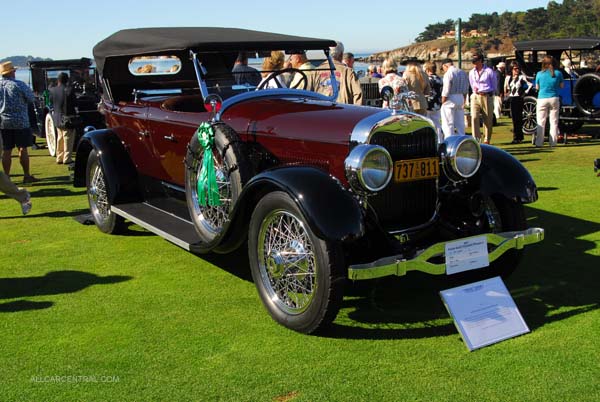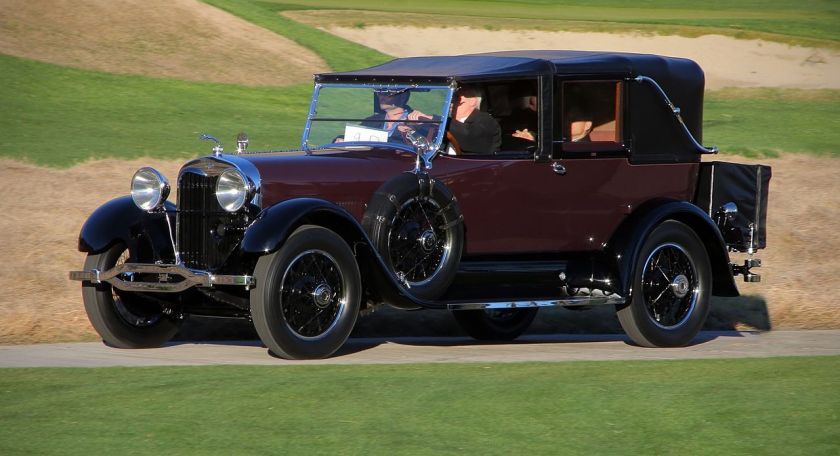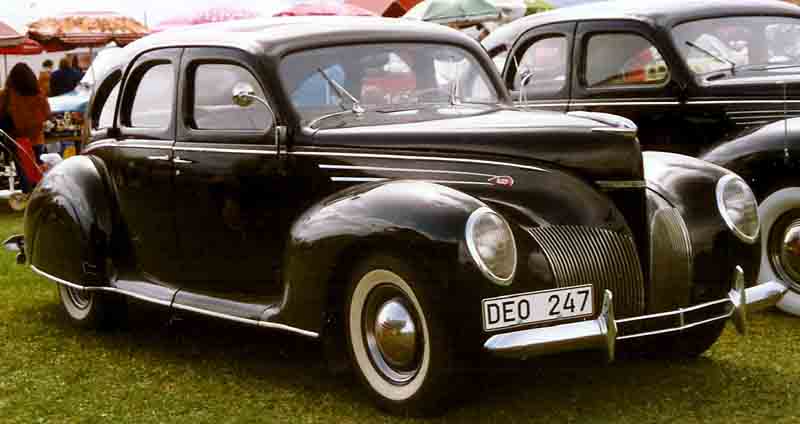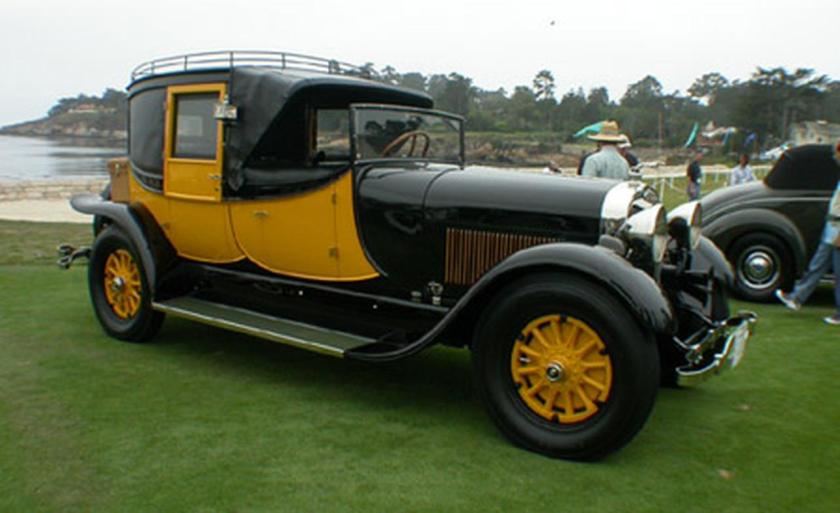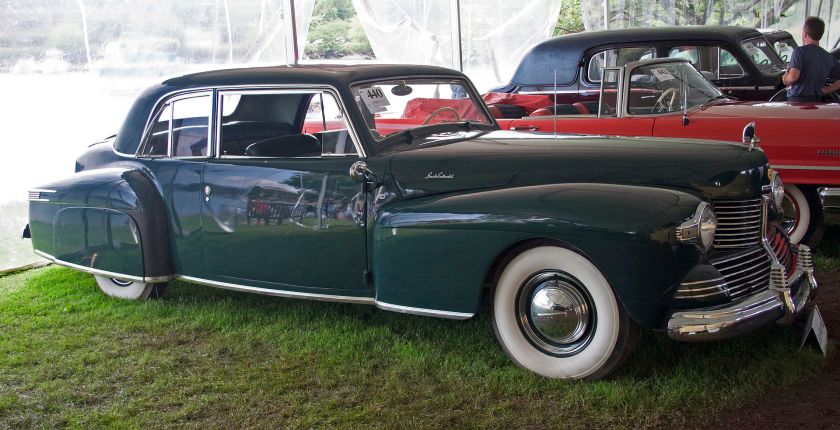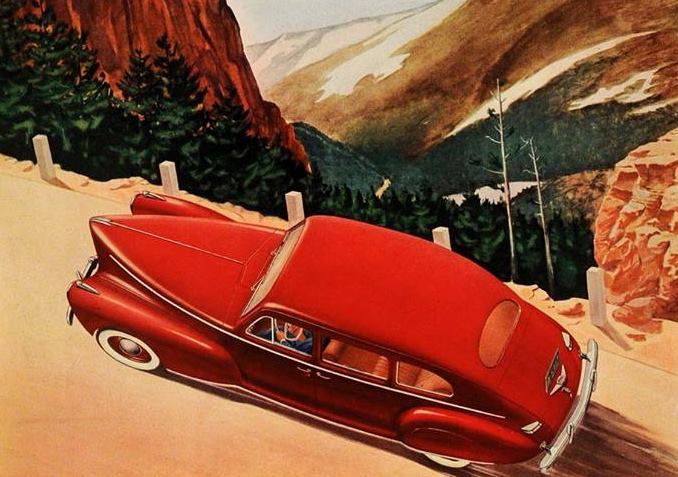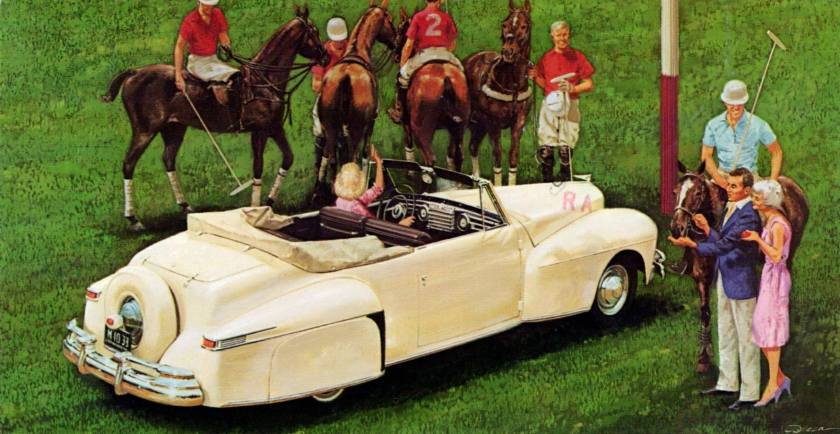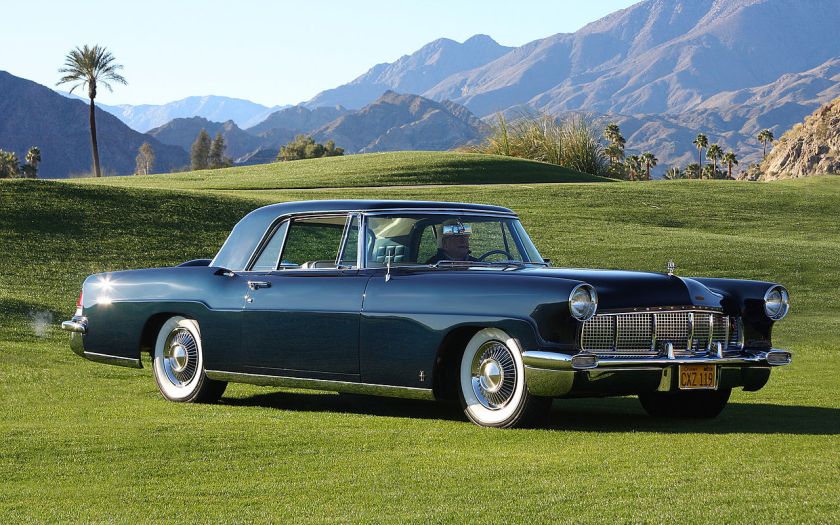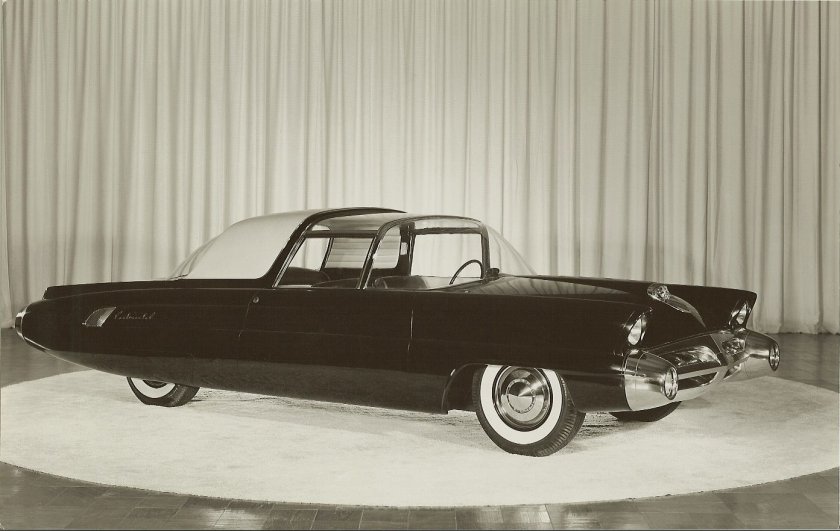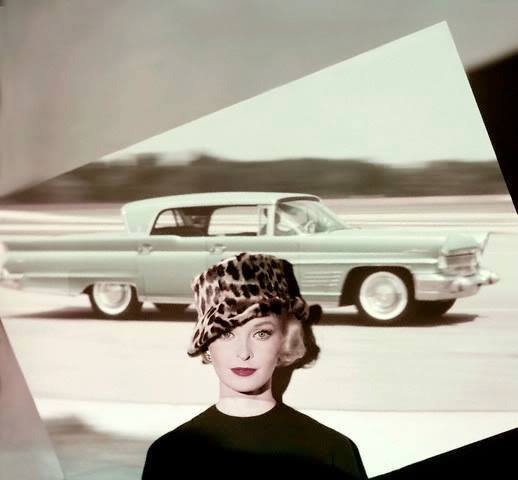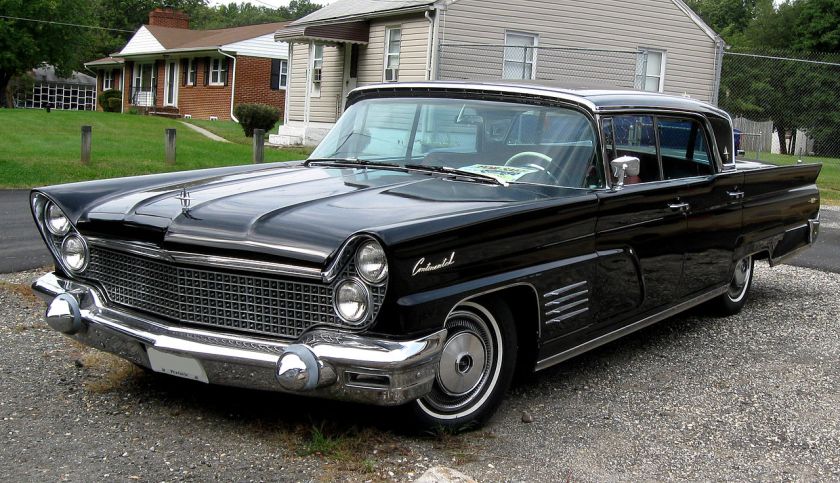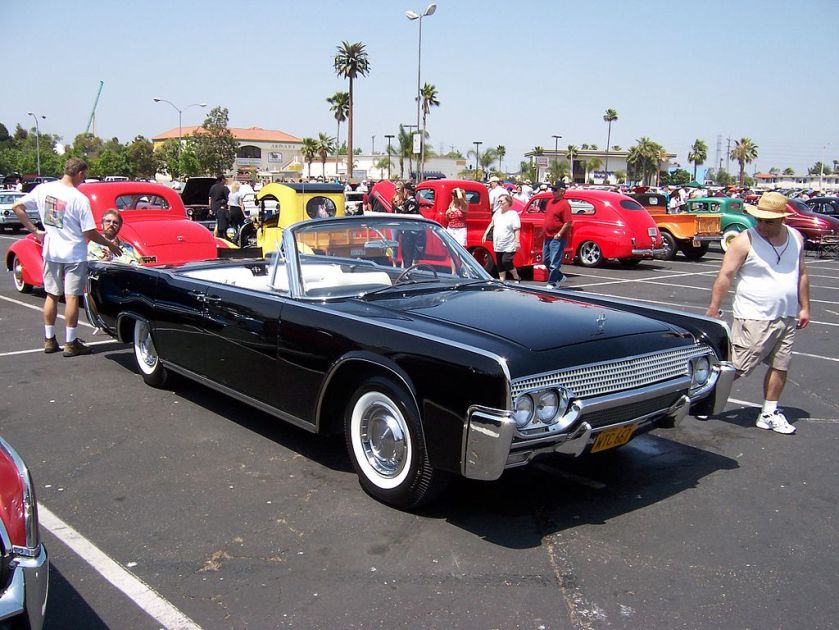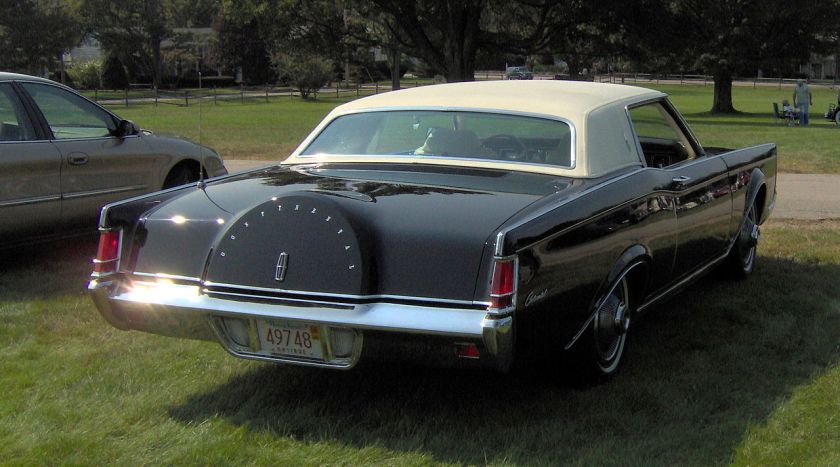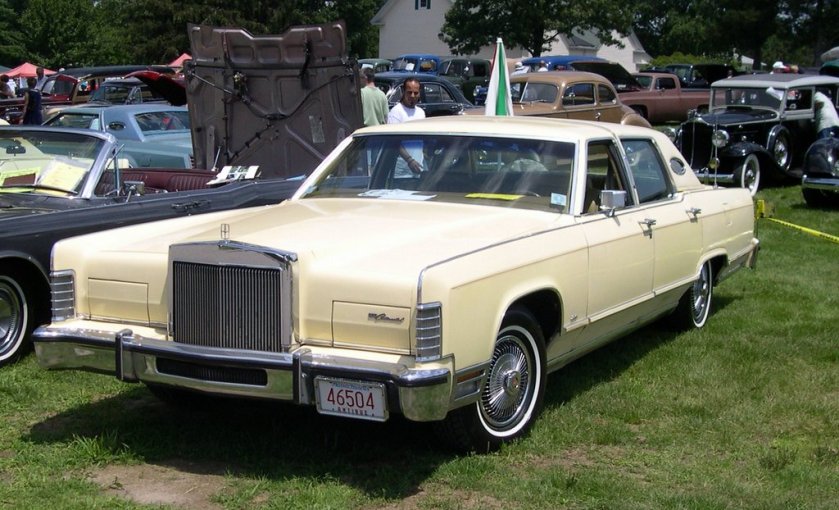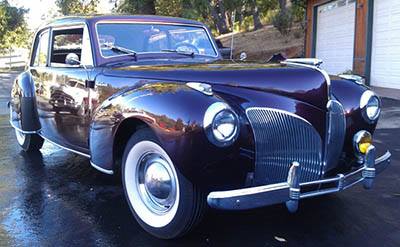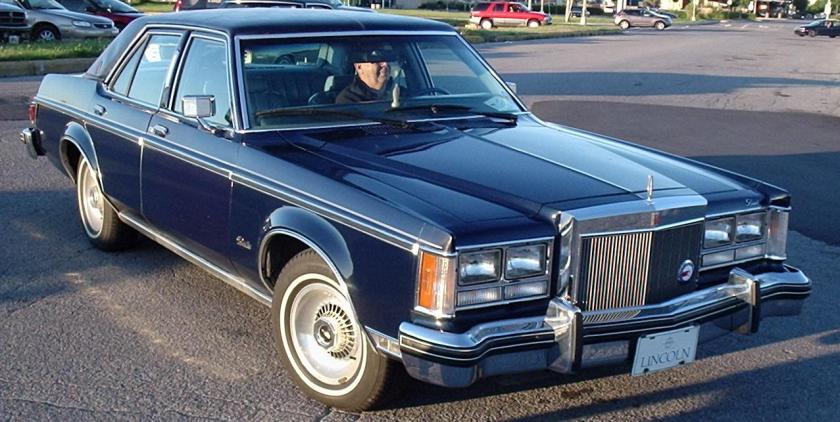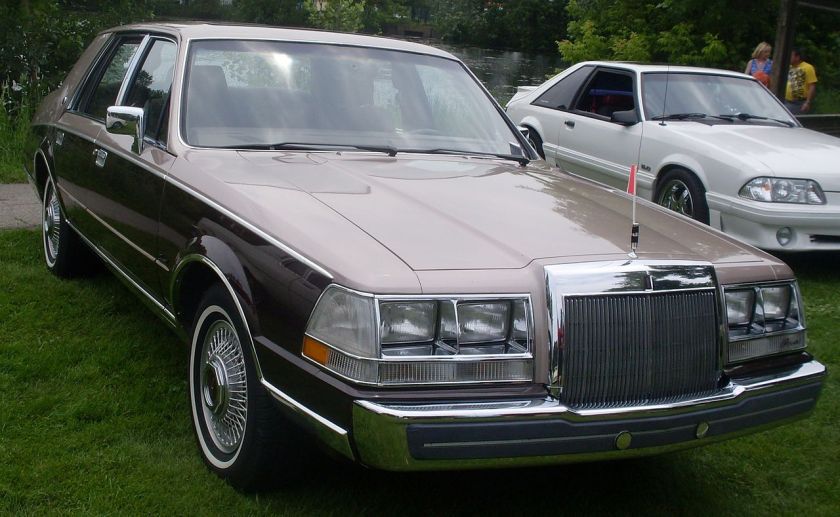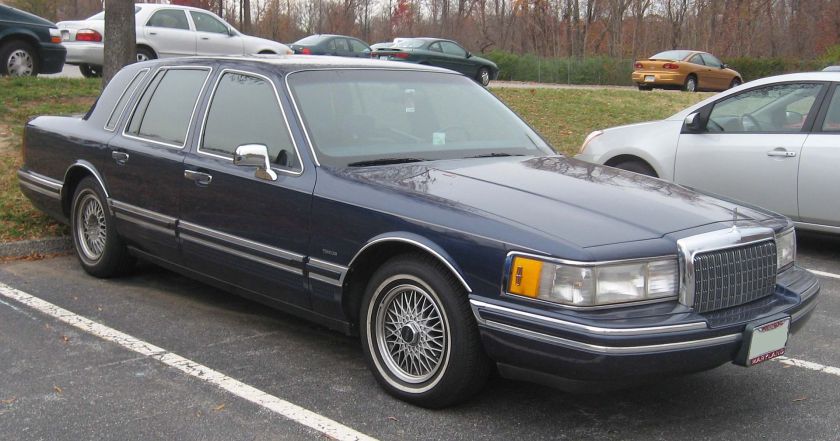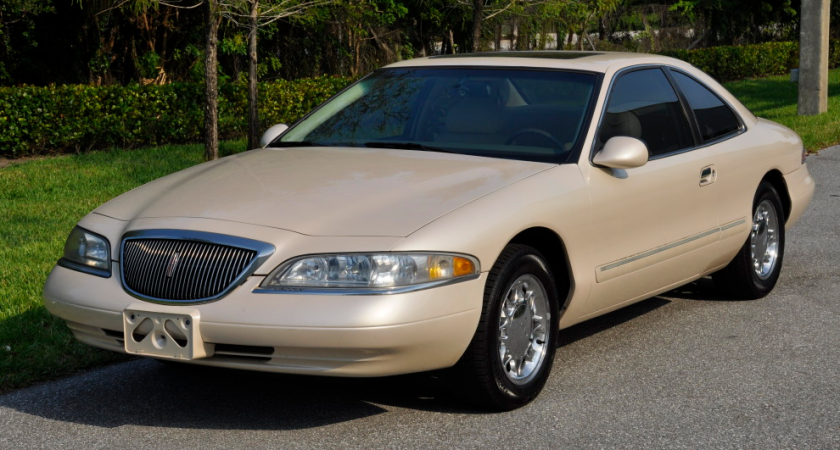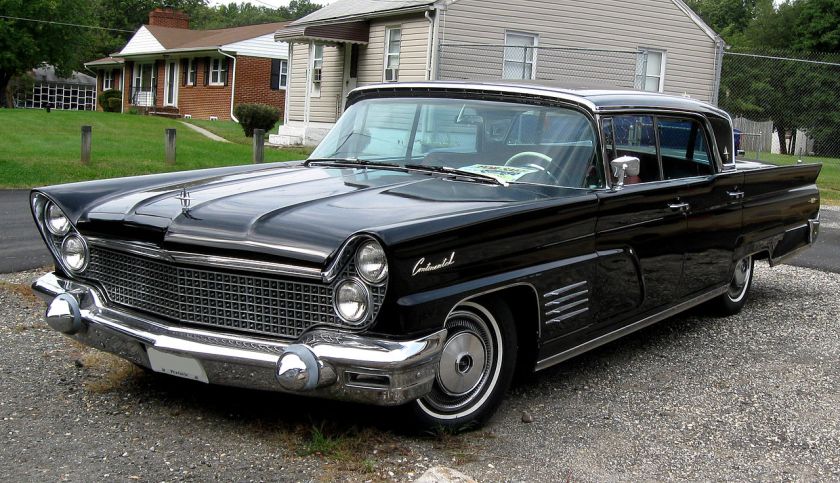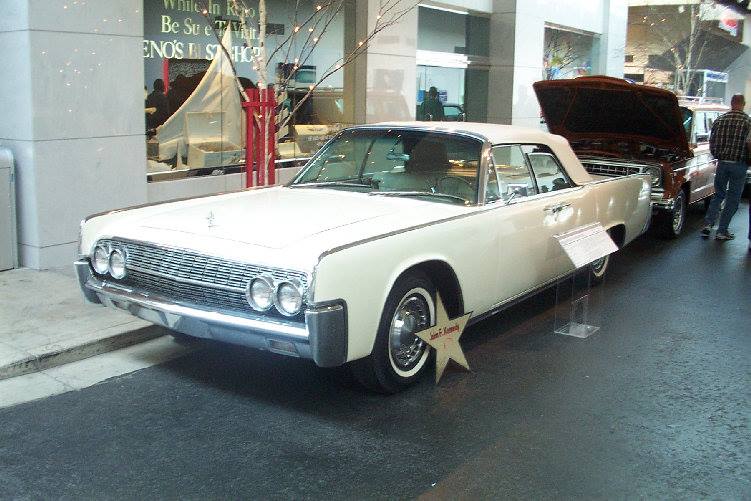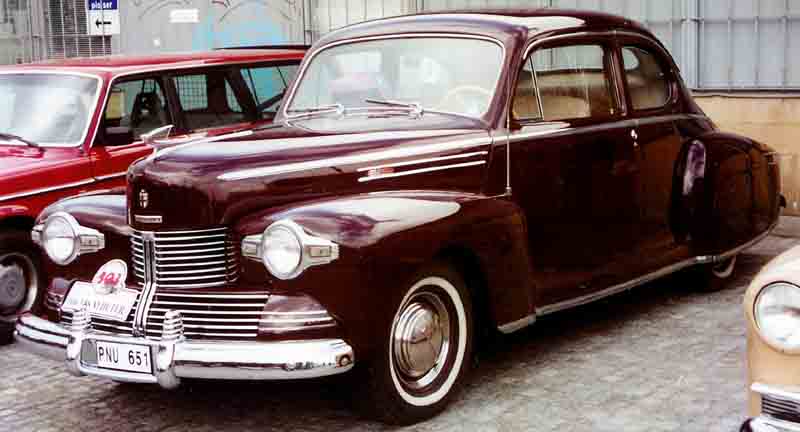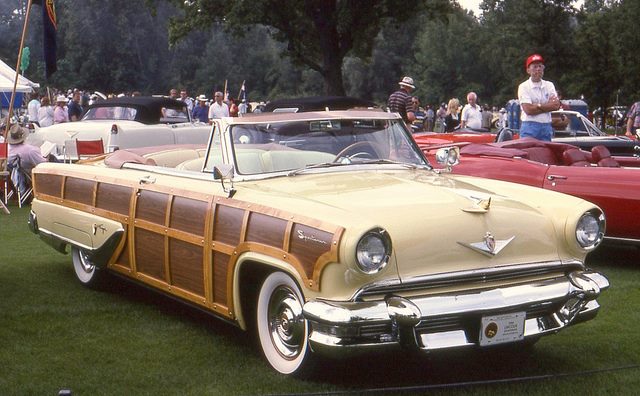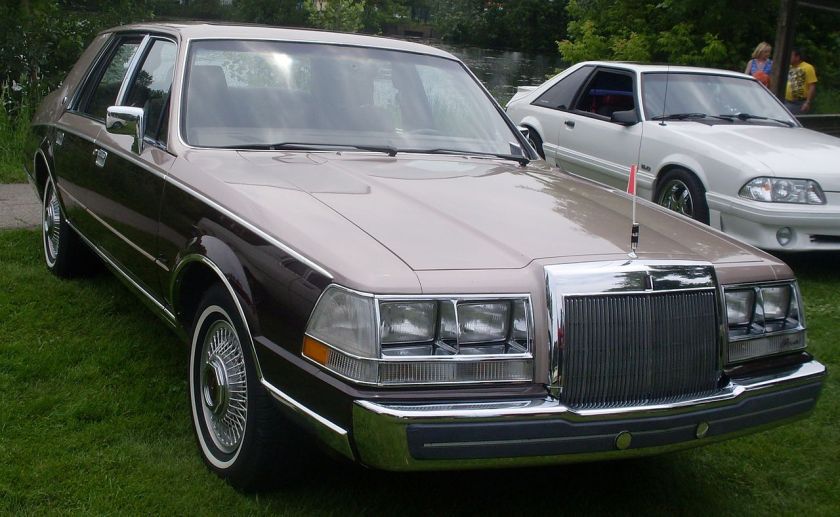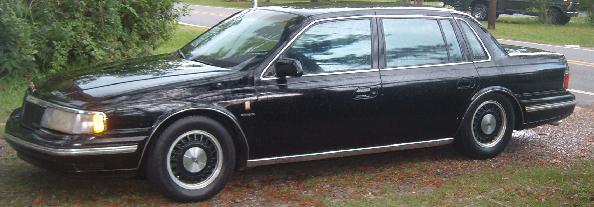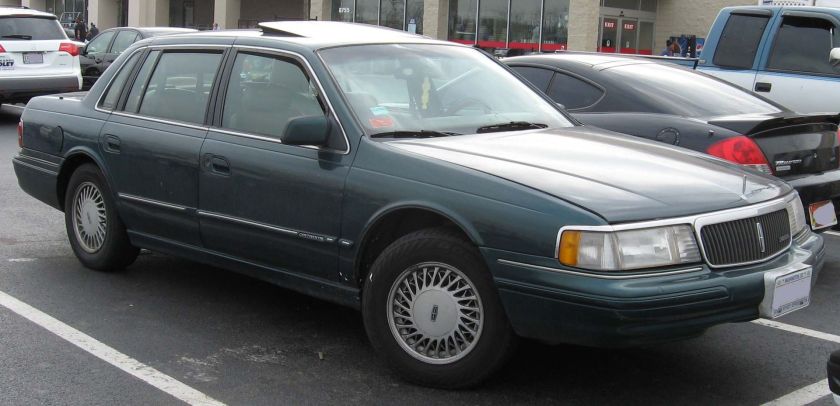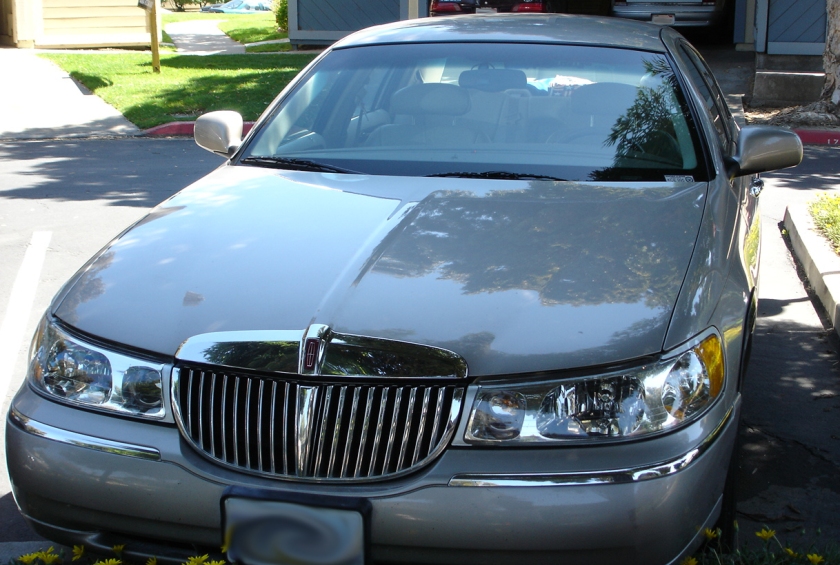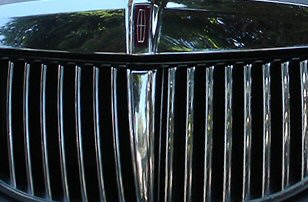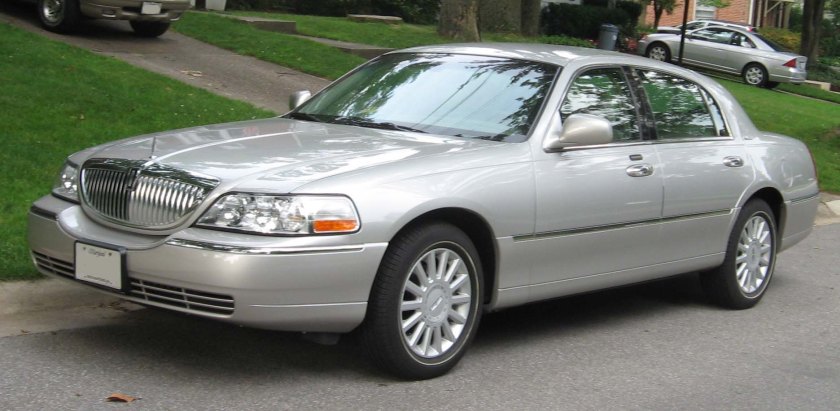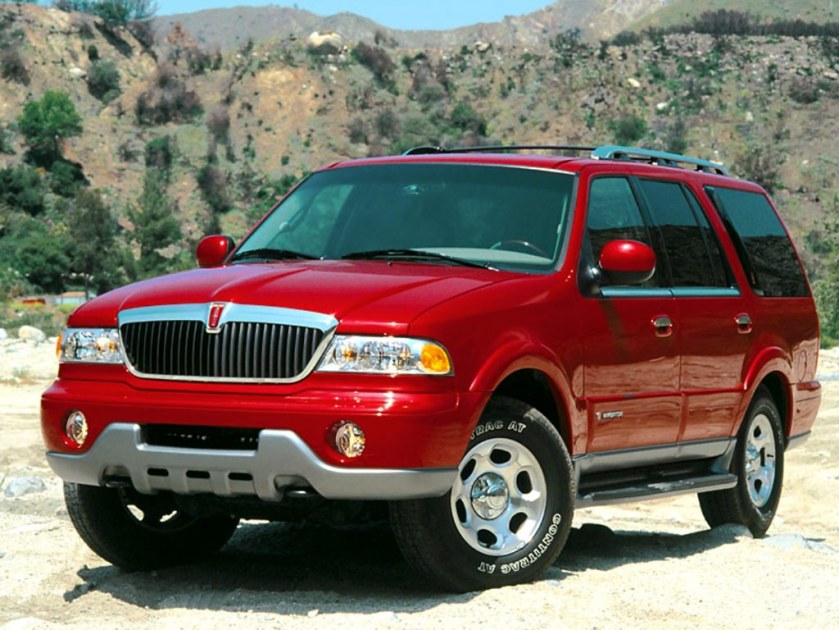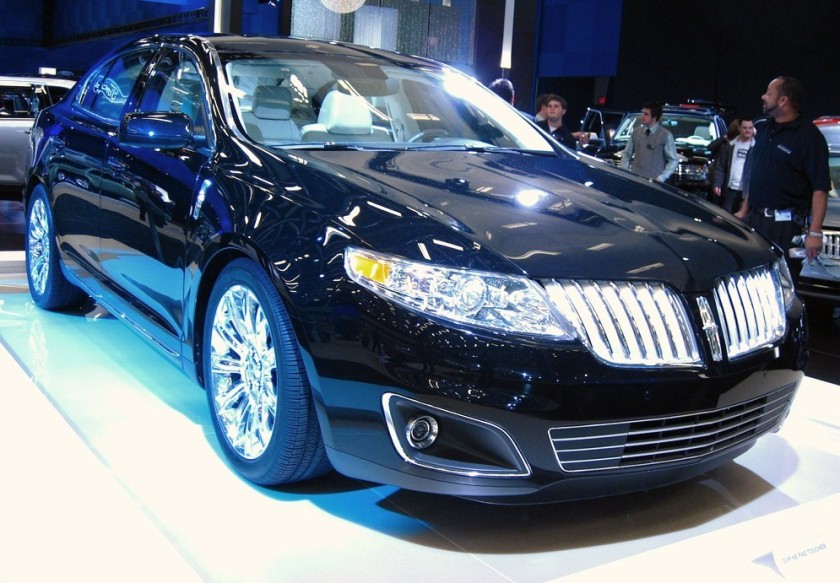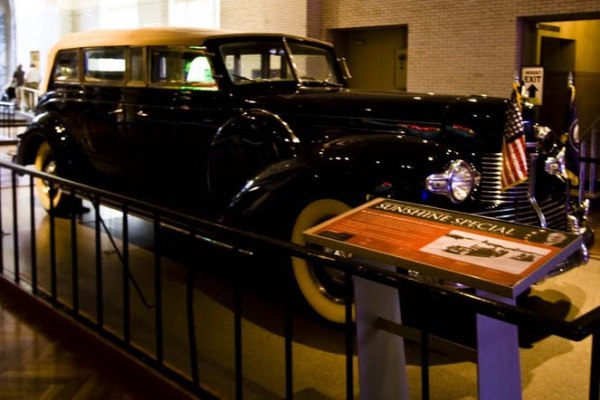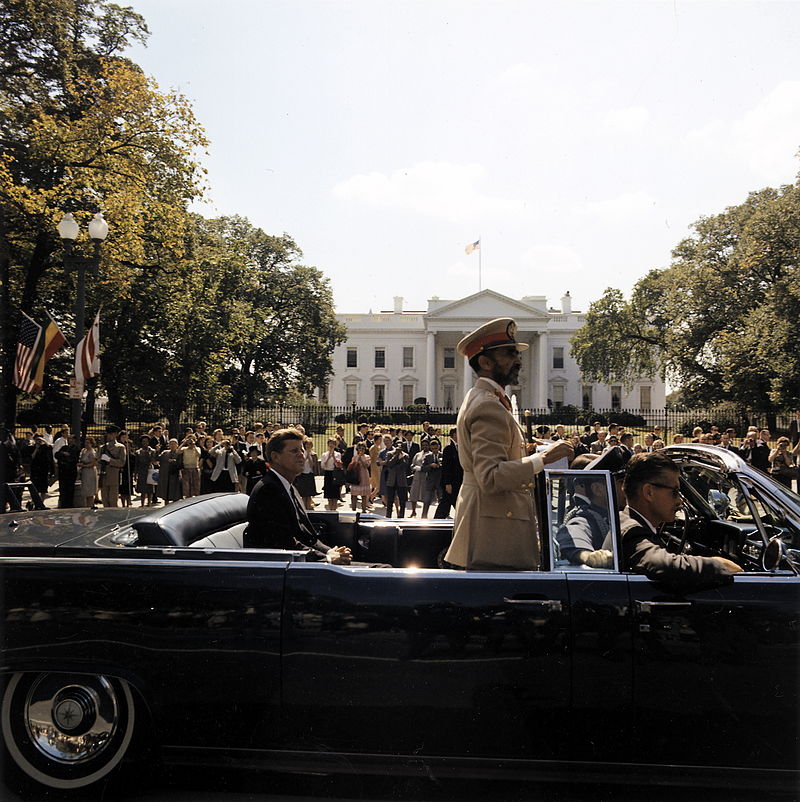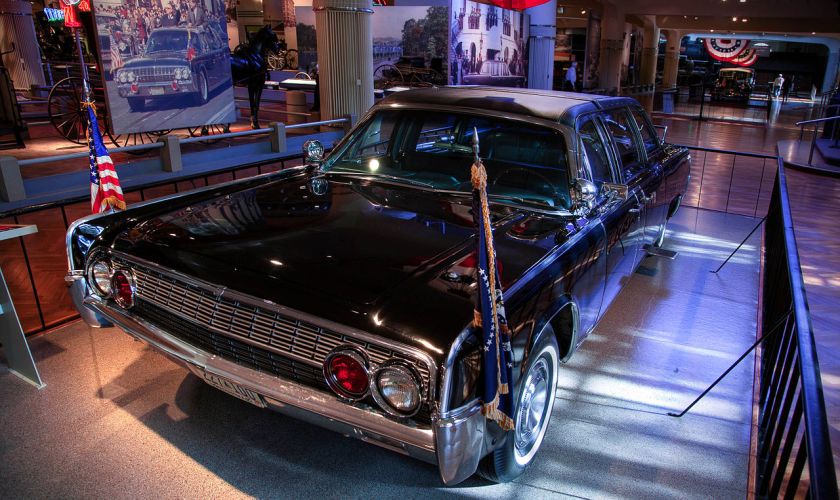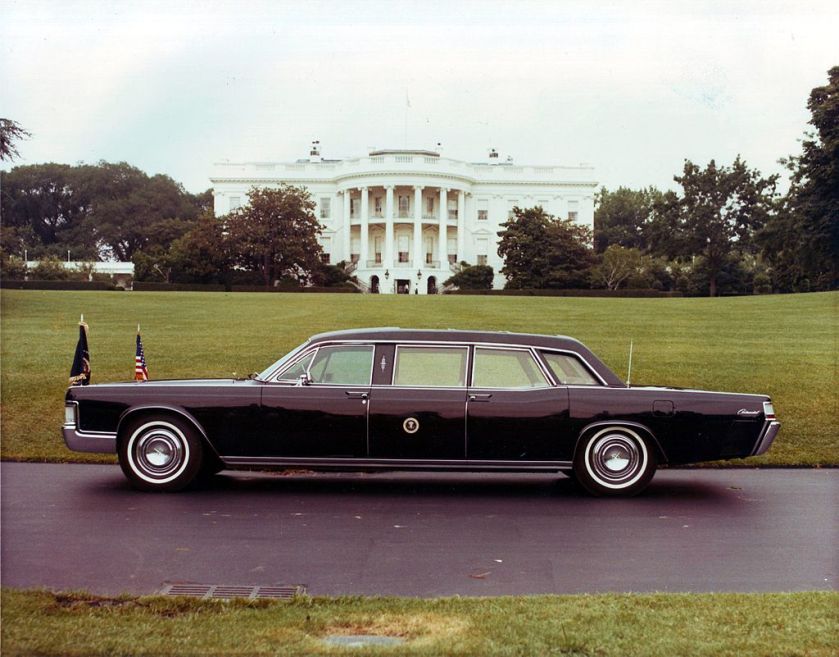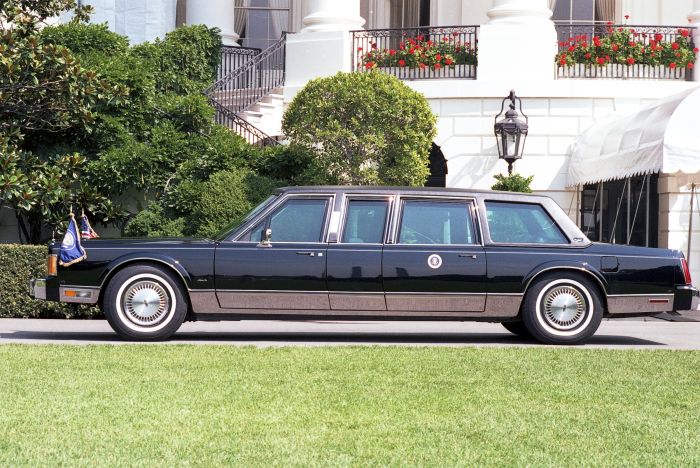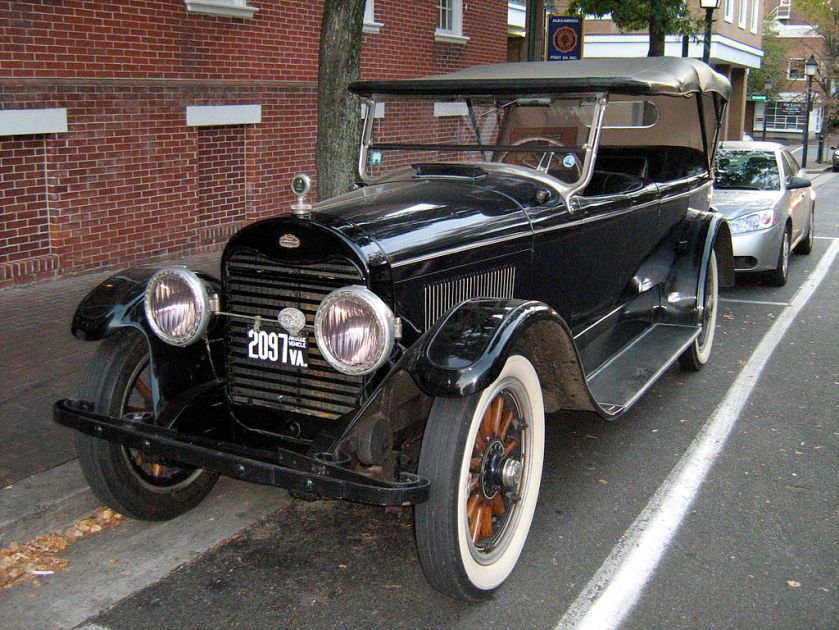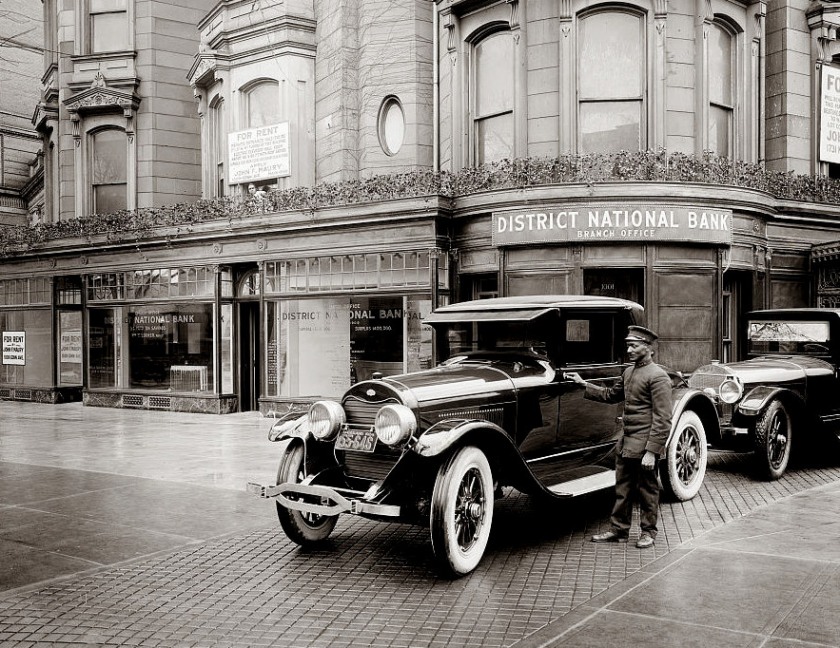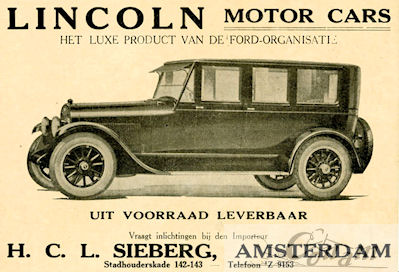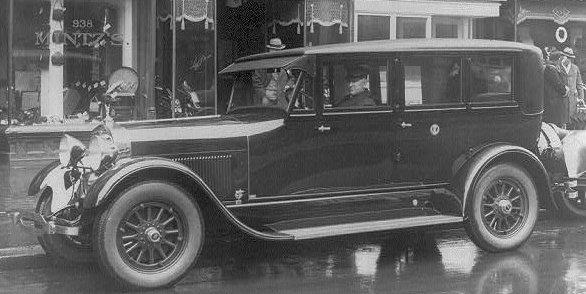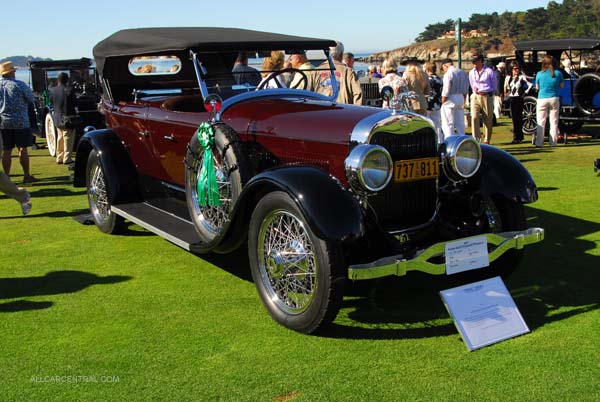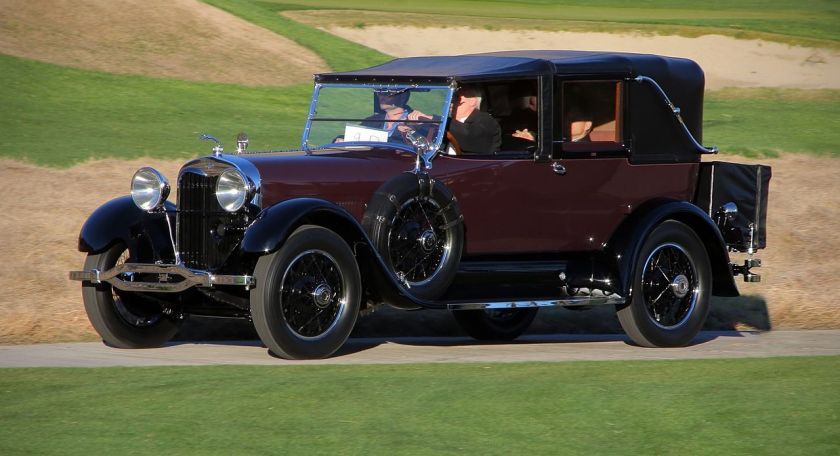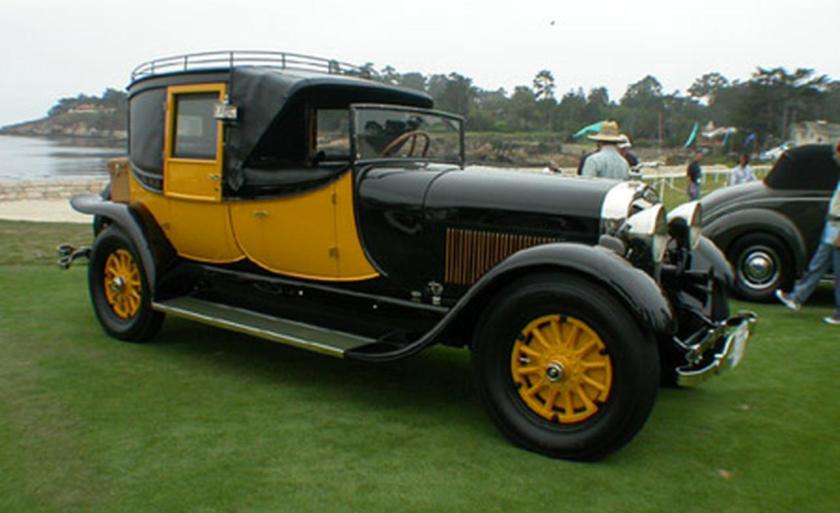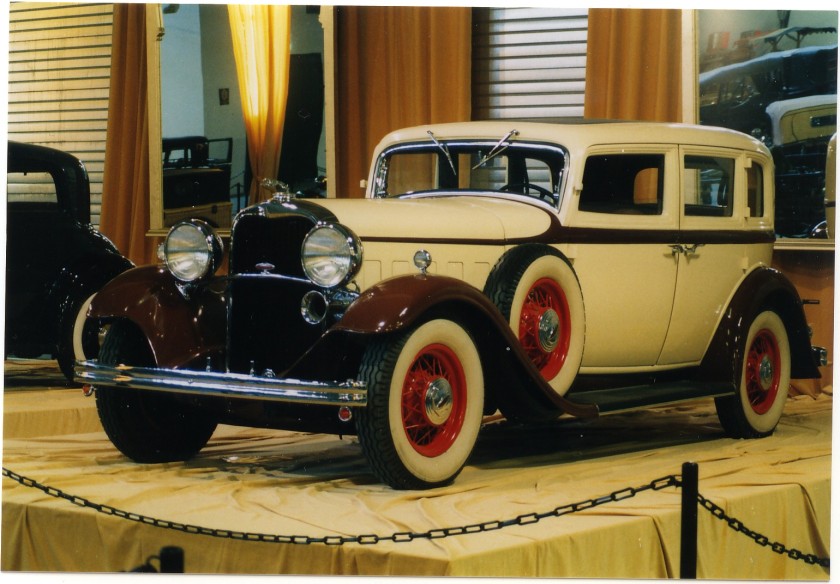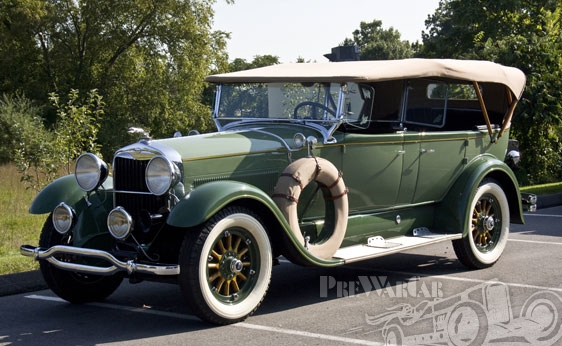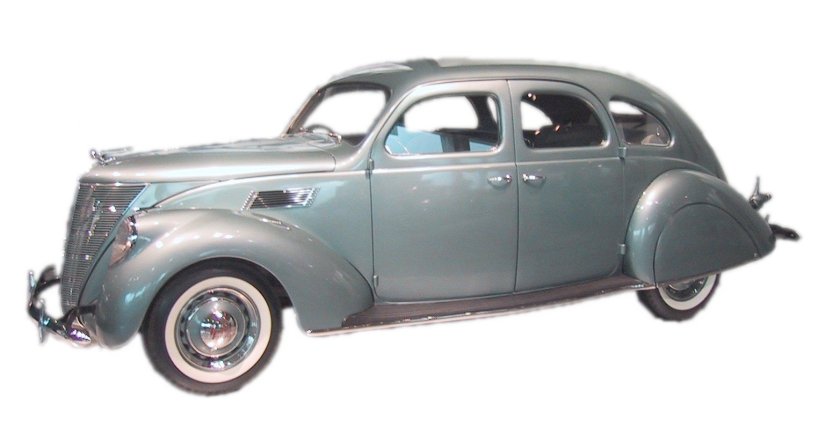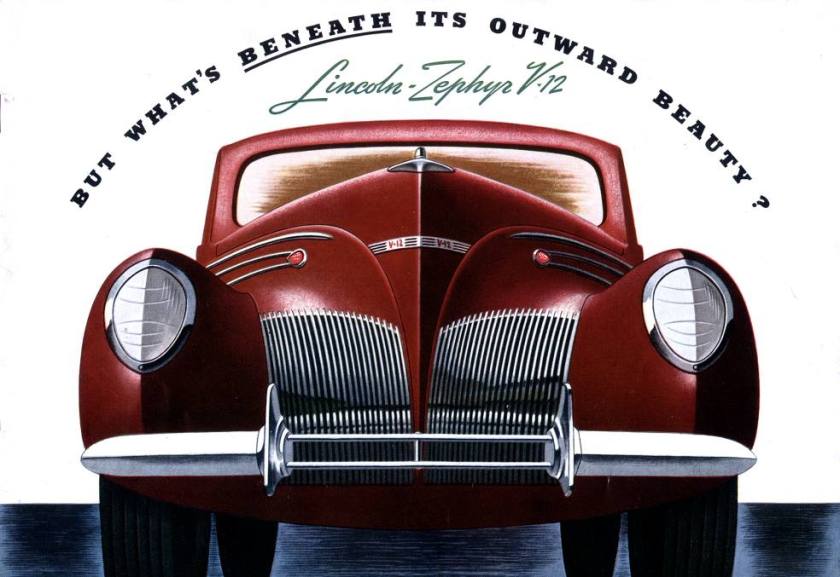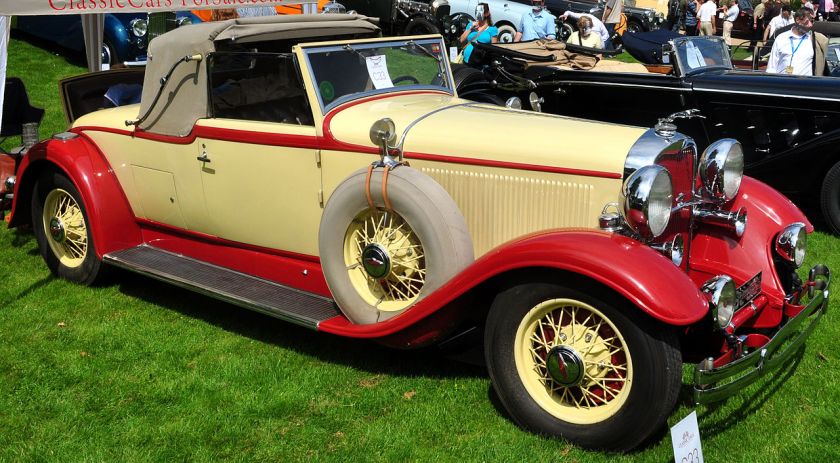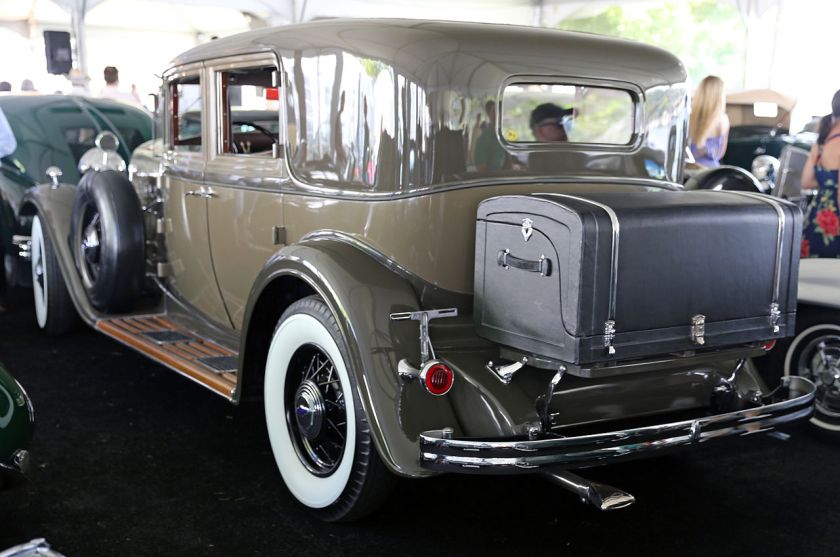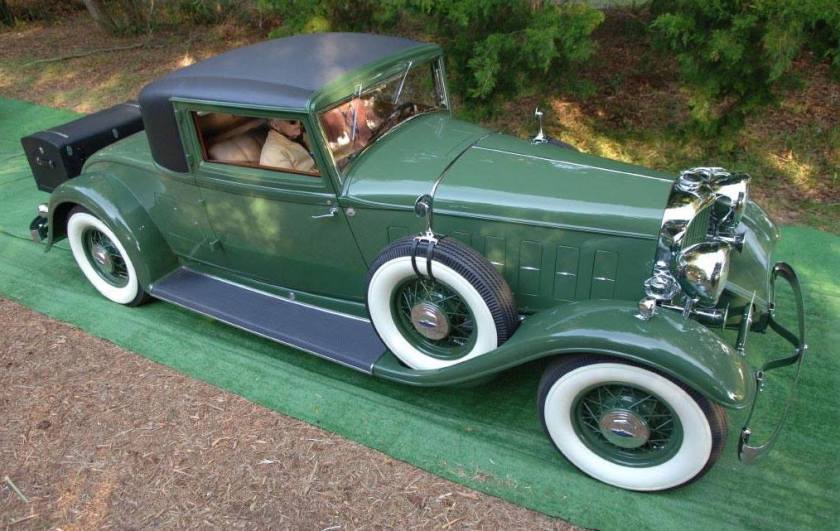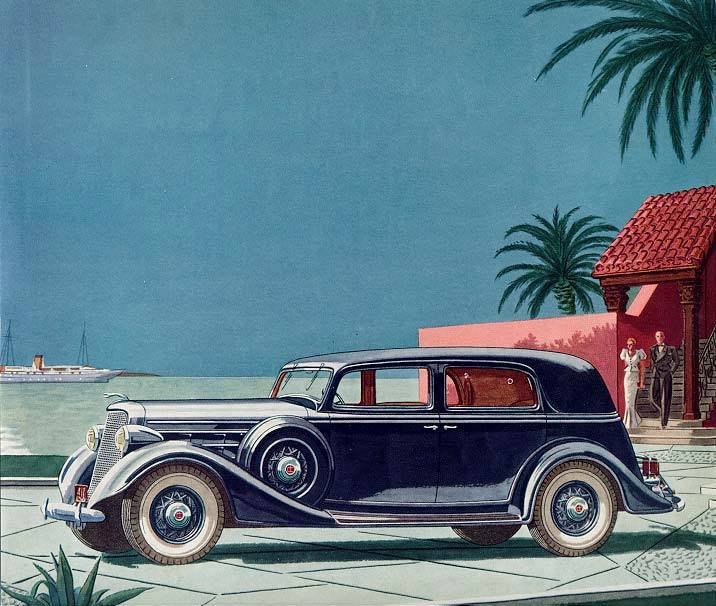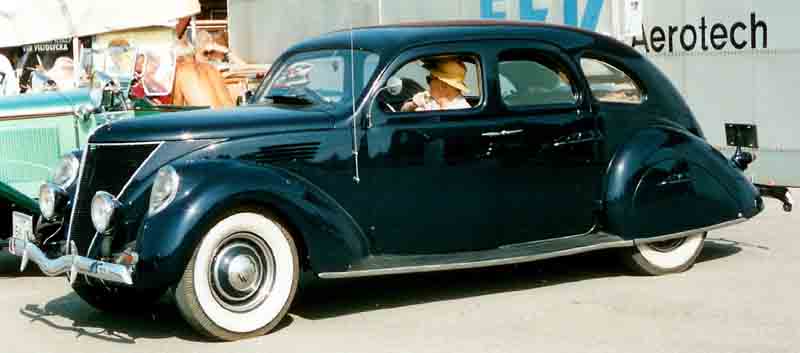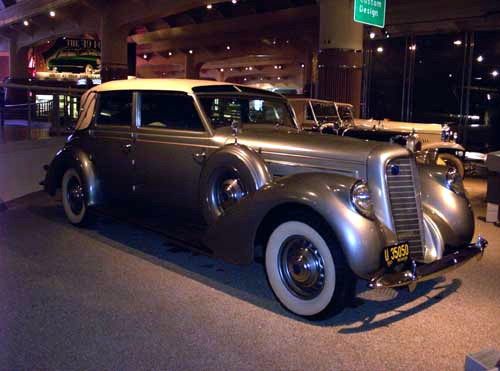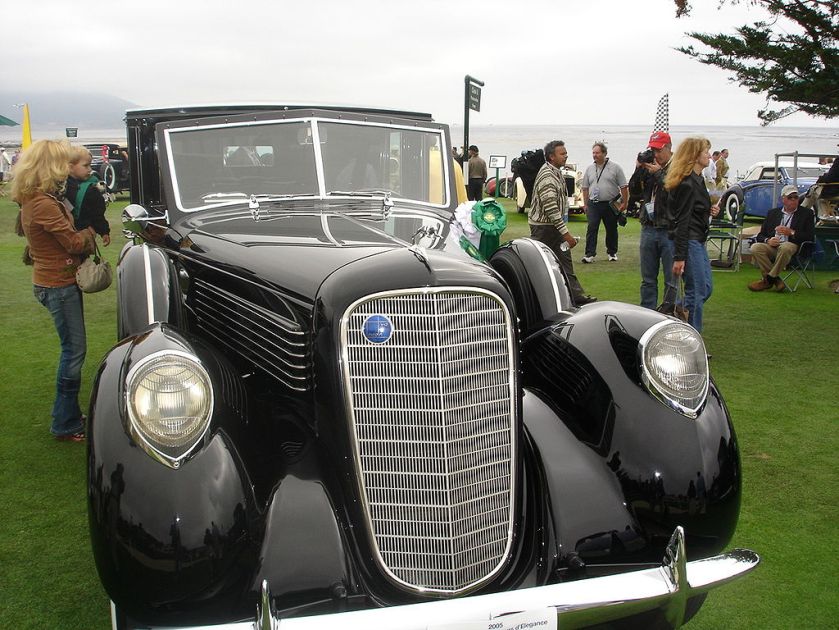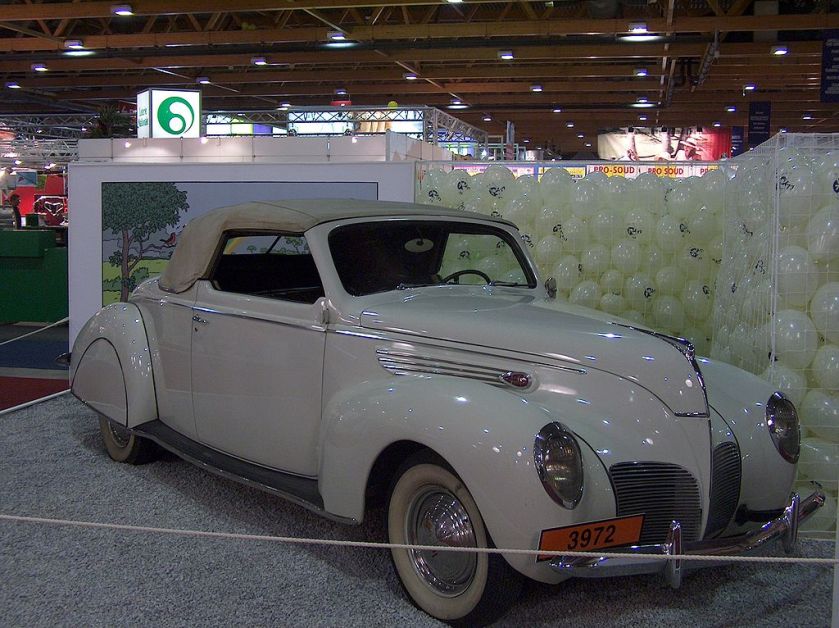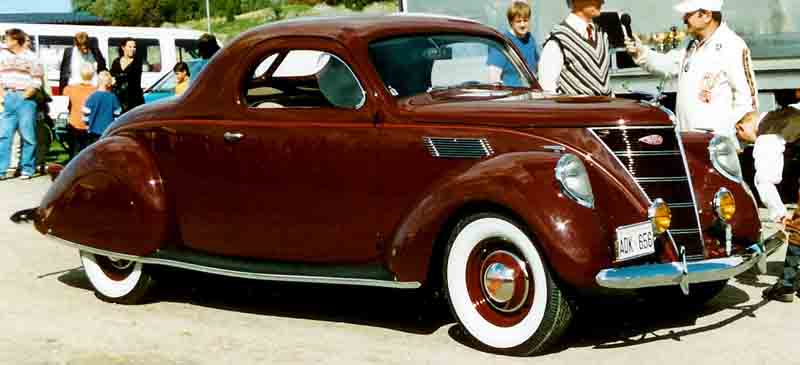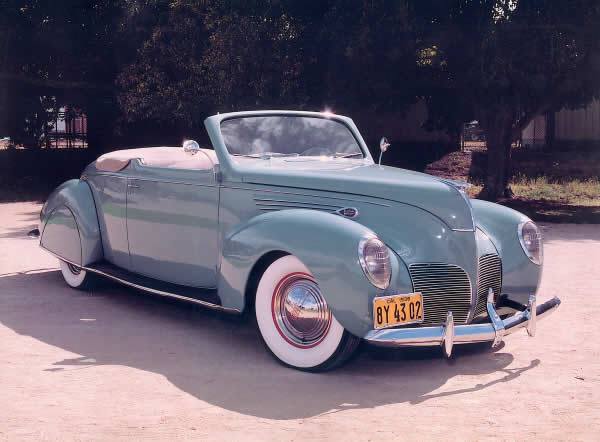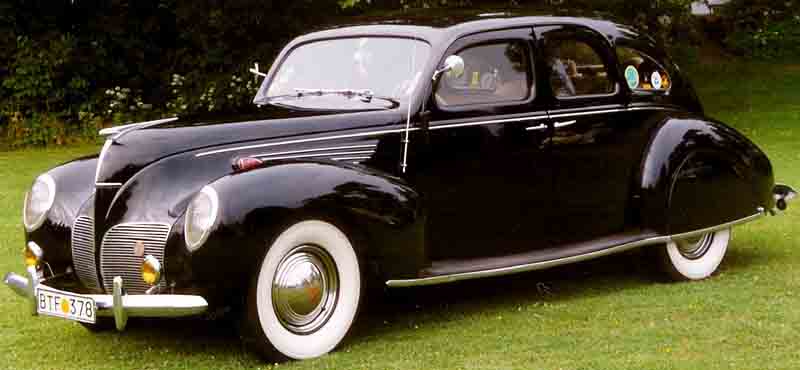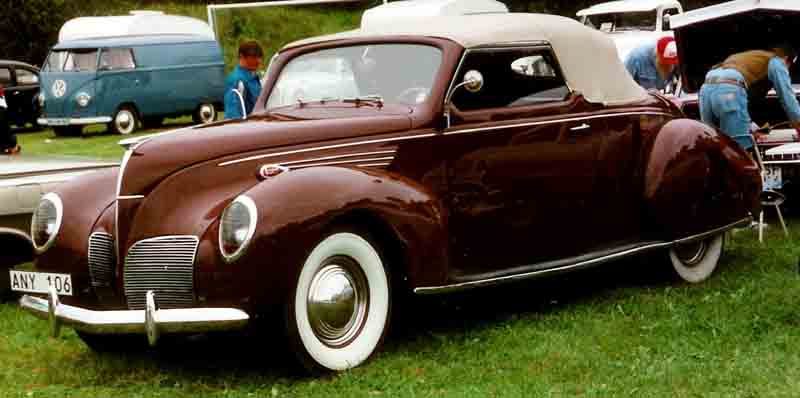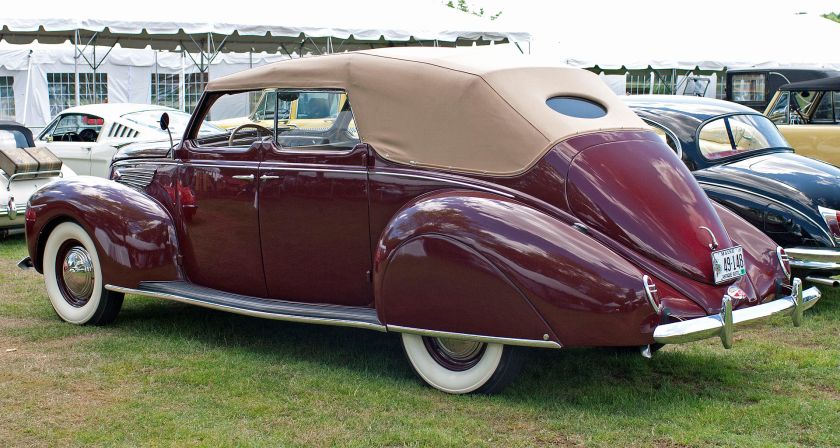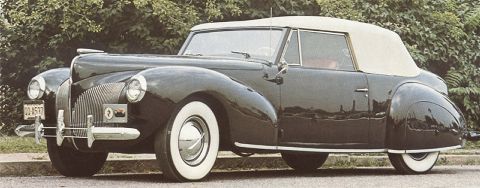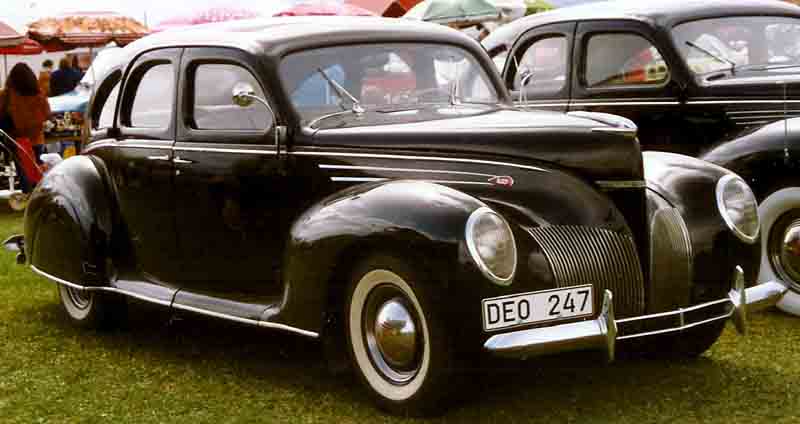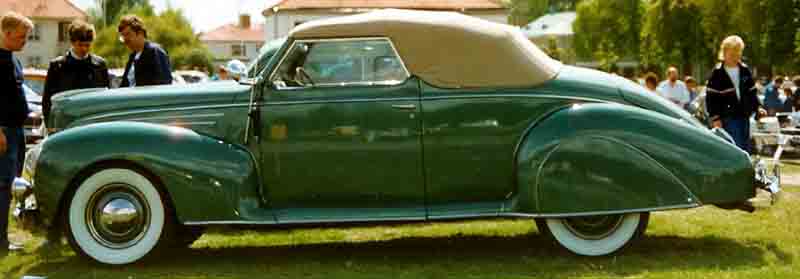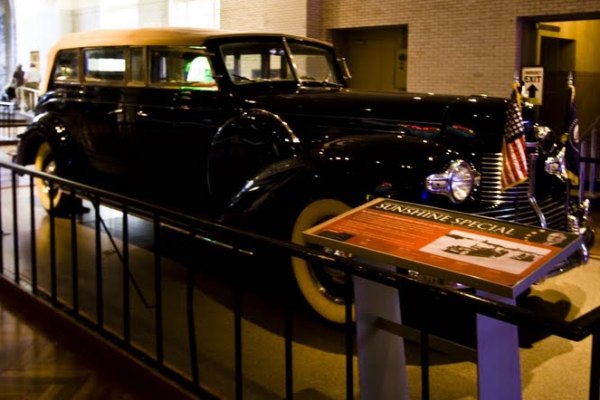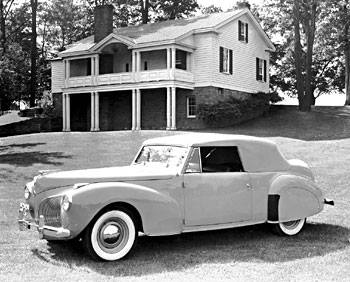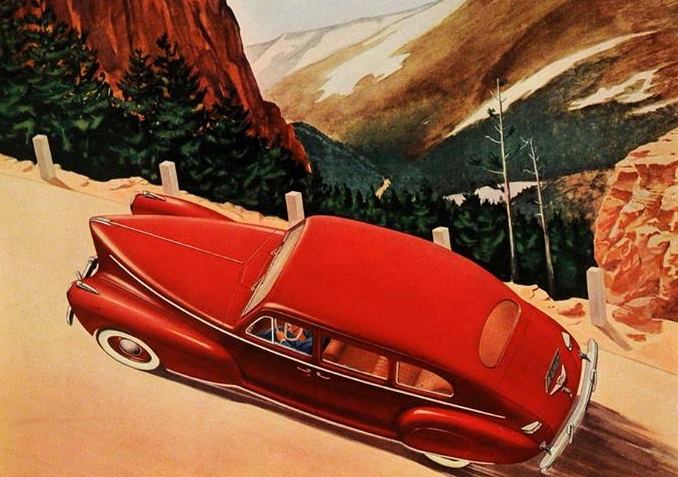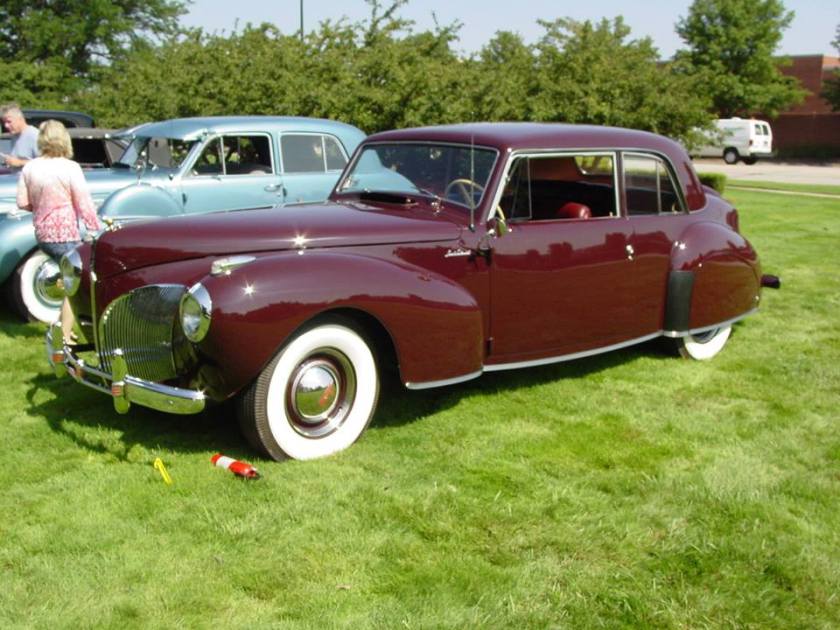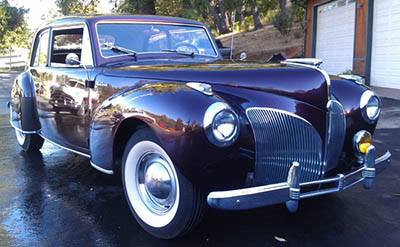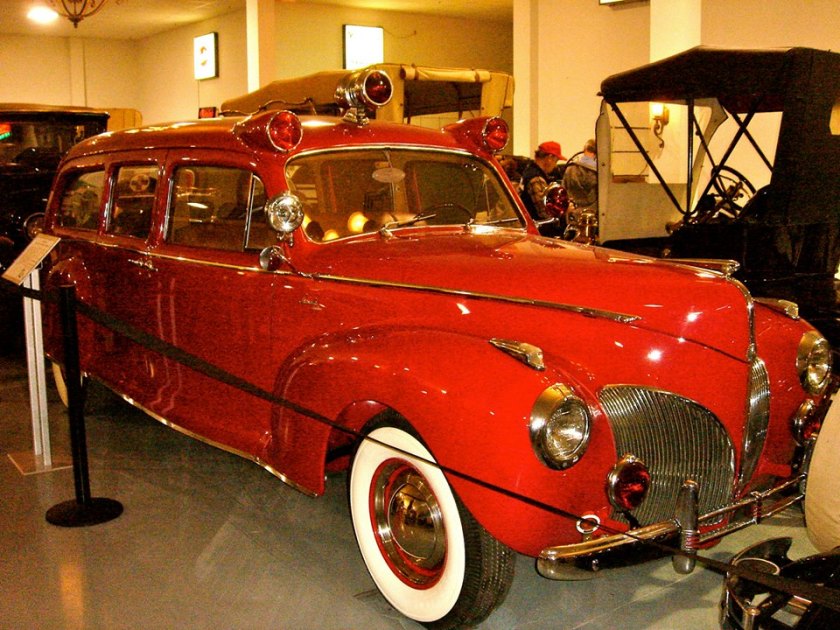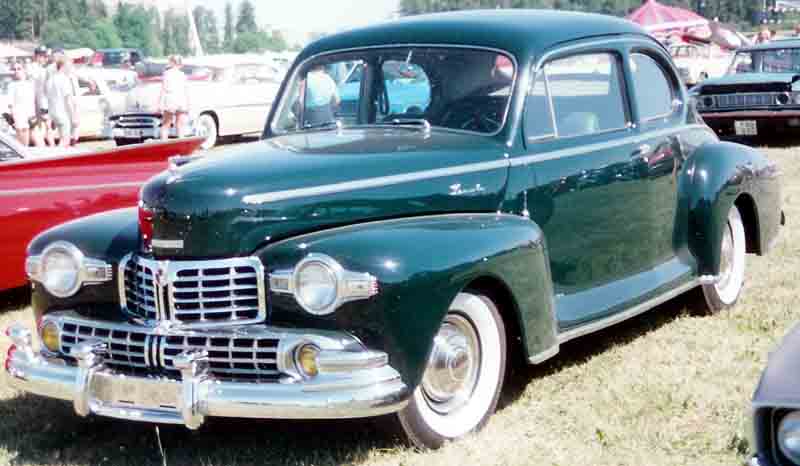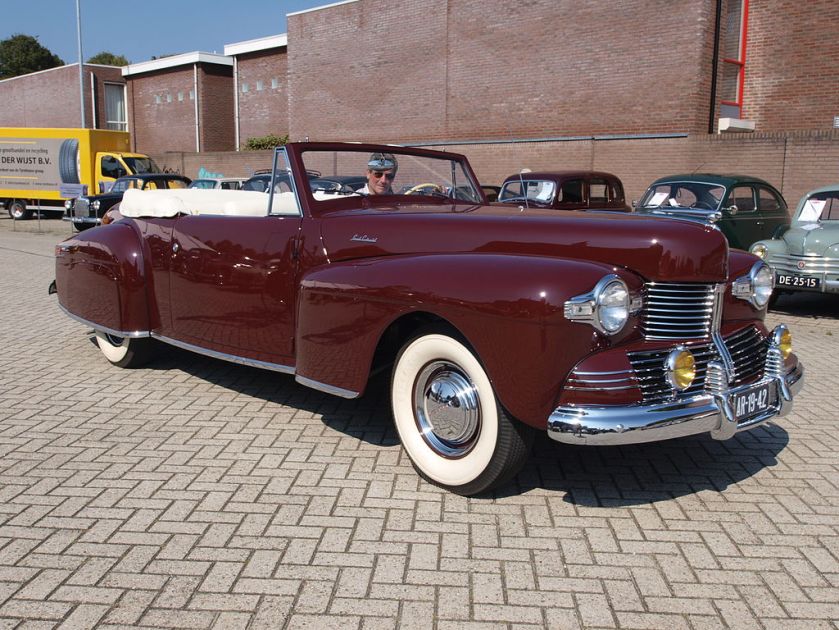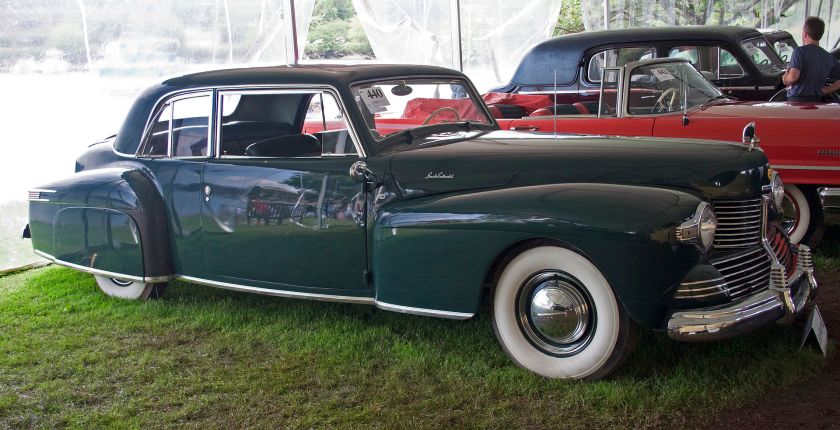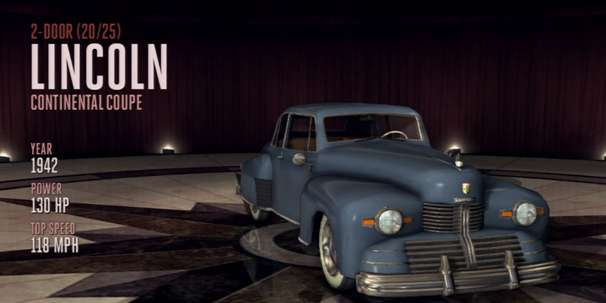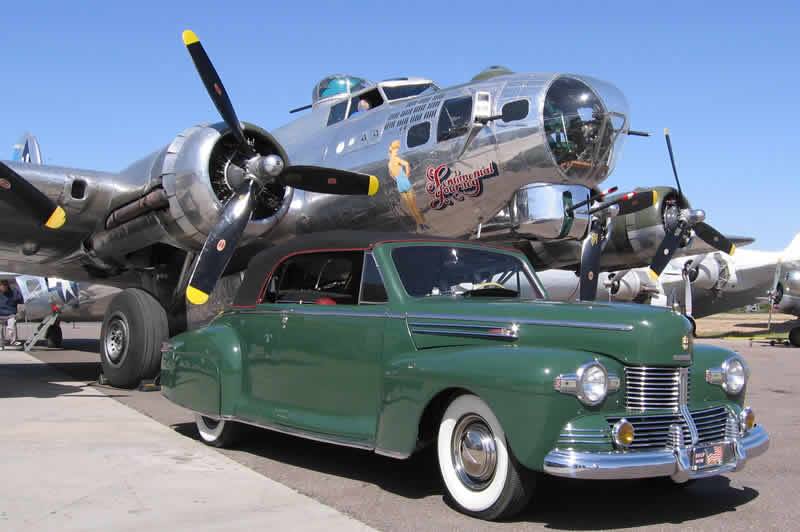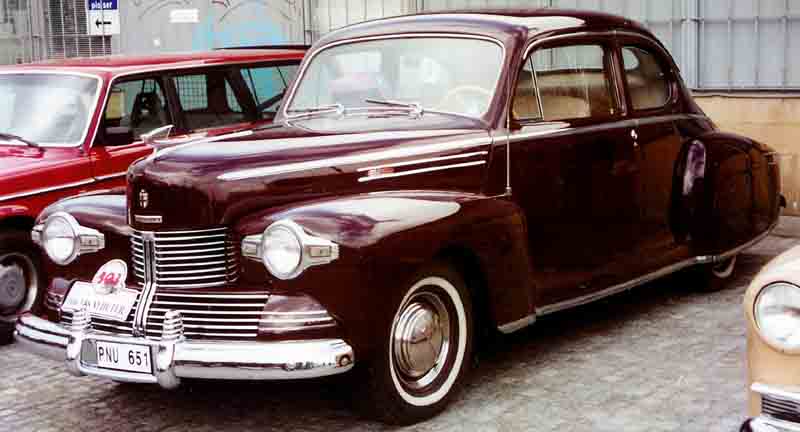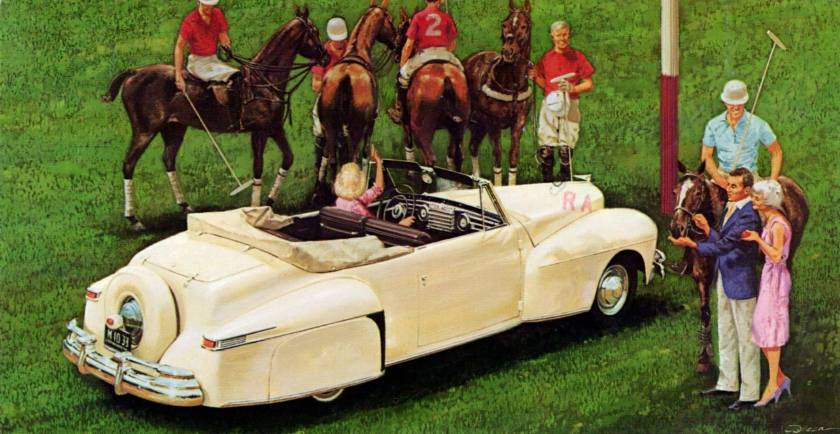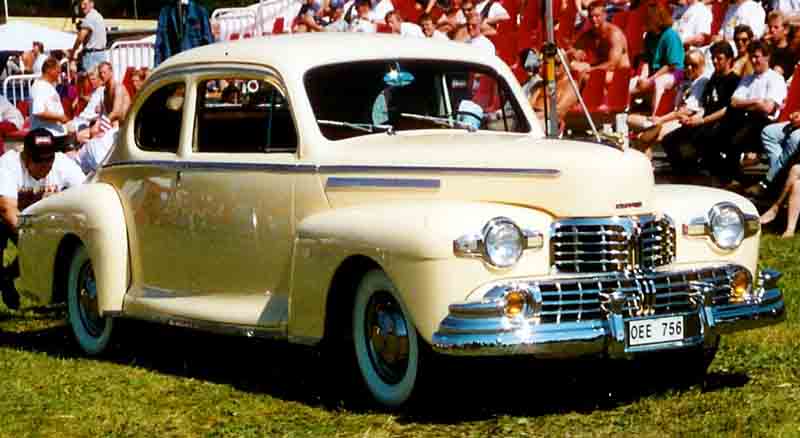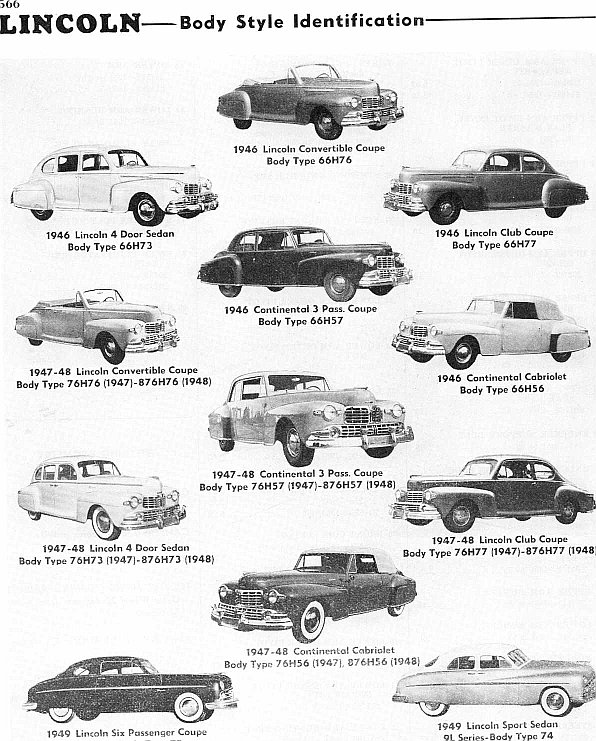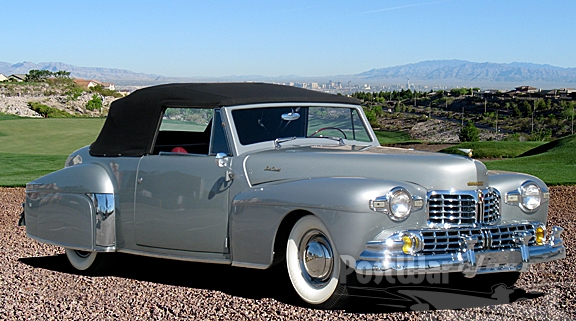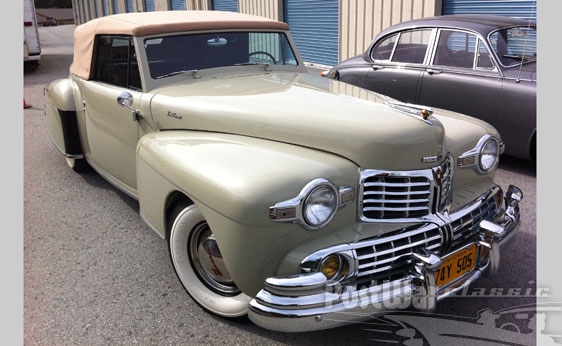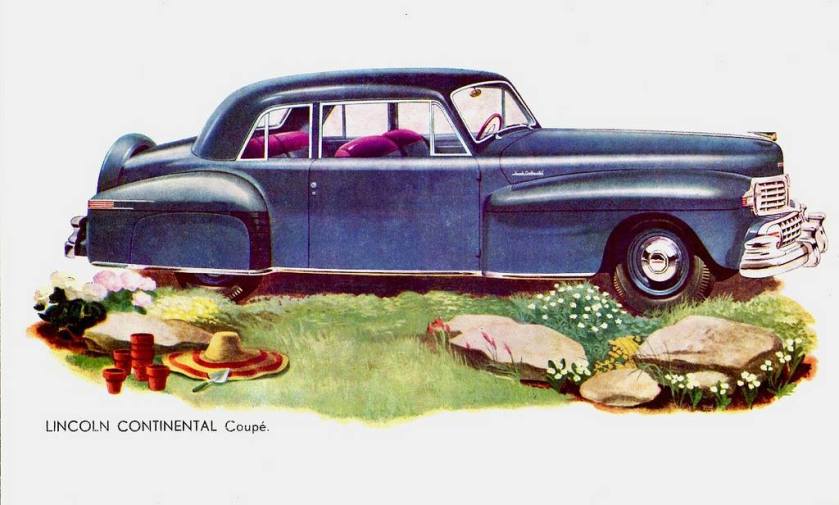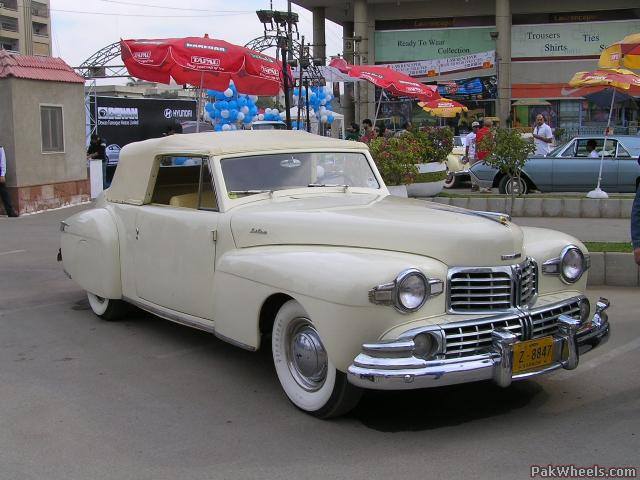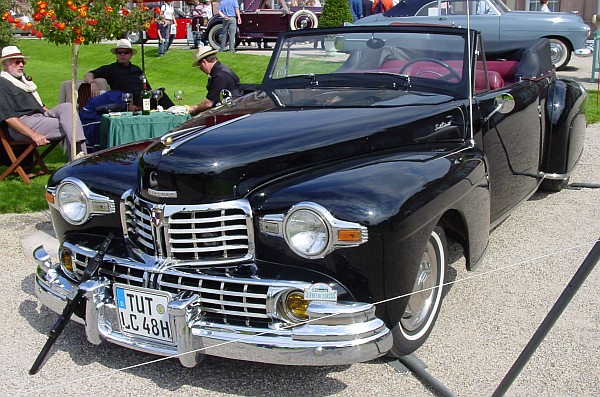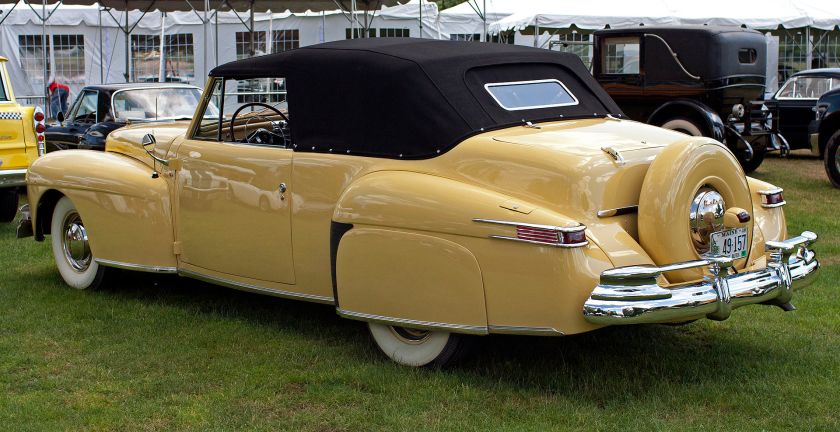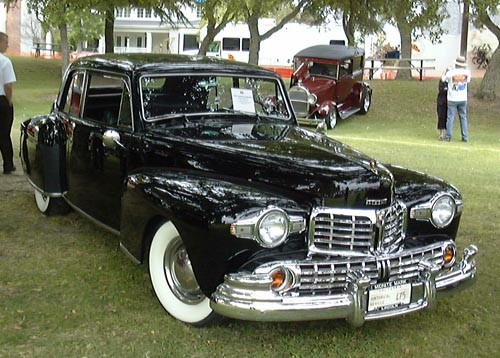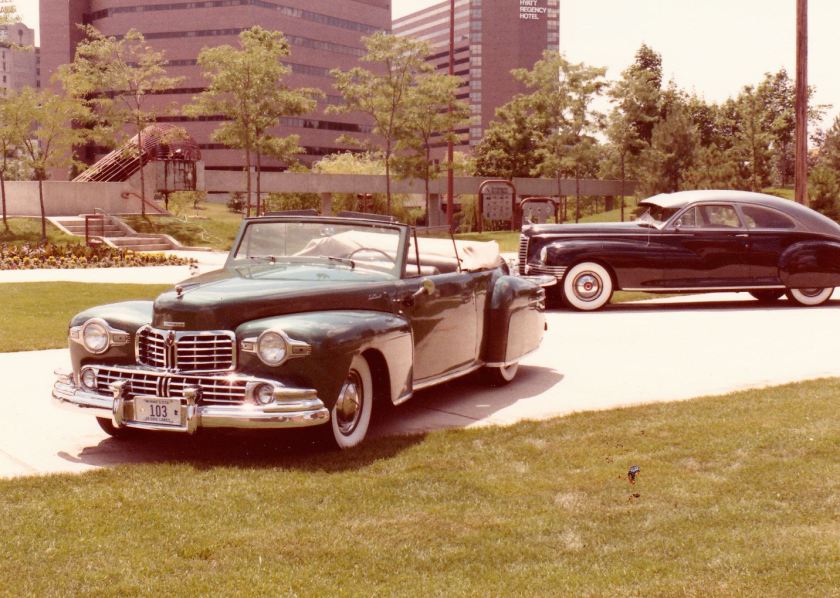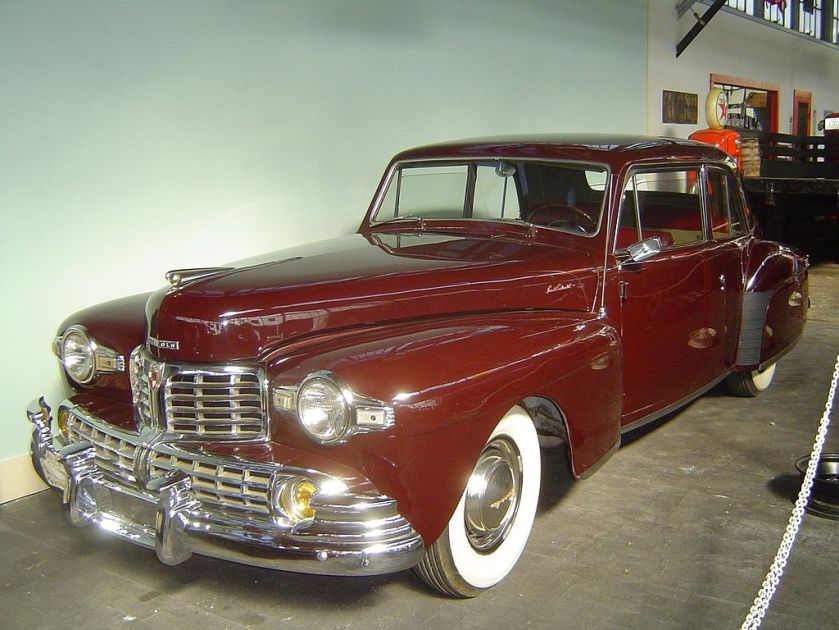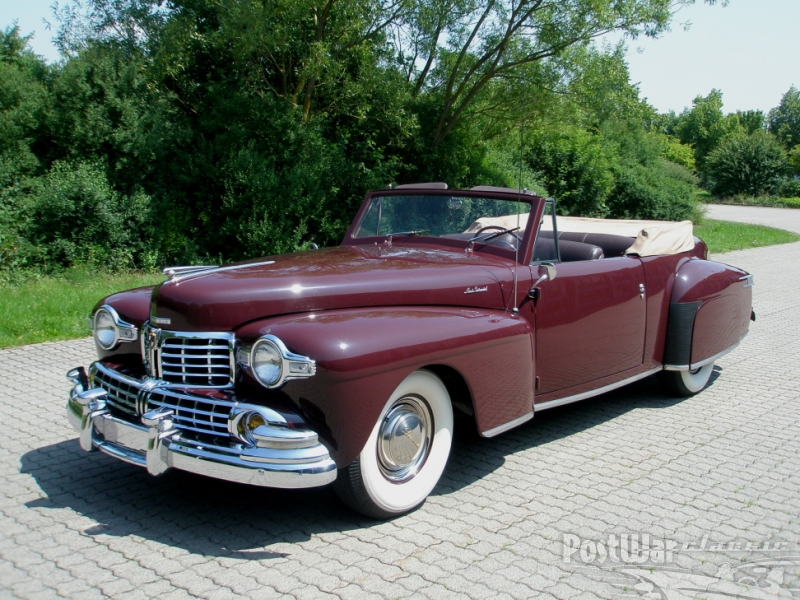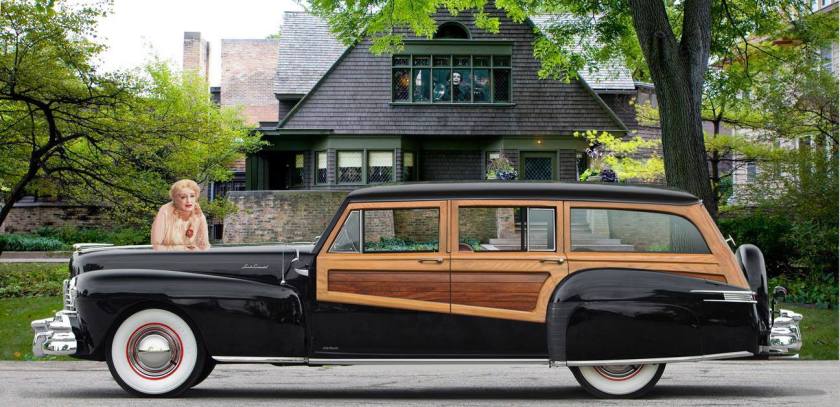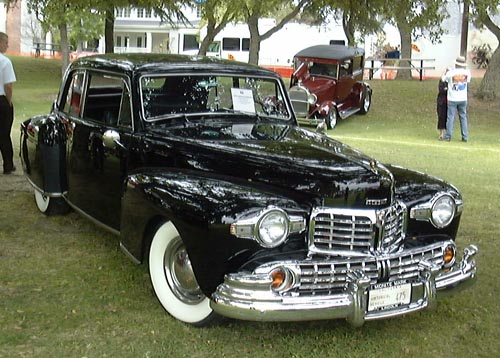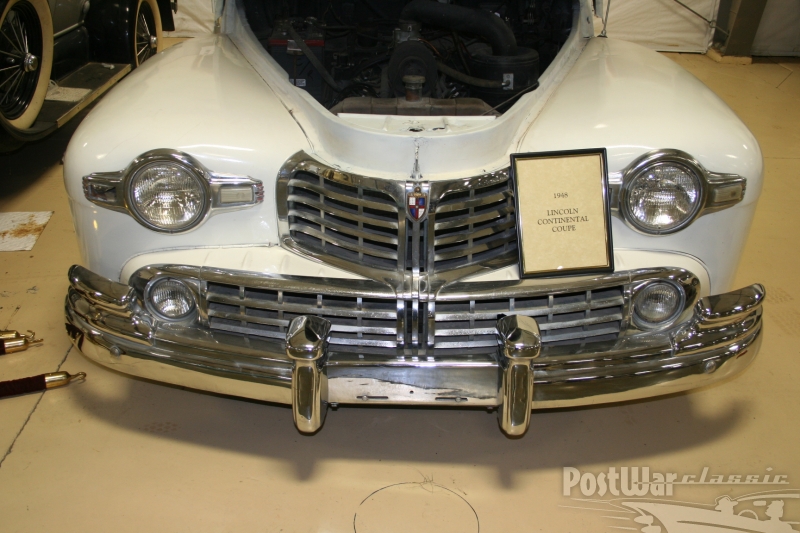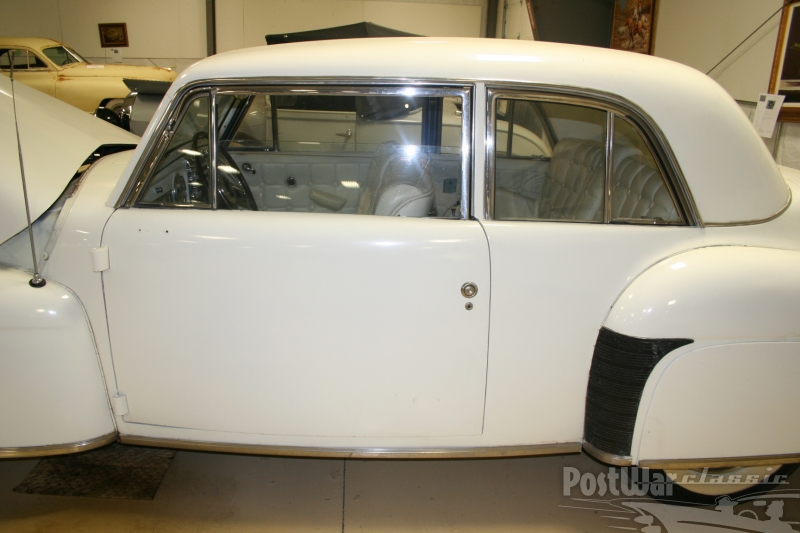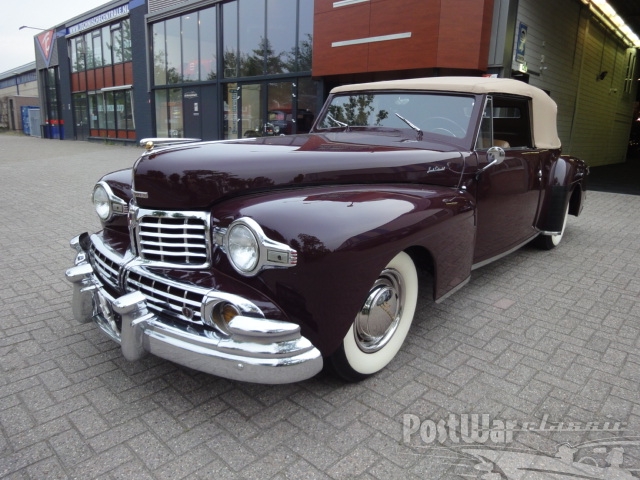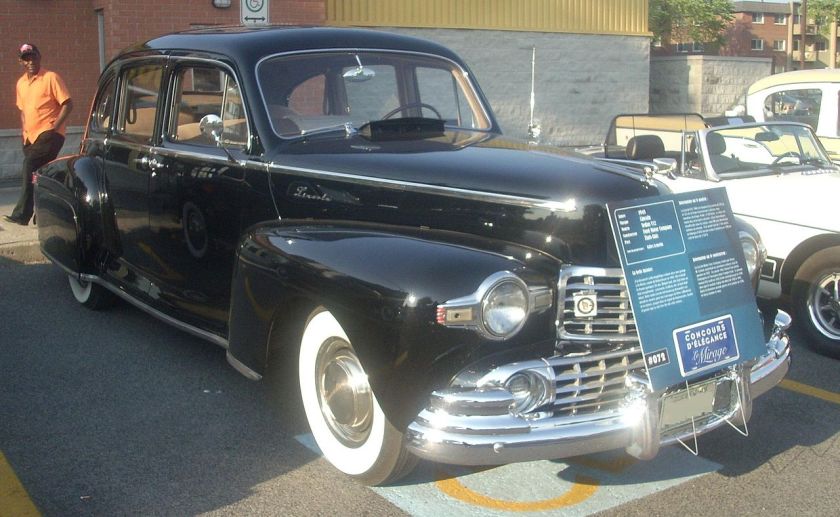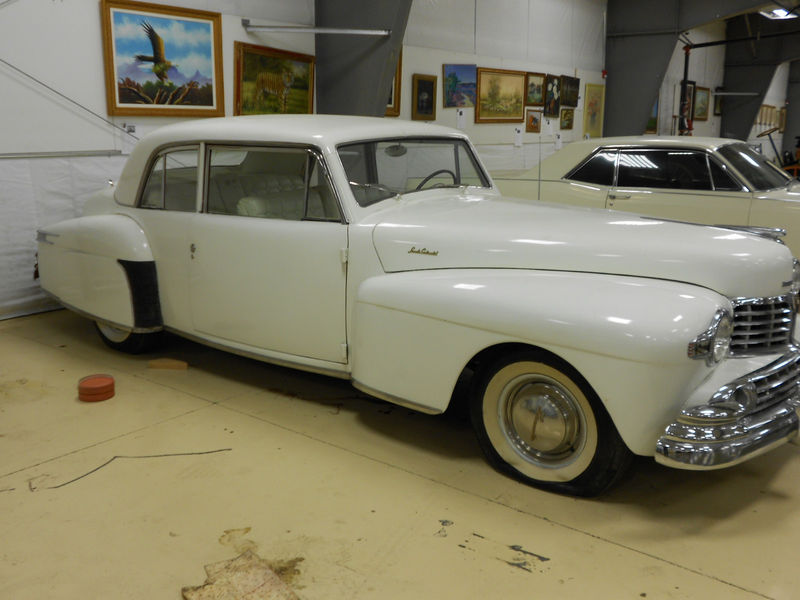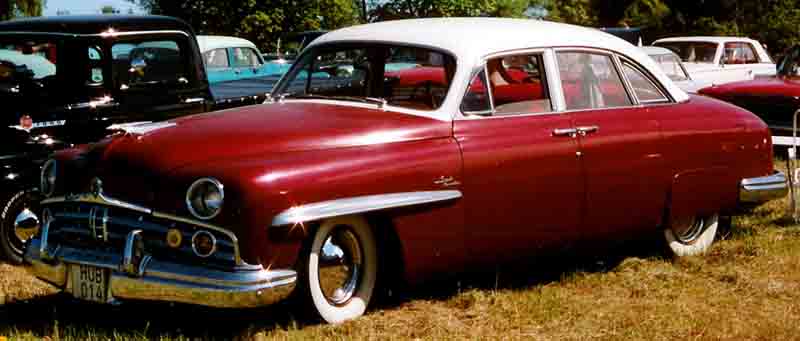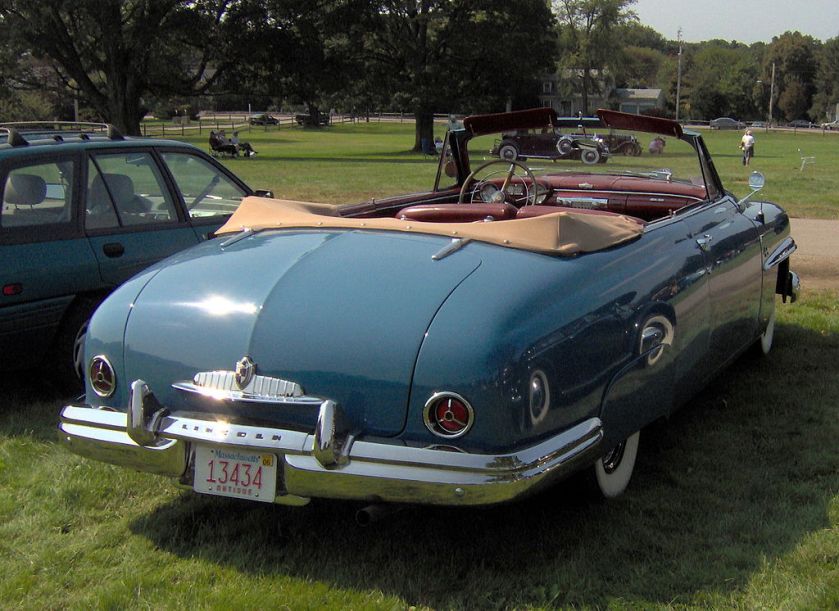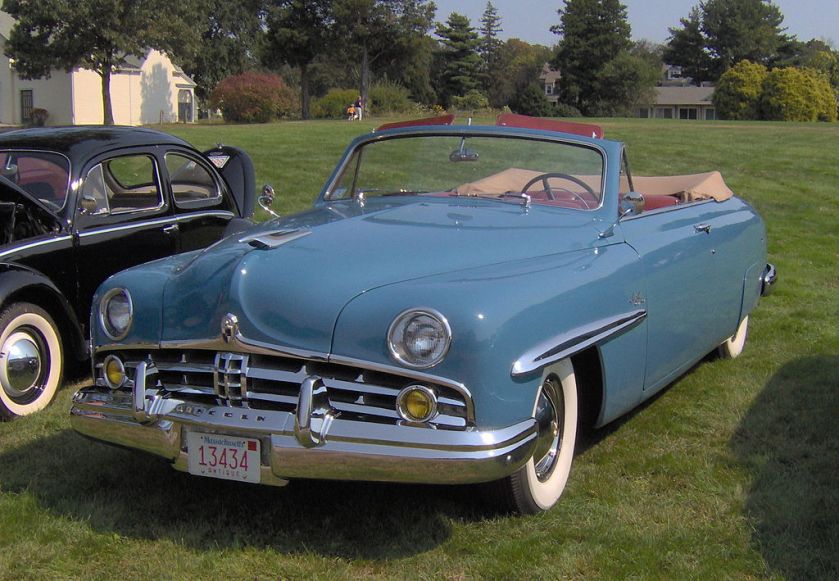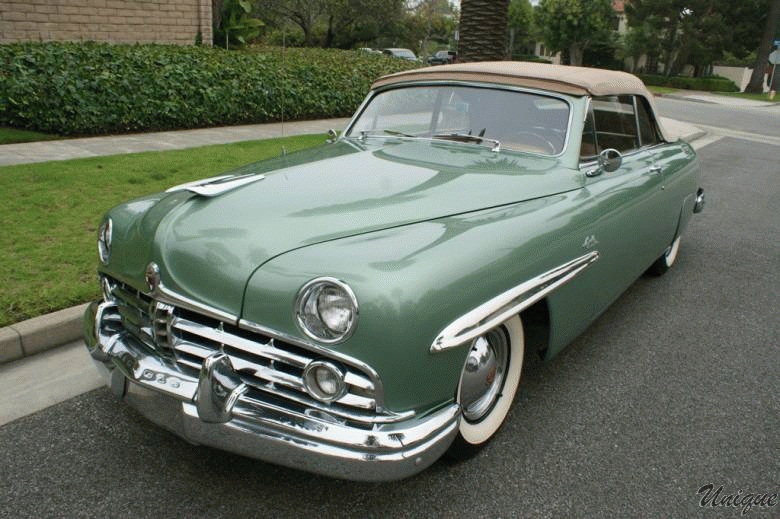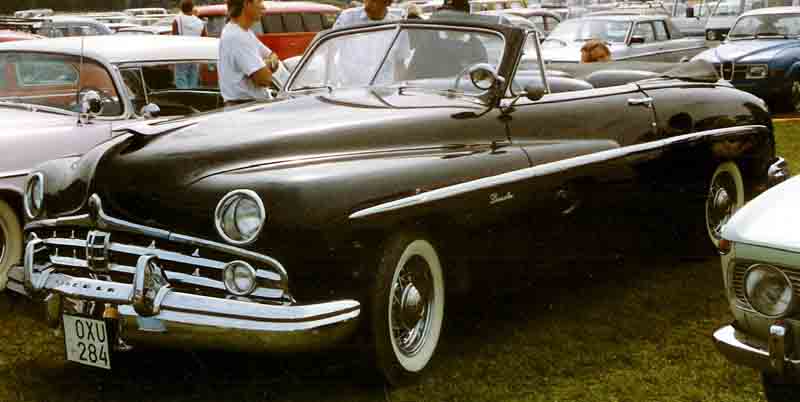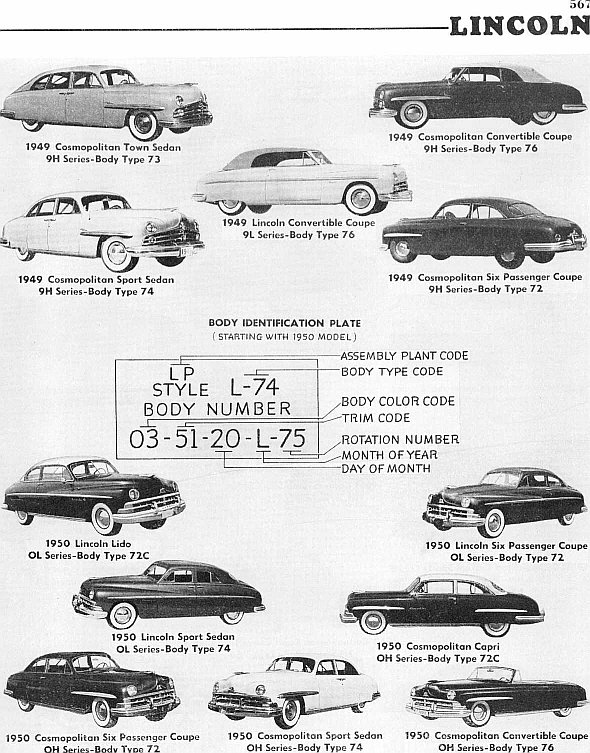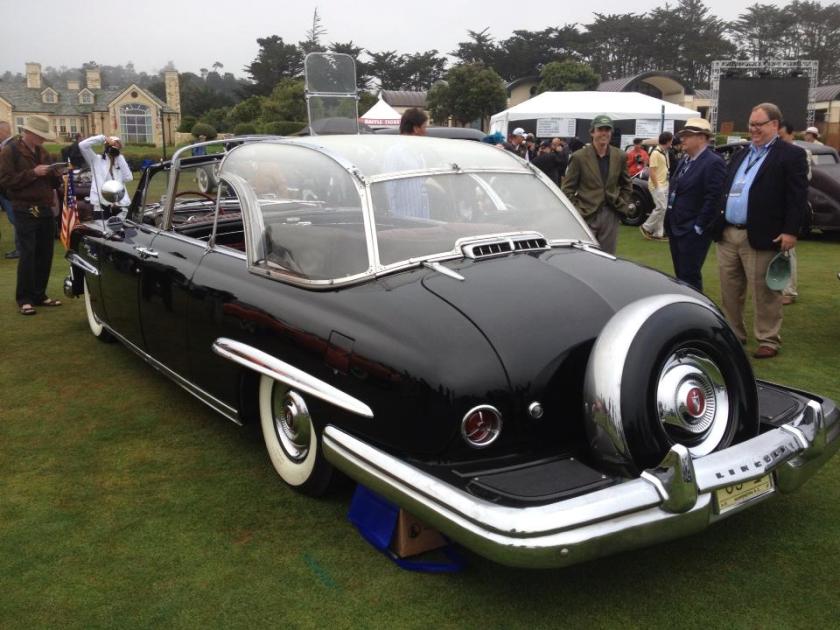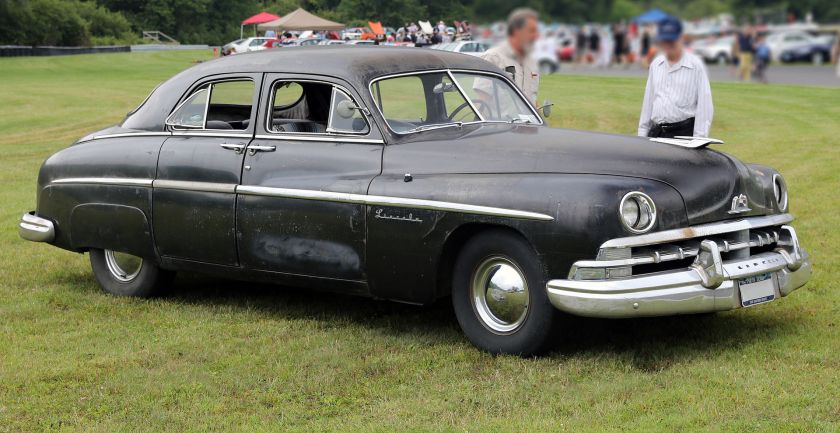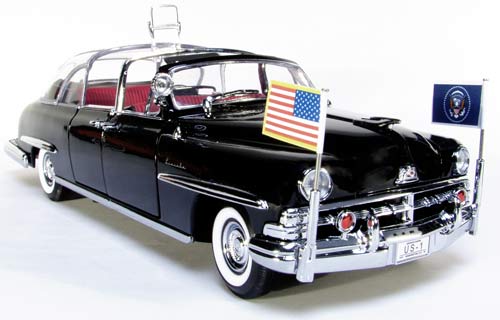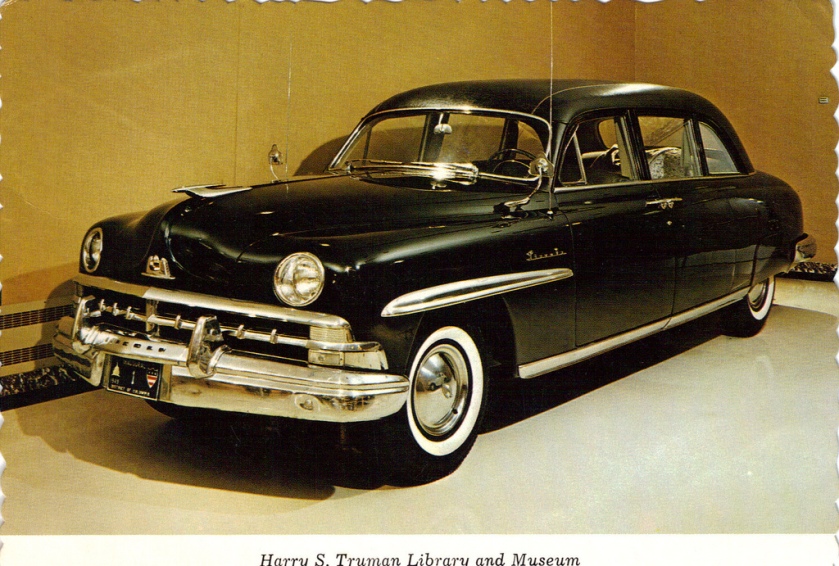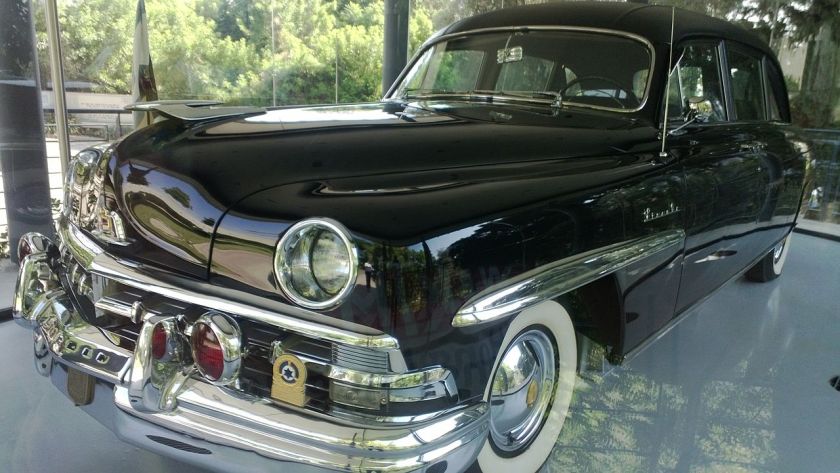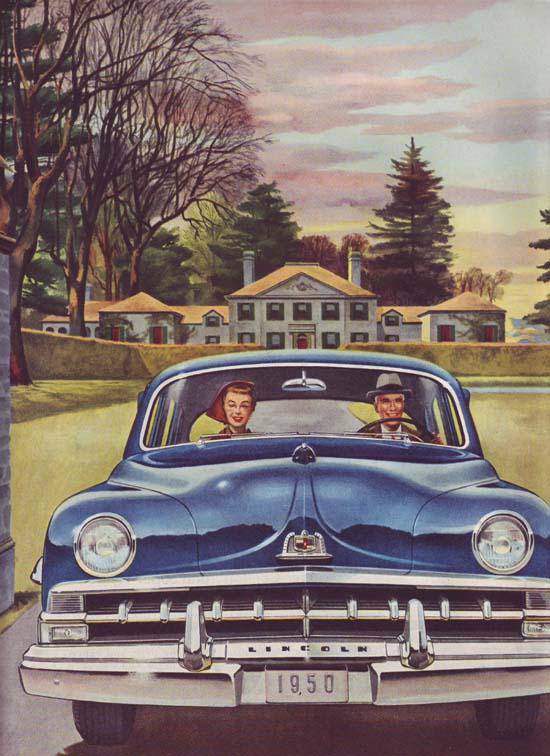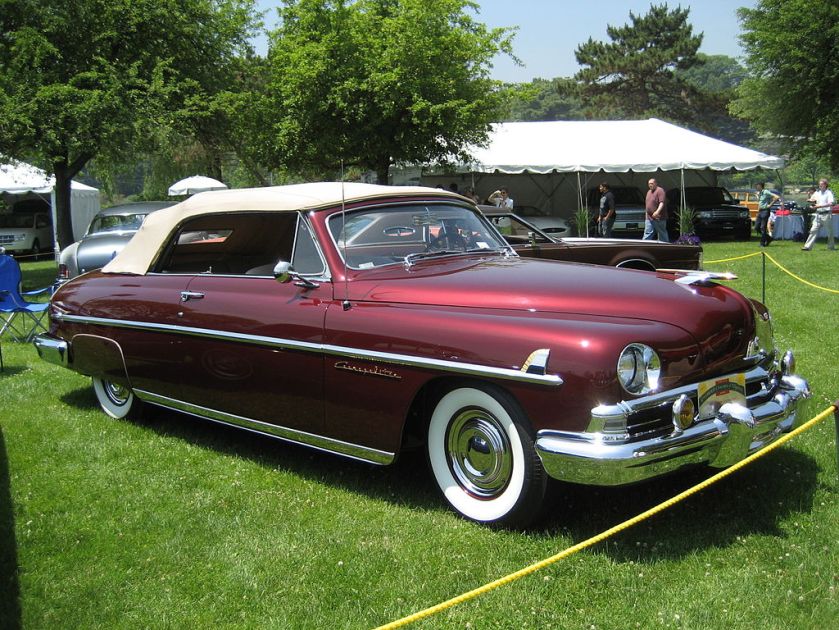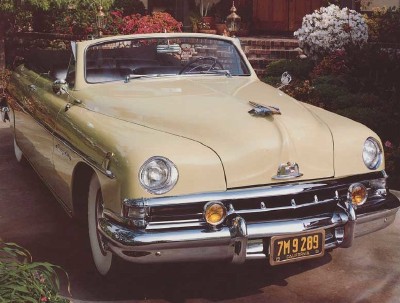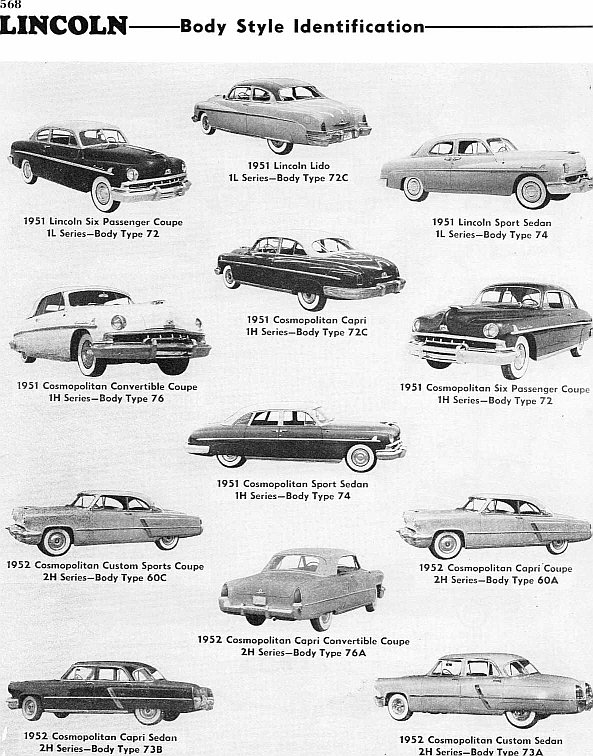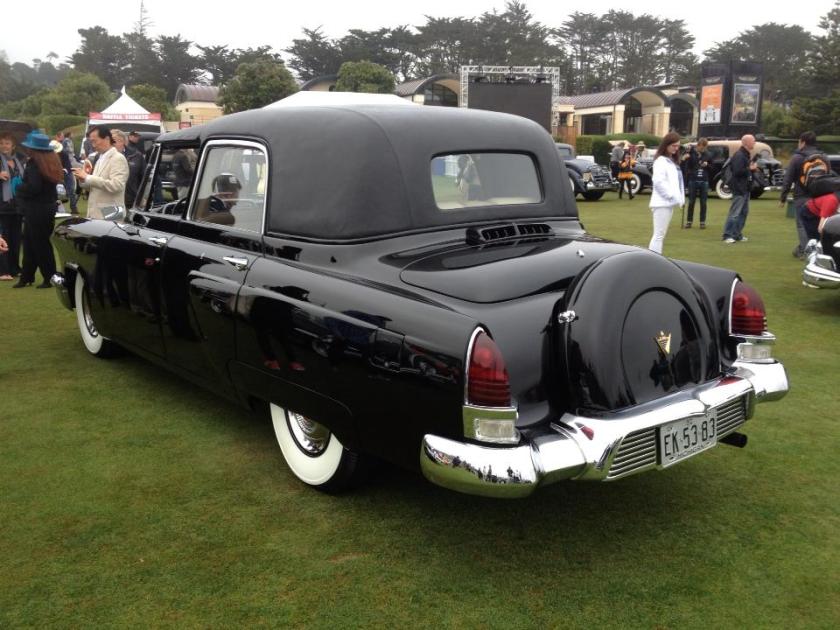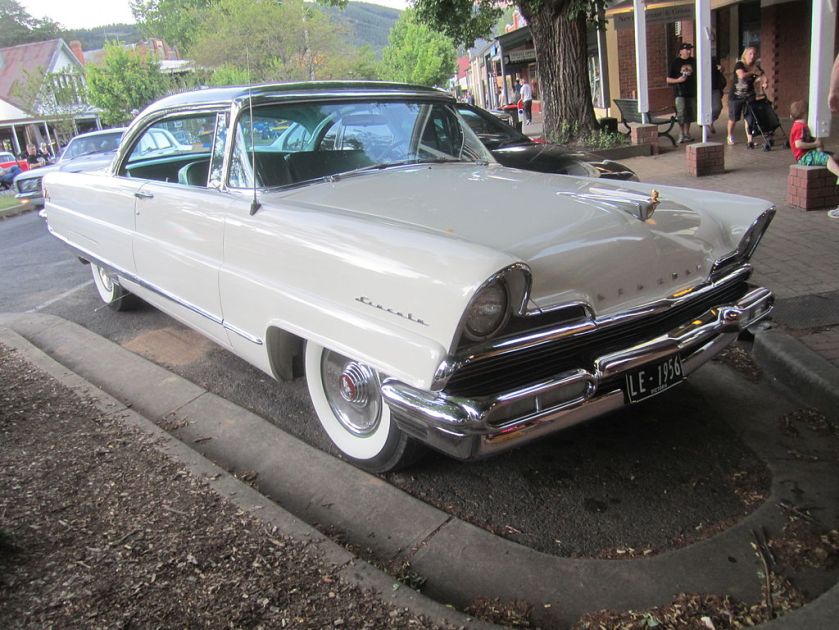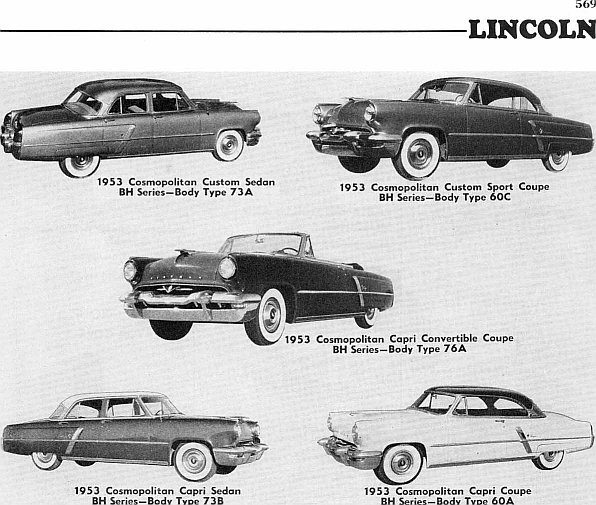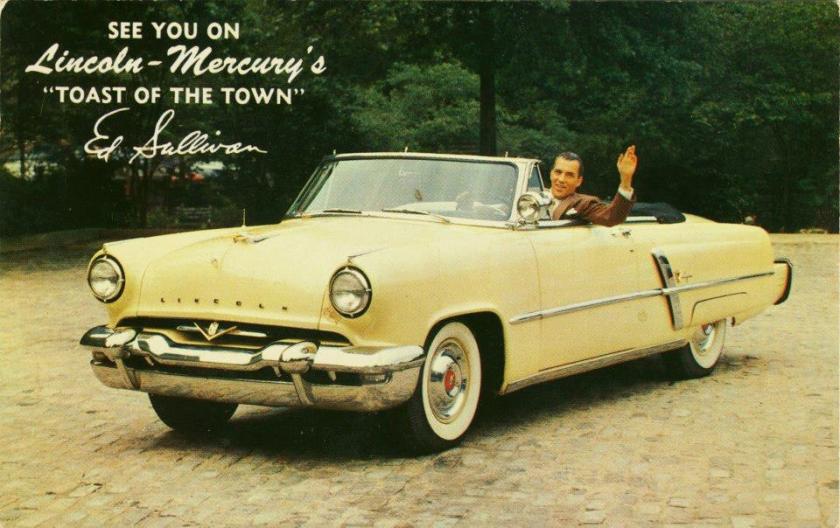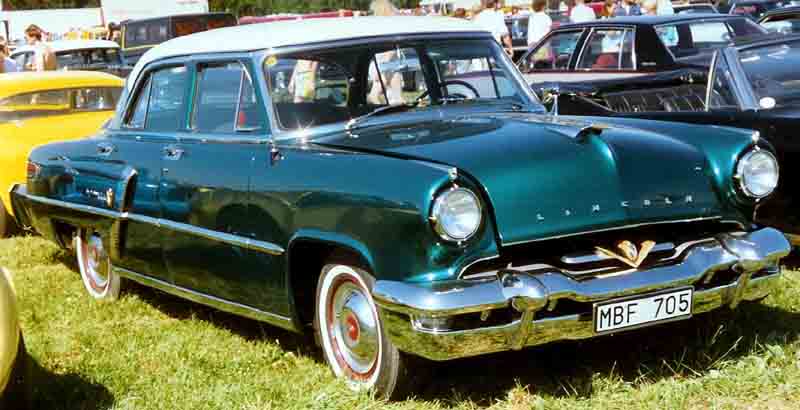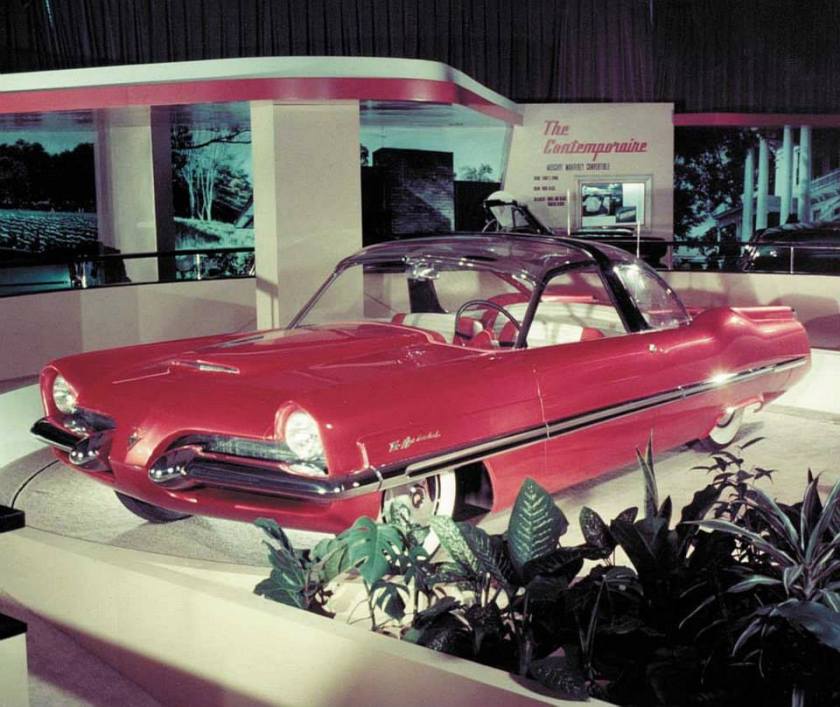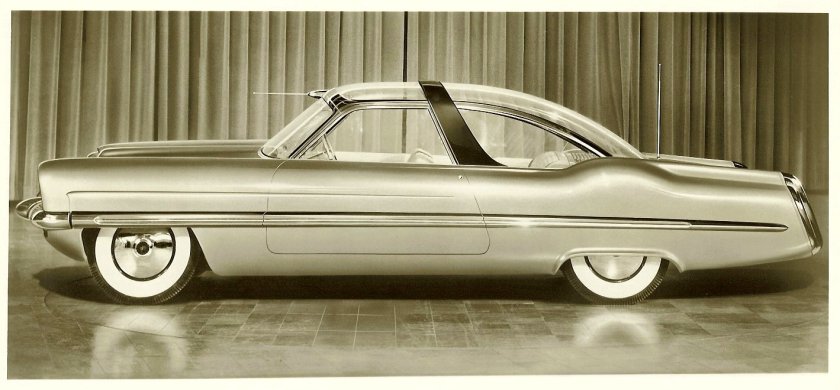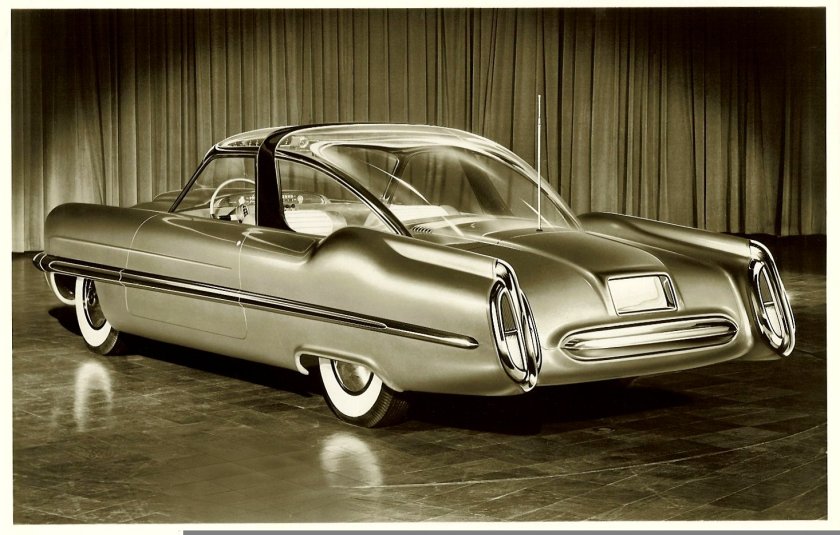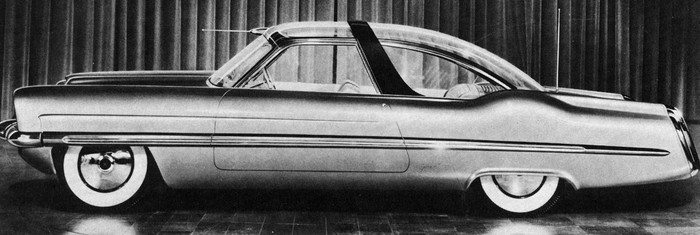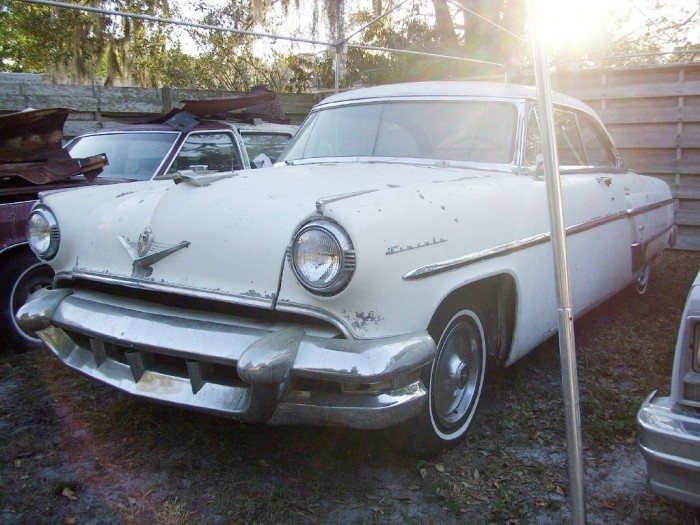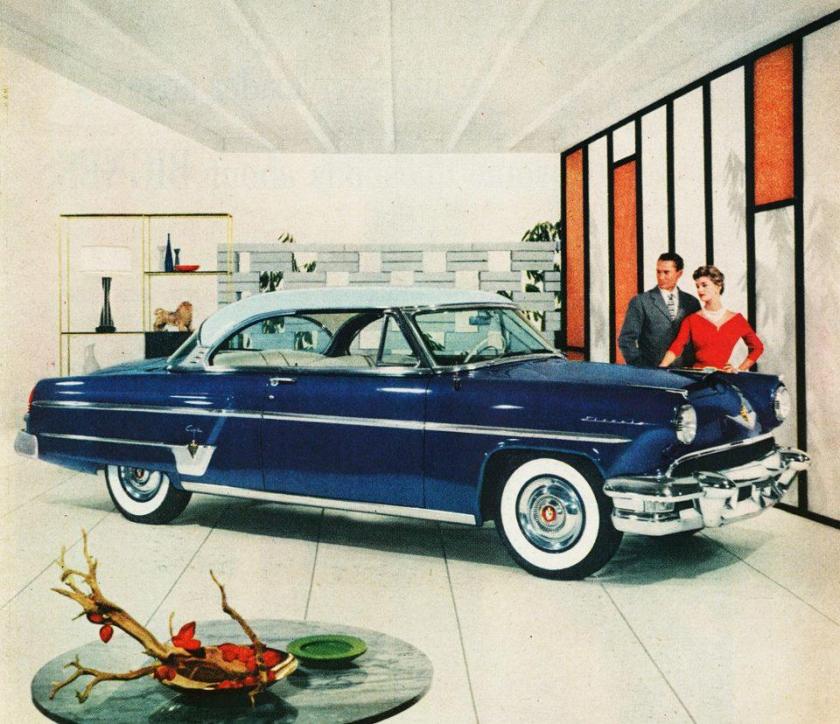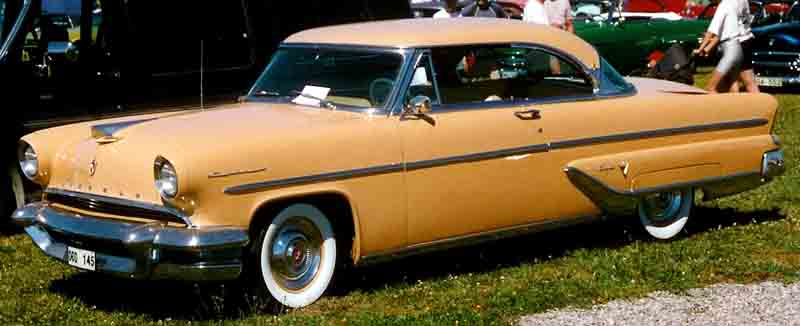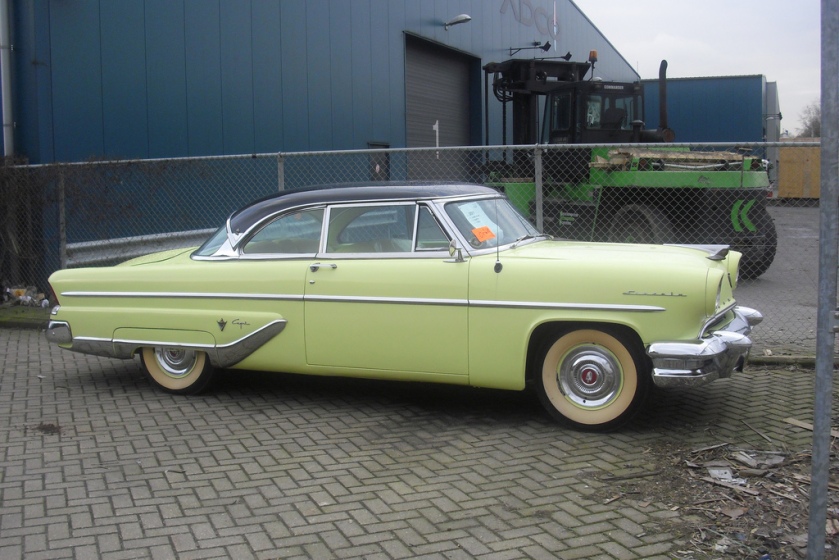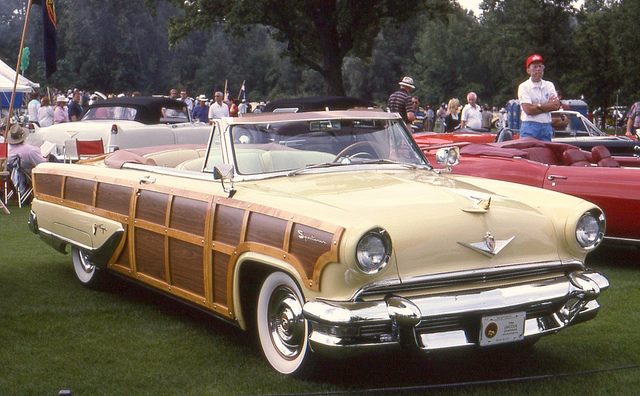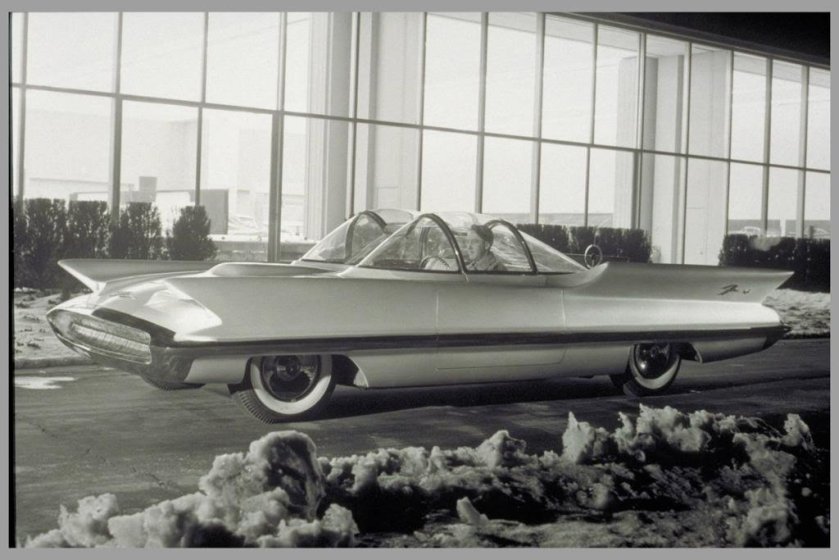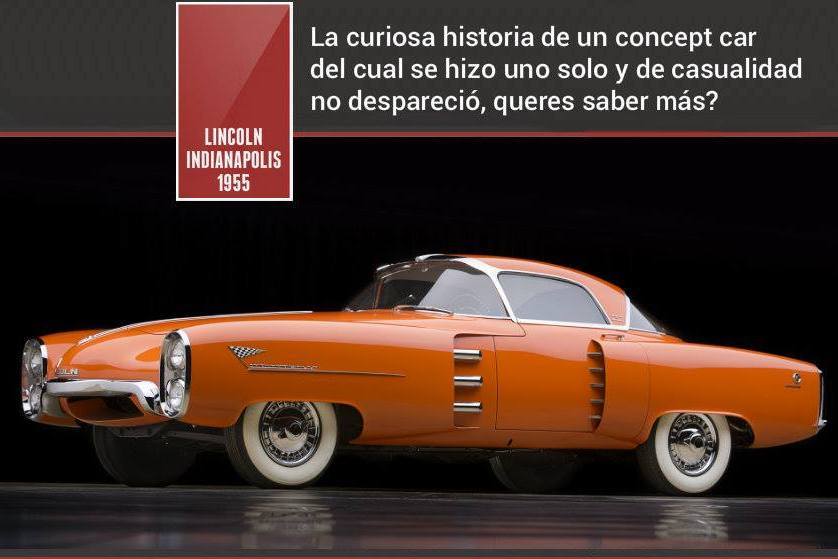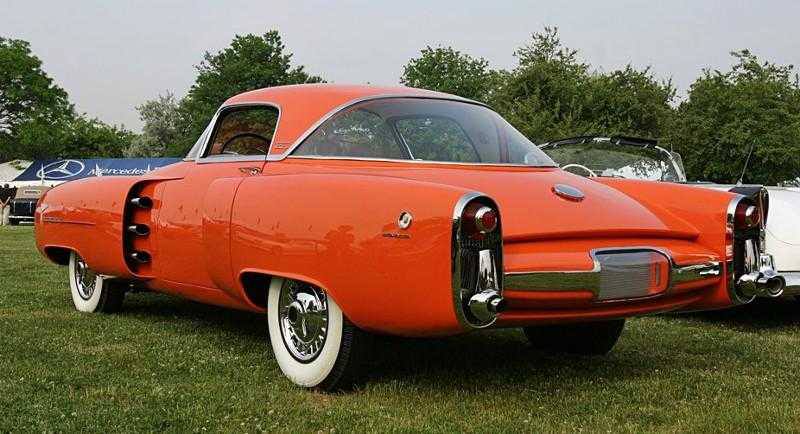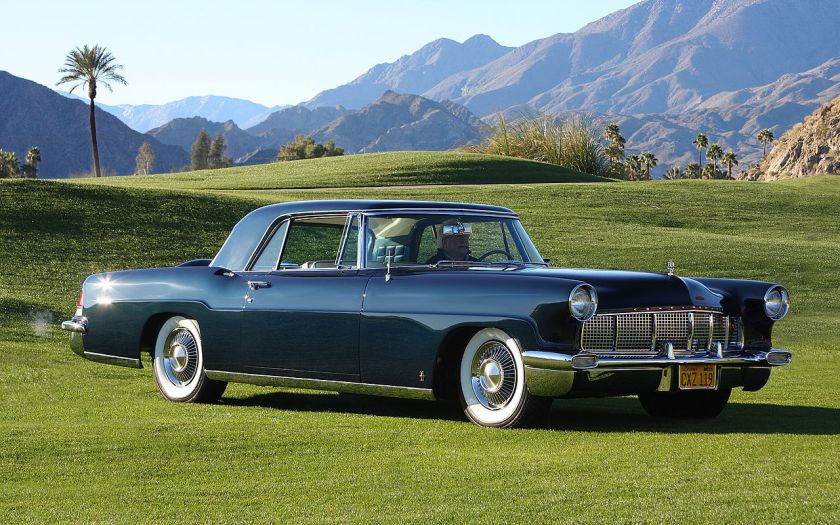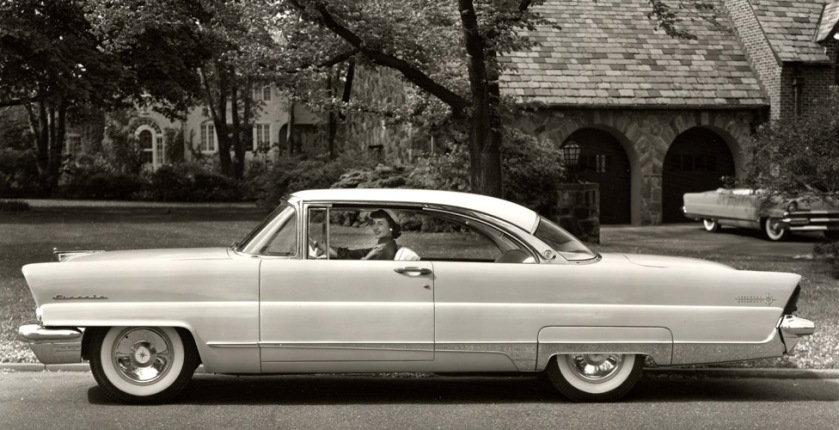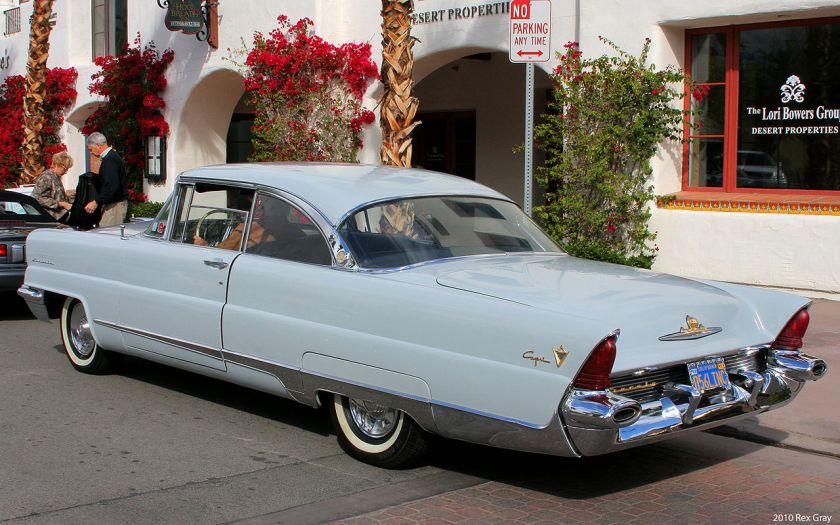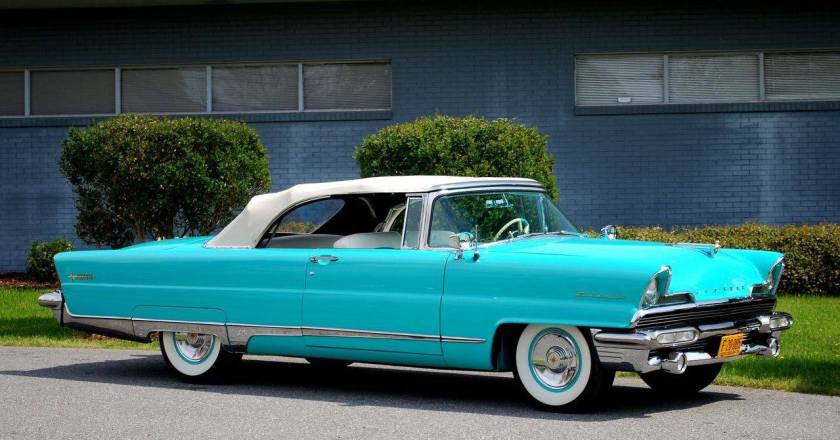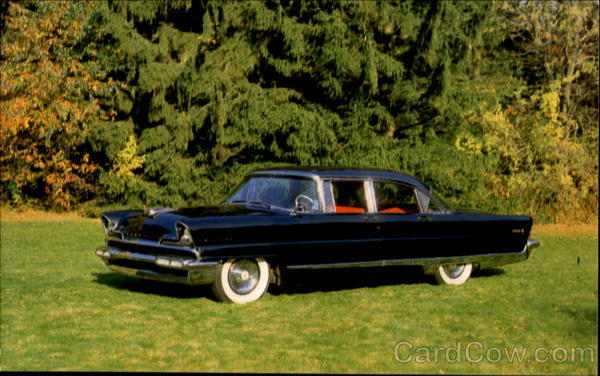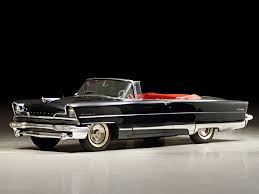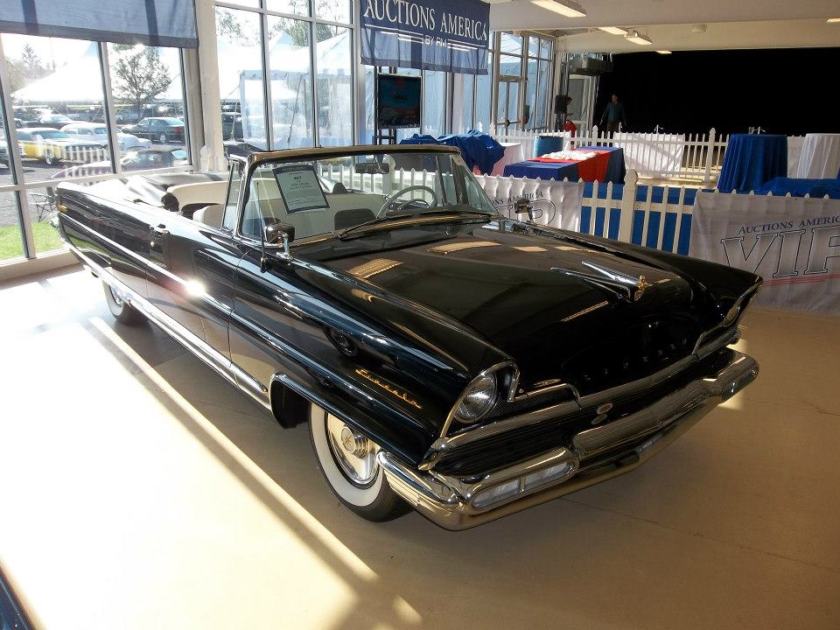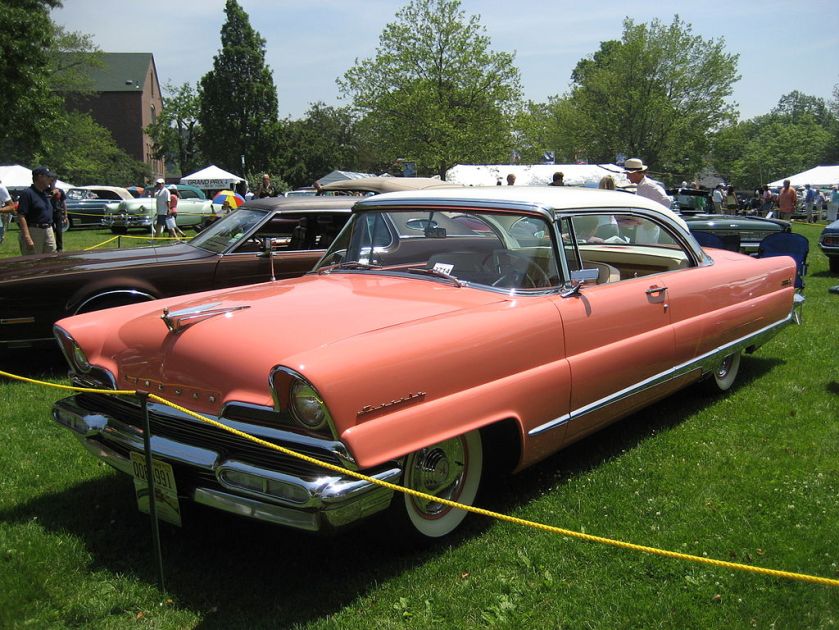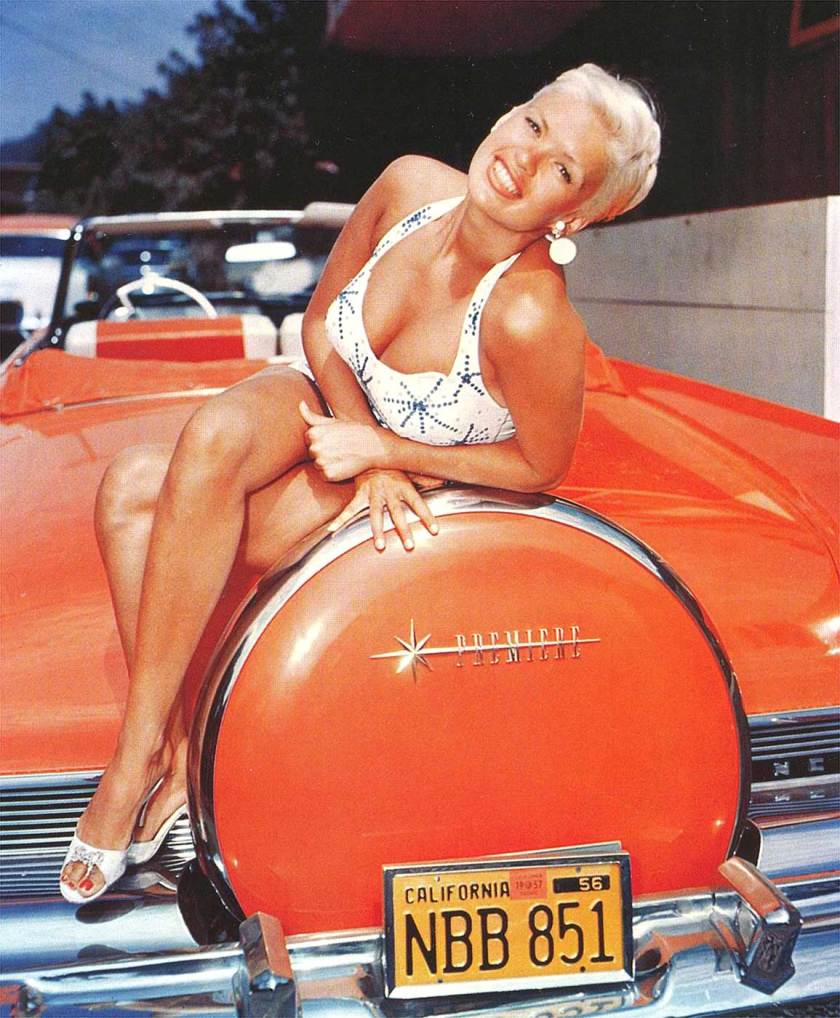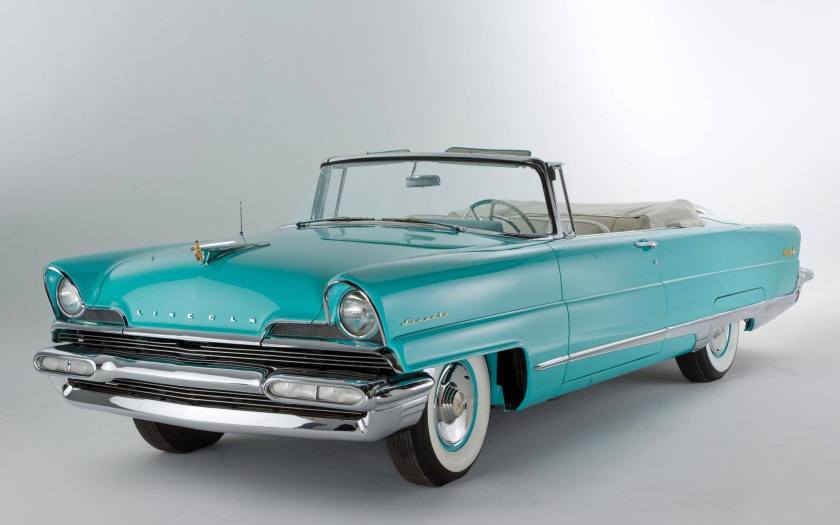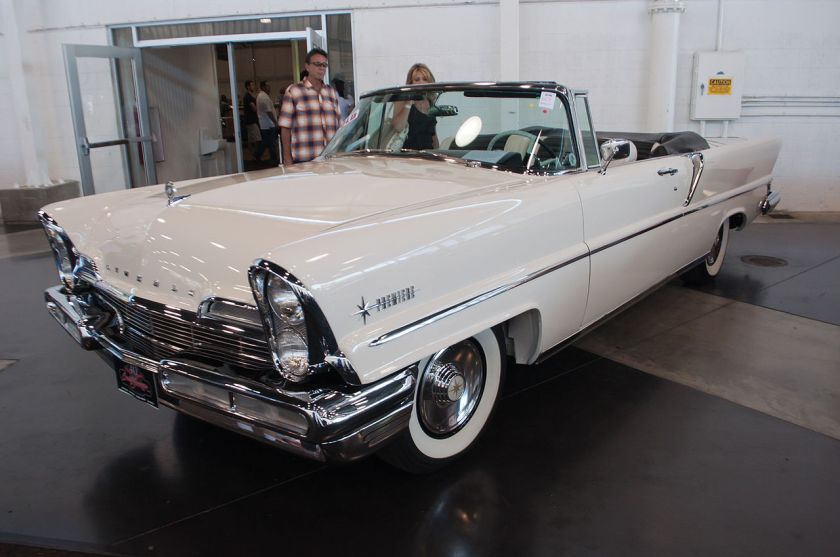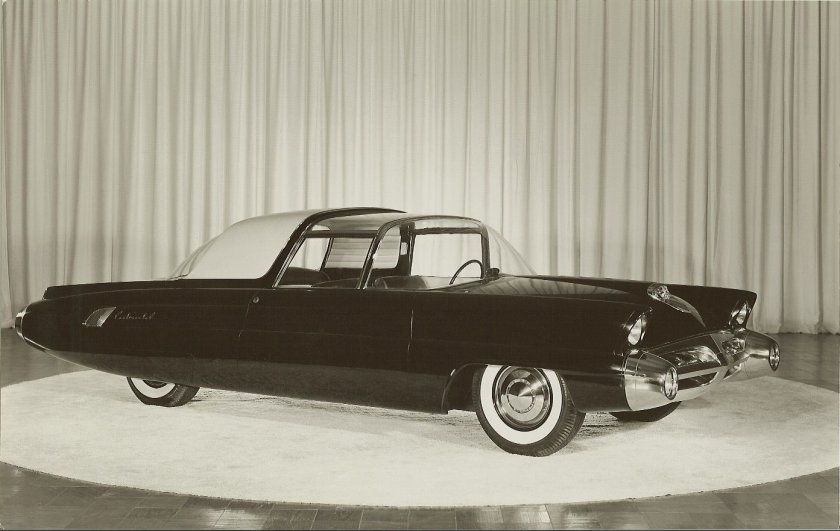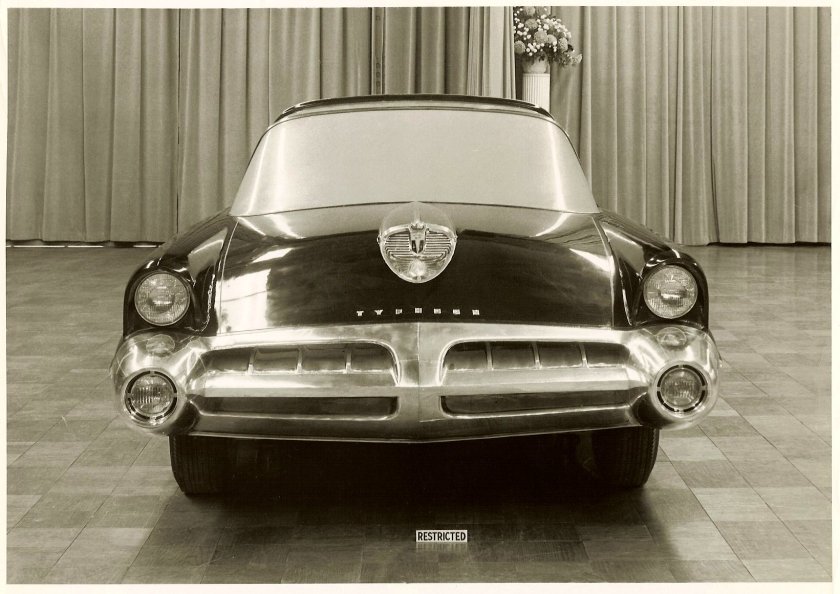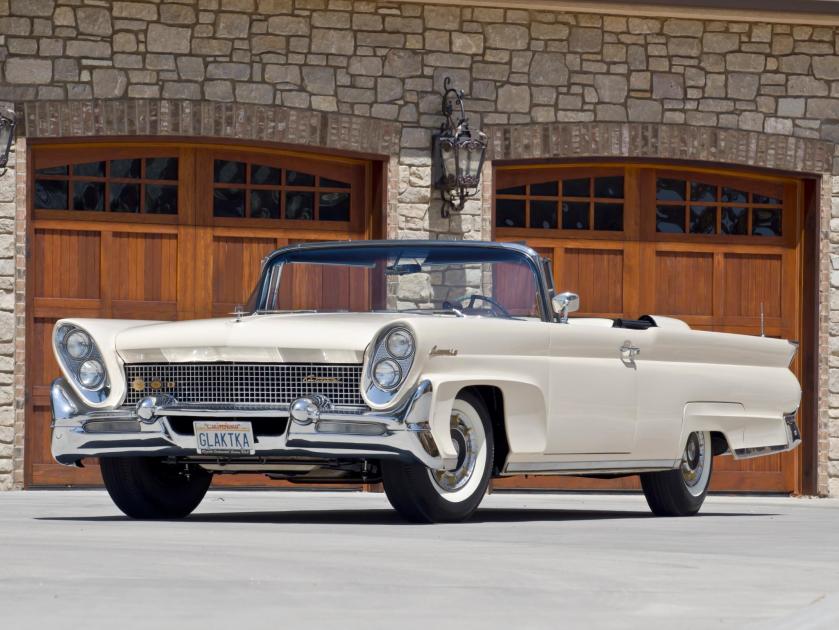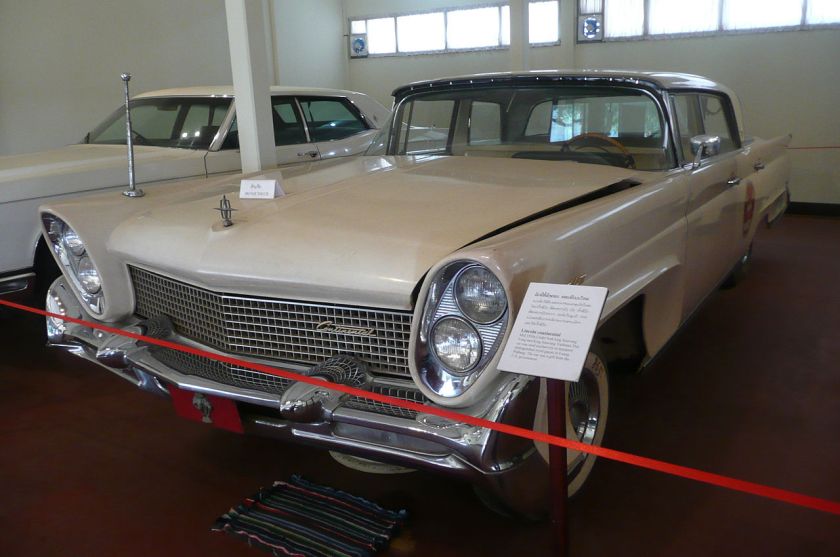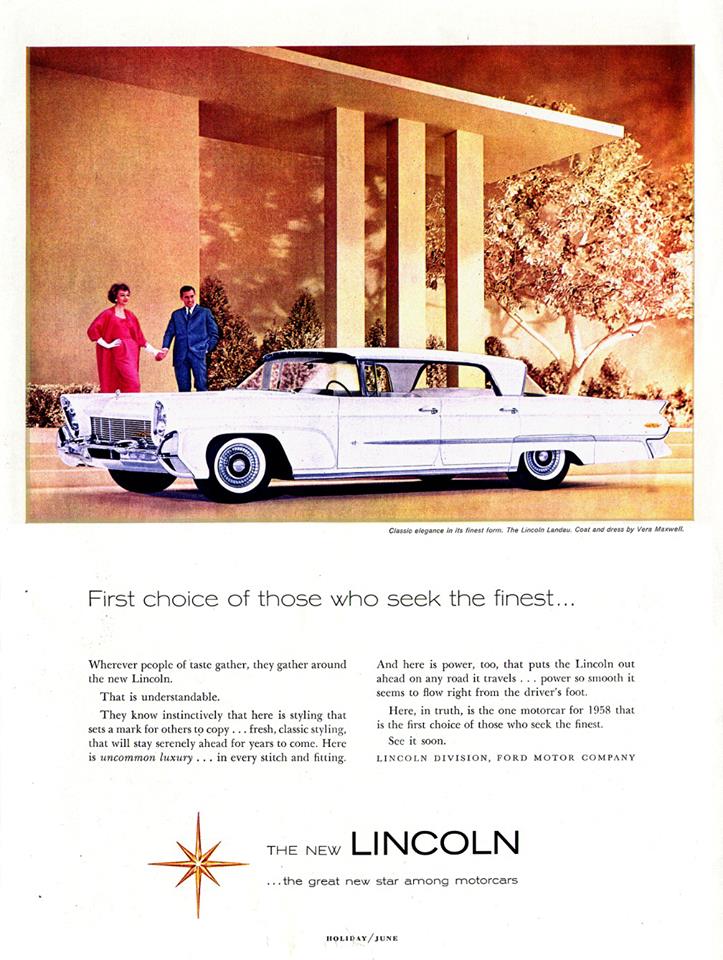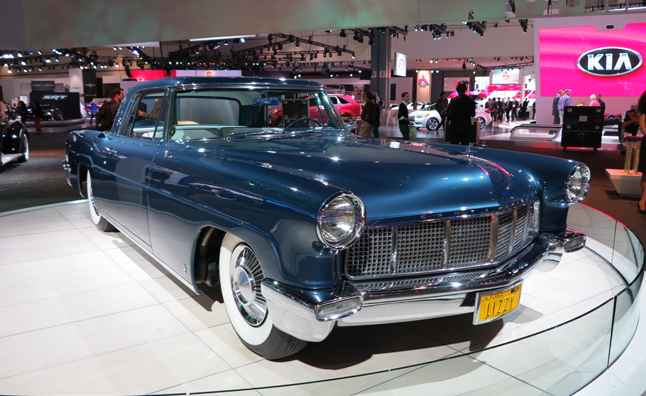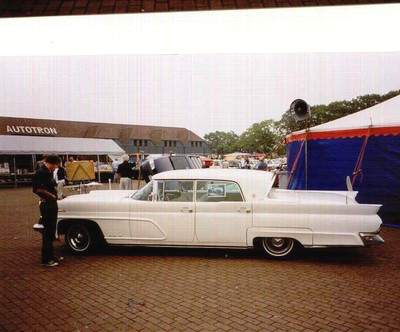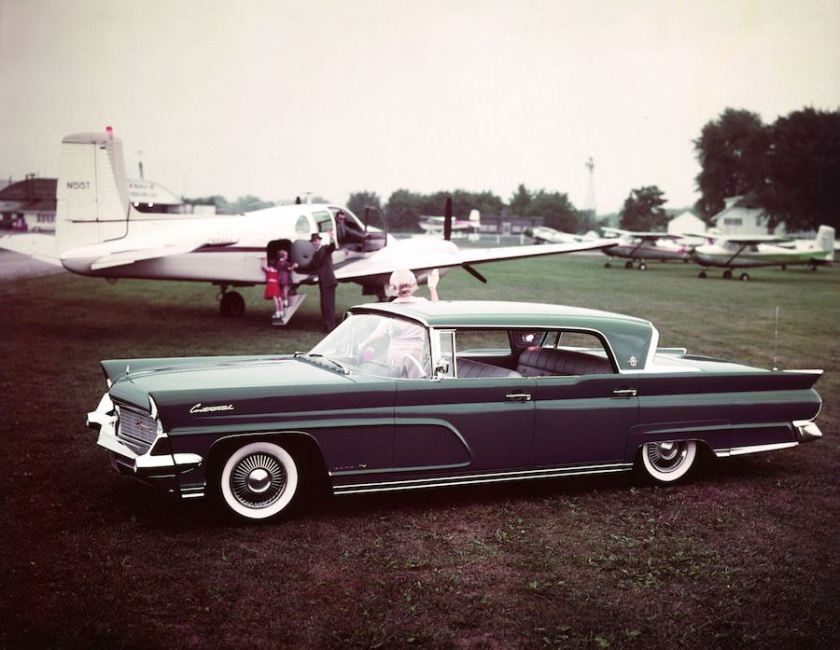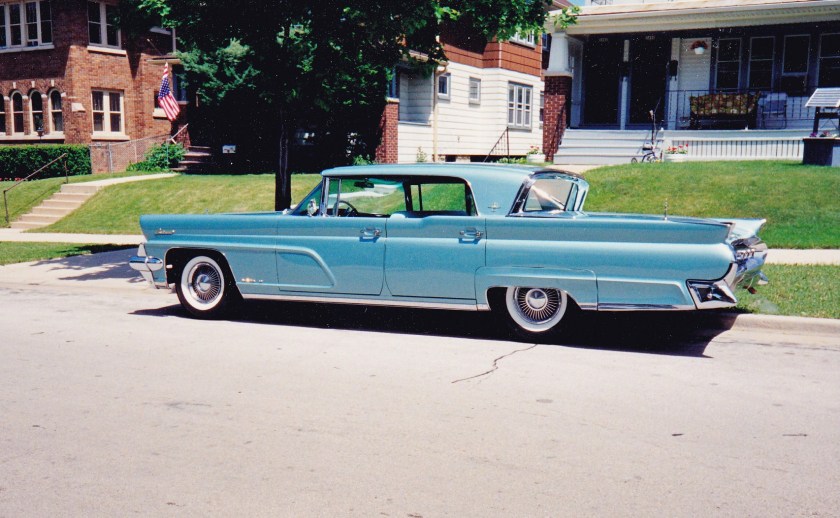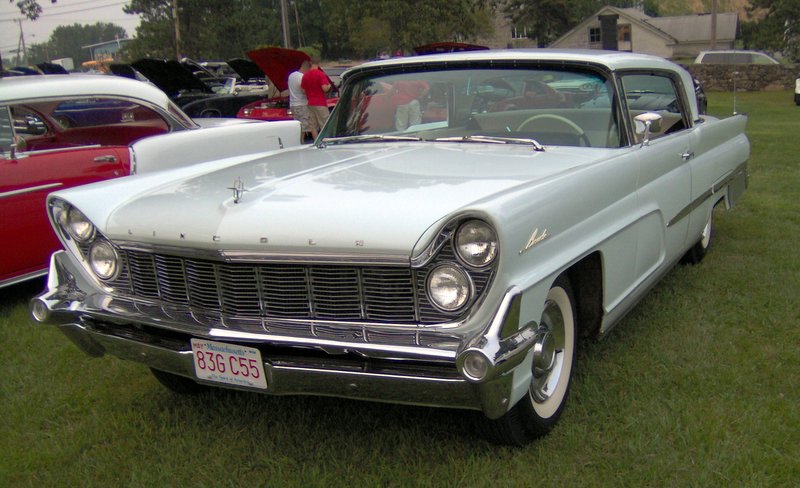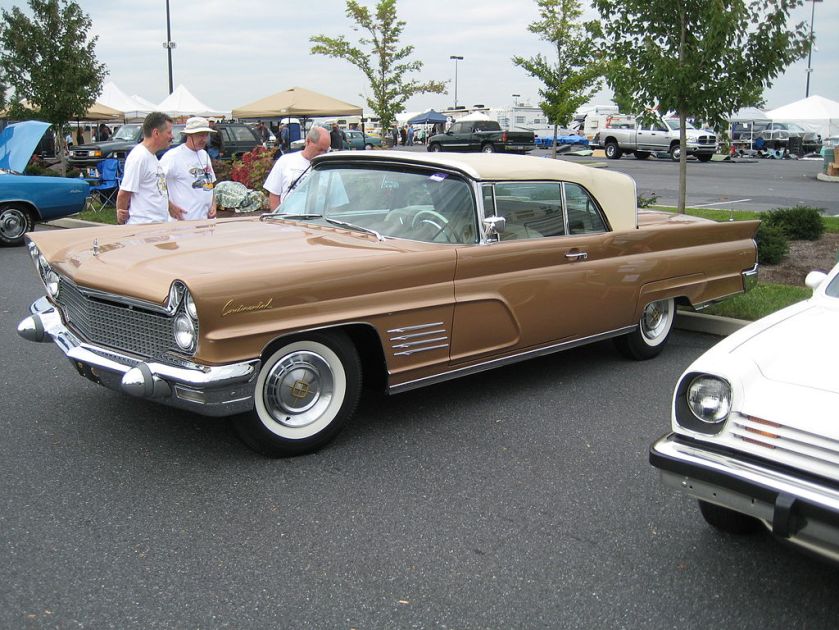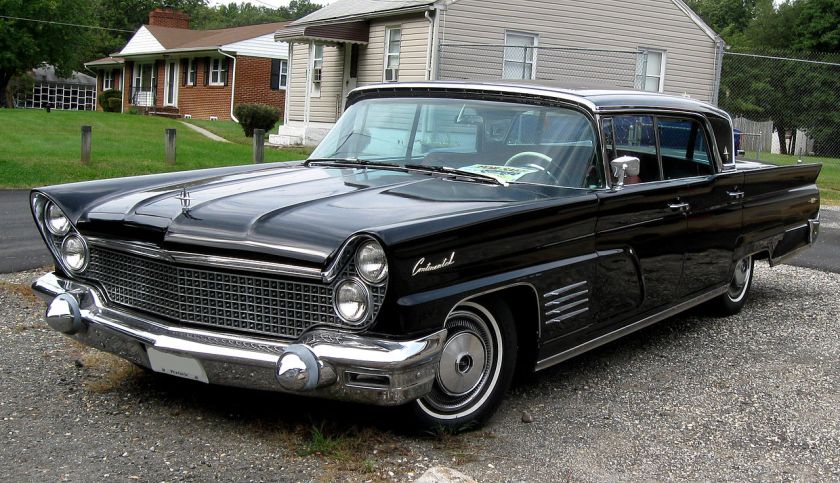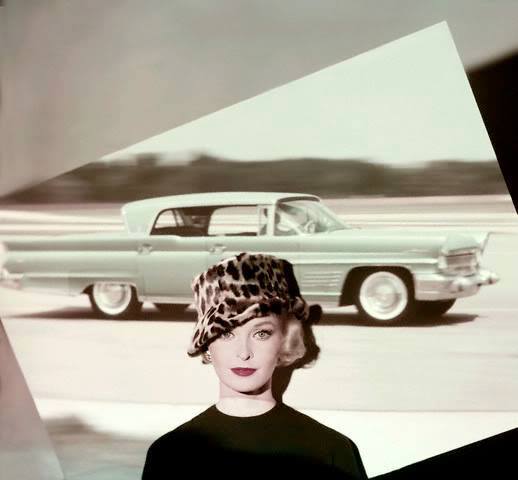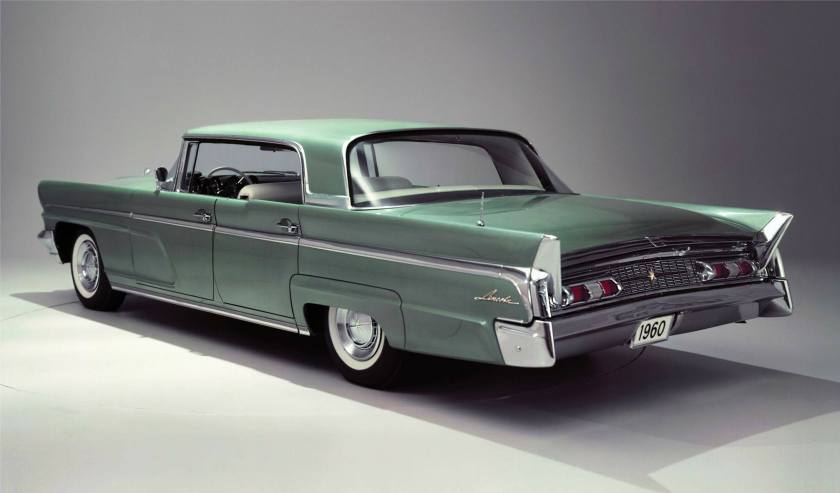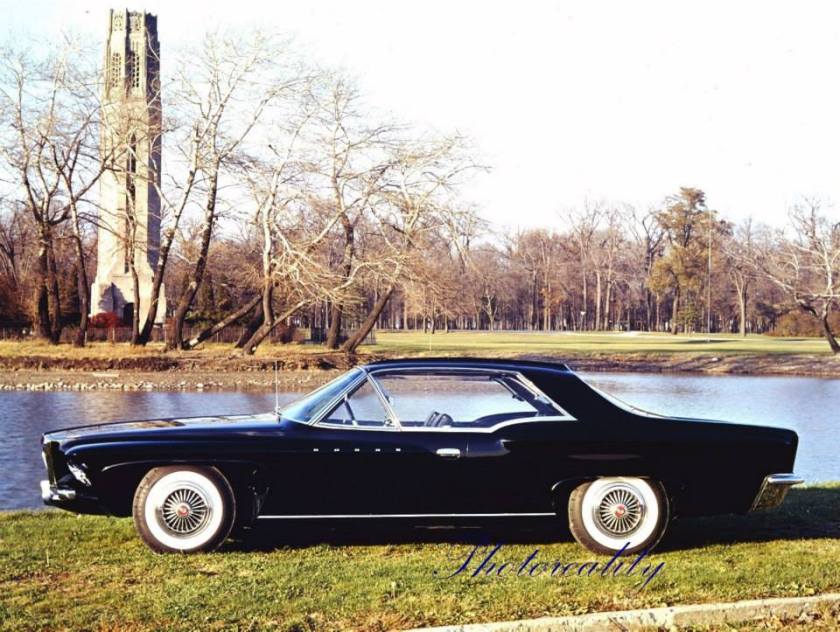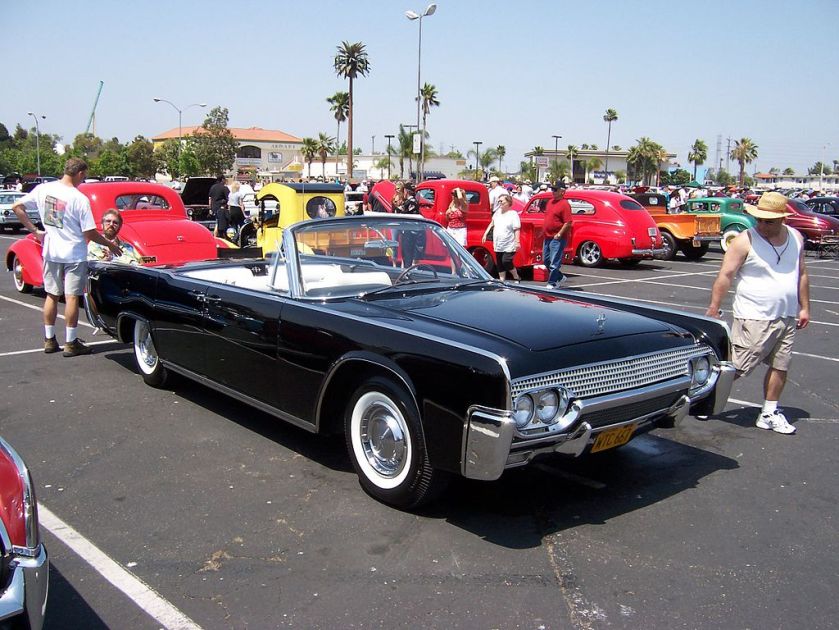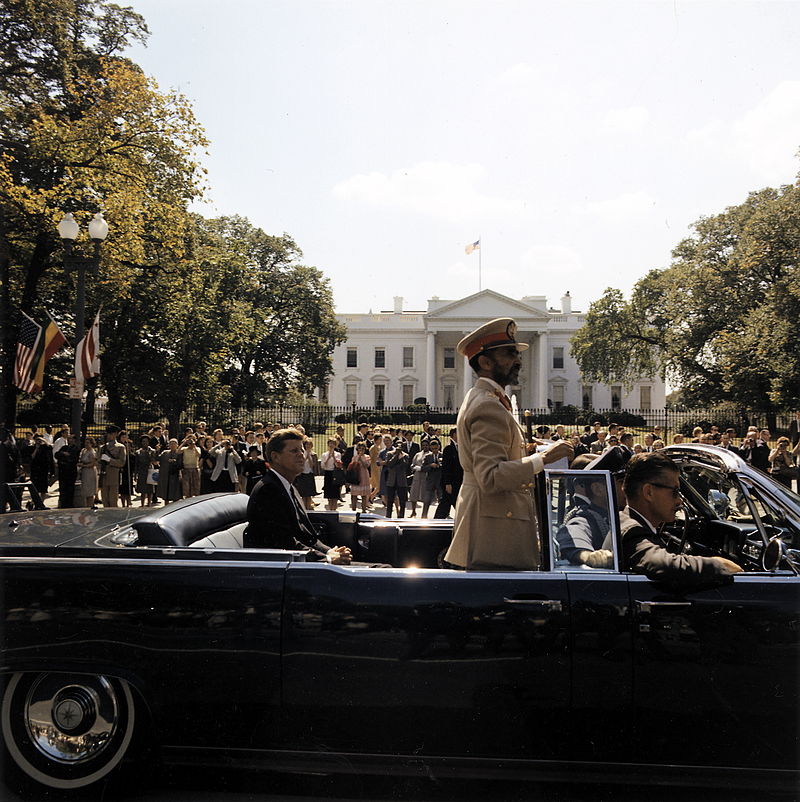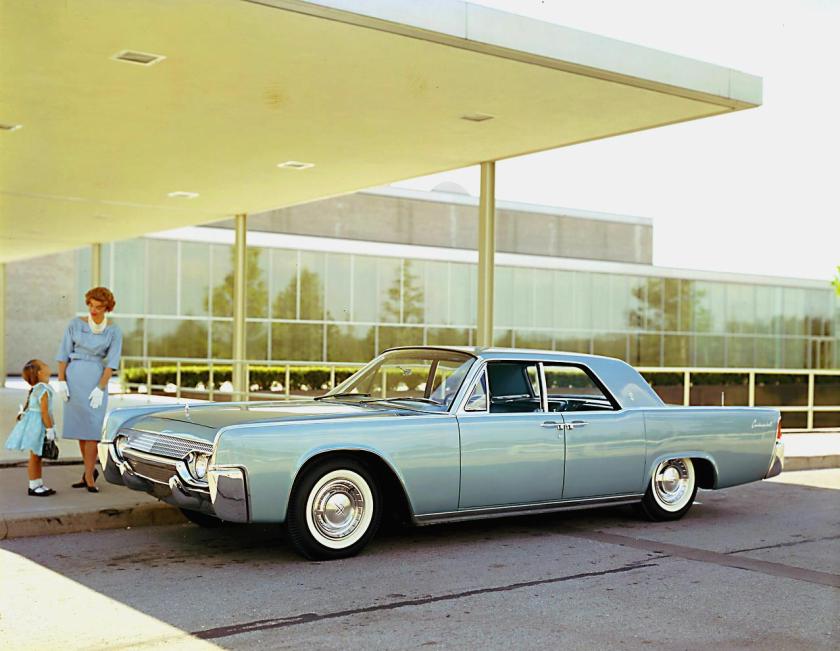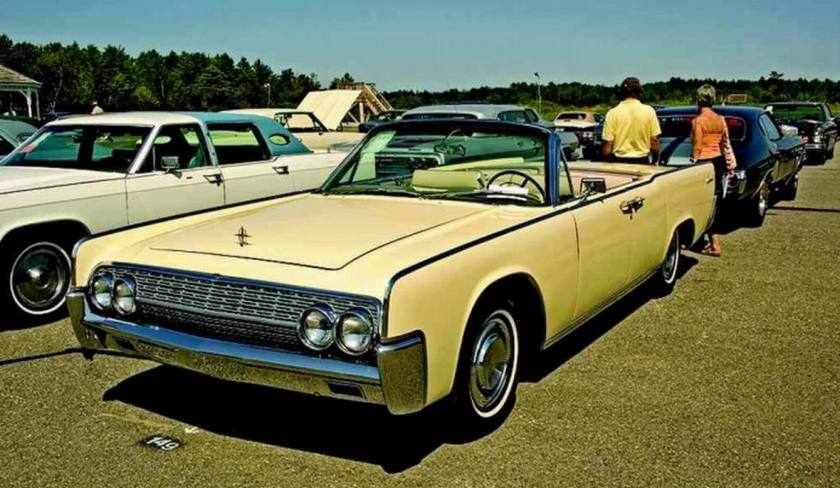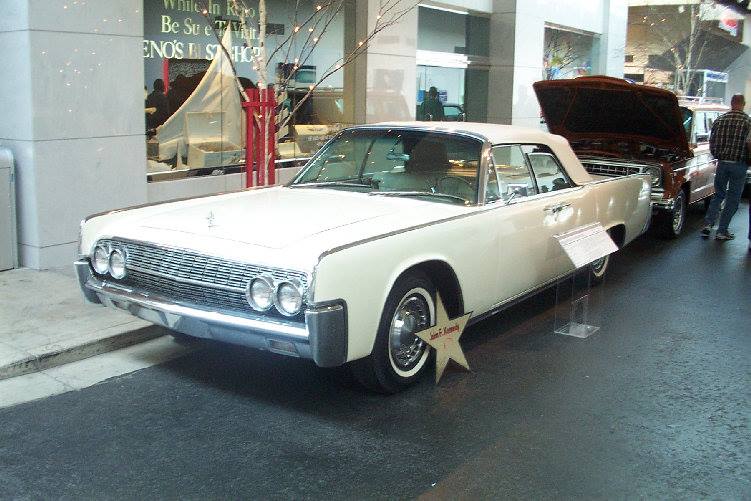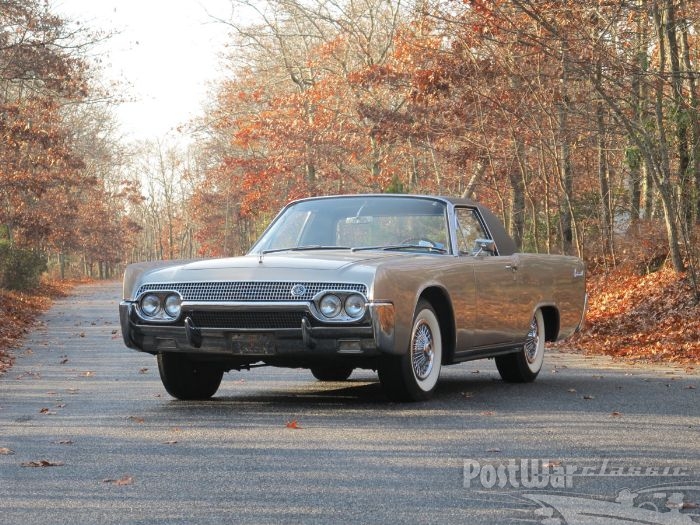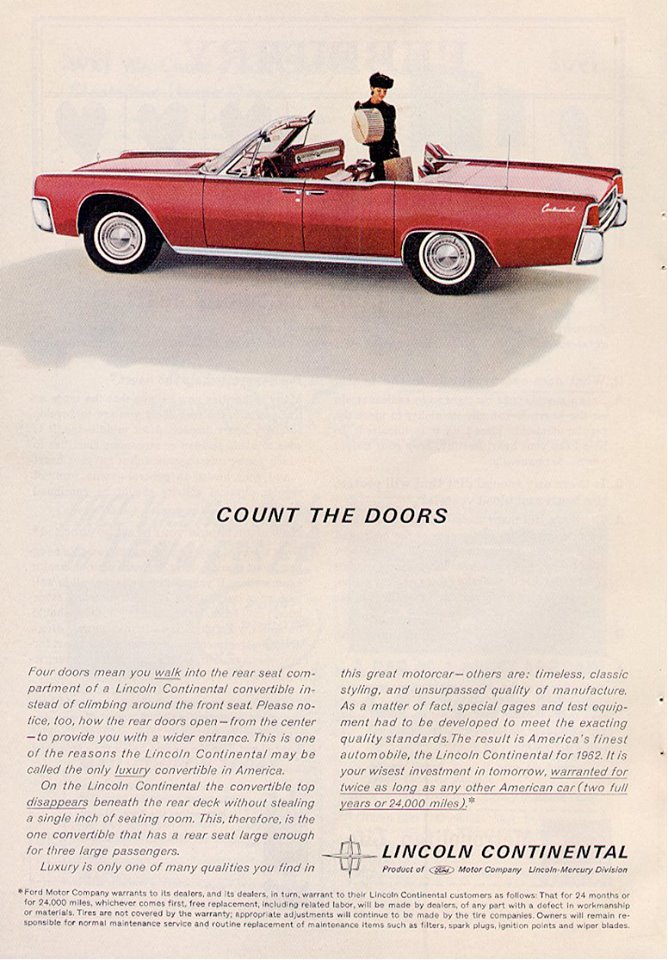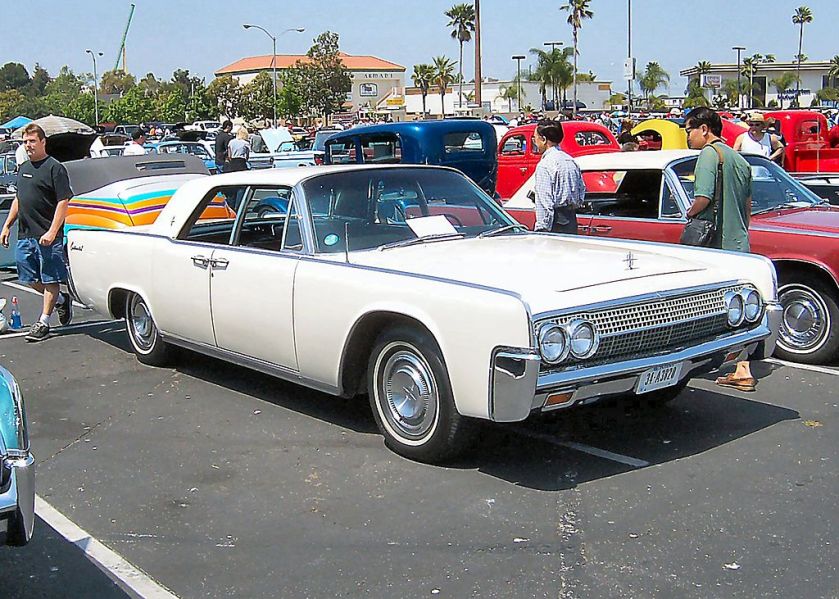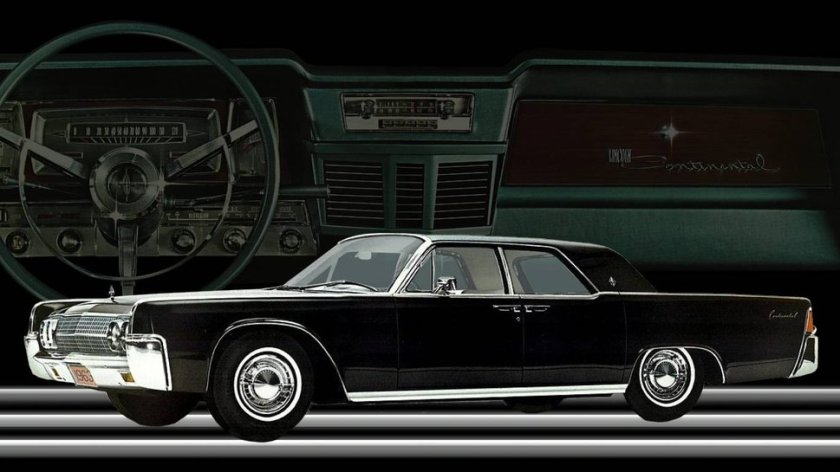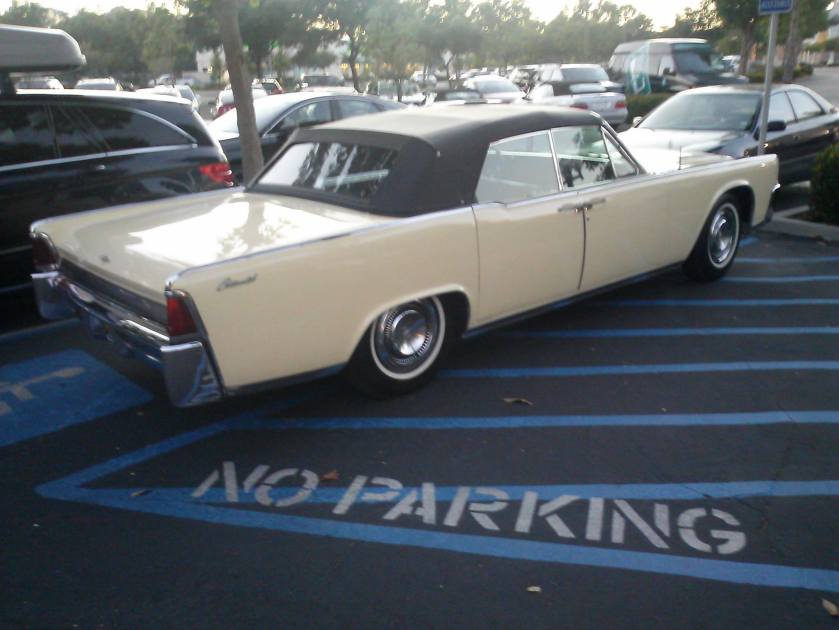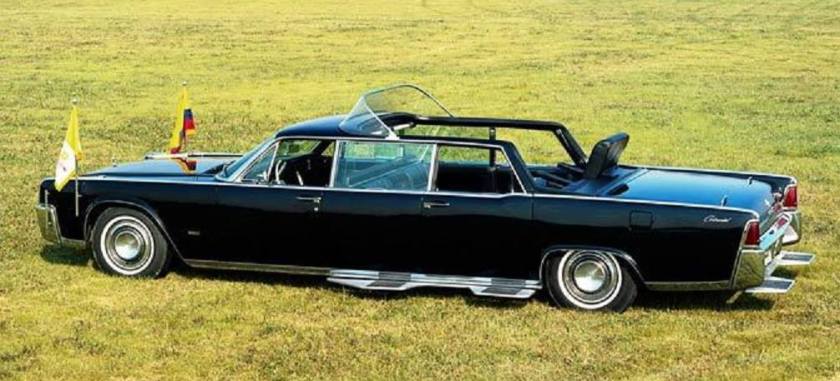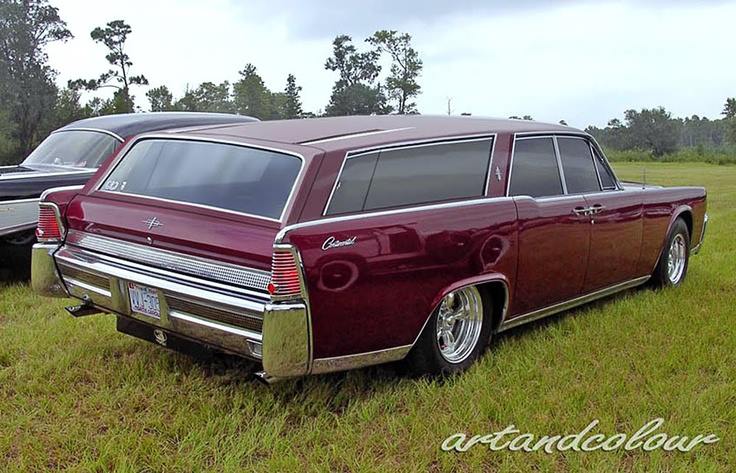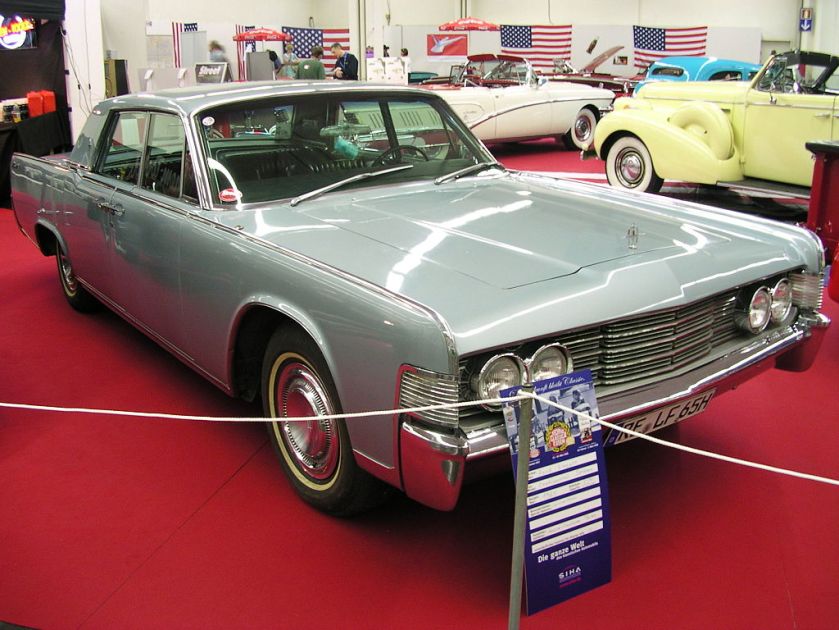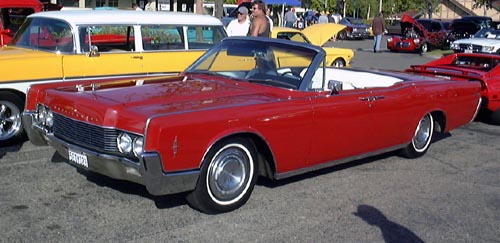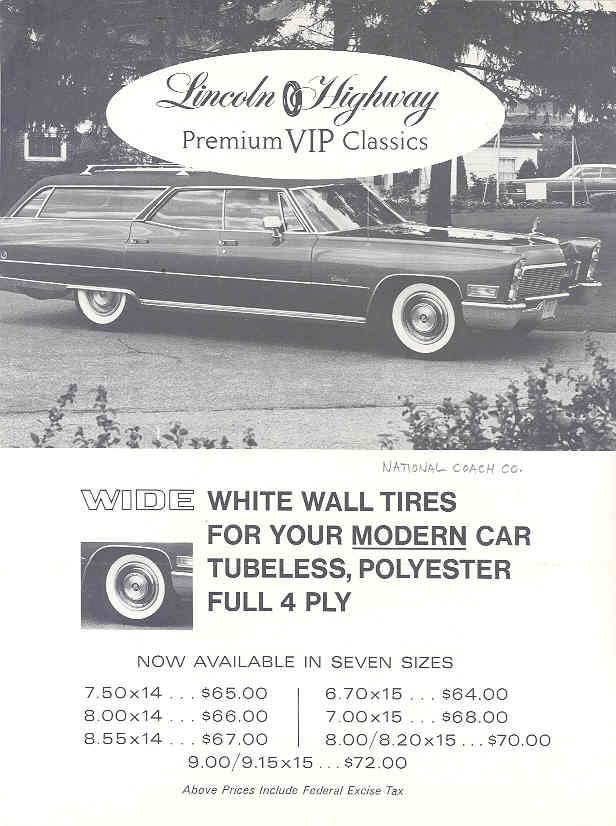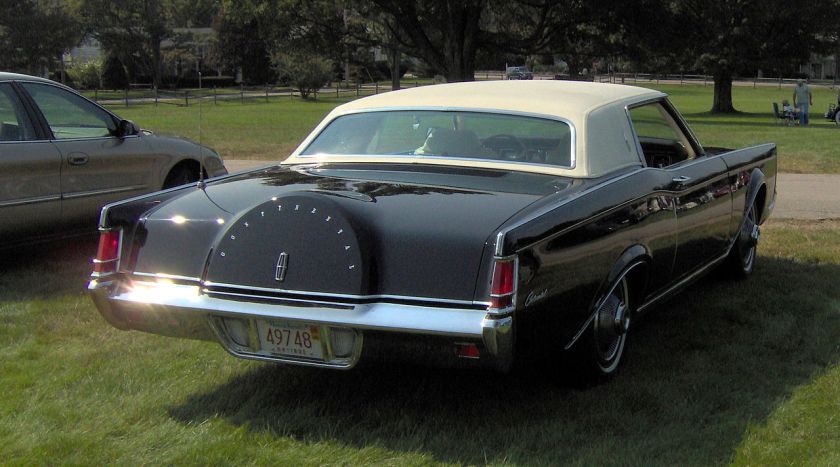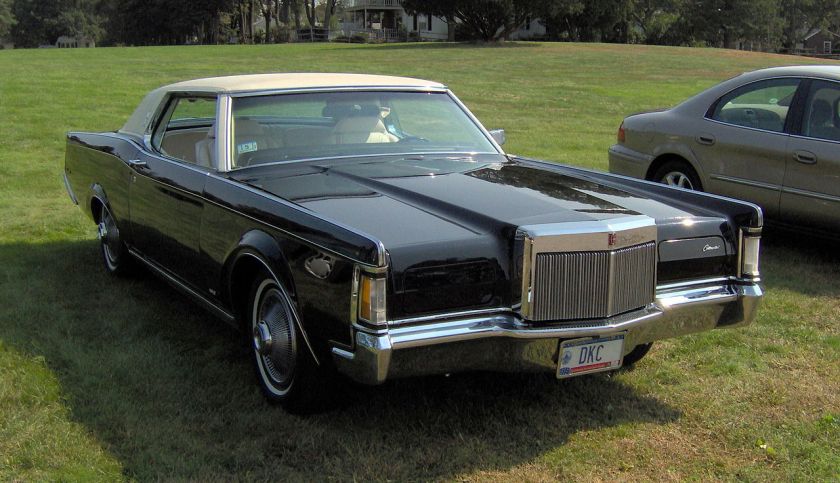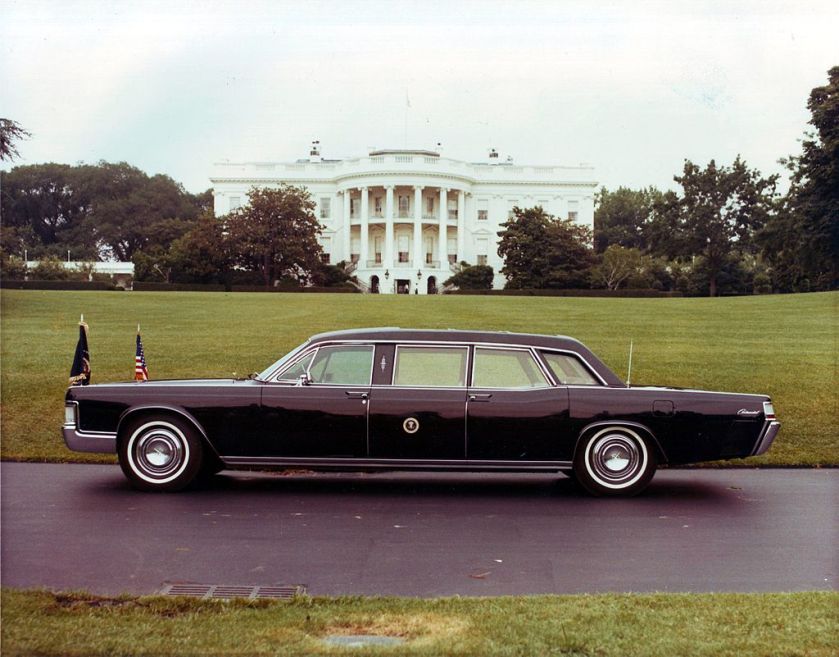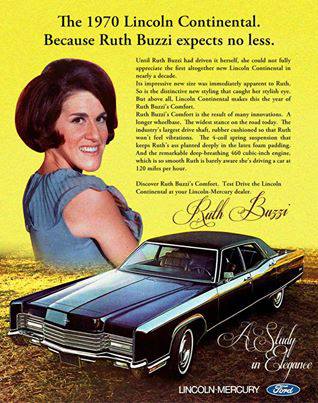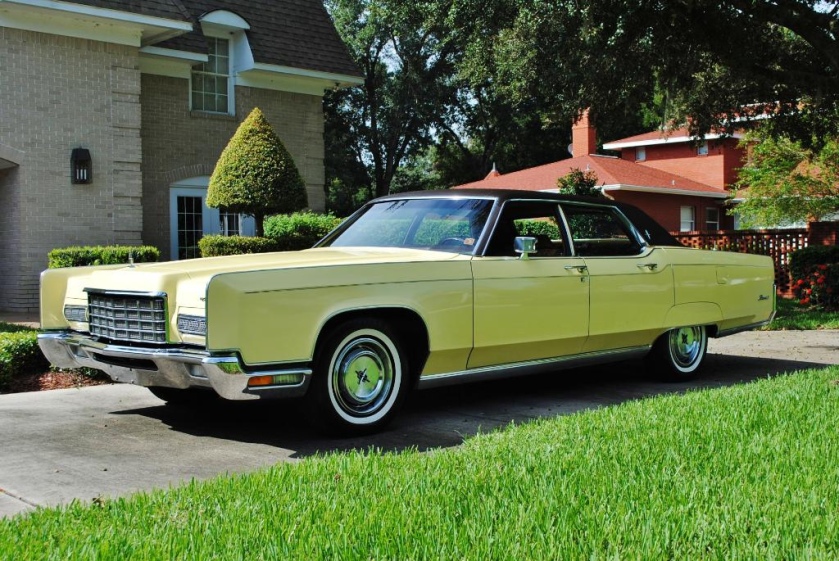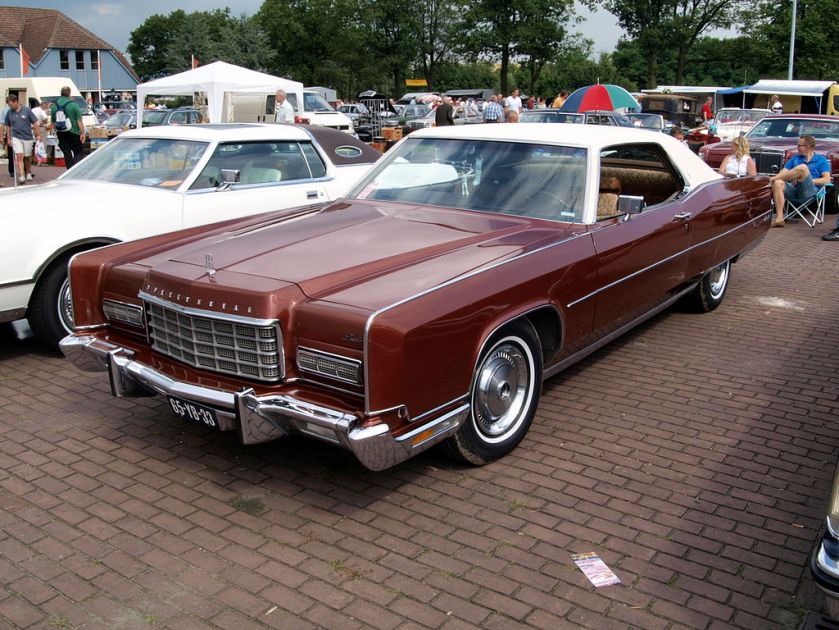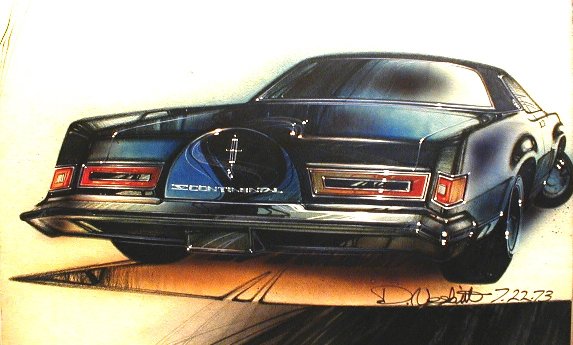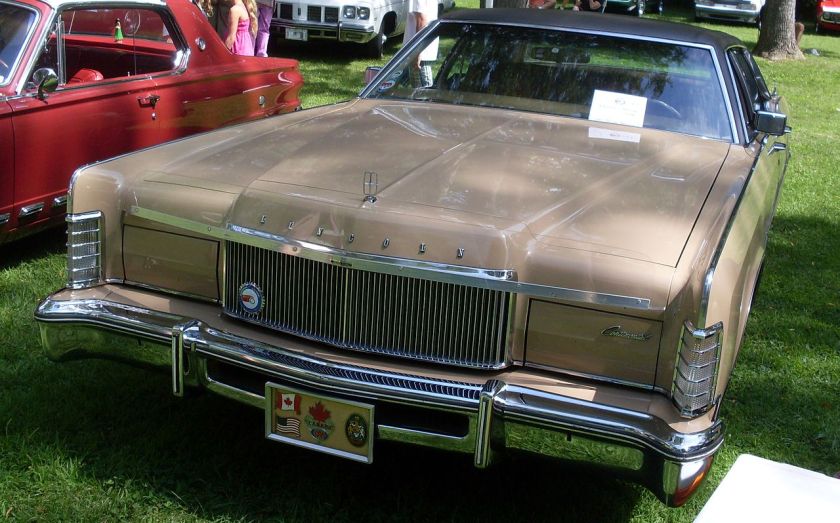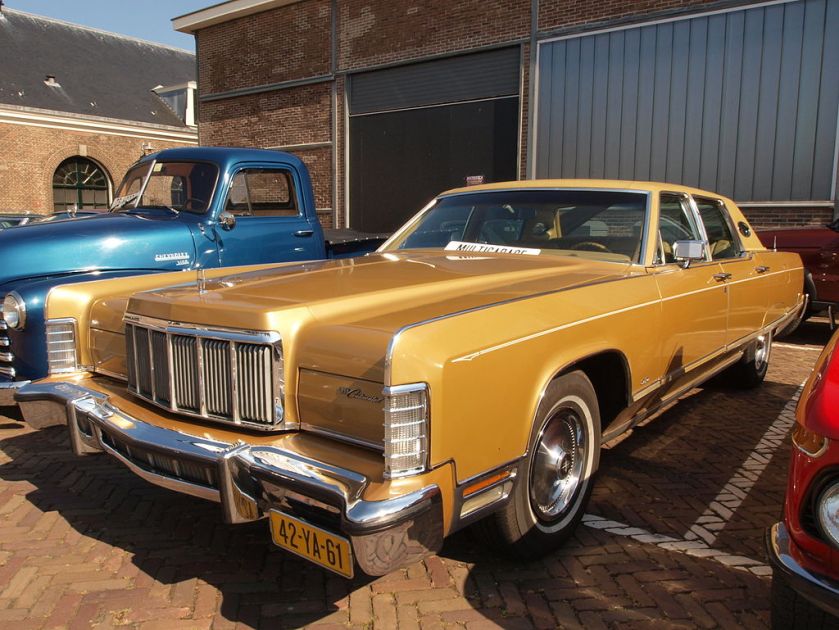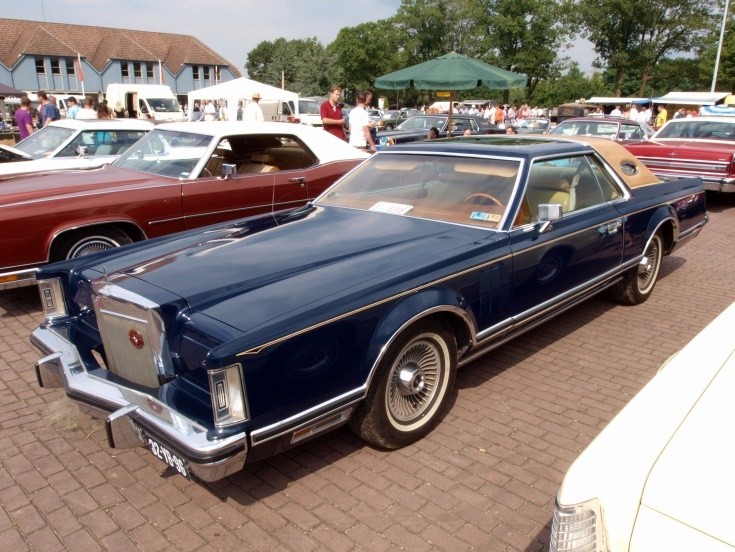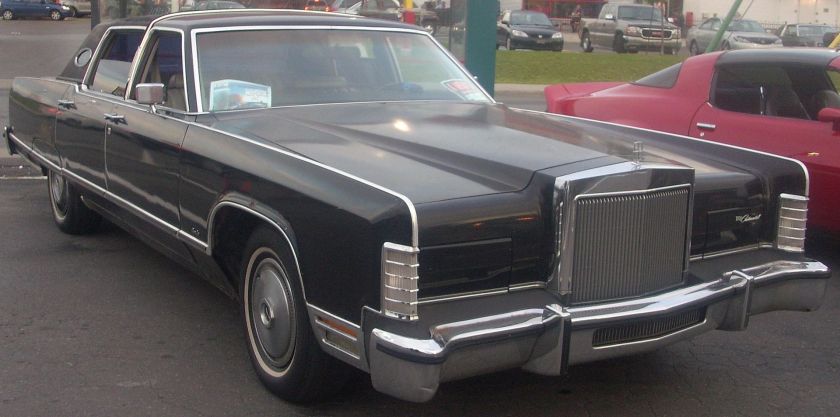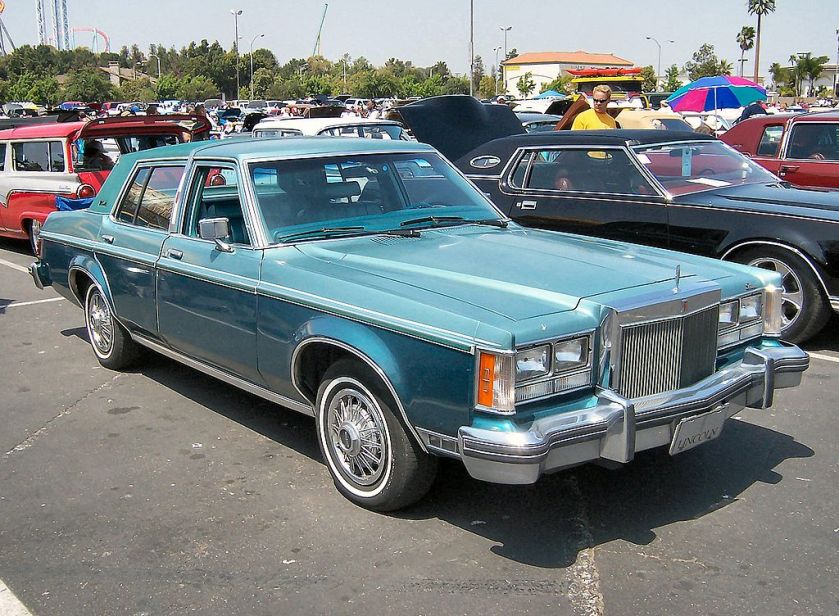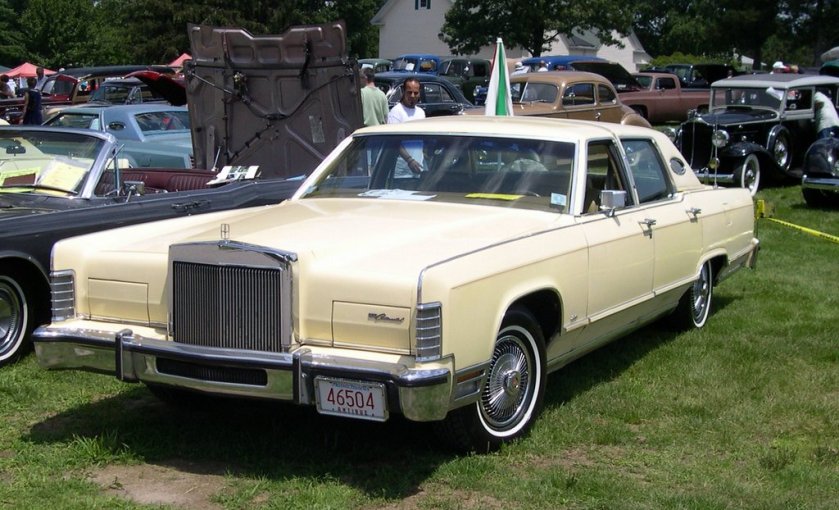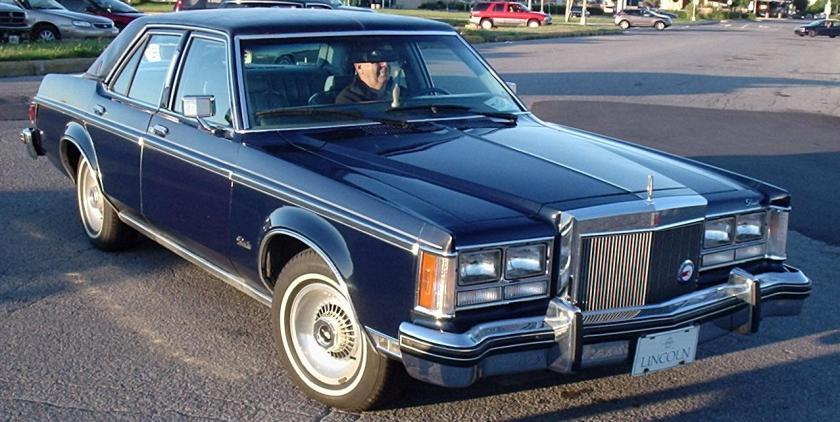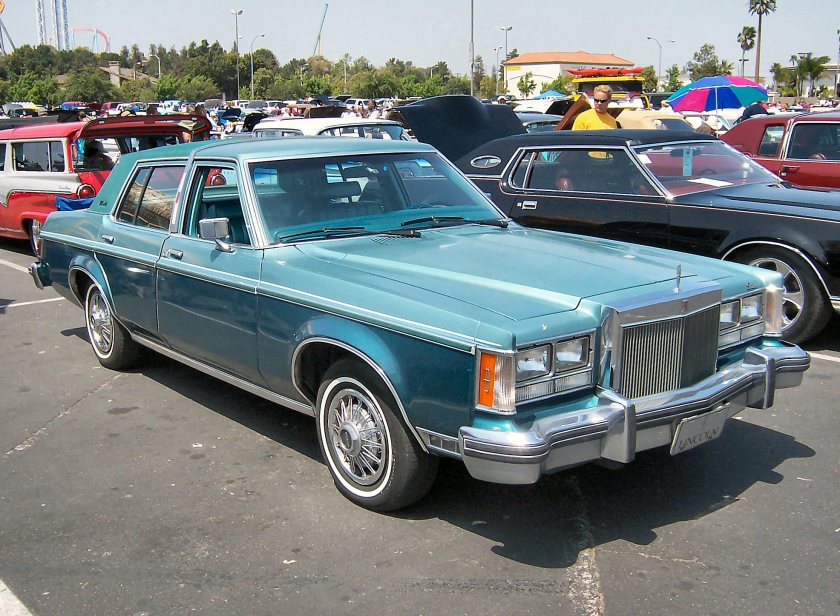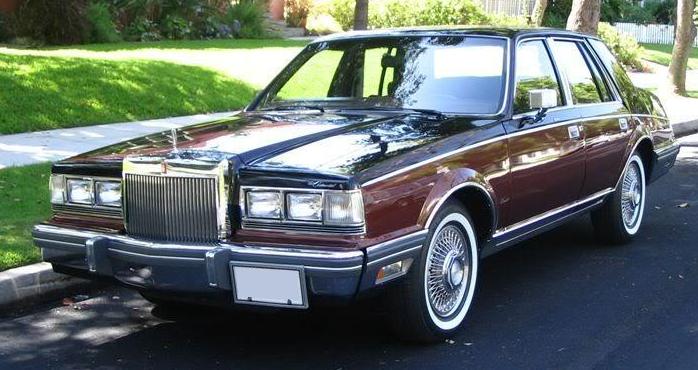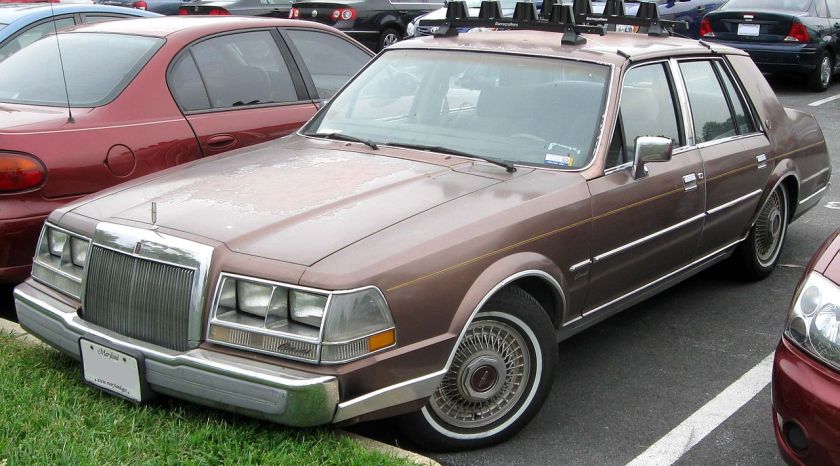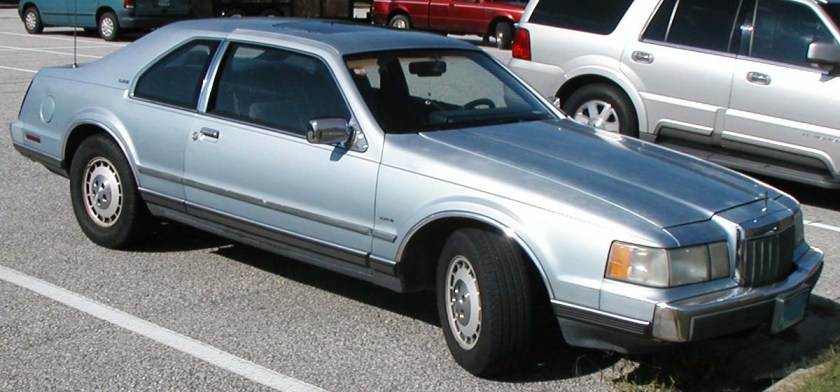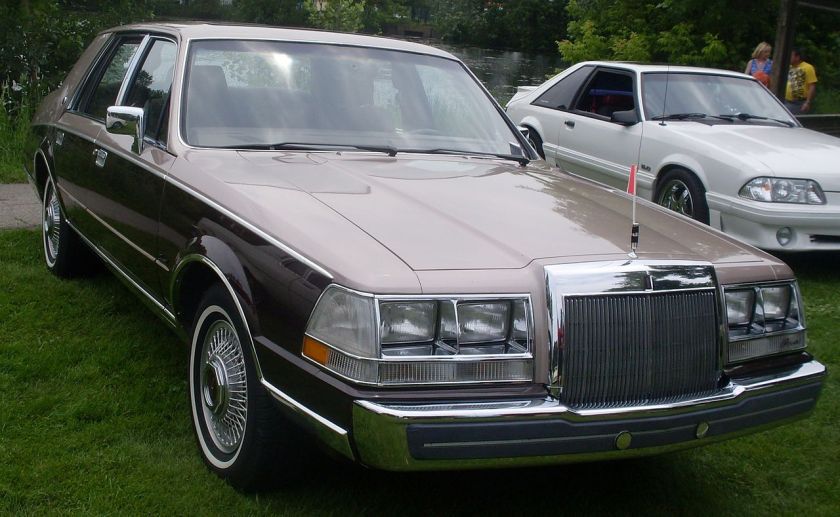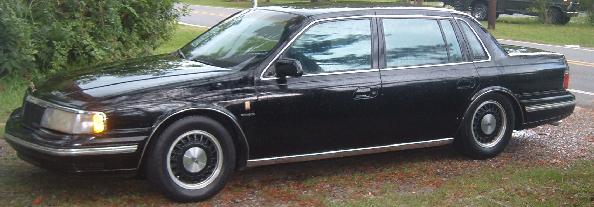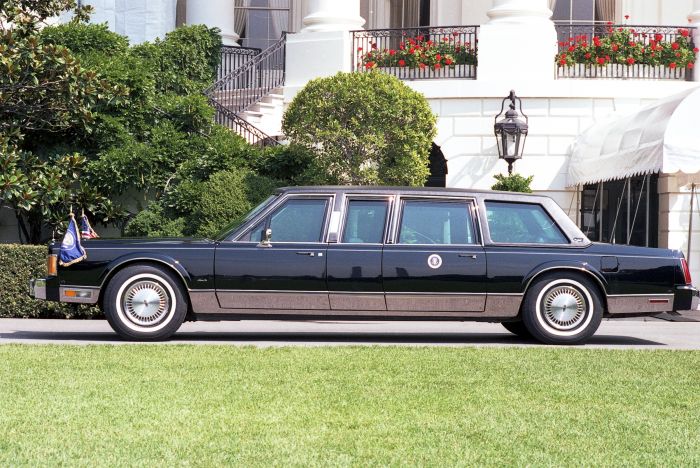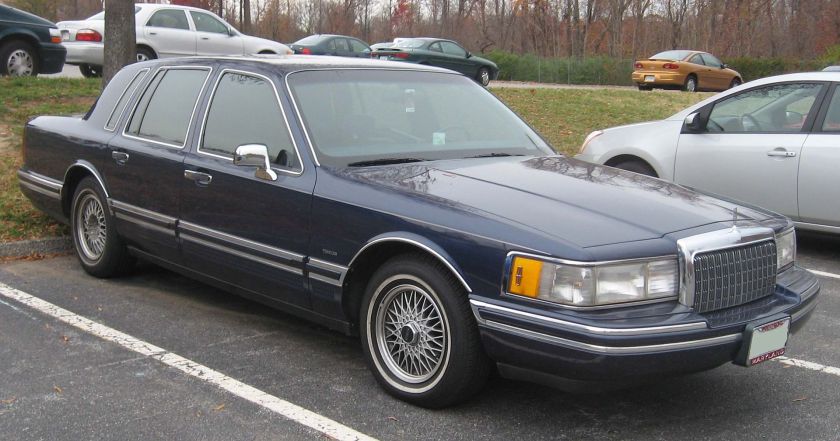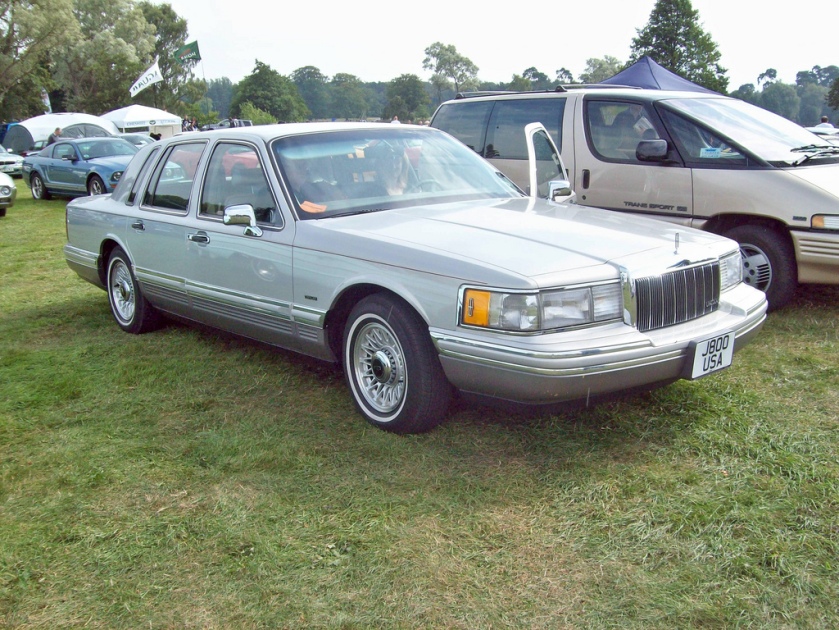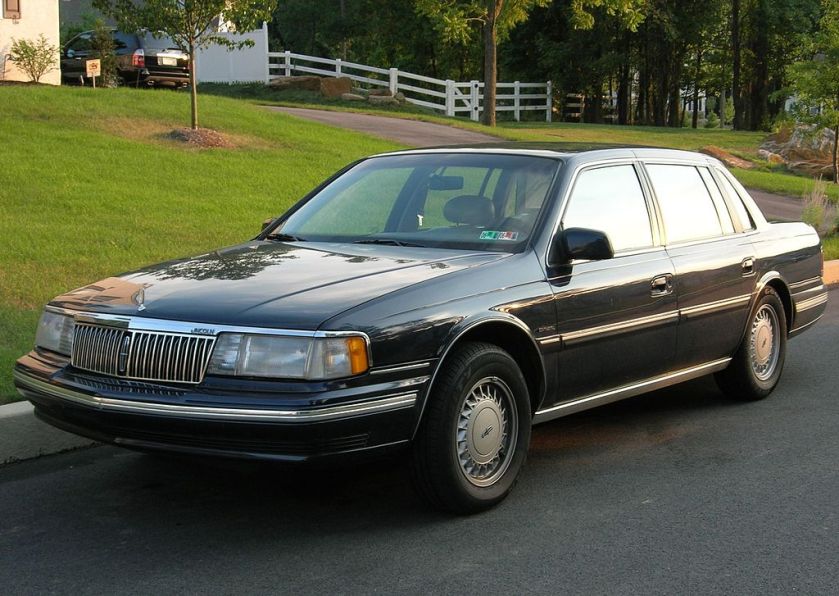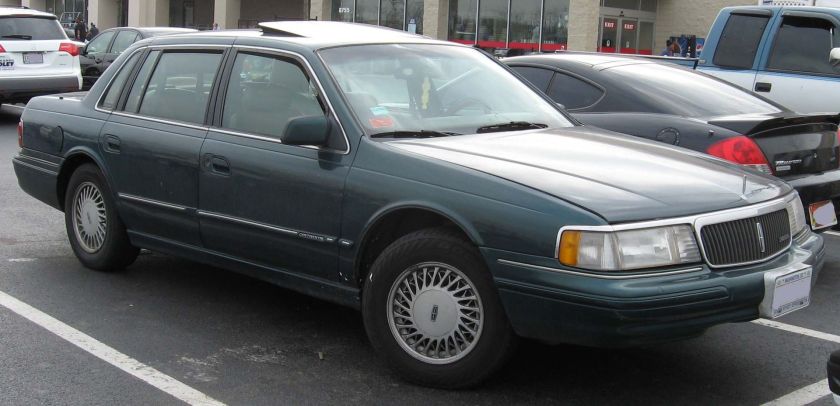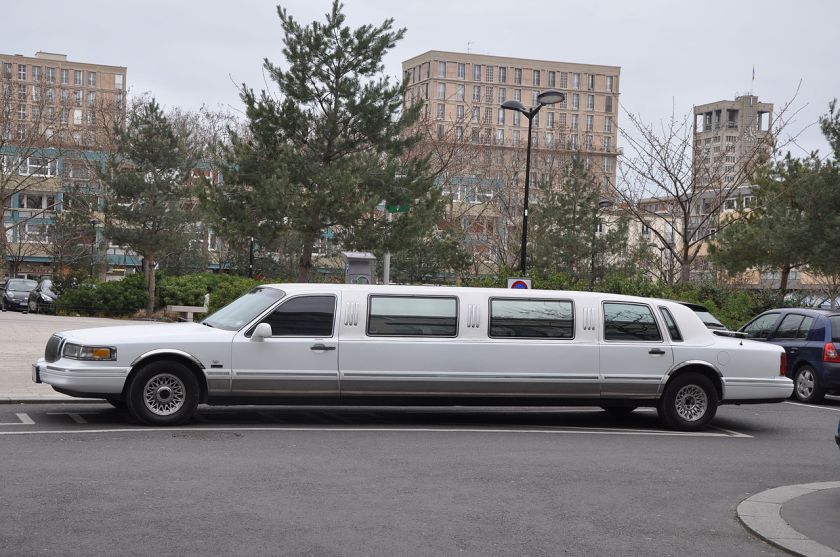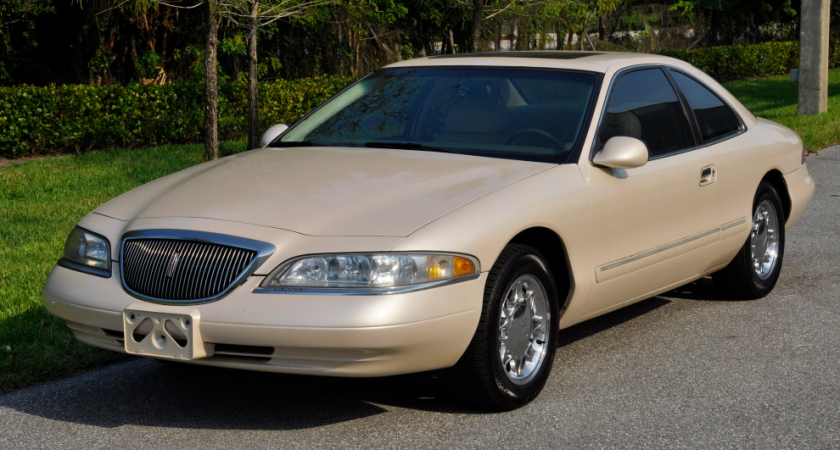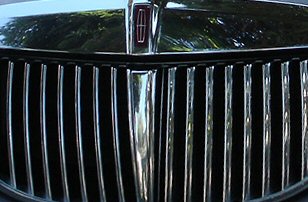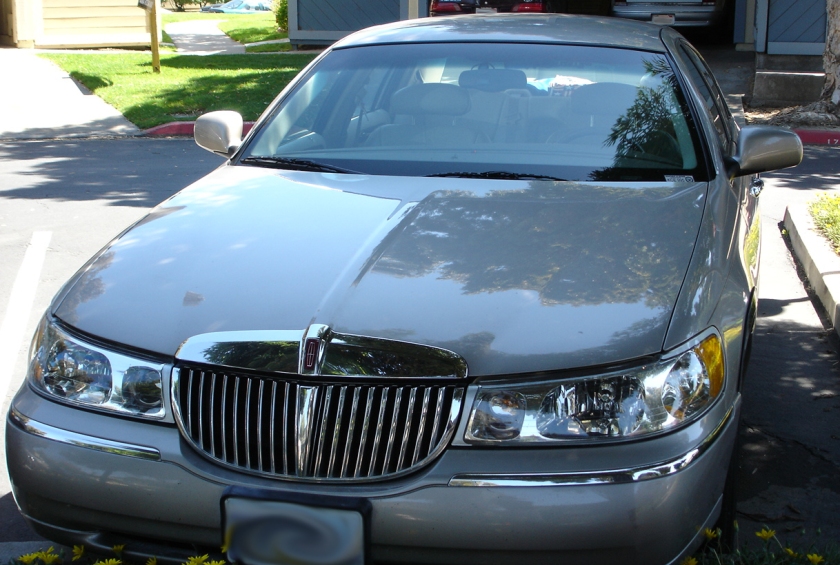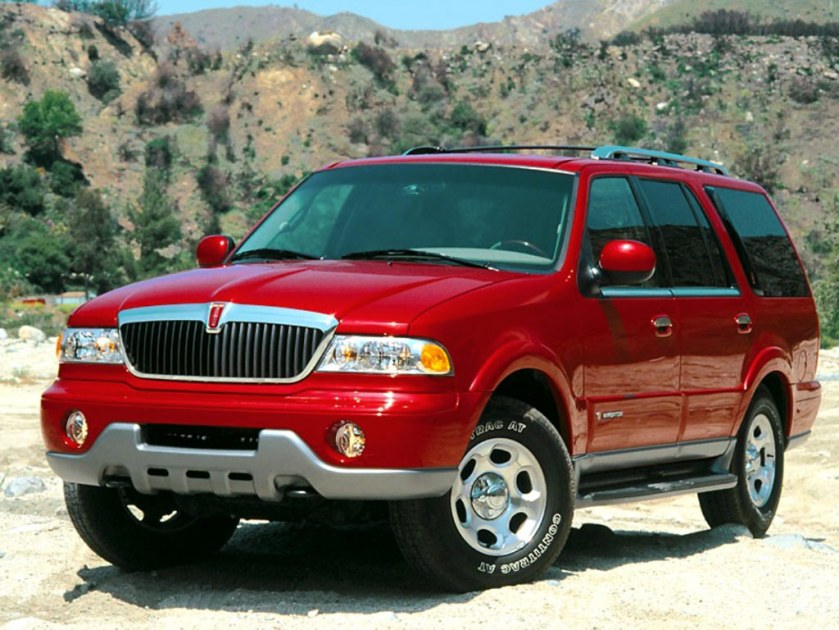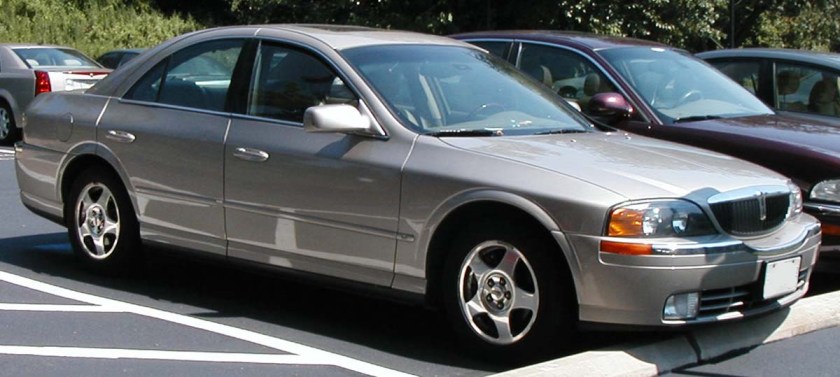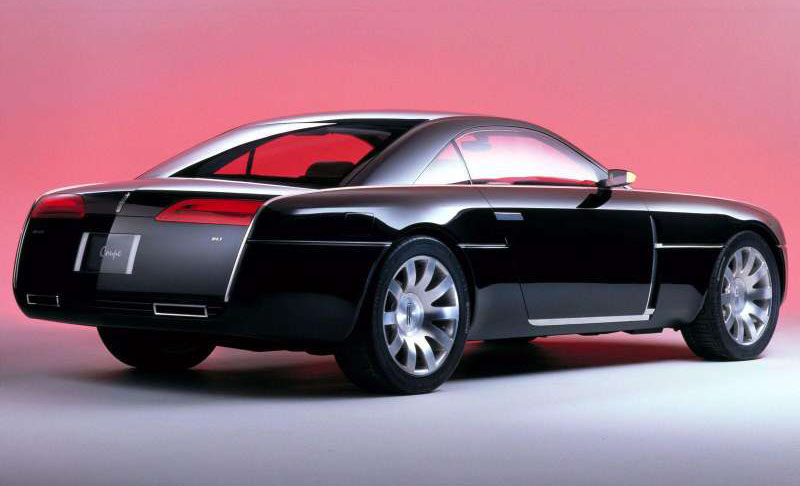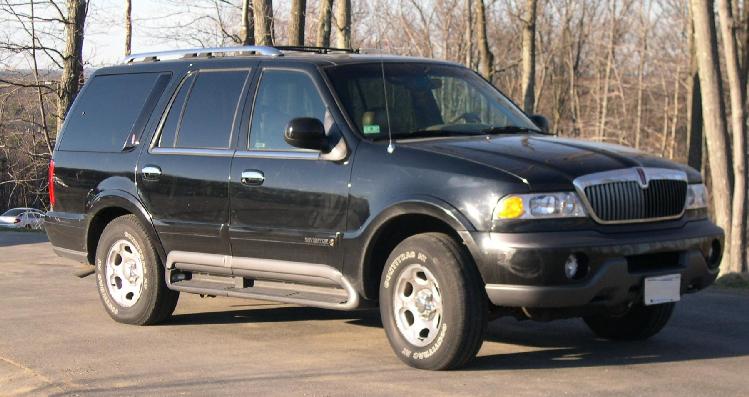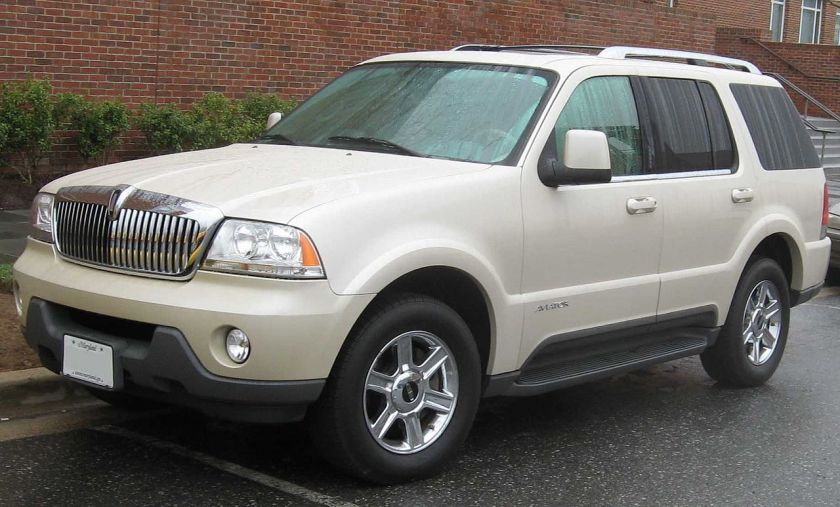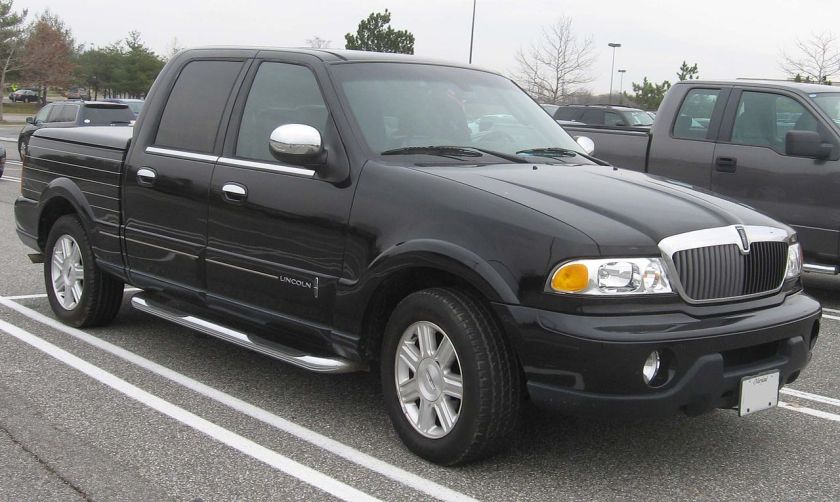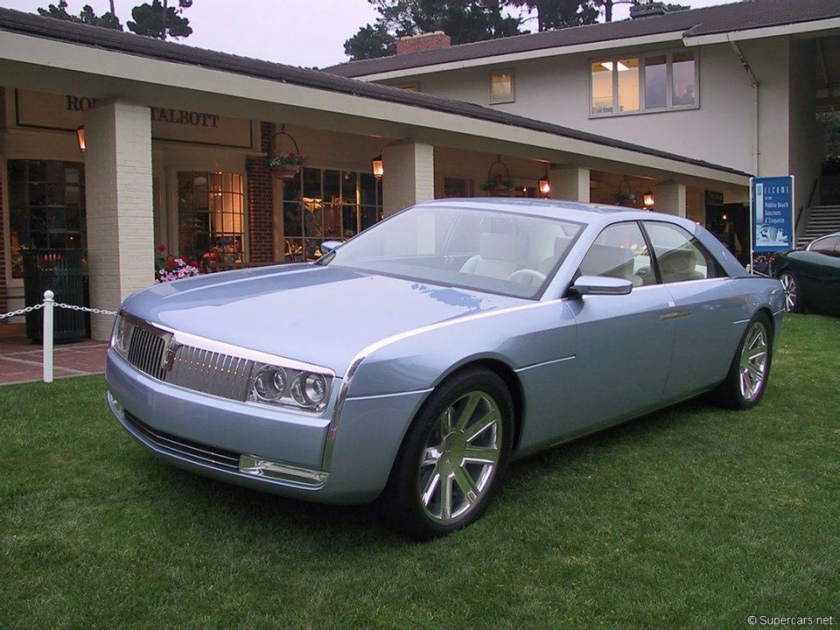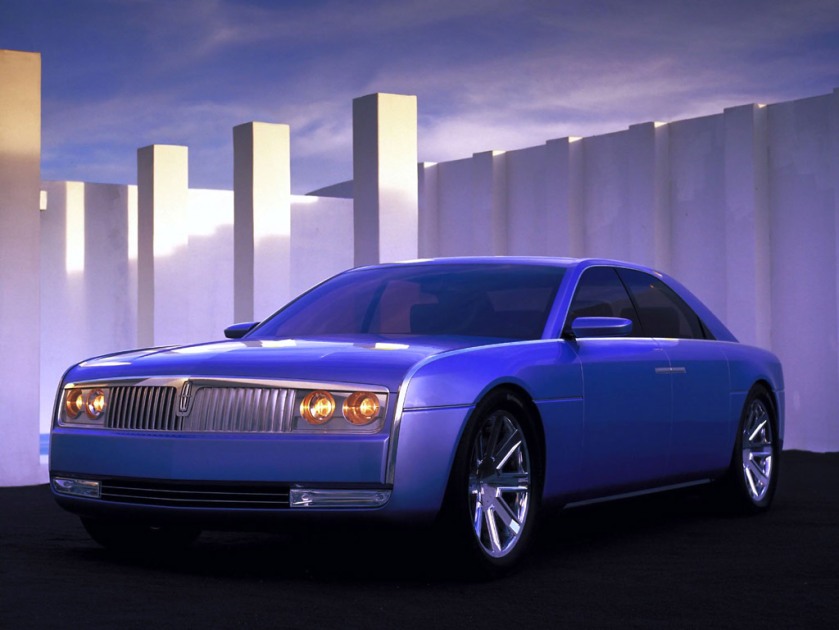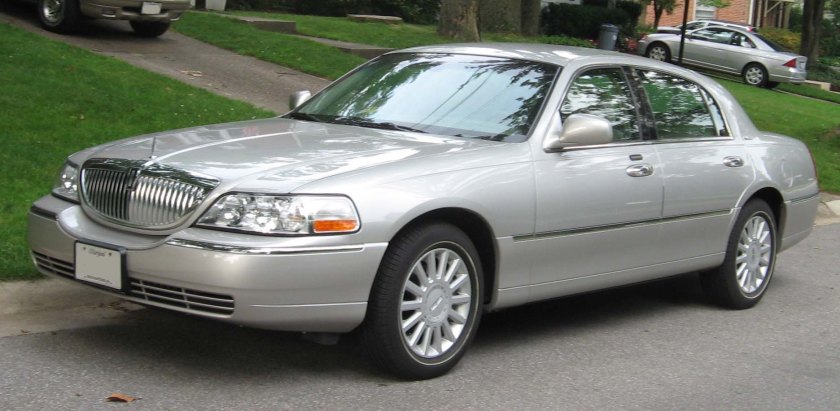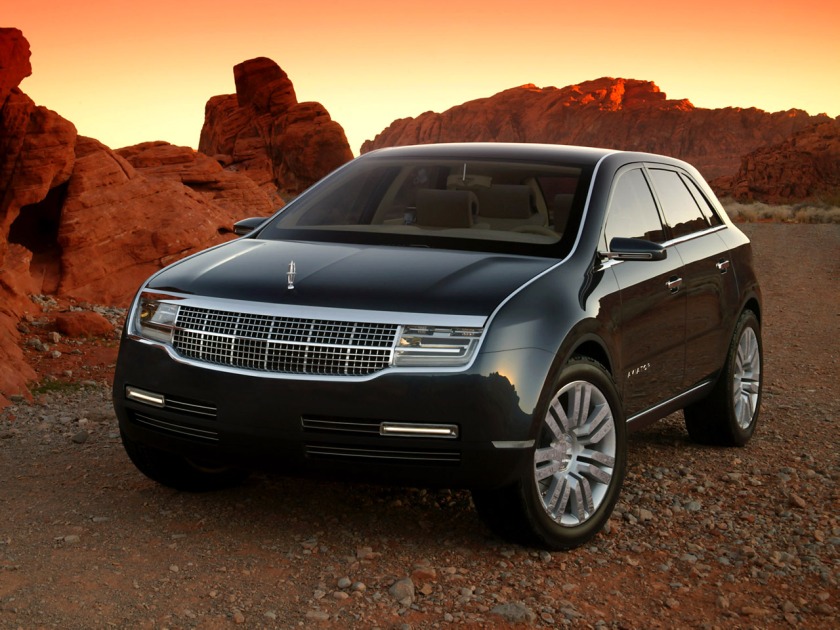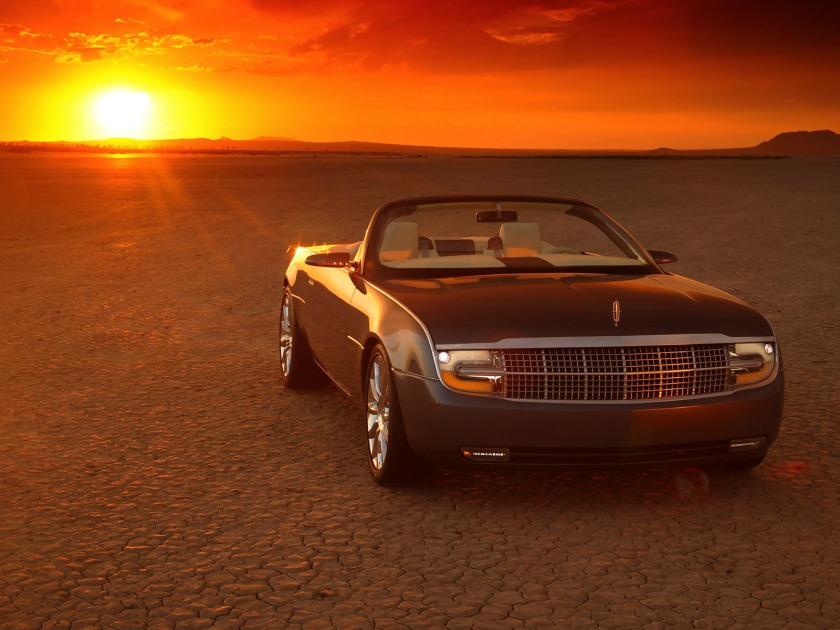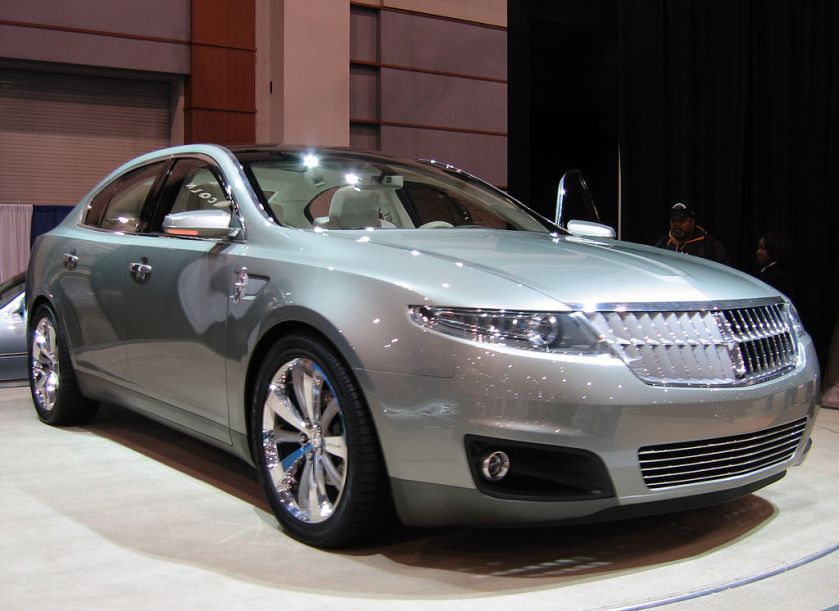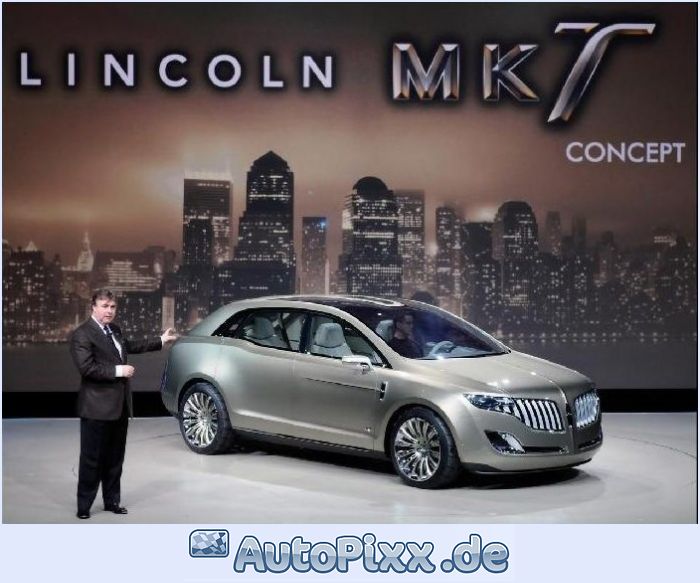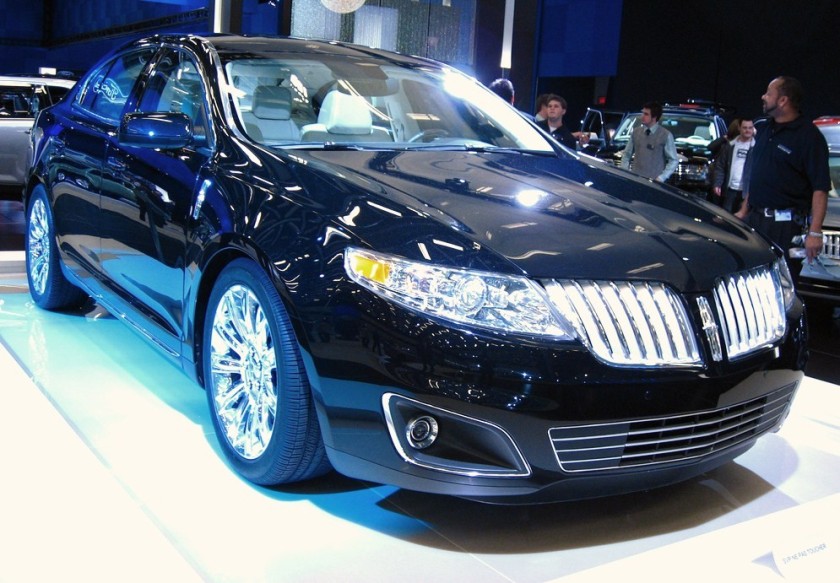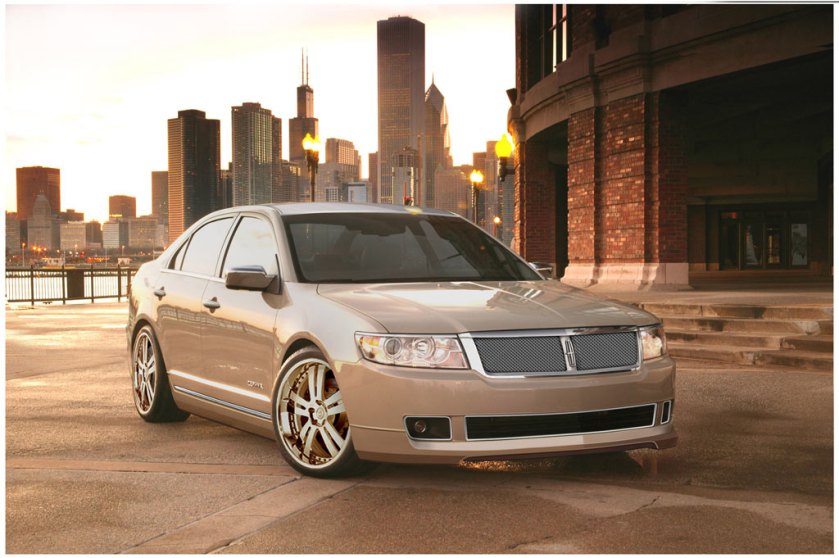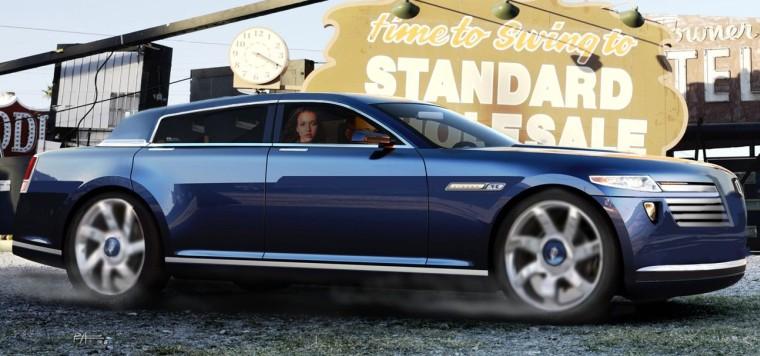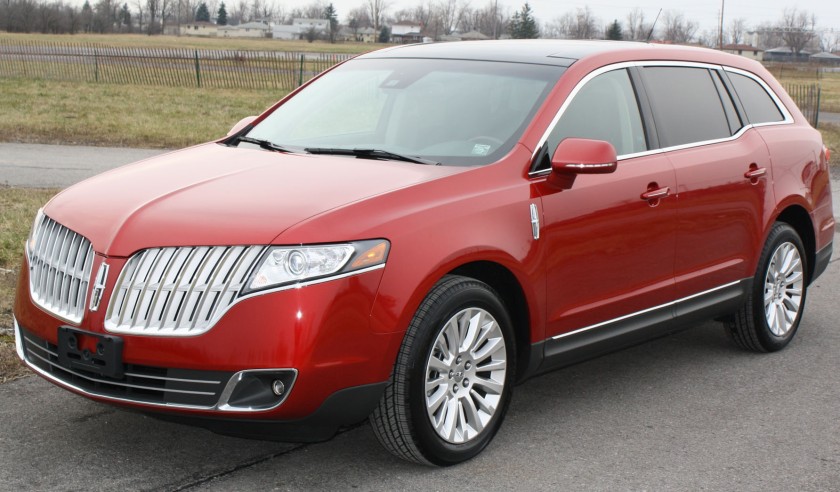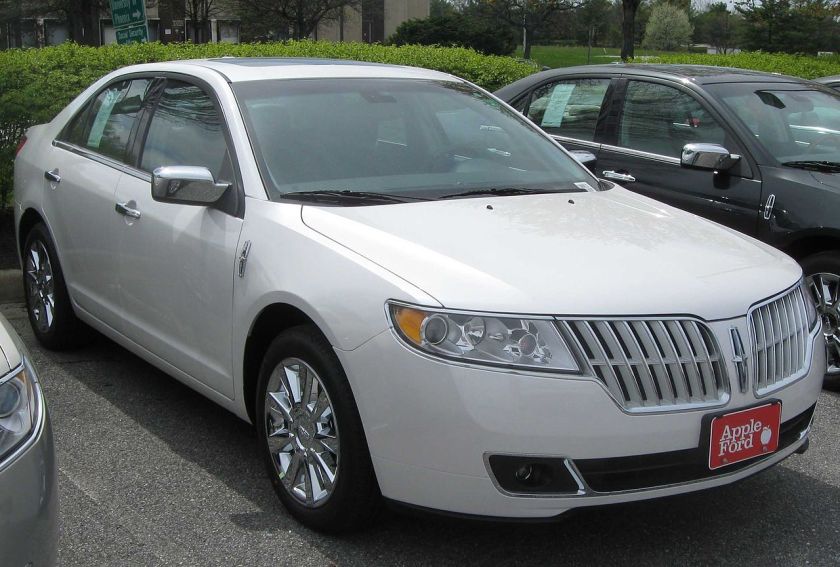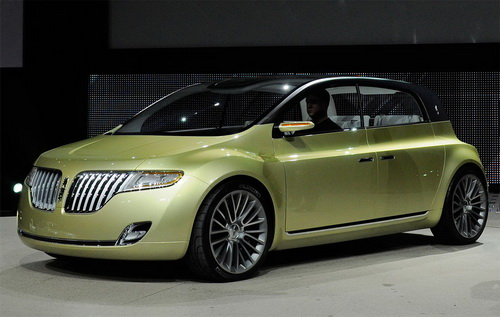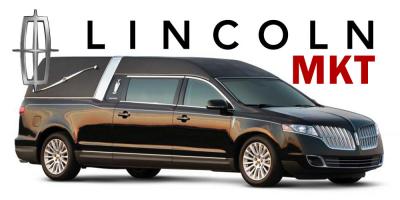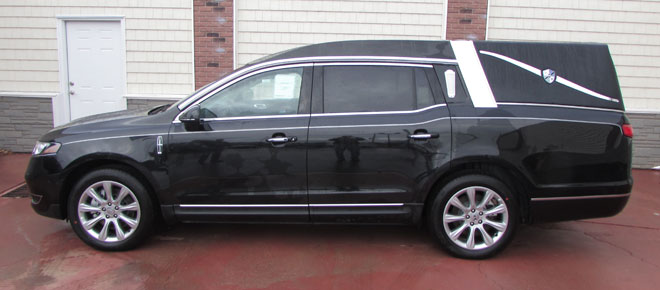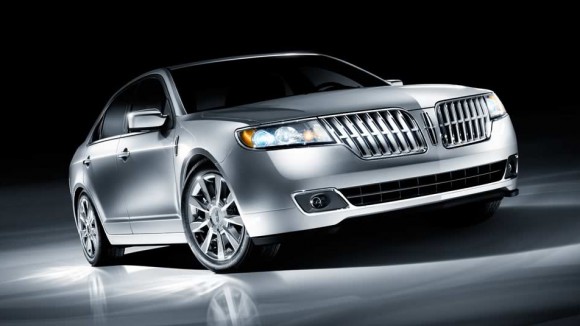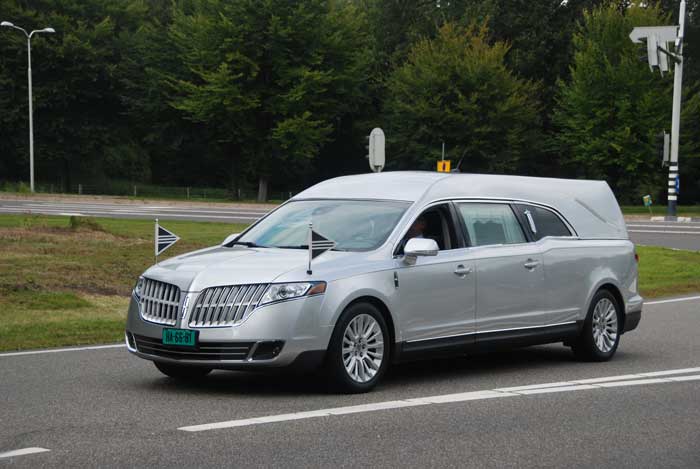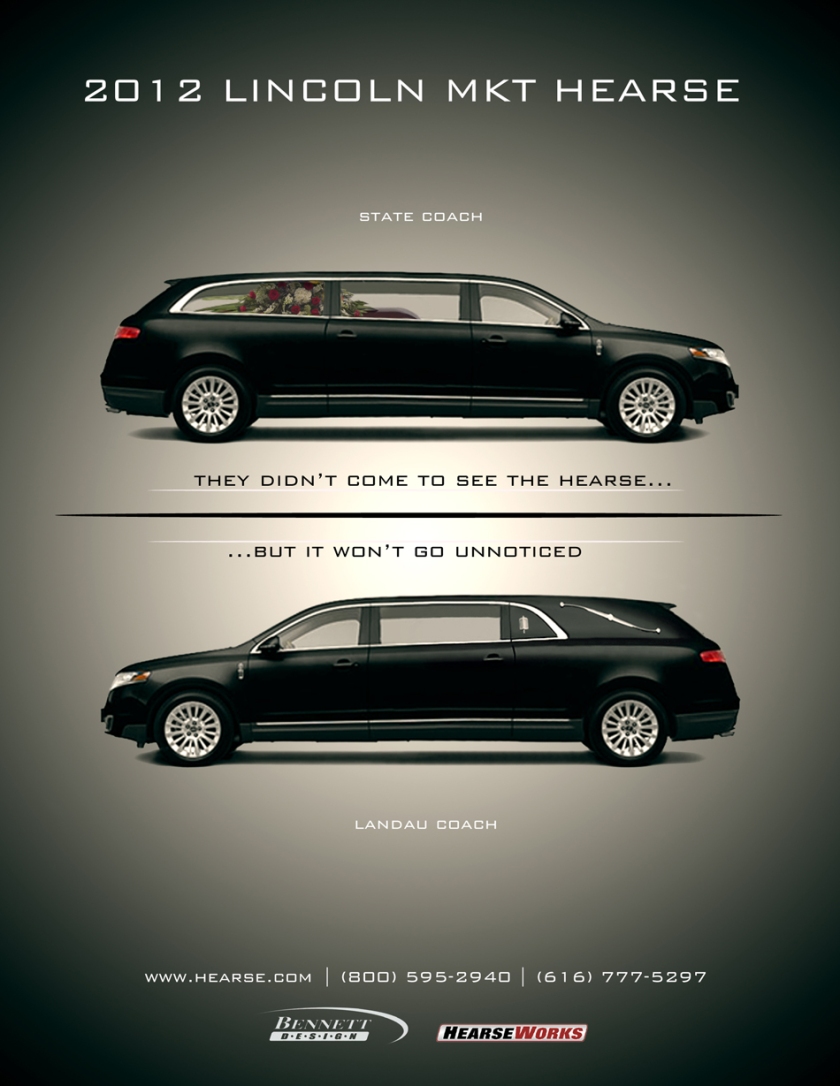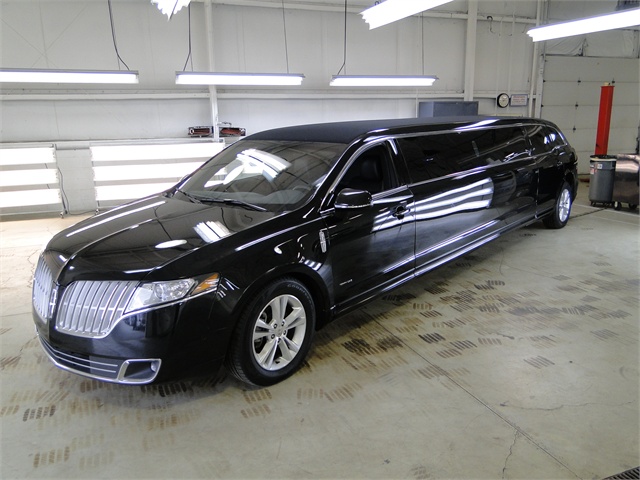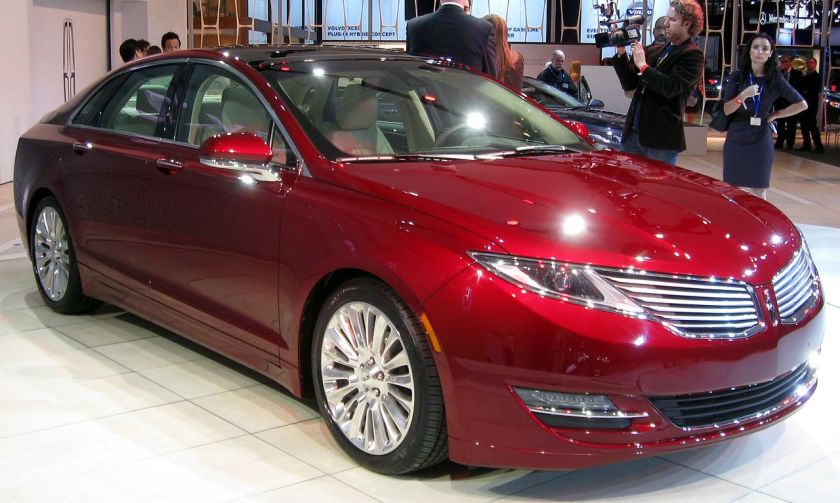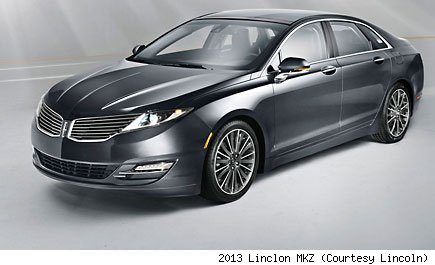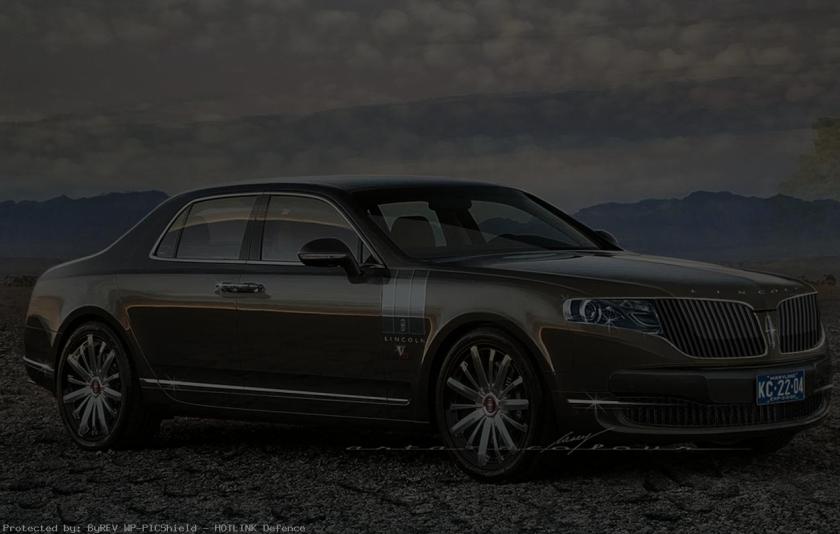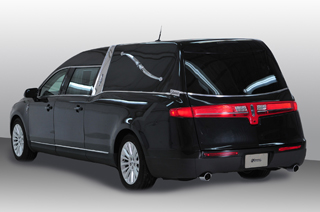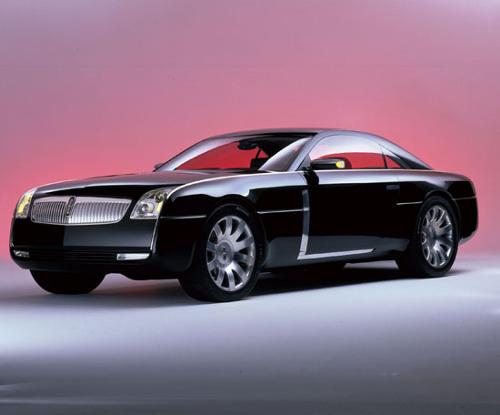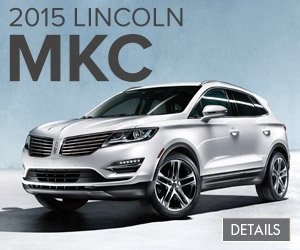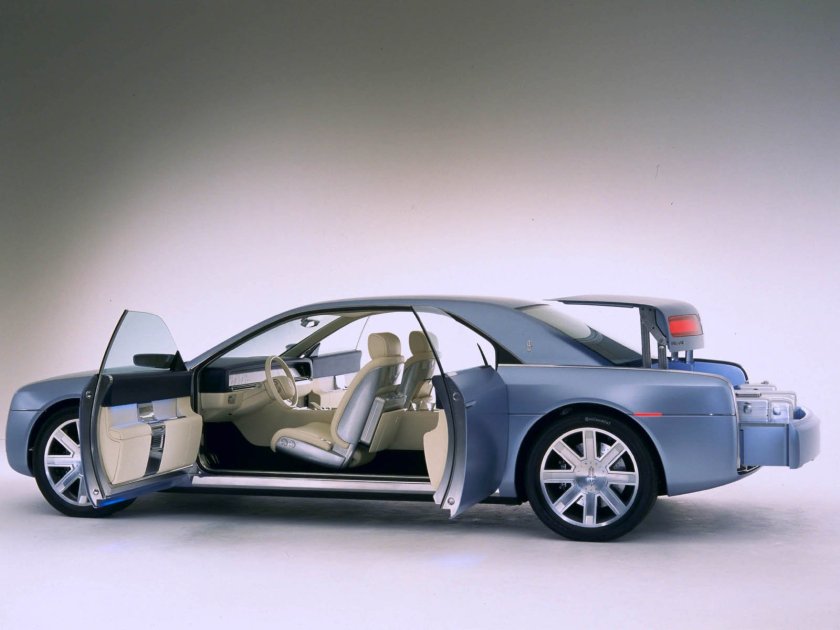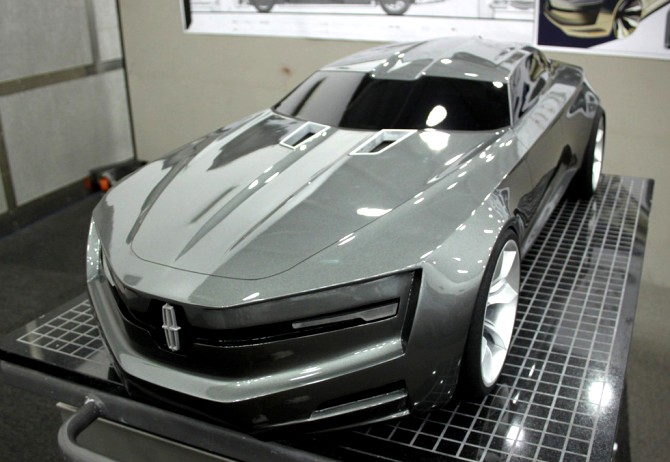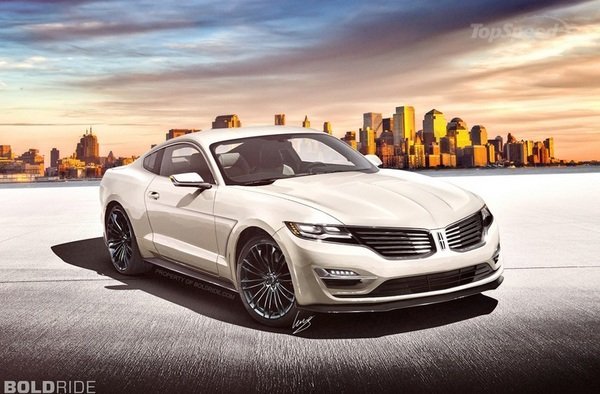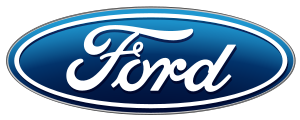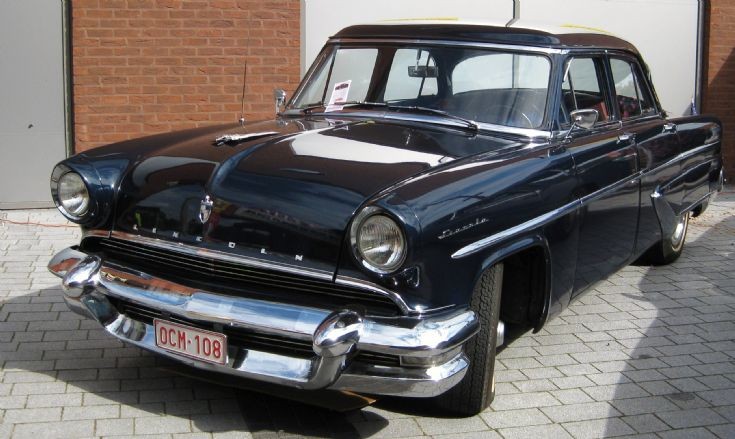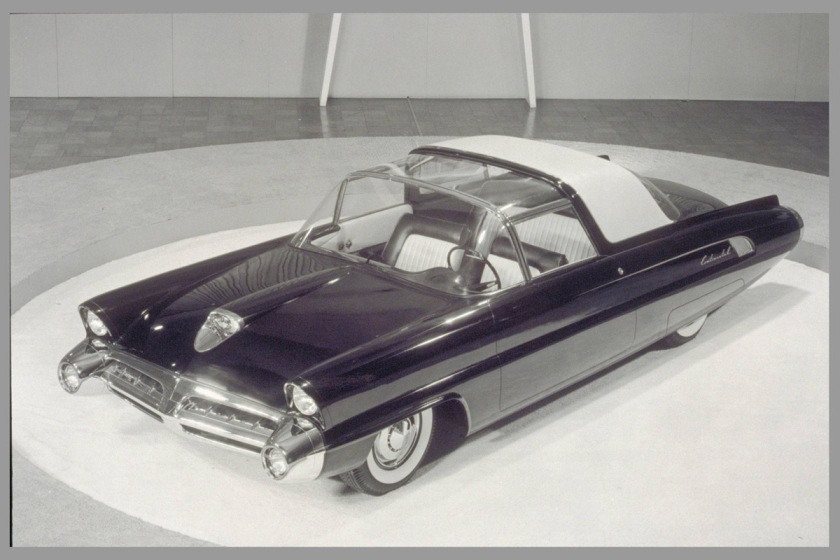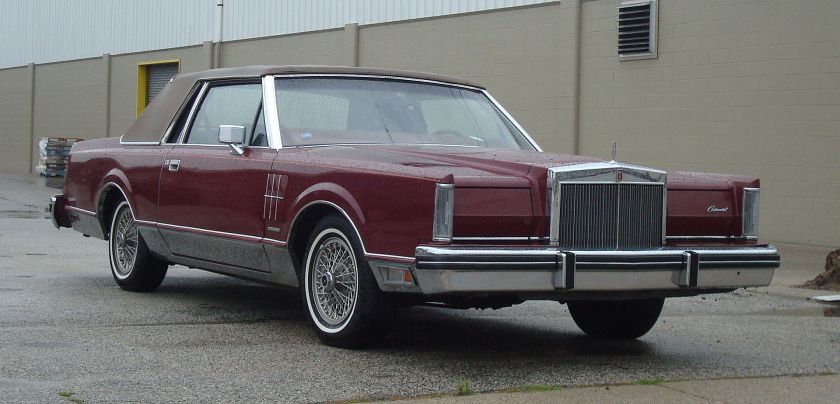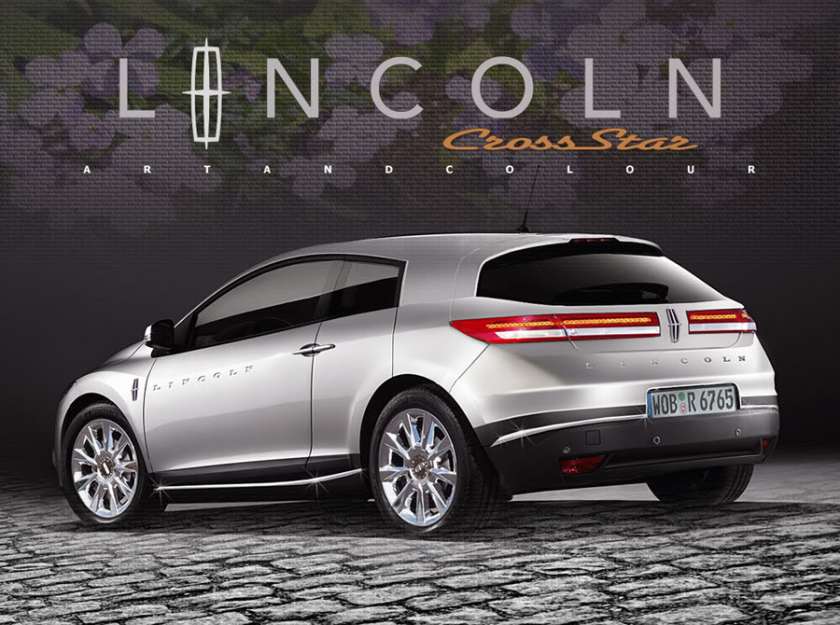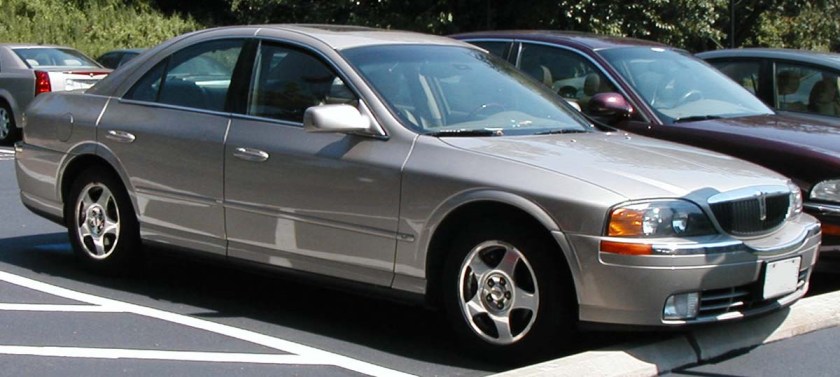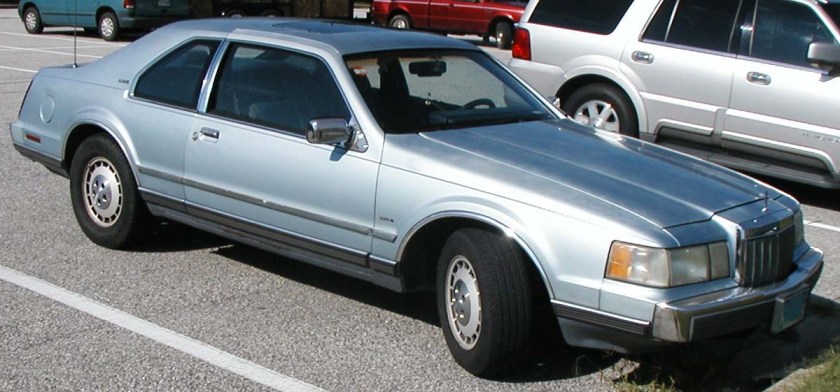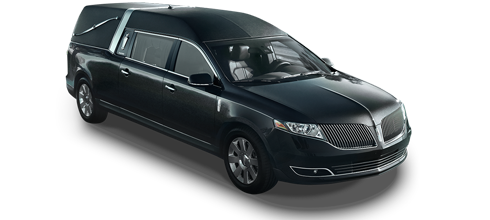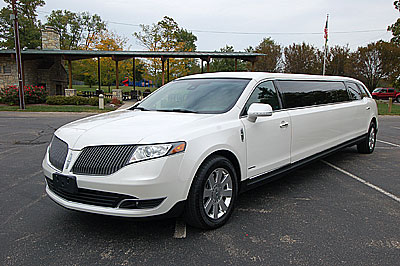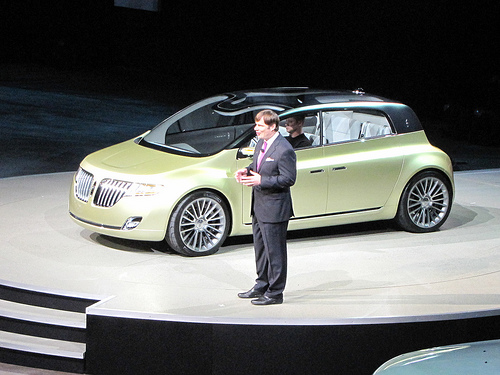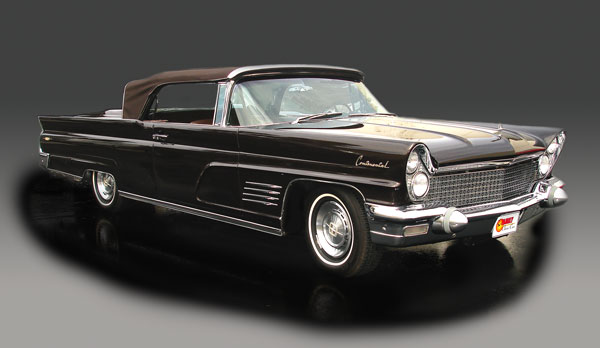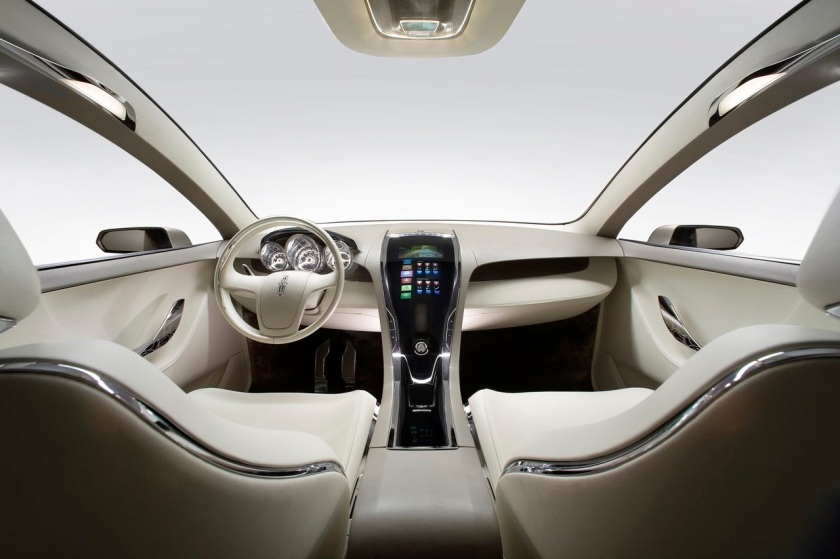1955 Edsel concepts
Edsel
| Edsel | |
|---|---|
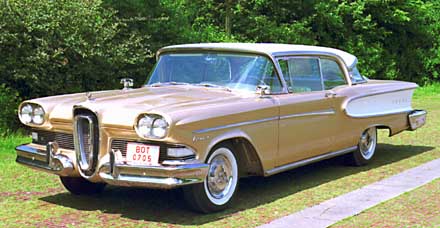
1958 Edsel Corsair
|
|
| Overview | |
| Manufacturer | Edsel Division of Ford Motor Company |
| Production | 1958–60 |
| Body and chassis | |
| Class | Full-size car |
| Layout | FR layout |
The Edsel was an automobile marque that was planned, developed, and manufactured by the Ford Motor Company during the 1958, 1959, and 1960 model years. With the Edsel, Ford had expected to make significant inroads into the market share of both General Motors and Chrysler and close the gap between itself and GM in the domestic American automotive market. But contrary to Ford’s internal plans and projections, the Edsel never gained popularity with contemporary American car buyers and sold poorly. The Ford Motor Company lost millions of dollars on the Edsel’s development, manufacturing and marketing. The very word “Edsel” became a popular symbol for failure.
History
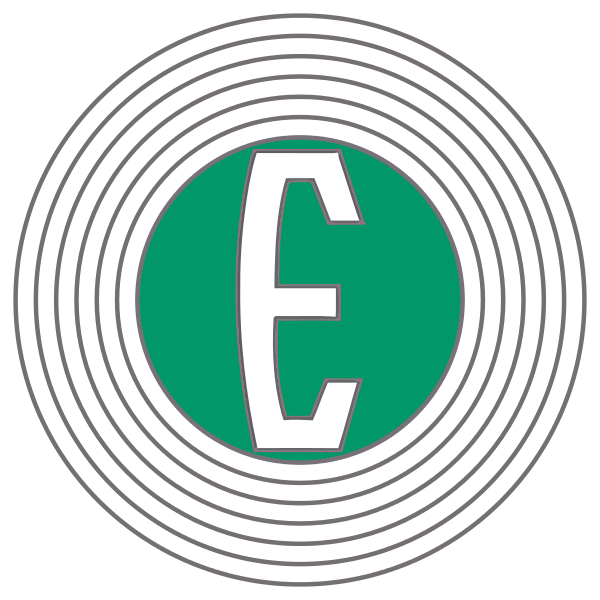
Makes History by Making Sense (1959)
|
|
| Division | |
| Industry | Automobile |
| Founded | 1957 |
| Defunct | 1959 |
| Headquarters | Dearborn, Michigan, U.S |
| Products | Full-size: Citation, Corsair, Pacer,Ranger Station wagon: Bermuda, Villager, Roundup |
| Parent | Ford Motor Company |
In the early 1950s, the Ford Motor Company became a publicly traded corporation that was no longer entirely owned by members of the Ford family. The company was now able to sell cars according to current market trends following the sellers’ market of the postwar years. Ford’s new management compared the company’s roster of makes with that of General Motors, and concluded that Lincoln was competing not with Cadillac, but with Oldsmobile and Buick. Ford developed a plan to move Lincoln upmarket, with the Continental broken out as a separate make at the top of Ford’s product line, and to add a premium/intermediate vehicle to the intermediate slot vacated by Lincoln.
Marketing research and development for the new intermediate line had begun in 1955 under the code name “E car”, which stood for “experimental car.” Ford Motor Company eventually decided on the name “Edsel”, in honor of Edsel B. Ford, son of the company’s founder, Henry Ford (despite objections from Henry Ford II). The proposed vehicle marque would represent the stand-up of a new division of the firm alongside that of Ford itself and the Lincoln–Mercury division, whose cars at the time shared the same bodies.
Ford later claimed to have performed more than adequate, if not superior, product development and market research work in the planning and design of the new vehicle. Particularly Ford assured its investors, and the Detroit automotive press, that the Edsel was not only a superior product (as compared to its Oldsmobile/Buick competition), but the details of its styling and specifications were the result of a sophisticated market analysis and research and development effort that would essentially guarantee its broad acceptance by the buying public when the car was introduced.
| “ | Its elegance, its engines, its exciting new features, make other cars seem ordinary |
” |
| —Edsel advertisement, 1957 | ||
The Edsel was introduced amid considerable publicity on “E Day”—September 4, 1957. It was also promoted by a top-rated television special, The Edsel Show, on October 13, but the promotional effort was not enough to counter the adverse initial public reaction to the car’s styling and conventional build. For months, Ford had been telling the industry press that it “knew” (through its market research) that there would be great demand for the vehicle. Ford also insisted that, in the Edsel, it had built exactly the “entirely new kind of car” that Ford had been leading the buying public to expect through its pre-introduction publicity campaign for the car. In reality, however, the Edsel shared its engineering and bodywork with other Ford models, and the similarities were apparent once the vehicle was viewed firsthand.
The Edsel was to be sold through a newly formed division of the Ford Motor Company, as a companion to the Ford Division, Mercury Division, Lincoln Division and (newly formed but also short-lived) Continental Division. Each division had its own retail organization and dealer network. The free-standing Edsel Division existed from November 1956 until January 1958, after which Edsel sales and marketing operations were integrated into the Mercury-Edsel-Lincoln division (referred to as M-E-L). Initially Edsel was sold through a new network of approximately 1,187 dealers. This briefly brought the total number of dealers of all Ford products to 10,000. Ford saw this as a way to come closer to parity with Chrysler, which had 10,000 dealers, and General Motors, which had 16,000. As soon as it became apparent that the Edsels were not selling, many of these dealers added Lincoln-Mercury, Ford of Britain, or Ford of Germany franchises to their dealerships with the encouragement of Ford Motor Company. Some dealers, however, closed.
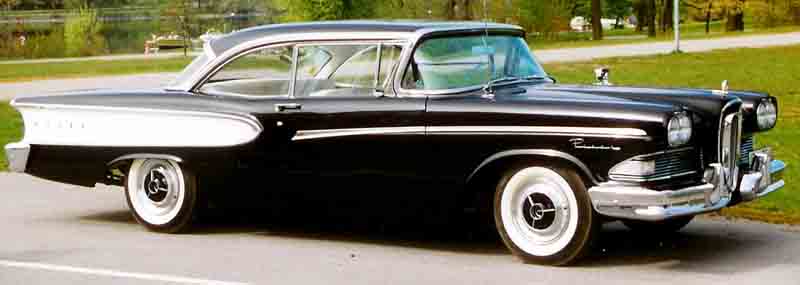
A 1958 Edsel Pacer 2-Door hardtop
For the 1958 model year, Edsel produced four models: The larger Mercury-based Citation and Corsair, and the smaller Ford-based Pacer and Ranger. The Citation was offered in two-door and four-door hardtop and two-door convertible versions. The Corsair was available in two-door and four-door hardtop versions. The Pacer was available as a two-door or four-door hardtop, four-door sedan, or two-door convertible. The Ranger was sold in two-door and four-door hardtop or sedan versions. The four-door Bermuda and Villager wagons and the two-door Roundup wagon were based on the 116-inch wheelbase Ford station wagon platform and shared the trim and features of the Ranger and Pacer models.
The Edsel offered several innovative features, among which were its “rolling dome” speedometer, warning lights for such conditions as low oil level, parking brake engaged, and engine overheating, as well as its push-buttonTeletouch transmission shifting system in the center of the steering wheel (a conventional column-shift automatic was also available at a reduced price). Other Edsel design innovations included ergonomically designed controls for the driver and self-adjusting brakes (which Edsel claimed as a first for the industry, even though Studebaker had pioneered them earlier in the decade). The Edsel also offered such advanced safety features as seat belts (which were available at extra cost as optional equipment on many other makes) and child-proof rear door locks that could only be opened with the key.

Edsel Ranger interior, showing the Teletouch system and Rolling Dome speedometer.
Unlike Ford and Mercury, the Edsel Division never had any dedicated manufacturing plants. All Edsels were built in Ford or Mercury plants on a contract basis.
In the first year, 63,110 Edsels were sold in the United States; an additional 4,935 units were sold in Canada. Though below expectations, this nevertheless represented the second-largest launch for any new car brand to date, exceeded only by the Plymouth introduction in 1928.
For the 1959 model year, Edsel fielded only two series, the Ford-based Ranger and Corsair. The larger Mercury-based Edsels were discontinued. Replacing the Pacer as the top-line Ford-based Edsel, the new Corsair was offered as a two-door and four-door hardtop, four-door sedan, and two-door convertible. The Ranger was sold as a two-door and four-door hardtop, two-door and four-door sedan, and the Villager station wagon. In the 1959 model year, 44,891 Edsels were sold in the U.S. An additional 2,505 units were sold in Canada.
For the 1960 model year, Edsel’s last, only 2,846 vehicles were produced. All but the pilot cars were assembled at the Louisville, Kentucky, assembly plant. The marque was reduced to the Ranger series of sedans, hardtops, and convertibles and the Villager station wagons. The Edsel shared a basic chassis, glass, and major sheet metal with the 1960 Ford Galaxie and Fairlane models that were built on the Louisville assembly line with it. But the Edsel had its own unique grille, hood, and four upright oblong taillights, along with its side sweep spears. The Edsel’s front and rear bumpers were also unique. The 1960 Edsel rode on a 120-inch wheelbase, compared to the concurrent Ford’s 119-inch span, and it also used a different rear suspension. The cars did, however, share engines and transmissions.
The 1960 Edsel Ranger four-door hardtop model used the thin-pillar Ford Fairlane four-door sedan roofline, as opposed to the “square” roofline used on the corresponding Ford four-door hardtop, which was exclusive to the Galaxie line. The Galaxie four-door hardtop’s rear door trim panel, however, was fitted to the Ranger. This gave the Edsel four-door hardtop a unique body style that was never offered on any 1960 Ford.
Edsel Citation
| Edsel Citation | |
|---|---|
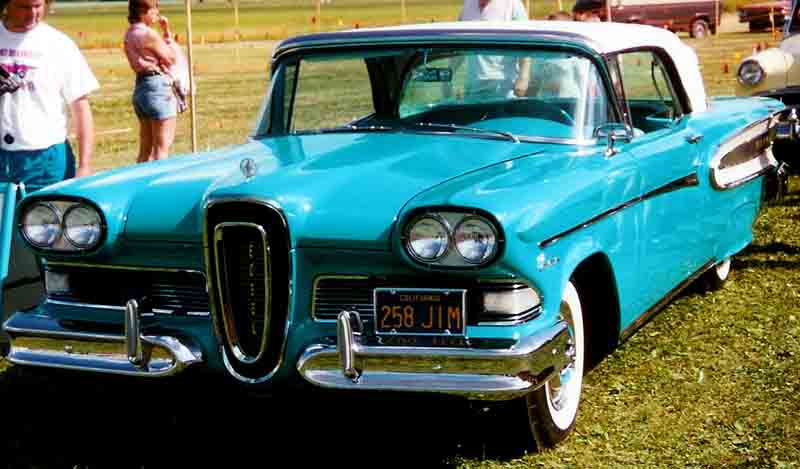 |
|
| Overview | |
| Manufacturer | Ford Motor Company |
| Model years | 1958 |
| Assembly | Louisville Assembly Plant,Louisville, Kentucky Somerville Assembly, Somerville, Massachusetts Los Angeles Assembly, Pico Rivera, California Ford River Rouge Complex,Dearborn, Michigan Oakville Assembly, Oakville, Ontario, Canada |
| Body and chassis | |
| Class | Full-size |
| Body style | 2-door convertible 2-door hardtop 4-door hardtop |
| Related | Mercury Turnpike Cruiser Mercury Park Lane Mercury Montclair Mercury Monterey Mercury Colony Park Mercury Voyager Mercury Commuter Edsel Corsair |
| Powertrain | |
| Engine | 410 cu in (6.7 L) MEL V8 |
| Transmission | 3-speed automatic |
| Dimensions | |
| Wheelbase | 124 in (3,150 mm) |
| Length | 218.9 in (5,560 mm) |
| Width | 79.8 in (2,027 mm) |
| Curb weight | 4,300–4,500 lb (1,950–2,041 kg) |
| Chronology | |
| Predecessor | Mercury Monterey |
| Successor | Mercury Meteor |
The Edsel Citation was the top of the line automobile produced by the former Mercury-Edsel-Lincoln Division of the Ford Motor Company of Dearborn, Michigan, and sold through its Edsel marque in 1958. The Citation was built on the longer, wider Edsel platform, shared with Mercury, and with the Corsair.
Citation was one of two Edsel model names later used by another auto manufacturer, Pacer being the other.
The Citation represented the highest trim level available within the Edsel brand. In addition to deluxe interior appointments, the Citation also received extra stainless steel details and a gold-anodized aluminum cove panel. The cove (or rear quarter-panel “scallop”) could be painted either the color of the body, the color of the roof, or a third color (tri-tone paint option). It used a ladder type frame with welded box side rails and independent ball-joint front suspension.
Riding on a 124 in (2997 mm) wheelbase with a 22° approach angle, the Citation was powered by the 345 bhp (257 kW) 410 cu in (6.7 L) MEL V8 with four-barrel carburetor. Edsel’s Teletouch automatic transmission, which placed its drive-selection buttons in the steering wheel hub, was standard. (This was a US$231 option on Ranger and Pacer models.) A basic heater (as a US$92 option) and radio (at US$95) were available, and air conditioning was optional as well (at US$460), plus an automatic truck opener, seat belts, and rear door safety lock that could only be opened with the key, preventing children from opening the door while the car is moving.
While its roll-out was highly publicized in the fall of 1957, the 1958 Edsel was a marketing disaster for Ford and for Ford’s corporate strategy for meeting General Motors’ product line for product line. Total Citation output in the U.S. and Canada for the model stood at 9,299 units, of which 930 were U.S.-built convertibles, 5,588 were four-door hardtops (5,112 in U.S. and 476 in Canada), and 2,781 were hardtop coupes (2,535 in U.S. and 246 in Canada). Prices ranged from US$3,500 to $3,766.
| Body Style | Units |
|---|---|
| 2-Door Convertible | 930 |
| 2-Door Hardtop Coupe | 2,781 |
| 4-Door Hardtop Sedan | 5,588 |
| Total | 9,299 |
For the 1959 model year, the Citation and the Pacer models were dropped (as was the trouble-prone Teletouch system) from Edsel’s model range for 1959, which was introduced in the fall of 1958.
The Citation convertible remains one of the most sought after models amongst modern-day Edsel collectors.
Different Platforms
The model year of the Edsel’s introduction was a post WW II high point of sorts for the Ford Motor Company. Three full-size platforms of distinctly different interior widths were in use each by Lincoln, Mercury and Ford, a situation that lasted until Ford received a much wider platform in 1960. Edsel shared both Mercury’s and Ford’s platform in 1958 and so offers an insight into their differing interior dimensions.
| 1958 Comparison | Edsel Citation/Corsair | Edsel Pacer/Ranger |
|---|---|---|
| Wheelbase | 124.0 in (3,150 mm) | 118.0 in (2,997 mm) |
| Overall Length | 218.9 in (5,560 mm) | 213.2 in (5,415 mm) |
| Width | 79.8 in (2,027 mm) | 78.8 in (2,002 mm) |
| Height | 56.8 in (1,443 mm) | 56.2 in (1,427 mm) |
| Front Headroom | 33.9 in (861 mm) | 33.2 in (843 mm) |
| Front Legroom | 44.2 in (1,123 mm) | 43.1 in (1,095 mm) |
| Front Hip Room | 63.5 in (1,613 mm) | 60.0 in (1,524 mm) |
| Front Shoulder Room | 59.7 in (1,516 mm) | 57.3 in (1,455 mm) |
| Rear Headroom | 32.8 in (833 mm) | 33.6 in (853 mm) |
| Rear Legroom–ins. | 43.4 in (1,102 mm) | 40.7 in (1,034 mm) |
| Rear Hip Room | 63.5 in (1,613 mm) | 60.1 in (1,527 mm) |
| Rear Shoulder Room | 59.7 in (1,516 mm) | 57.0 in (1,448 mm) |
Edsel Corsair
| Edsel Corsair | |
|---|---|
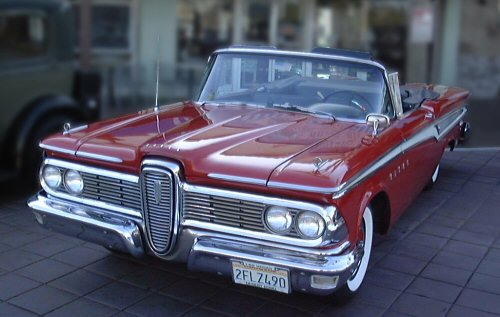 |
|
| Overview | |
| Manufacturer | Ford Motor Company |
| Production | 1958-1959 |
| Body and chassis | |
| Class | Full-size |
| Layout | FR layout |
| Chronology | |
| Predecessor | Mercury Monterey |
| Successor | Mercury Meteor |
The Edsel Corsair was an automobile produced by the former Mercury-Edsel-Lincoln Division (M-E-L) of the Ford Motor Company of Dearborn, Michigan and sold through its Edsel marque in 1958 and 1959. For 1958, the Corsair was built on the longer, wider Edsel platform shared with Mercury. For 1959, the Corsair shared the shorter, narrower Ranger platform with Ford.
1958
| First generation | |
|---|---|
 |
|
| Overview | |
| Model years | 1958 |
| Assembly | Louisville Assembly Plant,Louisville, Kentucky Somerville Assembly, Somerville, Massachusetts Los Angeles Assembly, Pico Rivera, California Ford River Rouge Complex,Dearborn, Michigan Oakville Assembly, Oakville, Ontario, Canada |
| Body and chassis | |
| Body style | 2-door hardtop 4-door hardtop |
| Related | Mercury Turnpike Cruiser Mercury Park Lane Mercury Montclair Mercury Monterey Mercury Colony Park Mercury Voyager Mercury Commuter Edsel Citation |
| Powertrain | |
| Engine | 410 cu in (6.7 L) MEL V8 |
| Transmission | 3-speed manual 2-speed automatic |
| Dimensions | |
| Wheelbase | 124.0 in (3,150 mm) |
| Length | 218.9 in (5,560 mm) |
| Width | 79.8 in (2,027 mm) |
| Height | 56.8 in (1,443 mm) |
| Curb weight | 4,300–4,400 lb (2,000–2,000 kg) |
The Corsair represented the next-to-highest trim level available within the Edsel brand. It rode on Edsel’s 124 in (2997 mm) wheelbase. In addition to high-grade interior appointments, the Corsair also received additional stainless steel trim and deluxe wheel covers. Available either as a two-door or four-door hardtop, the Corsair, like the premium Citation, shared its roof lines with Mercury models, as well as internal body components. Body parts between the Corsair and Citation models could not be shared with either the Ranger or Pacer, which were built on the shorter, narrower Ford frames. A deep-dished safety steering wheel was standard.
Like the Citation, the Corsair was powered by the 345 bhp (257 kW) 410 cu in (6.7 L) MEL V8 (with four-barrel {four choke} carburetor), and came equipped with Edsel’s Teletouch automatic as standard. (This was a US$231 option on Ranger and Pacer models.) Unlike other Ford models that used a column-mounted gear selector, Teletouch placed its drive-selection buttons in the steering wheel hub where drivers were accustomed to finding the horn button. In emergency situations, damage to the transmission that might occur if the driver hit the Teletouch unit instead of the steering wheel’s horn ring was prevented by an electro-hydraulic switch activated by internal transmission fluid pressure. A basic heater (as a US$92 option) and radio (at US$95) were available, and air conditioning was optional as well (at US$460). Also optional was an automatic trunk release, a tachometer, an automatic lube system, seat belts, a padded dash board, warning lights for low oil level and parking brake on, plus rear door safety locks to prevent young kids from opening them while the car is moving.
While its roll-out was highly publicized in the fall of 1957, the 1958 Edsel was a marketing disaster for Ford and Ford’s corporate strategy for meeting General Motors‘ product line for product line. Total Corsair output for the model stood at 9,987 units, only slightly better than the Citation. Of these units, 3,632 were hardtop coupes (3,312 U.S. and 320 Canadian-built) and 6,355 were four-door hardtops (5,880 U.S. and 475 Canadian-built). Prices for the Corsair in 1958 ranged from US$3,311 to $3,390.
| Body Style | Units |
|---|---|
| 2-Door Hardtop | 3,632 |
| 4-Door Hardtop | 6,355 |
| Total | 9,987 |
Different Platforms
The model year of the Edsel’s introduction was a post WW II high point of sorts for the Ford Motor Company. Three full-size platforms of distinctly different interior widths were in use each by Lincoln, Mercury and Ford, a situation that lasted until Ford received a much wider platform in 1960. Edsel shared both Mercury’s and Ford’s platform in 1958 and so offers an insight into their differing interior dimensions.
| 1958 Comparison | Edsel Citation/Corsair | Edsel Pacer/Ranger |
|---|---|---|
| Wheelbase | 124.0 in (3,150 mm) | 118.0 in (2,997 mm) |
| Overall Length | 218.9 in (5,560 mm) | 213.2 in (5,415 mm) |
| Width | 79.8 in (2,027 mm) | 78.8 in (2,002 mm) |
| Height | 56.8 in (1,443 mm) | 56.2 in (1,427 mm) |
| Front Headroom | 33.9 in (861 mm) | 33.2 in (843 mm) |
| Front Legroom | 44.2 in (1,123 mm) | 43.1 in (1,095 mm) |
| Front Hip Room | 63.5 in (1,613 mm) | 60.0 in (1,524 mm) |
| Front Shoulder Room | 59.7 in (1,516 mm) | 57.3 in (1,455 mm) |
| Rear Headroom | 32.8 in (833 mm) | 33.6 in (853 mm) |
| Rear Legroom–ins. | 43.4 in (1,102 mm) | 40.7 in (1,034 mm) |
| Rear Hip Room | 63.5 in (1,613 mm) | 60.1 in (1,527 mm) |
| Rear Shoulder Room | 59.7 in (1,516 mm) | 57.0 in (1,448 mm) |
1959
| Second generation | |
|---|---|
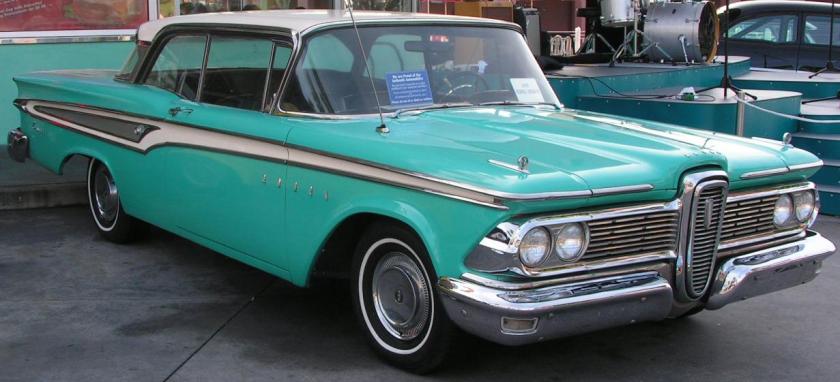 |
|
| Overview | |
| Model years | 1959 |
| Assembly | Allen Park, Michigan Wayne, Michigan Somerville, Massachusetts Dearborn, Michigan Oakville, Ontario, Canada |
| Body and chassis | |
| Body style | 2-door convertible 2-door coupe 2-door hardtop 4-door hardtop 4-door sedan |
| Related | Edsel Ranger Edsel Villager Ford Galaxie Ford Fairlane Ford Custom Ford Country Squire |
| Powertrain | |
| Engine | 332 cu in (5.4 L) FE V8 |
| Transmission | 3-speed manual 3-speed automatic |
| Dimensions | |
| Wheelbase | 120.0 in (3,048 mm) |
| Length | 210.9 in (5,357 mm) |
| Width | 79.8 in (2,027 mm) |
| Height | 56.2 in (1,427 mm) Convertible: 56.7 in (1,440 mm) |
The 1959 Edsels were introduced in the fall of 1958. However, for the 1959 model year, the Citation and Pacer models were dropped from Edsel’s model range for 1959, as was the trouble-prone Teletouch system.
The 1959 Edsel’s styling was significantly toned-down, as was the vertical grille assembly, which now featured a fine bar pattern. The Corsair now represented the premium Edsel model range, replacing the discontinued Citation. Unlike in 1958, the Corsair now shared its body panels with the Ranger – the two being differentiated by trim and options. The Corsair also gained a four-door sedan and convertible version.
The 1959 Corsair rode on a 120 in (3048 mm) wheelbase and the 361 cu in (5.9 L) FE V8 was standard in sedans, with either a two- or four-barrel carburetor as was a three-speed manual transmission. Replacing the Teletouch transmission was the Mile-O-Matic, a two-speed automatic, or Dual-Power Drive 3-speed automatic (only available with the 361). Heater, defroster, and radio remained optional, as well.
With total 1959 Corsair output at 9,318, the Corsair was discontinued. For 1959, 2,468 hardtop coupes (2,315 U.S./153 Canada), 1,812 four-door hardtops (1,694 U.S./118 Canada), 1,343 convertibles (all U.S.) and 3,695 four-door sedans (3,301 U.S./394 Canada), were produced; hardtop sales were down 31% in two-doors and 71% in four-doors against 1958. Prices ranged from US$2,812 to $3,072, down some 15% from the previous year.
| Body Style | Units |
|---|---|
| 2-Door Convertible | 1,343 |
| 2-Door Hardtop Coupe | 2,468 |
| 4-Door Hardtop | 1,812 |
| 4-Door Sedan | 3,694 |
| Total | 9,318 |
Edsel Pacer
| Edsel Pacer | |
|---|---|
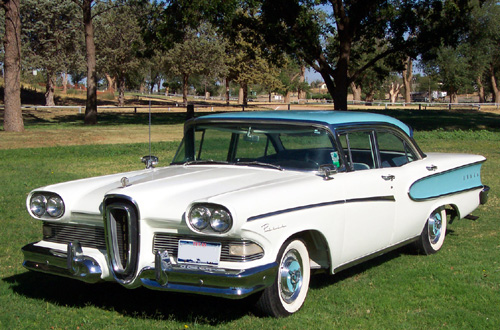 |
|
| Overview | |
| Manufacturer | Ford Motor Company |
| Model years | 1958 |
| Assembly | Edison, New Jersey Wayne, Michigan Atlanta, Georgia San Jose, California |
| Body and chassis | |
| Class | Full-size |
| Body style | 2-door convertible 2-door hardtop 4-door hardtop 4-door sedan |
| Related | Edsel Ranger Edsel Bermuda Edsel Villager Edsel Roundup Ford Fairlane Ford Custom Ford Country Squire |
| Powertrain | |
| Engine | 361 cu in (5.9 L) FE V8 |
| Transmission | 3-speed manual 3-speed automatic |
| Dimensions | |
| Wheelbase | 118.0 in (2,997 mm) |
| Width | 78.8 in (2,002 mm) |
| Curb weight | 4,000–4,500 lb (1,814–2,041 kg) |
| Chronology | |
| Predecessor | Ford Fairlane |
| Successor | Ford Galaxie |
The Edsel Pacer is an automobile produced by the former Mercury-Edsel-Lincoln Division (M-E-L) of the Ford Motor Company of Dearborn, Michigan and sold through its Edsel marque in 1958. The Pacer was built off the shorter narrower Edsel platform, shared with Ford and the Ranger.
Pacer is one of two Edsel model names reused by manufacturers other than Ford, as was Citation. The Corsair, a 1958-only Edsel model, used a name previously applied to the Henry J by the Kaiser-Frazer Corporation.
The Pacer represented a step up from the basic Ranger model. In addition to the Ranger’s base trim appoints, the Pacer received contoured seat backs, nylon upholstery cloth, color-keyed rubber floor mats, and extra stainless steel exterior and interior trim pieces and window moldings. A basic heater (as a US$92 option) and radio (at US$95) were available, and air conditioning was optional as well (at $417). A tachometer was optional.
All Pacers rode on Ford’s 118 in (2997 mm) wheelbase and shared the Ranger’s engine choices, with a 303 hp (226 kW) 361 cu in (5.9 L) FE V8 (with four-barrel carburetor)[6] as standard. (The 345 hp (257 kW) 410 cu in (6.7 L) MEL V8, standard in the Corsair and Citation, was not available.) A three-speed manual transmission was also standard. Buyers also could upgrade to a three-speed automatic transmission with a standard column-mounted gear selector, or choose Edsel’s highly promoted but trouble-prone Teletouch automatic, which placed its drive-selection buttons in the steering wheel hub, as a US$231 option.
While its roll-out was highly publicized in the fall of 1957, the 1958 Edsel was a marketing disaster for Ford and for Ford’s corporate strategy for meeting General Motors product line for product line. Total Pacer output in U.S. and Canada for the model stood at 20,988 units, of which 1,876 were U.S.-built convertibles, 7,141 four-door sedans (6,083 U.S./1,058 Canada), 6,717 hardtop coupes (6,139 U.S./578 Canada), and 5,254 four-door hardtops (4,959 U.S./295 Canada). Prices for the Pacer ranged from US$2,700 to $2,993. Despite being among the best selling 1958 Edsel models, the Pacer was discontinued at the end of the 1958 model year. The premium Citation model was also dropped, as was the trouble prone Teletouch system.
| Body Style | Units |
|---|---|
| 2-Door Convertible | 1,876 |
| 2-Door Hardtop | 6,717 |
| 4-Door Hardtop | 5,254 |
| 4-Door Sedan | 7,141 |
| Total | 20,988 |
Gallery
Different Platforms
The model year of the Edsel’s introduction was a post WW II high point of sorts for the Ford Motor Company. Three full-size platforms of distinctly different interior widths were in use each by Lincoln, Mercury and Ford, a situation that lasted until Ford received a much wider platform in 1960. Edsel shared both Mercury’s and Ford’s platform in 1958 and so offers an insight into their differing interior dimensions.
| 1958 Comparison | Edsel Citation/Corsair | Edsel Pacer/Ranger |
|---|---|---|
| Wheelbase | 124.0 in (3,150 mm) | 118.0 in (2,997 mm) |
| Overall Length | 218.9 in (5,560 mm) | 213.2 in (5,415 mm) |
| Width | 79.8 in (2,027 mm) | 78.8 in (2,002 mm) |
| Height | 56.8 in (1,443 mm) | 56.2 in (1,427 mm) |
| Front Headroom | 33.9 in (861 mm) | 33.2 in (843 mm) |
| Front Legroom | 44.2 in (1,123 mm) | 43.1 in (1,095 mm) |
| Front Hip Room | 63.5 in (1,613 mm) | 60.0 in (1,524 mm) |
| Front Shoulder Room | 59.7 in (1,516 mm) | 57.3 in (1,455 mm) |
| Rear Headroom | 32.8 in (833 mm) | 33.6 in (853 mm) |
| Rear Legroom–ins. | 43.4 in (1,102 mm) | 40.7 in (1,034 mm) |
| Rear Hip Room | 63.5 in (1,613 mm) | 60.1 in (1,527 mm) |
| Rear Shoulder Room | 59.7 in (1,516 mm) | 57.0 in (1,448 mm) |
Edsel Ranger
| Edsel Ranger | |
|---|---|

1959 Edsel Ranger 2-Door Hardtop
|
|
| Overview | |
| Manufacturer | Ford Motor Company |
| Production | 1957-1960 |
| Assembly | Edison, New Jersey Wayne, Michigan Atlanta, Georgia San Jose, California |
| Body and chassis | |
| Class | Full-size |
| Layout | FR layout |
| Chronology | |
| Predecessor | Ford Fairlane |
The Edsel Ranger is an automobile which was produced by the former Mercury-Edsel-Lincoln Division of the Ford Motor Company of Dearborn, Michigan, and sold through its Edsel marque in the 1958, 1959 and 1960 model years. It was built on the shorter, narrower Edsel platform, shared with Ford and Edsel Pacer models.
The Ranger was the base trim option for Edsel in its first and second years as an automotive marque. It was available in two-door coupes, four-door sedans, and two and four-door hardtops with a convertible also offer in 1960.
Ranger is one of two of Edsel’s model nameplates re-used by Ford, Villager being the other.
1958-1959
| First generation | |
|---|---|
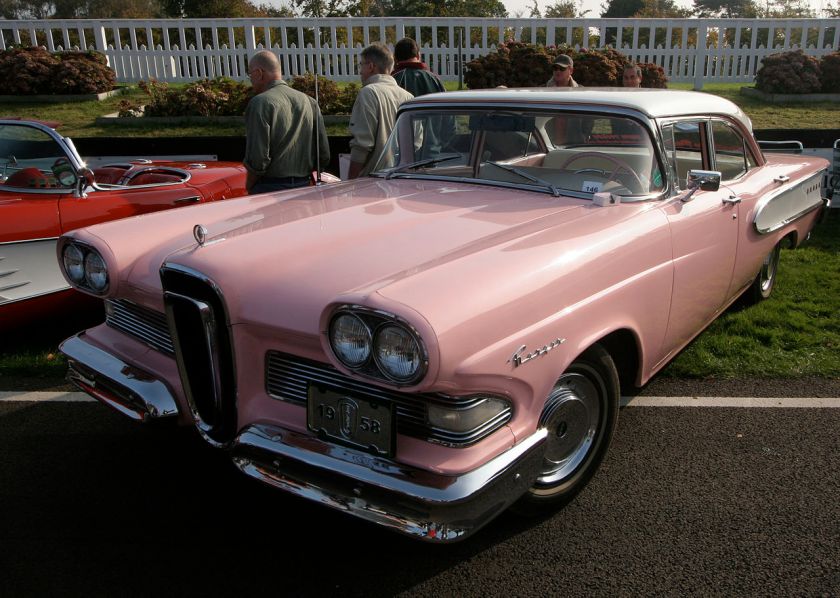
1958 Edsel Ranger 4-Door Sedan
|
|
| Overview | |
| Model years | 1958-1959 |
| Body and chassis | |
| Body style | 2-door coupe 2-door hardtop 4-door hardtop 4-door sedan |
| Related | Edsel Pacer Edsel Bermuda Edsel Villager Edsel Roundup Ford Galaxie Ford Fairlane Ford Custom Ford Country Squire |
| Powertrain | |
| Engine | 223 cu in (3.7 L) Mileage Maker I6 292 cu in (4.8 L) Ford Y-block V8 361 cu in (5.9 L) FE V8 |
| Transmission | 3-speed manual 3-speed automatic |
| Dimensions | |
| Wheelbase | 1958: 118.0 in (2,997 mm) 1959: 120.0 in (3,048 mm) |
| Length | 213.2″(car), 205.5(wagon) |
| Width | 1958: 78.8 in (2,002 mm) 1959: 79.8 in (2,027 mm) |
| Curb weight | 3,700–4,000 lb (1,678–1,814 kg) |
The Ranger’s base trim appointments included arm rests, a cigarette lighter, rear-view mirror, two coat hangers and black rubber floor mats. On the exterior, Rangers received chrome around the rear quarter panel cove molding. Two-tone paint was also optional. The main visual cue that makes it possible to tell the difference between most Rangers and the upmarket Pacer was the lack of stainless trim on the front doors and fenders. A very rare, optional, Ranger-only door trim was available from dealers early in the model year to be used together with the Pacer fender trim. A basic heater (as a US$92 option) and radio (at US$95) were available, and air conditioning was optional as well (at $417), along with seat belts, warning lights, automatic trunk opener, and child-proof rear door locks.
The Ranger rode on Ford’s 118 in (2997 mm) wheelbase (except the wagons, which used a 116 in (2946 mm) wheelbase) and a 303 hp (226 kW) 361 cu in (5.9 L) FE V8 with a four-barrel carburetor was standard, as was a three-speed manual transmission. Buyers could upgrade to a three-speed automatic transmission with a standard column mounted gear selector, or could choose Edsel’s highly promoted but trouble-prone Teletouch automatic, which placed its drive-selection buttons in the steering wheel hub, as a US$231 option. (The 345 hp {257 kW} 410 cu in (6.7 L) MEL V8, standard in the Corsair and Citation, was not available.)
While its roll-out was highly publicized in the fall of 1957, the 1958 Edsel was a marketing disaster for Ford and for Ford’s corporate strategy for meeting General Motors‘ product line for product line. Total U.S. and Canada Ranger output for the model stood at an estimated 21,301 units. Of those units, 4,615 were U.S.-built two-door Sedans, 7,414 were four-door sedans (6,576 U.S./838 Canada), 6,005 were two-door hardtops (5,546 U.S./459 Canada), and 3,667 were four-door hardtops (3,077 U.S./190 Canada). Prices ranged from US$2,529 to $2,990.
In regrouping for the coming model year, the best-selling Pacer and the premium Citation models were dropped for 1959, as was the trouble prone Teletouch transmission feature, which was replaced with the Mile-O-Matic.
For 1959, the Ranger and the new top-line Corsair both shared the same 120 in wheelbase. The frame was ladder-type. Styling for the cars became more conservative, with the horsecollar grille being replaced by a shield shape filled with rows of bars. Body styles for the Ranger remained at two-door sedans and four-door sedans, and two and four-door hardtop bodies. 7,778 two-door sedans (all U.S.-built), 14,063 four-door sedans (12,814 U.S./1,249 Canada), 5,966 hardtops (5,474 U.S./492 Canada), and 2,451 four-door hardtops (2,352 U.S./99 Canada)were produced for 1959 in the U.S. and Canada. Prices ranged from $2,629 to $2,756.
| Body Style | 1958 | 1959 |
|---|---|---|
| 2-Door Hardtop | 6,005 | 5,966 |
| 2-Door Sedan | 4,615 | 7,778 |
| 4-Door Hardtop | 3,667 | 2,451 |
| 4-Door Sedan | 7,414 | 14,063 |
| Total | 21,701 | 30,258 |
Different Platforms
The model year of the Edsel’s introduction was a post WW II high point of sorts for the Ford Motor Company. Three full-size platforms of distinctly different interior widths were in use each by Lincoln, Mercury and Ford, a situation that lasted until Ford received a much wider platform in 1960. Edsel shared both Mercury’s and Ford’s platform in 1958 and so offers an insight into their differing interior dimensions.
| 1958 Comparison | Edsel Citation/Corsair | Edsel Pacer/Ranger |
|---|---|---|
| Wheelbase | 124.0 in (3,150 mm) | 118.0 in (2,997 mm) |
| Overall Length | 218.9 in (5,560 mm) | 213.2 in (5,415 mm) |
| Width | 79.8 in (2,027 mm) | 78.8 in (2,002 mm) |
| Height | 56.8 in (1,443 mm) | 56.2 in (1,427 mm) |
| Front Headroom | 33.9 in (861 mm) | 33.2 in (843 mm) |
| Front Legroom | 44.2 in (1,123 mm) | 43.1 in (1,095 mm) |
| Front Hip Room | 63.5 in (1,613 mm) | 60.0 in (1,524 mm) |
| Front Shoulder Room | 59.7 in (1,516 mm) | 57.3 in (1,455 mm) |
| Rear Headroom | 32.8 in (833 mm) | 33.6 in (853 mm) |
| Rear Legroom–ins. | 43.4 in (1,102 mm) | 40.7 in (1,034 mm) |
| Rear Hip Room | 63.5 in (1,613 mm) | 60.1 in (1,527 mm) |
| Rear Shoulder Room | 59.7 in (1,516 mm) | 57.0 in (1,448 mm) |
1960
| Generation two | |
|---|---|
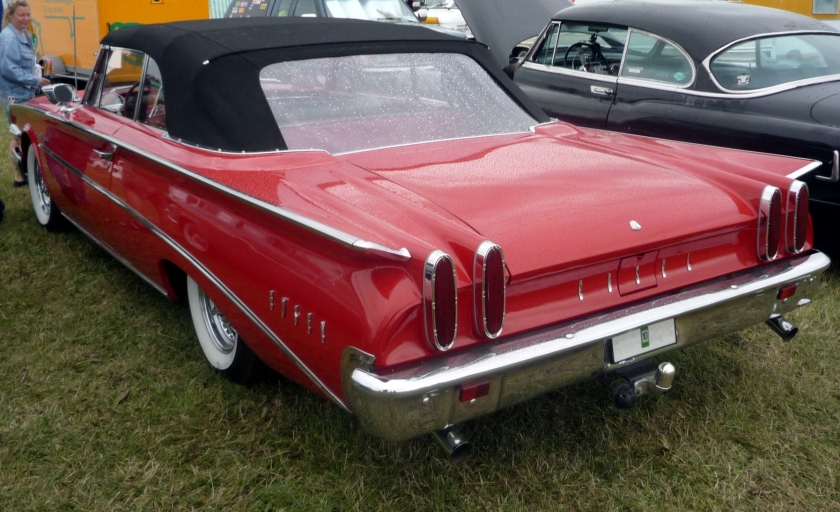 |
|
| Overview | |
| Model years | 1960 |
| Body and chassis | |
| Body style | 2-door coupe 2-door convertible 2-door hardtop 4-door hardtop 4-door sedan |
| Related | Edsel Villager Ford Galaxie Ford Fairlane Ford Country Squire |
| Powertrain | |
| Engine | 223 cu in (3.7 L) Mileage Maker I6 292 cu in (4.8 L) Ford Y-block V8 361 cu in (5.9 L) FE V8 |
| Transmission | 3-speed manual 3-speed automatic |
| Dimensions | |
| Wheelbase | 120.0 in (3,048 mm) |
| Width | 79.8 in (2,027 mm) |
| Curb weight | 3,800–4,000 lb (1,724–1,814 kg) |
Introduced on October 15, 1959, the 1960 Edsel Ranger was now the only car Edsel offered, while the Edsel Villager name applied to two station wagons, a six and a nine passenger model. The decision was made to eliminate not only the Corsair, but the vertical grille element as well. The new grille had an “hourglass” appearance. By this point, the 1960 model shared so many body panels and interior trim features with the Ford, that the defining characteristics that distinguished the Edsel from the Ford were its taillights, grille, signal/parking lights and trim at the front of the sides of the fenders, and of course, name badges. It came with a latter type frame and a 120″ wheelbase.
On November 19, 1959, Ford discontinued the Edsel marque and the final car rolled off the assembly line by the end of the month, so the 1960 model never reached its own model year. The car was effectively orphaned, since Ford stopped making parts for Edsels at that point. For its shortened and final model year, a total of 2,571 Rangers and 275 Villager units were produced (all in the U.S.), the rarest models being the convertible (76) and the 4-door 9-passenger Villager wagon (59, the rarest). The Villager is mentioned here so as to highlight the fact that the Ranger convertible was the second rarest of all Edsels produced. Original prices ranged from $2,643 to $3,000.
1960 Edsel Facts:
-Chief Stylist: Bud Kaufman -All 1960 Edsels were produced in the Louisville, KY manufacturing plant. (Although a few cars from the Allen Park, MI pilot plant are still in existence) -The 1960 Edsel introduced such innovations as horizontal coolant flow through the radiator to improve cooling, and placement of the muffler away from the passenger compartment to reduce heat. -Production of the 1960 Edsel began on September 14, 1959 -Introduction of the 1960 line was made on October 15, 1959 -The last official day of Edsel assembly was November 19, 1959 -Total Production for all 1960 Ranger models: 2,571 (2,846 including Villager wagons)
-With such a limited production run-time, the 1960 model included some of the rarest Edsel models of any of the three model years
| Body Style | Units |
|---|---|
| 2-Door Convertible | 76 |
| 2-Door Hardtop | 295 |
| 2-Door Sedan | 777 |
| 4-Door Hardtop | 135 |
| 4-Door Sedan | 1,288 |
| Total | 2,571 |
Counterfeit Convertibles
Because of the low production volumes in its three years, all Rangers are collectible; however, the 1960 Ranger convertible is frequently found as being counterfeit.
The process for converting a 1960 Ford Sunliner convertible into a 1960 Edsel model involves the simple swapping of trim parts and refashioning of the rear fenders, a simple task for those who have an Edsel parts car. Edsel enthusiasts are generally wary of 1960 Edsels that have been “found” or are offered at lower prices than the going rates. Buyers and enthusiasts can check the manufactures code to verify if the VIN matches Edsel production numbers for November 1959.
Edsel Bermuda
| Edsel Bermuda | |
|---|---|
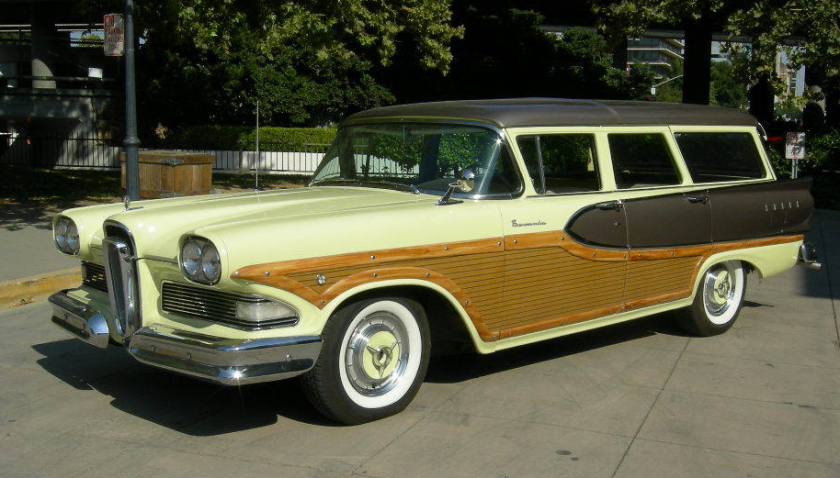 |
|
| Overview | |
| Manufacturer | Ford Motor Company |
| Model years | 1958 |
| Assembly | Edison, New Jersey Wayne, Michigan Atlanta, Georgia San Jose, California |
| Body and chassis | |
| Class | Full-size |
| Body style | 4-door station wagon |
| Related | Edsel Pacer Edsel Ranger Edsel Villager Edsel Roundup Ford Fairlane Ford Custom Ford Country Squire |
| Powertrain | |
| Engine | 361 cu in (5.9 L) FE V8 |
| Transmission | 3-speed manual 3-speed automatic |
| Dimensions | |
| Wheelbase | 116 in (2,946 mm) |
| Curb weight | 4,100 lb (1,860 kg) |
The Edsel Bermuda was a station wagon produced by the Edsel Division, and later Mercury-Edsel-Lincoln (M-E-L) Division of the Ford Motor Company of Dearborn, Michigan, and sold through its Edsel marque in 1958. Like the Edsel Villager and Edsel Roundup station wagons, the Bermuda was built on a 116-inch (2,946 mm) wheelbase shared with Ford’s station wagons, as well as core body stampings.
Overview
The Bermuda represented the highest trim level available within the Edsel brand for a station wagon, and was only available during Edsel’s introductory year of 1958. In addition to deluxe interior appointments, the Bermuda also was outfitted with simulated wood panels and frames, a hallmark of premium station wagon models produced by Ford and Mercury. The Bermuda came in six and nine-passenger configurations. To separate the Bermuda from Ford models, the Bermuda received Edsel’s front fascia and vertical grille assembly as well as unique boomerang-shaped taillights. The shape of the taillights posed a problem when used as turn indicators – the left hand taillight appeared as an arrow pointing right and vice versa from a distance.
All station wagons shared the Edsel Ranger’s engine availability with a 361 cu in (5.9 L) V8 as standard, as was a three-speed manual transmission. Buyers also had the option of a three-speed automatic transmissionwith a standard column-mounted gear selector, or could choose Edsel’s highly promoted but trouble-prone Teletouch automatic, which placed its drive-selection buttons in the steering wheel hub.
While its roll-out was highly publicized in the fall of 1957, the 1958 Edsel was a marketing disaster for Ford. Total Bermuda station wagon was 2,235 units, of which 1,456 were six-passenger models with a base price of $3,155 and 779 were nine-passenger versions priced at $3,212. This made the nine-passenger Bermuda the rarest 1958 Edsel model.
For the 1959 model year, the Bermuda and Roundup station wagons were dropped (as was the trouble prone Teletouch system), leaving only the Villager as Edsel’s sole station wagon model.
Edsel Villager
| Edsel Villager | |
|---|---|
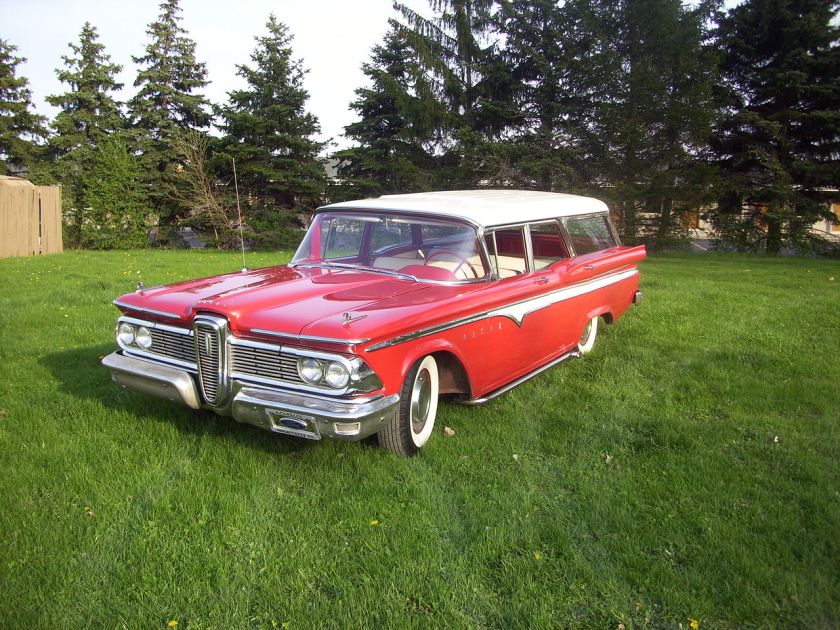 |
|
| Overview | |
| Manufacturer | Ford Motor Company |
| Production | 1958-1960 |
| Assembly | Edison, New Jersey Wayne, Michigan Atlanta, Georgia San Jose, California |
| Body and chassis | |
| Class | Full-size |
| Body style | 4-door station wagon |
| Related | Edsel Corsair Edsel Pacer Edsel Ranger Edsel Bermuda Edsel Roundup Ford Galaxie Ford Fairlane Ford Custom Ford Country Squire |
| Powertrain | |
| Engine | 361 cu in (5.9 L) FE V8 |
| Transmission | 3-speed manual 3-speed automatic |
| Dimensions | |
| Wheelbase | 1958-59: 116.0 in (2,946 mm) 1960: 120.0 in (3,048 mm) |
The Edsel Villager was a station wagon produced by the former Mercury-Edsel-Lincoln (M-E-L) Division of the Ford Motor Company of Dearborn, Michigan, and sold through its Edsel marque from 1958 to 1960. Like the two-door Edsel Roundup and premium Edsel Bermuda station wagons, the Villager was initially built on a 116 in wheelbase shared with Ford’s station wagons, and, throughout its lifespan, shared Ford’s wagons core body stampings. The Villager and the Ranger were the only two model names that existed throughout the Edsel’s three-year life span as an automobile marque.
The Villager represented the lower trim level available within the Edsel brand for station wagons, but differed from the two-door Roundup by being offered in six and nine passenger styles. The Villager was available in a four-door configuration only.
In terms of interior and exterior trim, the Villager had parity with the Edsel Ranger‘s interior and exterior appointments. Standard features included black rubber floor mats, ashtrays, cigar lighter, arm rests, chromed rear-view mirror and crank-operated rear windows. Like all other Edsel wagons, the Villager came with a two-piece tailgate. Seat belts were optional.
All 1958 station wagons shared the Ranger’s engine choices, with a 361 in³ V8 as standard. All wagons came with a three-speed manual transmission. Buyers also had the option of a three-speed automatic transmission with a standard column-mounted gear selector, or during the 1958 model year, they could choose Edsel’s highly touted but trouble-prone Teletouch automatic, which placed its drive-selection buttons in the steering wheel hub.
To differentiate the wagons offered by Edsel from their Ford counterparts, they were fitted with Edsel’s front fascia and grille assembly. The wagons also received unique boomerang-shaped taillights for 1958. The shape of these taillights posed a problem when used as turn indicators – the left-hand taillight appeared as an arrow pointing right and vice versa from a distance. For 1959, the Villager received round dual taillights set in “beltline” level chrome pods. In 1960, the Villager used taillights similar to the Ranger of that year.
During its first year in production, Edsel sold more Villagers than Roundup and Bermuda station wagons combined. Despite overall declining Edsel sales in 1959, sales of the 1959 Villager (7,820 units) outpaced the combined three-model ranges of station wagon production in 1958 (6,470 units) by well over 1,000 vehicles.
For 1960, Villager output dropped, directly attributable to Edsel’s 43-day production cycle that began in mid-October 1959 and ended in late November 1959. The lowest production number for any Edsel model during its three years was the 1960 nine-passenger Villager station wagon, with just 59 units built.
The Villager name resurfaced at Mercury on a woodgrained Comet station wagon from 1962 to 1967, and subsequently on similarly trimmed wagons in other Mercury series, including the Montego (1970-1976), Bobcat (1975-1980), Cougar (1977 and 1982), Zephyr (1978-1981) and Lynx (1981-1984). From 1993 to 2002, the name was applied to Mercury’s version of the Nissan Quest minivan.
| Body Style | Units |
|---|---|
| 1958 6-Passenger Station Wagon | 2,054 |
| 1958 9-Passenger Station Wagon | 1,735 |
| 1959 6-Passenger Station Wagon | 5,687 |
| 1959 9-Passenger Station Wagon | 2,133 |
| 1960 6-Passenger Station Wagon | 216 |
| 1960 9-Passenger Station Wagon | 59 |
| Total | 11,884 |
Edsel Roundup
| Edsel Roundup | |
|---|---|
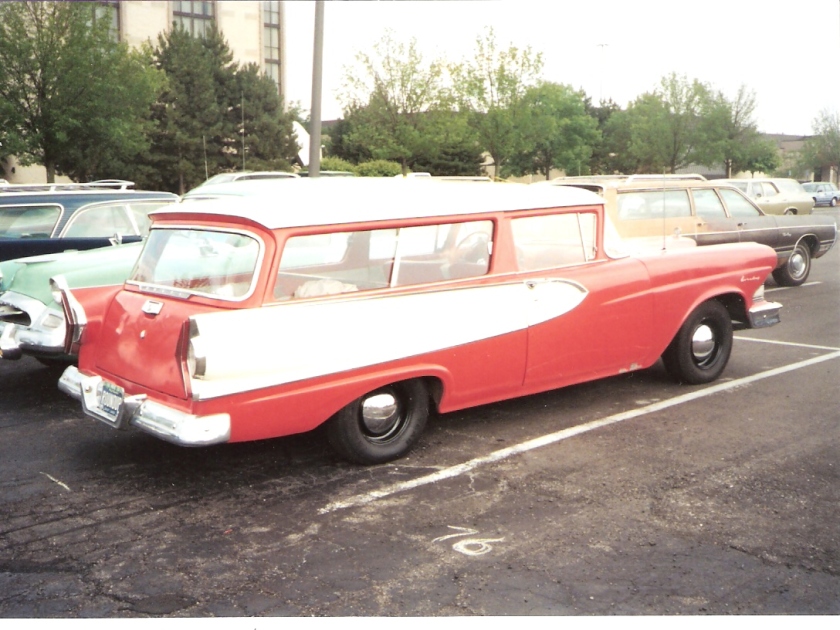 |
|
| Overview | |
| Manufacturer | Ford Motor Company |
| Production | 1958 |
| Assembly | Edison, New Jersey Wayne, Michigan Atlanta, Georgia San Jose, California |
| Body and chassis | |
| Class | Full-size |
| Body style | 2-door station wagon |
| Related | Edsel Pacer Edsel Ranger Edsel Bermuda Edsel Villager Ford Fairlane Ford Custom Ford Country Squire |
| Powertrain | |
| Engine | 361 cu in (5.9 L) FE V8 |
| Transmission | 3-speed manual 3-speed automatic |
| Dimensions | |
| Wheelbase | 116 in (2,946 mm) |
The Edsel Roundup was a station wagon produced by the former Mercury-Edsel-Lincoln (M-E-L) Division of the Ford Motor Company of Dearborn, Michigan, and sold through its Edsel marque in 1958. Like theEdsel Villager and Edsel Bermuda station wagons, the Bermuda was built on a 116-inch (2,946 mm) wheelbase[1] shared with Ford‘s station wagons, as well as core body stampings. It had an approach angle of 21° and an overall length of 205.42 inches.[2]
The Roundup represented the base trim level available within the Edsel brand for a station wagon, and was only available during Edsel’s introductory year of 1958. The Roundup was available only as a six-passenger two-door station wagon.[3] The Roundup came with black rubber flooring,[1] armrests, front and rear ashtrays, dome and courtesy lights and a white vinyl headliner. A split-back front seat was standard to allow access to the back seat. In place of roll-down rear windows, the Roundup used sliding windows.
To further separate the Roundup from the Ford Ranch Wagon on which it was based, the Roundup received Edsel’s front fascia and grille assembly as well as unique boomerang-shaped taillights. The shape of the taillights posed a problem when used as turn indicators – the left hand taillight appeared as an arrow pointing right and vice versa from a distance.
All station wagons shared the Edsel Ranger‘s engine availability, with a 361 cubic inch V8 as standard, as was a three-speed manual transmission. Buyers also had the option of a three-speed automatic transmissionwith a standard column-mounted gear selector, or could choose Edsel’s highly promoted but trouble-prone Teletouch automatic, which placed its drive-selection buttons in the steering wheel hub.
While its roll-out was highly publicized in the fall of 1957, the 1958 Edsel was a marketing disaster for Ford. Total output for the Roundup stood at 963 units. The low output number could be attributed to the declining popularity of two-door wagons in the American market and Edsel’s lack of consumer appeal.
For the 1959 model year, the Roundup and the premium Bermuda station wagons were dropped, leaving the mid-value Villager as Edsel’s sole station wagon model.
1958-edsel-roundup-2-door-station
End of the Edsel
Ford announced the end of the Edsel program on Thursday, November 19, 1959. However, production continued until late in November, with the final tally of 2,846 1960 models. Total Edsel sales were approximately 116,000, less than half the company’s projected break-even point. The company lost $350 million, or the equivalent of $2,800,000,000 in 2015 dollars, on the venture. Only 118,287 Edsels were built, including 7,440 produced in Ontario, Canada. By U.S. auto industry standards, these production figures were dismal, particularly when spread across a run of three model years.
On Friday, November 20, United Press International‘s (UPI) wire service reported that book values for used Edsels had declined by as much as $400 based on condition and age immediately following the Ford press release. In some newspaper markets, dealers scrambled to renegotiate newspaper advertising contracts involving the 1960 Edsel models, while others dropped the name from their dealerships’ advertising entirely. Ford issued a statement that it would distribute coupons to customers who purchased 1960 models (and carryover 1959 models) prior to the announcement, valued at $300 to $400 toward the purchase of new Ford products to offset the decreased values. The company also issued credits to dealers for stock unsold or received following the announcement.
Edsel and its failures
Historians have advanced several theories in an effort to explain the Edsel’s failure. Popular culture often faults the car’s styling. Consumer Reports has alleged that poor workmanship was the Edsel’s chief problem. Marketing experts hold the Edsel up as a supreme example of the corporate culture’s failure to understand American consumers. Business analysts cite the weak internal support for the product inside Ford’s executive offices. According to author and Edsel scholar Jan Deutsch, the Edsel was “the wrong car at the wrong time.”
“The aim was right, but the target moved”
The Edsel is most notorious for being a marketing disaster. Indeed, the name “Edsel” became synonymous with the “real-life” commercial failure of the predicted “perfect” product or product idea. Similar ill-fated products have often been colloquially referred to as “Edsels”. Ford’s own Sierra model, which launched almost 25 years later, is often compared to the Edsel owing to early buyer apathy to its radical styling, even though, unlike the Edsel, it was ultimately a sales success. Since the Edsel program was such a debacle, it gave marketers a vivid illustration of how not to market a product. The principal reason the Edsel’s failure is so infamous is that Ford had absolutely no idea that the failure was going to happen until after the vehicles had been designed and built, the dealerships established and $400 million invested in the product’s development and launch. Incredibly, Ford had presumed to invest $400 million (well over $4.0 billion in the 21st century) in developing a new product line without attempting to determine whether such an investment would be wise or prudent.
The prerelease advertising campaign promoted the car as having “more YOU ideas”, and the teaser advertisements in magazines only revealed glimpses of the car through a highly blurred lens or wrapped in paper or under tarps. In fact, Ford had never “test marketed” the vehicle or its unique styling concepts with potential, “real” buyers prior to either the vehicle’s initial development decision or the vehicle’s shipments to its new dealerships. Edsels were shipped to the dealerships undercover and remained wrapped on the dealer lots.
The public also had difficulty understanding what the Edsel was, primarily because Ford made the mistake of pricing the Edsel within Mercury’s market price segment. Theoretically, the Edsel was conceived to fit into Ford’s marketing plans as the brand slotted in between Ford and Mercury. However, when the car debuted in 1958, its least expensive model—the Ranger—was priced within $73 of the most expensive and best-trimmed Ford sedan and $63 less than Mercury’s base Medalist model. In its mid-range pricing, Edsel’s Pacer and Corsair models were more expensive than their Mercury counterparts. Edsel’s top-of-the-line Citation four-door hardtop model was the only model priced to correctly compete with Mercury’s mid-range Montclair Turnpike Cruiser model, as illustrated in the chart below.
| 1958 Ford Motor Company Pricing (FOB) Structure | |||
| FORD | EDSEL | MERCURY | LINCOLN |
| Continental $4,802–$4,927 | |||
| Capri $4,803–$4,951 | |||
| Premiere $4,334–$4,798 | |||
| Park Lane $4,280–$4,405 | |||
| Citation $3,500–$3,766 | Montclair $3,236–$3,597 | ||
| Corsair $3,311–$3,390 | |||
| Pacer $2,700–$2,993 | Monterey $2,652–$3,081 | ||
| Fairlane 500 $2,410–$3,138 | Ranger $2,484–$2,643 | Medalist $2,547–$2,617 | |
| Fairlane $2,196–$2,407 | |||
| Custom 300 $1,977–$2,119 | |||
Not only was the Edsel competing against its own sister divisions, but model for model, buyers did not understand what the car was supposed to be—a step above the Mercury, or a step below it.
After its introduction to the public, the Edsel did not live up to its preproduction publicity, even though it did offer many new features, such as self-adjusting rear brakes and automatic lubrication. While Ford’s market research had indicated that these and other features would make the “E” car attractive to them as car buyers, the Edsel’s selling prices exceeded what buyers were willing to pay. Upon seeing the price for a base model, many potential buyers simply left the dealerships. Other customers were frightened by the price for a fully equipped top-of-the-line model.
The wrong car at the wrong time
One of the external forces working against the Edsel was the onset of an economic recession in late 1957.
Compounding Edsel’s problems was the fact that the car had to compete with well-established nameplates from the Big Three, such as Pontiac, Oldsmobile, Buick, Dodge and DeSoto, as well as with its own internal sister division Mercury, which itself had never been a stellar sales success. To make matters still worse, as a new make, Edsel had no established brand loyalty with buyers, as its competing makes had.
Even if the 1957–1958 recession had not occurred, the Edsel would have been entering a shrinking marketplace. In the early 1950s, when the “E” car was in its earliest stages of development, Ford Executive Vice President Ernest R. Breech had successfully convinced Ford management that the medium-priced market segment offered great untapped opportunity. At the time, Breech’s assessment was basically correct; in 1955, Pontiac, Buick and Dodge had sold a combined two million units. But by the fall of 1957, when the Edsel was introduced, the market had changed drastically. Independent manufacturers in the medium-priced field were drifting toward insolvency. Hoping to reverse its losses, Packard acquired Studebaker, which was also in financial difficulty. The board decided to stop production under the venerable Packard badge after 1958. The 1957–58 Packards were little more than Studebakers badged as Packards. Attempting to capitalize on the emerging consumer interest in economy cars, American Motors shifted its focus to its compact Rambler models and discontinued its pre-merger brands, Nash and Hudson, after the 1957 model year. Chrysler saw sales of its DeSoto marque drop dramatically from its 1957 high by over 50% in 1958. When DeSoto sales failed to rebound during the 1959 model year, plans were made in Highland Park to discontinue the nameplate by 1961.
Indeed, sales for most car manufacturers, even those not introducing new models, were down. Among domestic makes, only Rambler and Lincoln produced more cars in 1958 than in 1957. Consumers started buying more fuel-efficient automobiles, particularly Volkswagen Beetles, which were selling at rates exceeding 50,000 a year in the U.S. from 1957 onward. Edsels were equipped with powerful engines and offered brisk acceleration, but they also required premium fuel, and their fuel economy, especially in city driving, was poor even by late-1950s standards.
Ford Motor Company had conducted the right marketing study, but it came up with the wrong product to fill the gap between Ford and Mercury. By 1958, consumers had become fascinated with economy cars, and a large car like the Edsel was seen as too expensive to buy and own. When Ford introduced the Falcon in 1960, it sold over 400,000 units in its first year. In a little-noted irony, Ford’s investment in expanded plant capacity and additional tooling for the Edsel helped make the company’s subsequent success with the Falcon possible.
By 1965, the market for medium-priced cars had recovered, and this time, Ford had the right car: The Galaxie 500 LTD. The LTD’s success led Chevrolet to introduce the Caprice as a mid-1965 upscale trim option on its top-of-the-line Impala four-door hardtop.
Edsel, a difficult name to place
The name of the car, Edsel, is also often cited as a further reason for its lack of popularity. Naming the vehicle after Edsel Ford was proposed early in its development. However, the Ford family strongly opposed its use. Henry Ford II declared that he did not want his father’s good name spinning around on thousands of hubcaps. Ford also ran internal studies to decide on a name, and even dispatched employees to stand outside movie theaters to poll audiences as to what their feelings were on several ideas. They reached no conclusions.
Ford retained the advertising firm Foote, Cone & Belding to come up with a name. When the agency issued its report, citing over 6,000 possibilities, Ford’s Ernest Breech commented that they had been hired to develop a name, not 6,000. Early favorites for the name brand included Citation, Corsair, Pacer, and Ranger, which were ultimately chosen for the vehicle’s series names.
David Wallace, manager of marketing research, and coworker Bob Young unofficially invited freethinker poet Marianne Moore for input and suggestions. Moore’s unorthodox contributions (among them “Utopian Turtletop”, “Pastelogram”, “Turcotinga” and “Mongoose Civique”) were meant to stir creative thought and were not officially authorized or contractual in nature.
At the behest of Ernest Breech, who was chairing a board meeting in the absence of Henry Ford II, the car was finally called “Edsel” in honor of Edsel Ford, former company president and son of Henry Ford.
Reliability
Even though the Edsel shared its basic technology with other Ford products, a number of issues caused reliability problems, mostly with the 1958 models. Reports of mechanical flaws with the cars surfaced, due primarily to lack of quality control and confusion of parts with other Ford models. Ford never dedicated a stand-alone factory solely to Edsel model production. The first-year (1958) Edsels were assembled in both Mercury and Ford factories. The longer-wheelbase models, Citation and Corsair, were produced alongside the Mercury products, while the shorter-wheelbase models, Pacer and Ranger, were produced alongside the Ford products. Workers assembling Fords and Mercurys often found the task of assembling the occasional Edsel that moved down the line burdensome, since it required them to change tools and parts bins, then switch back to resume assembling Fords or Mercurys after completing assembly on the Edsel. The workers were also expected to accommodate Edsel assembly with no adjustment in their hourly quota of Ford and Mercury production. Consequently, the desired quality control of the different Edsel models proved difficult to achieve, even when the Fords and Mercurys were satisfactorily assembled on the same lines. Many Edsels actually left the assembly lines unfinished. Uninstalled parts were placed in the trunks along with installation instructions for dealership mechanics, some of whom never installed the additional parts at all. Some dealers did not even receive all the parts.
In the March 1958 issue of Popular Mechanics, 16% of Edsel owners reported poor workmanship, with complaints ranging from faulty welding to power steering failure. In its test car, Popular Mechanics tested for these problems and noted others, such as the trunk leaking badly in a storm and the odometer showing fewer than actual miles traveled.
Design controversies
The Edsel’s most memorable design feature was its trademark “horsecollar” or toilet seat grille, which was quite distinct from other cars of the period. According to a popular joke at the time, the Edsel “resembled an Oldsmobile sucking a lemon”. Some have speculated that the car failed to sell because its grille resembled a vulva. A crude jest that referenced the genital resemblance of the Edsel front grille was ‘If you put some hair around it, you’d have an Ethel’.
The Edsel’s front-end ensemble as it eventually appeared bore little resemblance, if any, to the original concept. Roy Brown, the original chief designer on the Edsel project, had envisioned a slender, almost delicate opening in the center. Engineers, fearing engine cooling problems, vetoed the intended design, which led to the now-infamous “horsecollar.”
The vertical grille theme, while improved for the 1959 models, was discontinued for the 1960 models, which were similar to Ford models of the same year, although coincidentally, the new front-end design was very similar to that of the 1959 Pontiac.
The Teletouch pushbutton automatic transmission selector was an extremely complex feature. It proved problematic in part because the steering wheel hub, where the pushbuttons were located, was the traditional location of the horn button. Some drivers inadvertently shifted gears when they intended to sound the horn. While the Edsel was fast, the location of the transmission pushbuttons was not conducive to street racing. There were also jokes among stoplight drag racers about the buttons: D for Drag, L for Leap, and R for Race (instead of Drive, Low and Reverse). The control wires for Teletouch were also routed too close to the exhaust manifold, which often caused unpredictable movement of the selector mechanism and, in some cases, complete failure. The electrical design required drivers to shift from Park to Reverse to Neutral to Drive, in that order, to avoid overloading the Teletouch motor. The motor was also not powerful enough to bring the car out of Park while on a hill, so dealerships would instruct drivers to set the parking brake before pushing the Park button.
Complaints also surfaced about the taillights on 1958-model Edsel station wagons. The lenses were boomerang-shaped and placed in a reverse fashion. At a distance, they appeared as arrows pointed in the opposite direction of the turn being made. When the left turn signal flashed, its arrow shape pointed right, and vice versa. However, there was little that could be done to give the Ford-based station wagons a unique appearance from the rear, because corporate management had insisted that no sheetmetal could be changed. Only the taillights and trim could be touched. There was room for separate turn signals in addition to the boomerangs, but the U.S. industry had never supplied them up to that point, and they were probably never seriously considered.
Mechanics of the time were wary of the 410-cubic-inch Edsel “E-475” engine because its perfectly flat cylinder heads lacked distinct combustion chambers. The heads were set at an angle, with “roof” pistons forming both a squish zone on one side and a combustion chamber on the other. Combustion thus took place entirely within the cylinder bore. This design was similar to Chevrolet’s 348-cubic-inch “W” engine, which was also introduced in 1958. While the design reduced the cost of manufacture and may also have helped minimize carbon buildup, it was also unfamiliar to many mechanics.
Company politics and the role of Robert McNamara
An intriguing aspect of the Edsel story is that it provides a case study in how company politics can kill an idea. While the car and Ford’s planning of the car are the most often cited reasons for its failure, internal Ford Motor Company memoranda indicate that the Edsel may actually have been a victim of dissension within Ford’s management ranks.
Following World War II, Henry Ford II retained Robert McNamara as one of the “Whiz Kids” to help turn Ford around. McNamara’s cost-cutting and cost-containment skills helped Ford emerge from its near-collapse after the war. As a result, McNamara eventually amassed a considerable amount of power at Ford. McNamara was very much a throwback to Henry Ford in that, like the elder Ford, McNamara was committed to Ford to the almost total exclusion of the company’s other products. Thus, McNamara had little use for the Continental, Lincoln, Mercury and Edsel brand cars made by the company.
McNamara opposed the formation of the separate divisions for Continental, Lincoln, Mercury, and Edsel cars, and moved to consolidate Lincoln, Mercury, and Edsel into the M-E-L division. McNamara saw to it that the Continental program was canceled and that the model was merged into the Lincoln range for 1958. He next set his sights on Edsel by maneuvering for elimination of the dual wheelbases and separate bodies used in 1958. Instead, the Edsel would share the Ford platform and use Ford’s inner body structure for 1959. In 1960, the Edsel emerged as little more than a Ford with different trim. McNamara also moved to reduce Edsel’s advertising budget for 1959, and for 1960, he virtually eliminated it. The final blow came in the fall of 1959, when McNamara convinced Henry Ford II and the rest of Ford’s management that the Edsel was doomed and that it was time to end production before the Edsel bled the company dry. McNamara also attempted to discontinue the Lincoln nameplate, but that effort ended with Elwood Engel‘s now classic redesign of 1961. McNamara left Ford when he was named Secretary of Defense by President John F. Kennedy.
During the 1964 presidential election, Republican nominee Barry Goldwater blamed McNamara, then Secretary of Defense, for the Edsel’s failure. Eventually, Ford’s former executive vice president Ernest R. Breech, who was a financial contributor to Goldwater, wrote the Senator’s campaign, explaining that “Mr. McNamara… had nothing to do with the plans for the Edsel car or any part of the program.” However, the charge continued to be leveled against McNamara for years. During his time as head of the World Bank, McNamara instructed his public affairs officer to distribute copies of Breech’s letter to the press whenever the accusation was made.
The Edsel Comet
The plans for 1961 was starting with the new Edsel, the Comet, but Ford dicided to close Edsel and brought the new car as the:
Mercury Comet
| Mercury Comet | |
|---|---|
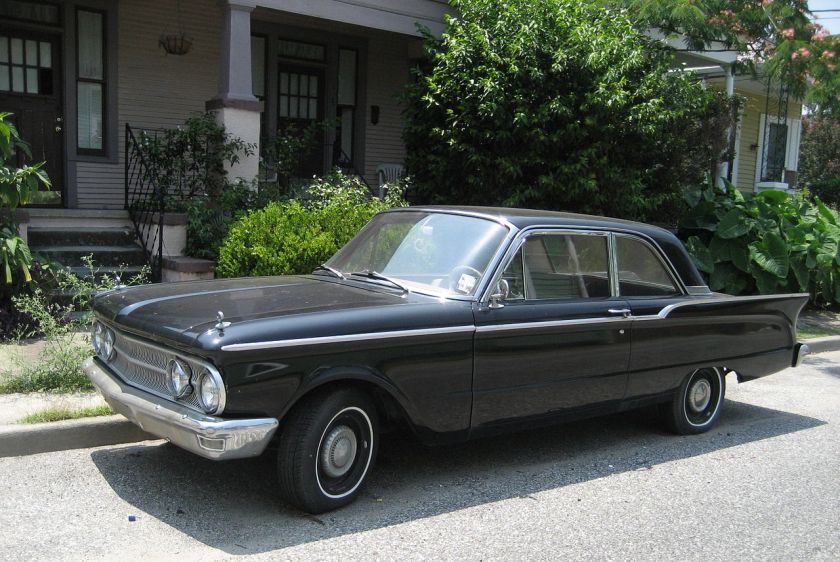 |
|
| Overview | |
| Manufacturer | Ford Motor Company |
| Production | 1960–1977 |
| Assembly | Oakville, Ontario, Canada Claycomo, Missouri, United States Lorain, Ohio, United States Milpitas, California, United States Wayne, Michigan, United States |
| Body and chassis | |
| Class | muscle (1960–1965, 1971–1977) Mid-size (1966–1969) |
| Layout | FR layout |
| Related | Ford Falcon, Ford Maverick |
| Chronology | |
| Successor | Mercury Zephyr Mercury Monarch |
The Mercury Comet was an automobile produced by the Mercury division of the Ford Motor Company from 1960–1969 and 1971-1977 — variously as either a compact or an intermediate car.
The Comet was based on the compact Ford Falcon and later the Ford Maverick. As a Mercury, early Comets received better grade interior trim than concurrent Falcons, and a slightly longer wheelbase.
Relationship to the Edsel
The Comet was originally planned as an Edsel model. It was reassigned to Mercury dealerships after the demise of the Edsel marque, where it was marketed as a standalone product for 1960 and 1961 as the Comet.
Developed concurrently with the Ford Falcon, early pre-production photographs of the sedan show a car remarkably close to the Comet that emerged, but with a split grille following the pattern established by Edsel models. Early Ford styling mules for the station wagon model carried the Edsel name as well.
At their debut, the split grille was replaced by one more in keeping with Mercury’s design themes. However, the canted elliptical taillights, first seen on the Edsel prototype, were used and carried the “E” (Edsel) part number on them. While the short lived 1960 Edsels used elliptical shaped taillights, the lenses used on both cars differed in length and width. Certain other parts from the 1959 Edsel parts bin, including the parking lights and dashboard knobs, were used on the first-year Comet. Keys for the 1960 and 1961 Comets were shaped like Edsel keys, with the center bar of the “E” removed to form a “C”.
1960–1965
Overview
From 1960-1965, the Comet was based on the Ford Falcon platform (stretched 5 in (130 mm) for sedans, but not for wagons). The 1960-1963 Comets share a similar basic shape. These are sometimes referred to as the “round body” Comets. For 1962 and 1963, the Comet shared a considerable number of body and mechanical parts with the short-lived Mercury Meteor intermediate.
1960–1963
| First generation | |
|---|---|
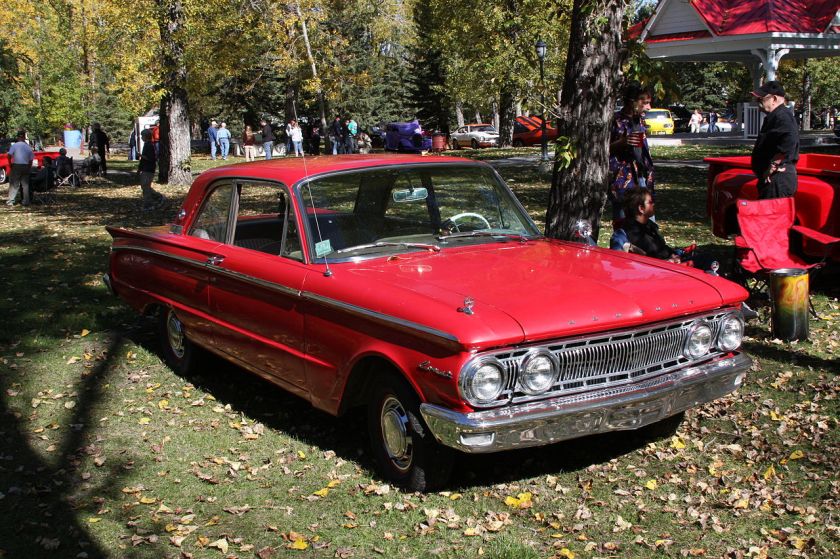 |
|
| Overview | |
| Production | 1960–1963 |
| Body and chassis | |
| Body style | 2-door coupe 4-door sedan 4-door station wagon 2-door station wagon |
| Related | Mercury Meteor |
| Powertrain | |
| Engine | 144 cu in (2.4 L) I6 170 cu in (2.8 L) I6 260 cu in (4.3 L) V8 |
| Transmission | 3-speed manual 2-speed automatic 4-speed manual |
| Dimensions | |
| Wheelbase | 114 in (2,896 mm) |
| Length | 194.5 in (4,940 mm) |
Due to the demise of Edsel, the Comet was initially released without any divisional badging, only “Comet” badges. It was sold through Mercury dealers, but would not be branded as such for two more years.
Introduced in March 1960, initial body styles were 2-door coupes, 4-door sedans and 2- and 4-door station wagons. Two trim levels were available, standard and “Custom”, with the custom package including badging, additional chrome trim and all-vinyl interiors. In 1960, the only engine available was the 144 cid Thriftpower straight six with a single-barrel Holley carburetor which produced 90 hp (67 kW) at 4200 rpm. (Some sources list it as producing 85 hp (63 kW) at 4200 rpm.) Transmission options were a column-shifted 3-speed manual and a 2-speed Merc-O-Matic automatic transmission (unique to the Comet, despite sharing a name with the Merc-O-Matic installed in other Mercurys).
Ford had purchased the name “Comet” from Comet Coach Company, a professional car manufacturer in which the term belonged to a line of funeral coaches, mainly Oldsmobiles. The coach company then was renamed Cotner-Bevington.
In Canada, for the 1960 model year, Mercury-Meteor dealers sold a compact car called the “Frontenac”. The Frontenac was considered a model in its own right and was badge-engineered version of the Ford Falcon with only minor trim differences to distinguish it from the Falcon. The Frontenac was produced for only one year. The Comet was introduced to the Canadian market for the 1961 model year and replaced the Frontenac as the compact offering by Mercury-Meteor dealers.
In response to complaints about the low performance of the 144 cid engine, a 170 cid straight-6 with a single-barrel Holley carburetor producing 101 hp (75 kW) at 4400 rpm was released for the 1961 model year. A new 4-speed manual transmission was also an option (a Dagenham without 1st gear synchromesh).
The optional S-22 package was released. Available only on the 2-door sedan, it was billed as a “sport” package, although it shared the same mechanicals as regular Comets, with the only changes being S-22 badging, bucket seats and a center console.
Comet was officially made a Mercury model for the 1962 model year, and it received some minor restyling, mainly a redesign of the trunk and taillight area to bring the car more in line with the Mercury look. This is the first year the car carried Mercury badging.
The S-22 had six bullet shaped tail lights, while regular Comets had four oval with 2 flat reverse lights. A Comet Villager station wagon, basically a Comet Custom 4-door station wagon with simulated woodgrain side panels, was added to the lineup. (The Villager name had previously been used to denote the 4-door steel-sided station wagon in the Edsel Ranger series.)
While the 1963 model looked almost identical to the earlier models, the chassis and suspension were redesigned to accommodate an optional 260 cid V8 engine using a 2-barrel carburetor and producing 164 hp (122 kW). Convertible and hardtop (pillarless) coupe models were added to the Comet Custom and Comet S-22 lines this year.
1964–1965
| Second generation | |
|---|---|
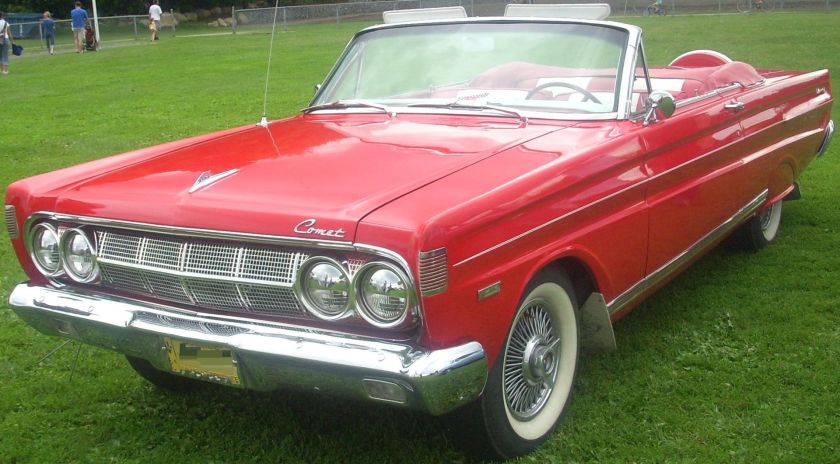 |
|
| Overview | |
| Production | 1964–1965 |
| Body and chassis | |
| Body style | 2-door coupe 2-door convertible 4-door sedan 4-door station wagon |
| Powertrain | |
| Engine | 170 cu in (2.8 L) I6 200 cu in (3.3 L) I6 260 cu in (4.3 L) V8 289 cu in (4.7 L) V8 427 cu in (7.0 L)V8 |
| Transmission | 3-speed automatic 4-speed manual |
The 1964 Comet was redesigned with a much more square shape, though it was still built on the same unibody as the 1963 model. The front grille used styling similar to that of the Lincoln Continental. Along with the redesign, the model designations were changed. The performance version was known as the Cyclone, replacing the previous S-22. Then in descending order of trim levels were the Caliente, 404 and 202, replacing the previous Custom and base models. The 2-door station wagon bodystyle was discontinued. The top-of-the-line station wagon continued to be known as the Villager. The base 144 cid six engine was dropped and the 170 cid six became the new base engine. The 260 V8 was available at the beginning of the production run, with the new 289 being available mid-year.
For 1964, Ford produced about 50 ultra-high performance lightweight Comet Cyclones, equipped with their racing two-carburetor 427 engine, similar to their cousin, the Ford Thunderbolt. To avoid competing with each other, the Thunderbolts ran in Super Stock on 7-inch (180 mm) tires, but the Cyclones were modified to run in A/FX on 10-inch (250 mm) tires, where they were as dominant as the Thunderbolts were in Super Stock. Drivers included Ronnie Sox, Don Nicholson and Wild Bill Shrewsberry in conjunction with Jack Chrisman. Shrewsberry still owns his original 427 Comet in Caliente trim.
For 1965, the Comet received updated styling front and rear (including stacked headlights). The base 6-cylinder engine was increased from 170 cid to 200 cid. Still using a single-barrel carburetor, it produced 120 hp (89 kW) at 4400 rpm. The base 8-cylinder engine was increased from 260 to 289 cid and, using a 2-barrel carburetor, it produced 200 hp (150 kW) at 4400 rpm. The standard transmission continued as a column-shifted 3-speed manual transmission. The optional automatic was changed to a “Merc-O-Matic” 3-speed automatic transmission (essentially a Ford C4 transmission). The 289 V8 was available in three horsepower ratings, base 2-barrel 200 hp, 4-barrel 225 hp (168 kW) and the premier driveline option was the 289 cubic inch, 271 hp (202 kW) high-performance engine and four-speed manual transmission found on the Ford Mustang.
1966–1969
1966–1967
| Third generation | |
|---|---|
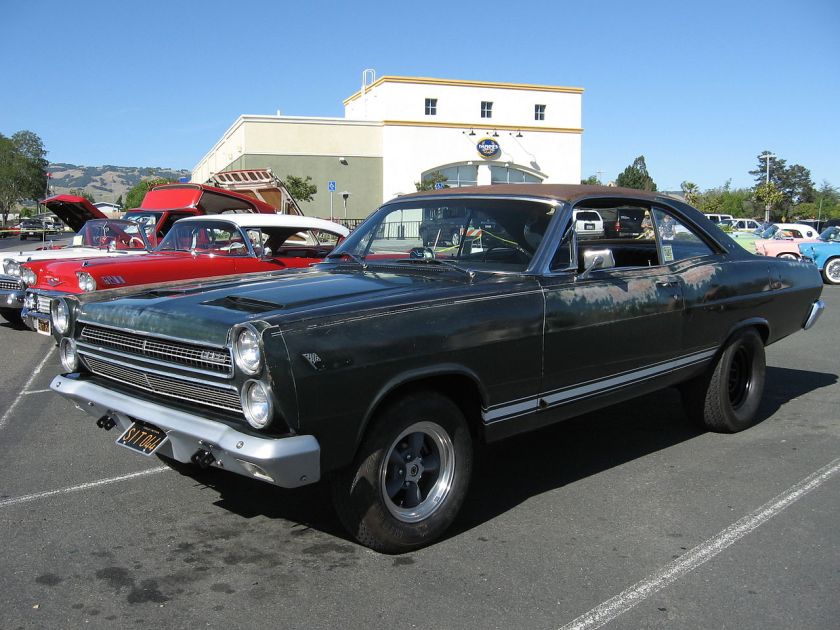 |
|
| Overview | |
| Production | 1966–1967 |
| Body and chassis | |
| Body style | 2-door coupe 4-door sedan 4-door station wagon 2-door station wagon |
| Powertrain | |
| Engine | 390 cu in (6.4 L) V8 |
Beginning in 1966, the Comet grew from a compact to become a mid-sized car. It was now based on the same chassis as the Ford Fairlane intermediate (and the previous Mercury Meteor intermediate which was only offered in 1962-1963). These intermediate-sized cars used the same basic chassis as the original Ford Falcon and Mercury Comet compacts, but were stretched with longer wheelbases. The previous generation Comet shared its platform with the all-new Ford Mustang in 1964, and when the Comet graduated to the intermediate platform, the Mercury Cougar became the platform shared with the Mustang.
The Comet wagon would introduce a Dual-Action tailgate, able to both fold down or swing aside, an idea soon copied by all the major U.S. manufacturers.
The 1966 Comet received distinct outer body panels. The Comet Capri would replace the previous Comet 404 and the Comet Voyager 4-door station wagon would replace the previous Comet 404 station wagon. (The Voyager name had previously been used to designate a full-sized Mercury station wagon that was positioned between the baseCommuter and the top-of-the-line Colony Park station wagon models.) The Comet 202 4-door station wagon would be discontinued. The new top-of-the-line series was the Comet Cyclone GT.
New engines available in the Comet for 1966 included a 390 cid V8 engine with a 2-barrel carburetor producing 265 hp (198 kW) at 4400 rpm, a 390 cid V8 engine with a 4-barrel carburetor producing 275 hp (205 kW), and 390 cid V8 engine that produced 335 hp (250 kW). The 335 hp 390 cid V8 engine was standard on the Cyclone GT and optional on other models. The Cyclone GT when equipped with an automatic transmission was referred to as the Cyclone GTA.
A Cyclone GT convertible was the pace car for the 1966 Indianapolis 500.
Beginning with the 1967 model year, the Comet name was used only on the base Comet 202 model, available only in 2 or 4-door sedan body styles. Other models were now referred to by what had previously been their subseries names. Mercury’s mid-size line-up ranged from the basic Comet 202, through the Capri, Caliente, Cyclone, and Cyclone GT models, as well as steel-sidedVoyager and simulated wood paneled Villager station wagon models, which were comparable to the Capri.
1968–1969
| Fourth generation | |
|---|---|
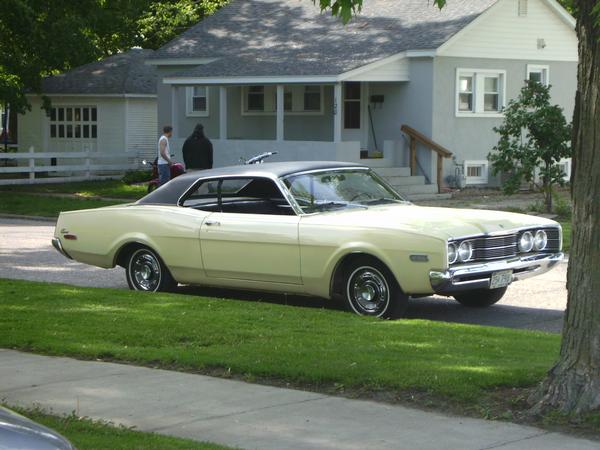 |
|
| Overview | |
| Production | 1968–1969 |
| Body and chassis | |
| Body style | 2-door coupe 4-door sedan 4-door station wagon |
| Powertrain | |
| Engine | 250 cu in (4.1 L) I6 289 cu in (4.7 L) V8 302 cu in (4.9 L) V8 351 cu in (5.8 L) V8 428 cu in (7.0 L) V8 |
In 1968, Mercury’s mid-sized models again received new sheet metal and handsome styling that resembled the full-sized Mercury models and shared their chassis and many parts with Ford’s mid-sized Fairlane and Torino models. The mid-sized base model was the Comet (Mercury dropped the 202 suffix) available only as a 2-door coupe. The Capri was replaced by the Montego, and the Caliente by the Montego MX. There was also a more luxurious Montego MX Brougham, basically an option package for the Montego MX. Top-of-the-line mid-sized models continued to use the Cyclone and Cyclone GT names.
A 302 cid V8 engine using a 2-barrel carburetor and generating 210 hp (160 kW) at 4600 rpm would replace the previous 289 cid V8 midway in the 1968 model year. For the 1969 model year, the grille was modified and the headlight surrounds were removed. The taillights were also slightly re-styled. There would be few changes to Mercury’s mid-sized lineup for the 1969 model year, the last year that the Comet name would grace a mid-sized model. A Comet 4-door sedan for 1969 was supposedly planned, but never offered. New top-of-the-line Cyclone Spoiler and Cyclone CJ models would join the lineup.
A 250 cid inline-6 using a single-barrel carburetor and generating 155 hp (116 kW) at 4000 rpm would replace the previous 200 cid 6 as standard. New engine options included a 302 cid V-8 engine using a 4-barrel carburetor and generating 220 hp (160 kW) at 4400 rpm (standard on the Cyclone), a 351 cid V-8 using a 4-barrel carburetor generating 290 hp (220 kW) at 5200 rpm (standard on the Cyclone Spoiler), and a 428 cid V-8 using a 4-barrel carburetor generating 335 hp (250 kW) at 5200 rpm (standard on the Cyclone CJ). These new V-8s replaced the previous 390 cid V-8s.
Still using the same basic chassis, 1970 models would receive dramatic new styling, but the base model would now be the Montego. Comet was no longer the base level intermediate. The Cyclone name would continue to be used through the 1971 model year.
1971–1977
| Fifth generation | |
|---|---|
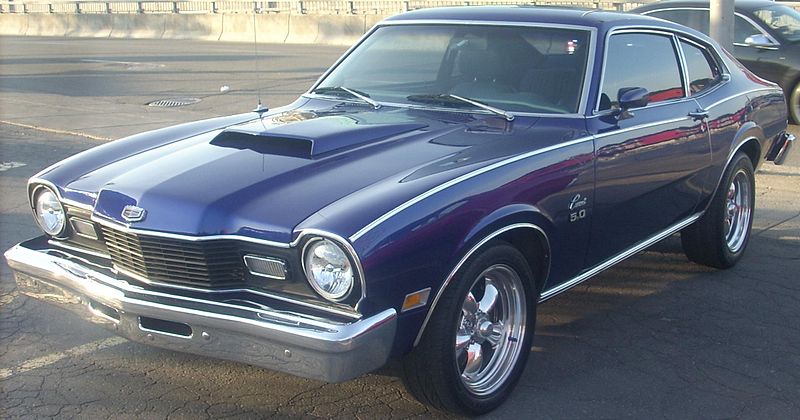 |
|
| Overview | |
| Production | 1971–1977 |
| Body and chassis | |
| Body style | 2-door sedan 4-door sedan |
| Powertrain | |
| Engine | 170 cu in (2.8 L) I6 200 cu in (3.3 L) I6 302 cu in (4.9 L) V8 |
| Transmission | 3-speed automatic 3-speed manual |
For 1971, the Comet name was revived on Mercury’s version of the Ford Maverick compact. Sharing most of its sheet-metal with the Maverick, it used a different grille, taillights, and hood, as well as different badging. The taillight pods were shared with the 1970 and 1971 Montego and Cyclone models. Underneath it all was the same basic chassis that had originally been used for the Ford Falcon, the original Comet, and for the mid-sized Ford Fairlane, Mercury Meteor, and later Mercury Comets.
The base engine was the 170 cid inline-6 with a single-barrel carburetor producing 100 hp (75 kW) at 4200 rpm. Optional engines were the 200 cid inline-6 with a single-barrel carburetor producing 115 hp (86 kW) and a 302 cid V8 with a 2-barrel carburetor producing 210 hp (160 kW). Transmissions were either a 3-speed manual or 3-speed automatic with either column or floor-mounted shifters.
The Comet was available as 2- and 4-door sedans and in base (1971–1977), and “muscle car” Comet GT series (2-door sedan-only 1971-1975). The GT featured a blacked-out grille, dual body-side tape stripes, high-back bucket seats, wheel trim rings, dual racing mirrors, bright window frames, black instrument panel, deluxe door trim panels, and a simulated hood scoop.
In 1972 models, the base 170 cid six was rated at 82 hp (61 kW) at 4400 rpm, the 200 cid six at 91 hp (68 kW), and the 302 cid V8 at 138 hp (103 kW). A new engine option for 1972 was the 250 cid six with a single-barrel carburetor rated at 98 hp (73 kW).
For 1973 models, the base 170 cid six was dropped and the 200 cid six became the base engine. Horsepower ratings would fluctuate slightly up or down through the years the Comet would remain in production, but not by very much. A new, larger front bumper to meet federal standards was added to all models in 1973. A new Custom decor package featuring vinyl roof, body-colored wheel covers, wide vinyl-insert body-side moldings, vinyl bucket seats, luxury carpeting, and extra sound insulation was a popular option.
Changes for 1974 included even larger front bumpers and new larger rear bumpers to match. They added 2.5 in (64 mm) to the length of the 2-door model and 4 in (100 mm) to the length of the 4-door model.
Ford had originally planned to the replace the Comet and its Ford Maverick counterpart for the 1975 model year with updated and extensively redesigned models that would continue to use the Comet and Maverick names. Fairly late, though, they decided that the updated versions would be built alongside the original Maverick and the Comet that had originally been introduced for 1971. These would-be replacements, also using the same basic chassis as the Comet and Maverick, became the Mercury Monarch and the American Ford Granada, came with more standard and optional equipment than the Comet and Maverick, and were considered to be “luxury compacts,” a step up from the Comet and Maverick.
Although 1975 was the last year for the Mercury Comet GT, the GT features remained available in 1976 and 1977 with the “Sports Accent” option group.
The model was offered with comparatively few changes through the 1977 model year, and was then discontinued to make room for the new Mercury Zephyr for the 1978 model year.
Recent news
In July 2010, USA Today reported on a 91-year-old Florida woman, Rachel Veitch, who still drives her 1964 Comet Caliente daily. The car was purchased new in 1964, and Veitch had recently set a record by accumulating over 562,000 documented miles. Veitch said all her car needed was “TLC” (tender loving care) for it to last that long. She claimed she drove it once at 120 mph “just for a mile,” and had to have cruise control installed because she kept getting speeding tickets. On March 9, 2012, Rachel Veitch, then 93, applied the brakes on her beloved car for good, after she realized her eyesight was too weak to continue driving. The Caliente had 576,000 that day.
Mercury Cyclone
The Cyclone was a performance model of the Comet. It was built from 1964-1971.
History of the 1968-1970 Mercury CycloneThe Cyclone received Mercury’s biggest facelift in 1968, switching from 1967’s boxy, Fairlane-derived coupe body to the super-streamlined Torino-based fastback. Unfortunately, the Cyclone GT lost the 335-hp, 390-cdi V-8 as its standard engine, instead replaced by the 210-hp, 302-cid V-8. No matter, though, as the fastback was handsome and could be equipped with a 230-hp 302, 265- or 325-hp 390-cid V-8s, (briefly) a 390-hp version of the 427-cid V-8, or a 335-hp, 428-cid V-8.By 1969, the Mercury Cyclone formal hardtop had been canceled and the GT fastback was also available as a CJ model. That came with the 335-hp, 428-cid V-8 standard, a four-speed transmission, and a plain bench seat interior. At $3,207, the CJ was aimed at the Plymouth Road Runner, and a 435-hp version could run 0-60 in 6.1 seconds with a quarter-mile time of 13.9 seconds.The Mercury Cyclone Spoiler and the Ford Torino Talladega launched the NASCAR streamliner battle when Cale Yarborough won the Daytona 500 in 1968 in a Woods Brothers Cyclone. Dodge produced the Daytona 500 and Ford retaliated with the Torino Talladega and Mercury Spoiler. Both were to have streamlined noses, but the Mercury launch was delayed until the mid-year Cyclone Spoiler II. Only 519 were sold, all with 351-cid V-8s instead of the bigger 428. A Dan Gurney special edition had a dark blue roof, striping, and a signature decal on the white lowers, while the Cale Yarborough edition was red and white like his Woods Brothers car, with a signature.Three Cyclone models were produced for 1970, all of which shared the Torino’s semi-fastback body, and all of which carried a four-part nose. The base car had a 360-hp, 429-cid V-8 and a four-speed transmission. Options included a 370-hp, 429-cid V-8 engine and a 375-hp, Super CJ 429-cid engine. There were also a few Boss 429s installed, though those cars are quite rare today. Meanwhile, the Cyclone GT was detuned to a 250-hp, 351-cid V-8 and the Spoiler packed a Ram-Air 370-hp, 429.The 1971 model year was the Cyclone’s last, as the muscle car wars wound down. With few changes from 1970, the Cyclone was absorbed into the Mercury Montego line, and only 444 Montego Cyclones were sold, along with 2,287 Cyclone GTs and 353 Cyclone Spoilers. Engine options ranged from the 210-hp, 302-cid V-8, all the way to the fire-breathing 370-hp, 429-cid Cobra-Jet V-8, to which a Ram-Air package could be added.Mercury Cyclones occupy an interesting niche in the muscle car world, along with Oldsmobile W-30s and Buick GSX Stage Is. The car is a fantastic expression of American muscle, albeit one from a mid-level, luxury-oriented nameplate. As a result, the Cyclone is mostly overshadowed by the Ford Mustang and Torino. The Cyclone’s sleeper status makes it a great value, and most cars remain within reach of any buyer. As with any muscle car of the era, the importance of documentation in terms of market price rises exponentially as the car’s horsepower ratings climb.
The scheduled 1960 Edsel Comet compact car was hastily rebranded as the Comet and assigned to Lincoln-Mercury dealerships as a stand-alone product. Based on the new-for-1960 Ford Falcon, the Comet was an instant success, selling more cars in its first year than all models of Edsel produced during that marque’s entire three-year run. Styling touches seen in the Comets sold to the public that allude to being part of the Edsel family of models included the instrument cluster, rear tailfins (though canted diagonally), and the taillight shape (the lens is visually similar to that used on the 1960 Edsel, and even retained the embossed “E” part code). The Comet’s keys were even shaped like Edsel keys, with the center bar removed from the “E” to form a “C.”
For 1962, Ford officially assigned the Comet to the Mercury brand. The Mercury name does not appear anywhere on the 1960 and 1961 models.
Today
More than half a century after its spectacular failure, the Edsel has become a highly collectible item among vintage car hobbyists. Fewer than 10,000 Edsels survive and they are considered valuable collectors’ items. A mint-condition Edsel convertible from any of its three model years may sell for over $100,000.
While the design was considered “weird” or “too different” fifty years ago, many other car manufacturers (such as Pontiac, Jaguar, BMW, Subaru, Lancia, Alfa Romeo, and Saab) have employed similar vertical grilles successfully in their car designs. Many of the Edsel’s features, such as self-adjusting brakes, gear selection by steering wheel buttons, etc., which were considered “too impractical” in the late 1950s, are now standard features of sports cars.
Plastic scale models of all three Edsel years were produced by AMT, in its familiar 1/25 scale. Both promotional and kit versions were sold. These command premium prices today, especially the rare 1959 and 1960 models. The 1958 Pacer hardtop was re-issued as a totally new and much more detailed kit by AMT in the 1990s. The 1960 hardtop is also available as a resin kit from several resin model producers, but is typically priced close to the cost of an original kit. Yat Ming, a producer of diecast model cars, offered a nicely detailed 1958 Citation in 1/18 scale in both hardtop and convertible body styles. Yat Ming also produced a detailed 1/43 scale diecast of the Citation convertible in several color combinations. The Franklin Mint produced highly detailed 1/24 scale and 1/43 scale diecast models of the 1958 Citation convertible. The Danbury Mint produced a 1/24 scale diecast replica of the 1958 Bermuda station wagon, complete with accurately detailed wood trim.
NASCAR
Despite the Edsel’s lack of sales success, several of the cars were nevertheless raced in NASCAR‘s Grand National series in the late 1950s.
From now only Pictures
The last made Edsel
THAT’s IT
######
